Click on pictures to enlarge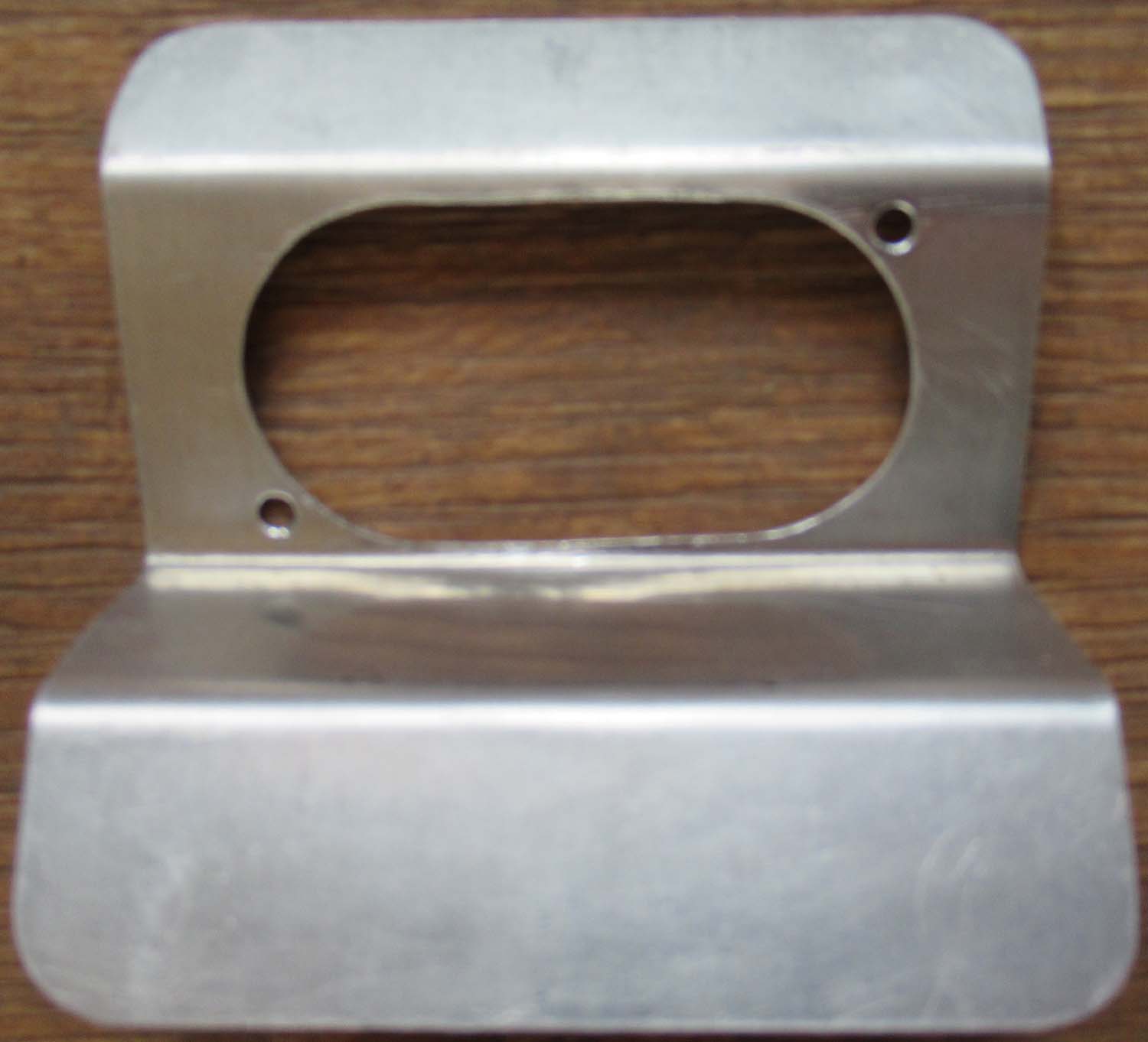
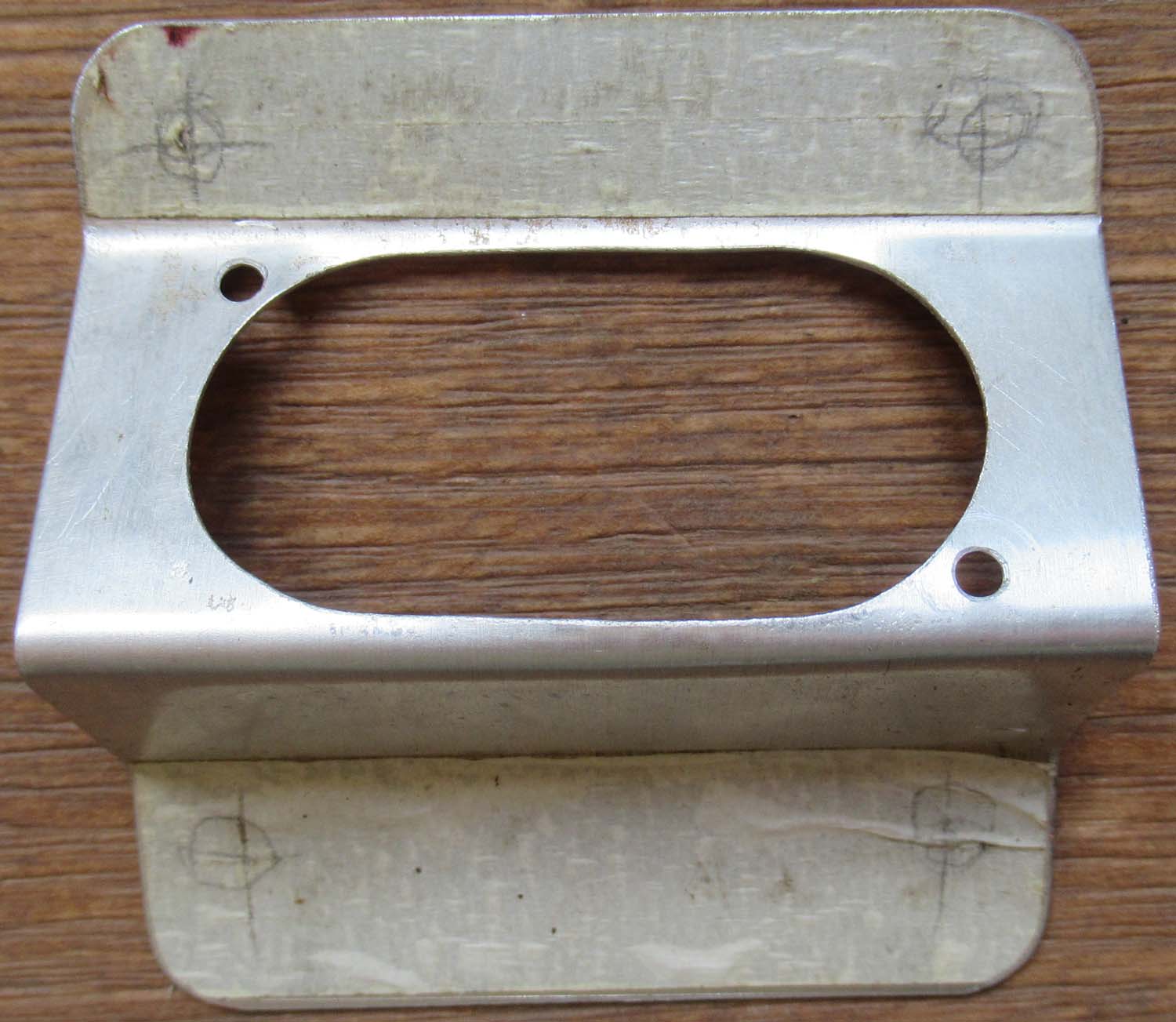 |
Spitfire Fuel Gauge Bracket MKXIV (No 40 pg1 Fuel)
This is a reproduction piece.
This fits the later Griffon Powered Spitfires fuel gauges as
fitted the the MK XIV onwards.
Click on pictures to enlarge

£125


|
|
Click on pictures to enlarge
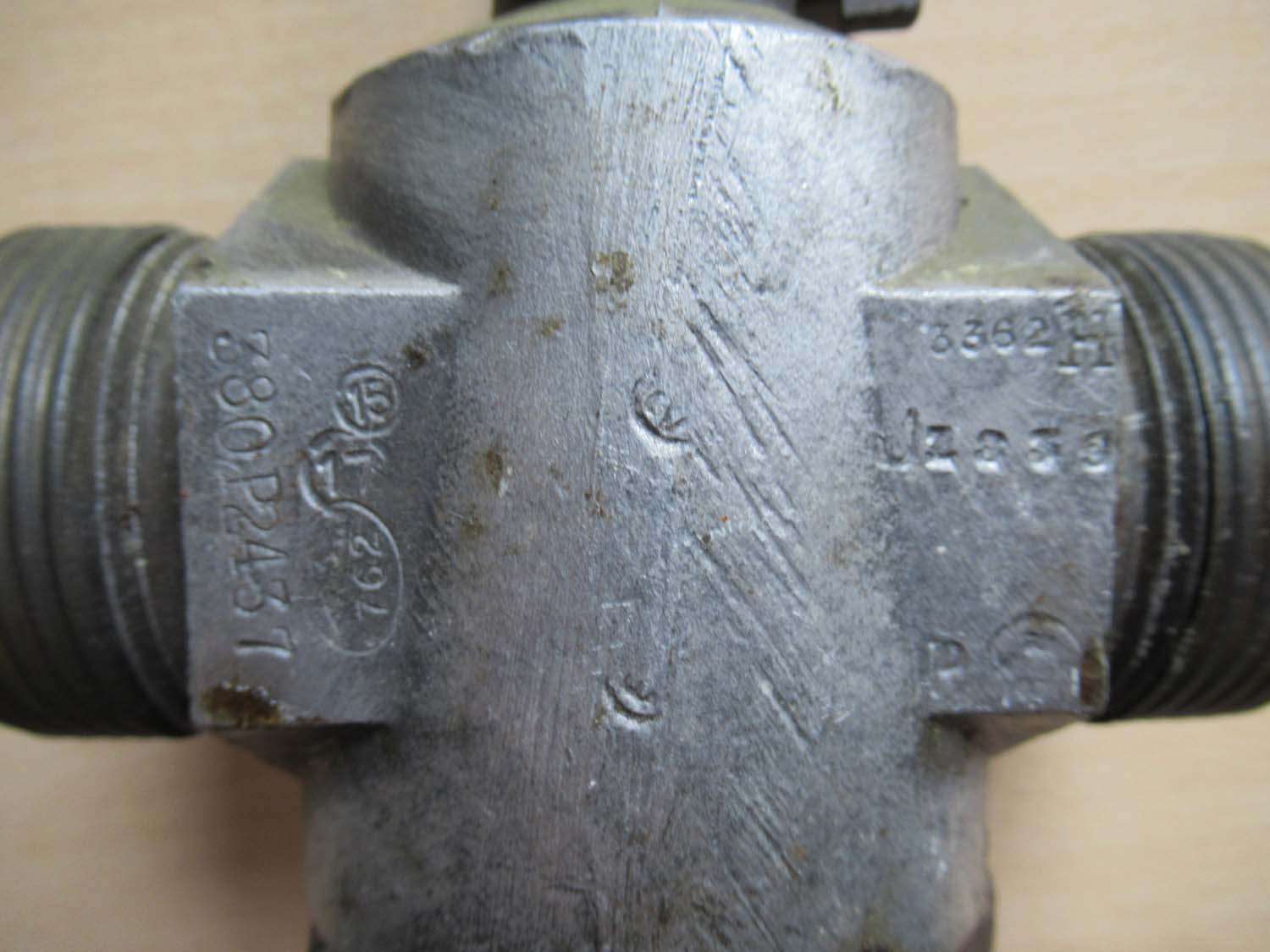
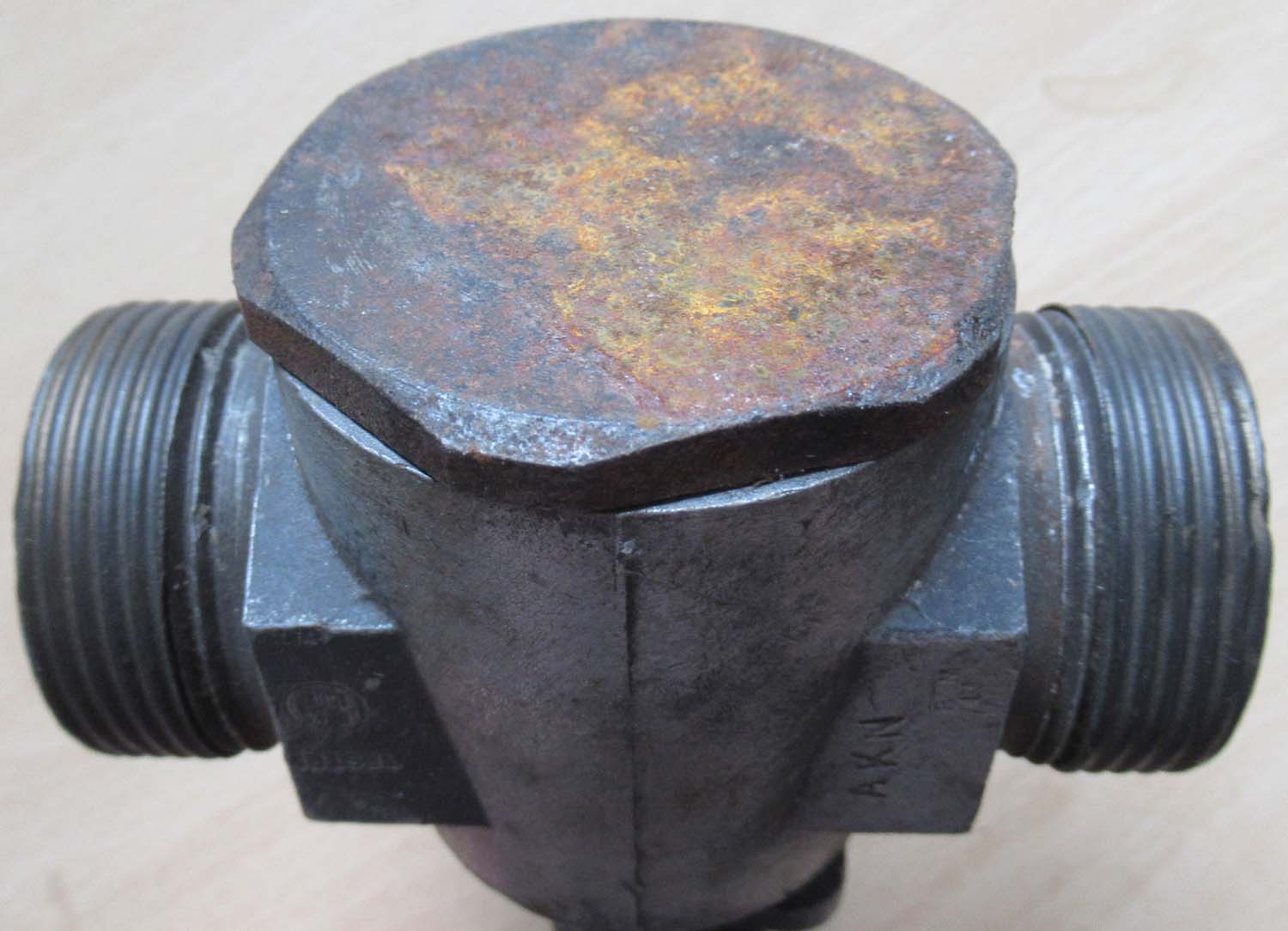
£395


|
Heavy Duty Fuel Cock (No
47 pg1 Fuel)
This is a heavy duty fuel
cock with on and off settings and in good condition.
Made
by B.M Ltd. Internal diameter approximately 37mm.
380P2437
3362H
Click on pictures to enlarge

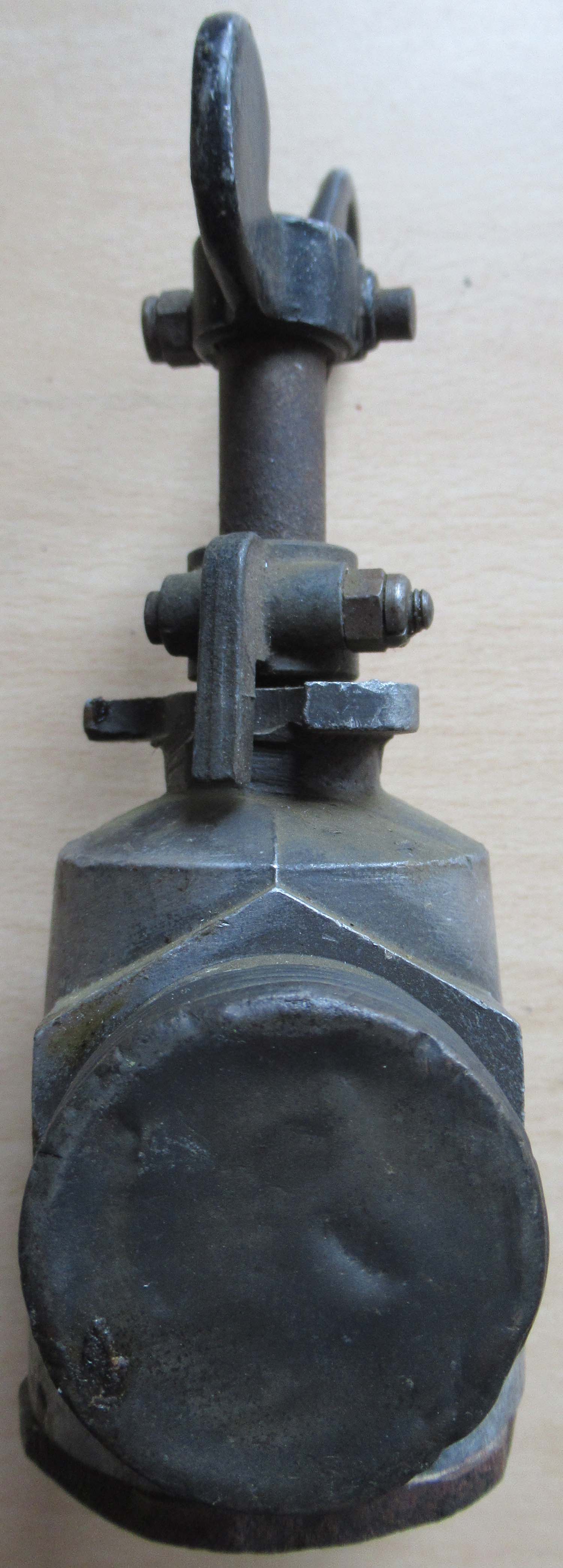

|
|
Click on pictures to enlarge
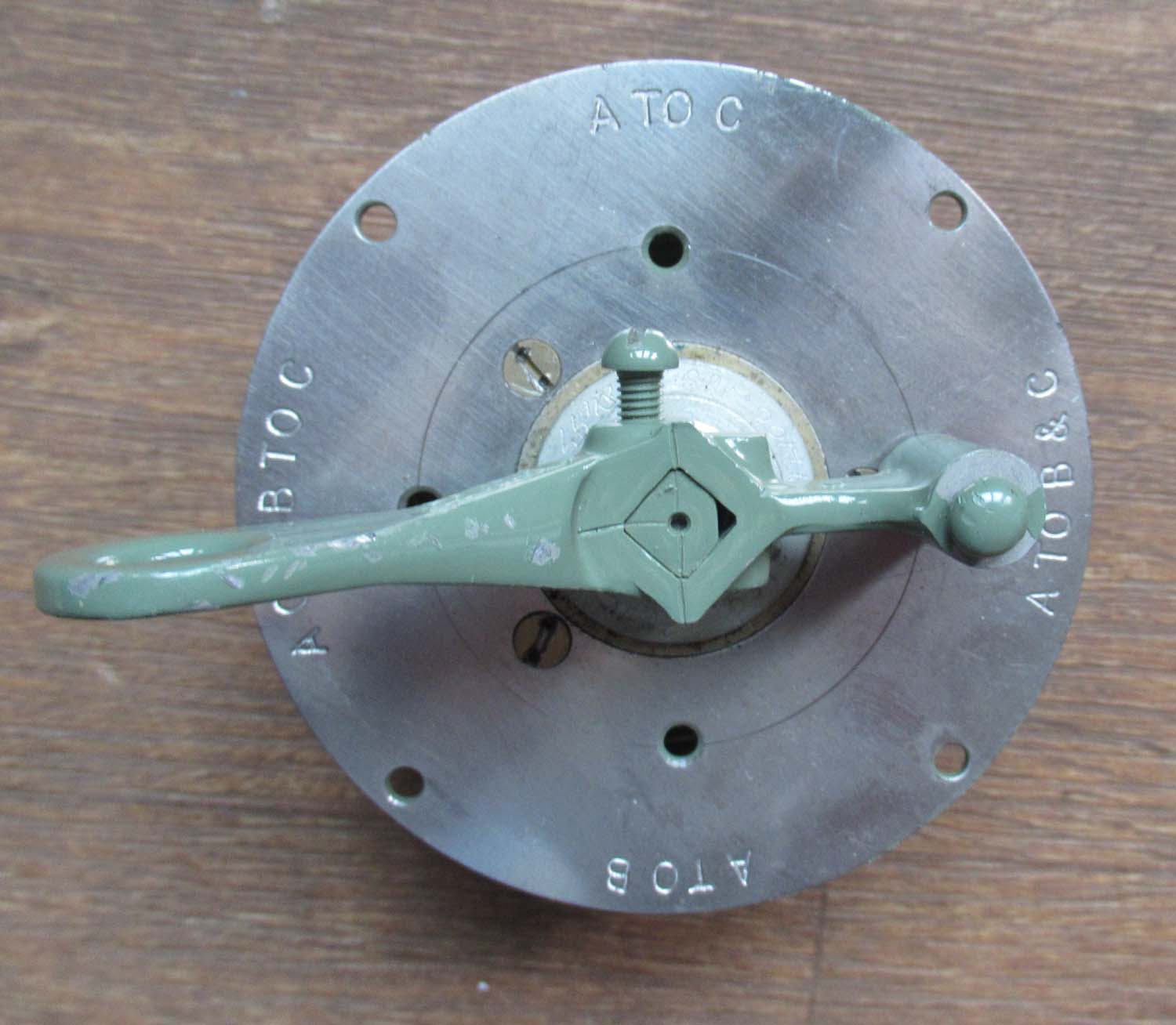


|
Vickers three way fuel cock (No 54 pg1 Fuel)
Fitted to Spitfires, Vickers
three way fuel cock in serviceable condition turns and works
as it should, still has its protective end caps on the pipe
connections. Seen in situ below in a Spitfire cockpit.
Click on pictures to enlarge.
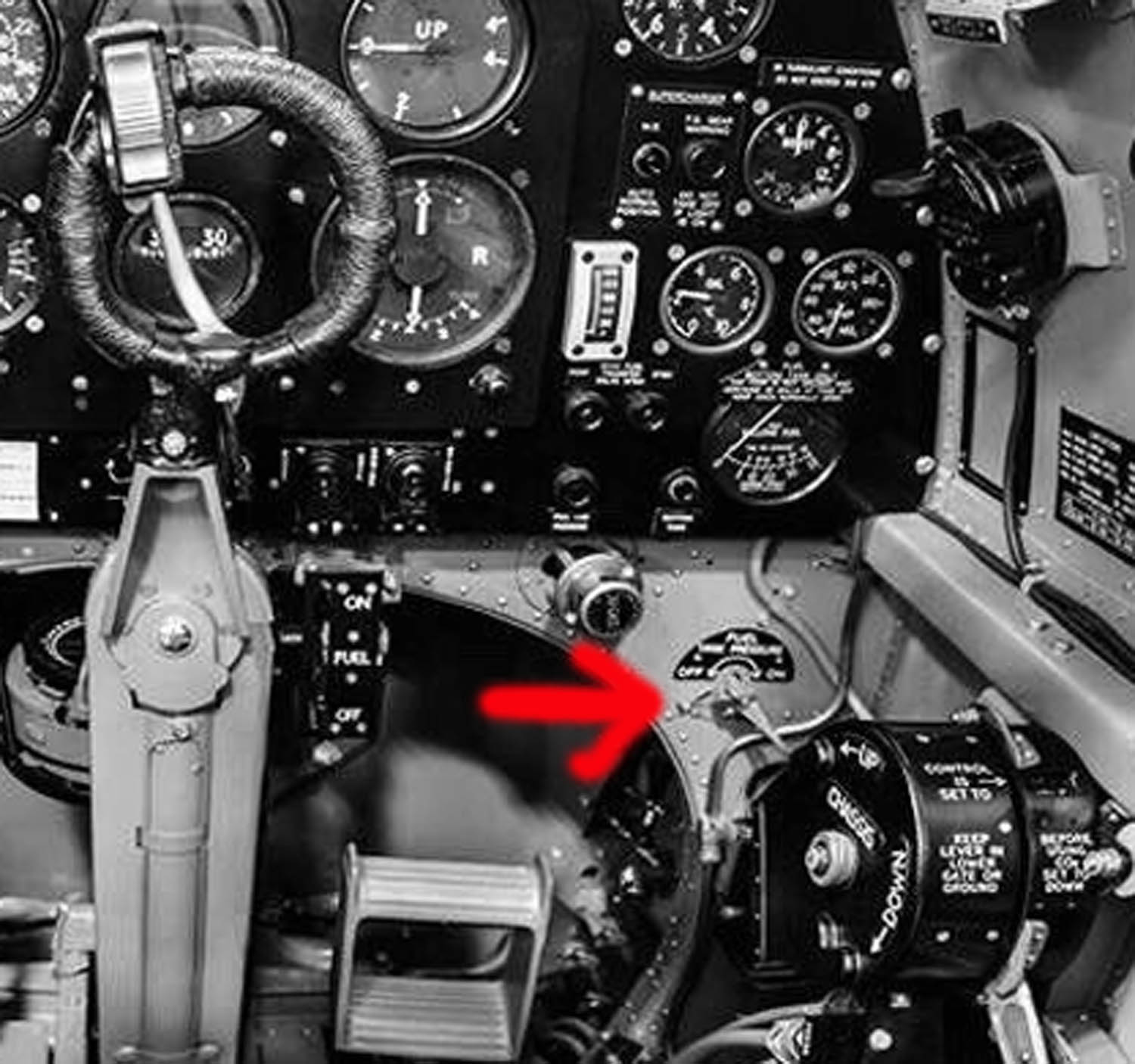



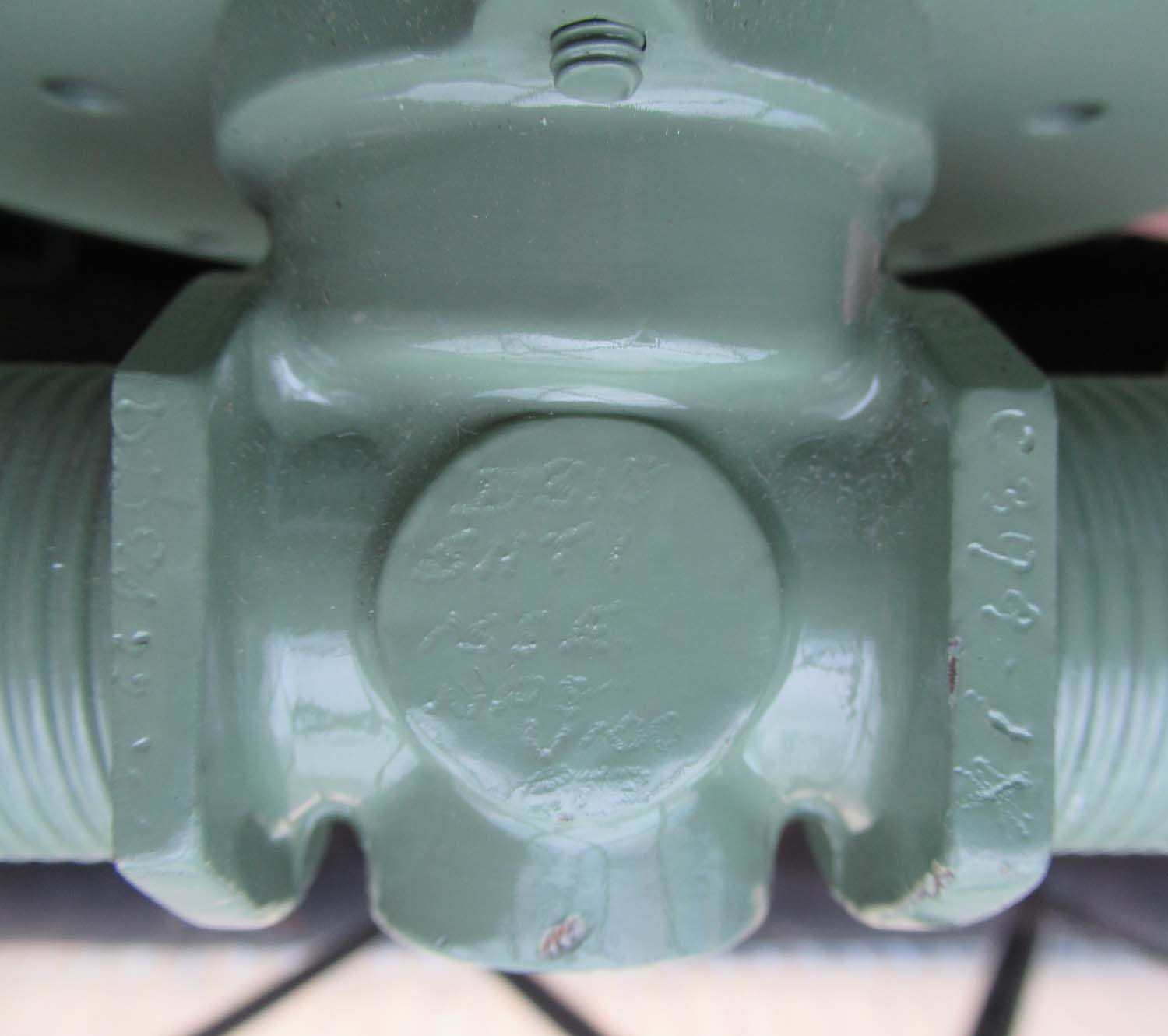
Seen above right
fitted in a Spitfire Cockpit
£375


|
|
Click on pictures to enlarge
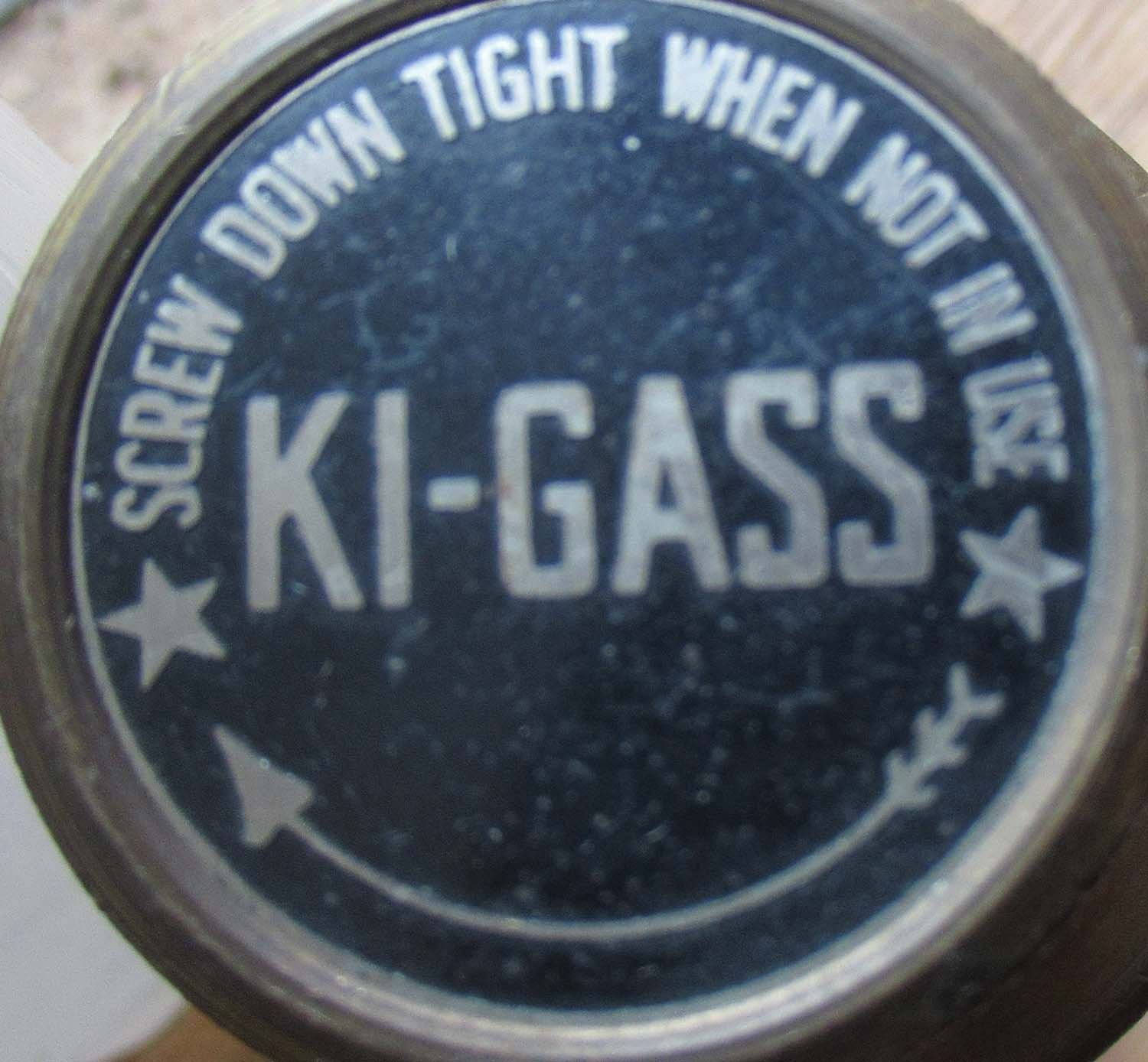
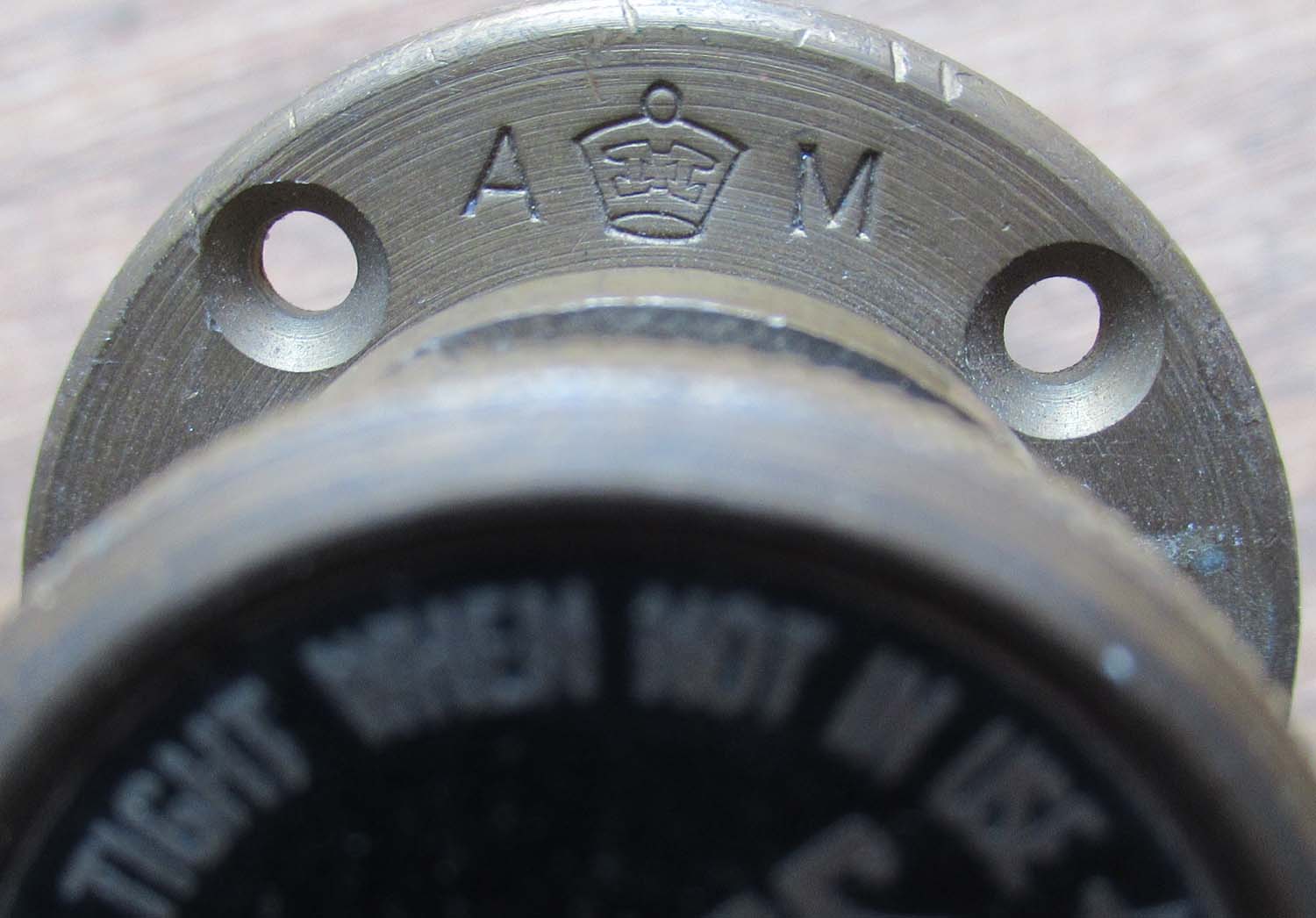
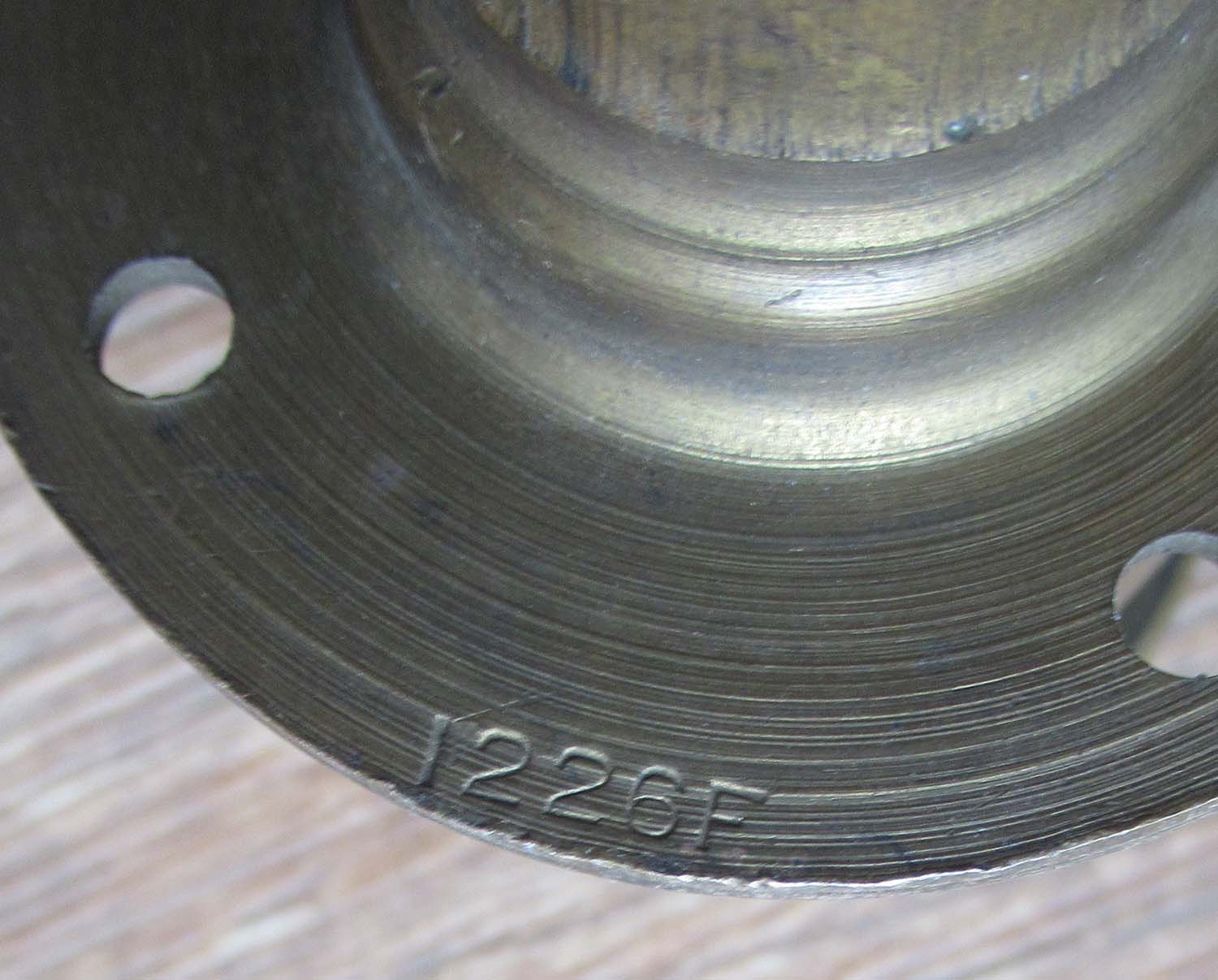
|
KI Gass Fuel Priming Pump (No 53 pg1 Fuel)
Fitted to Spitfires, Hurricanes
and other RAF wartime aircraft it pumps neat fuel
directly into the Merlin engine for cold starting. Used in
every Merlin Powered Spitfire
It is
complete and undamaged. In great original condition and the seals still feel
tight. Air Ministry marked. .
1226 F
Click on pictures to enlarge


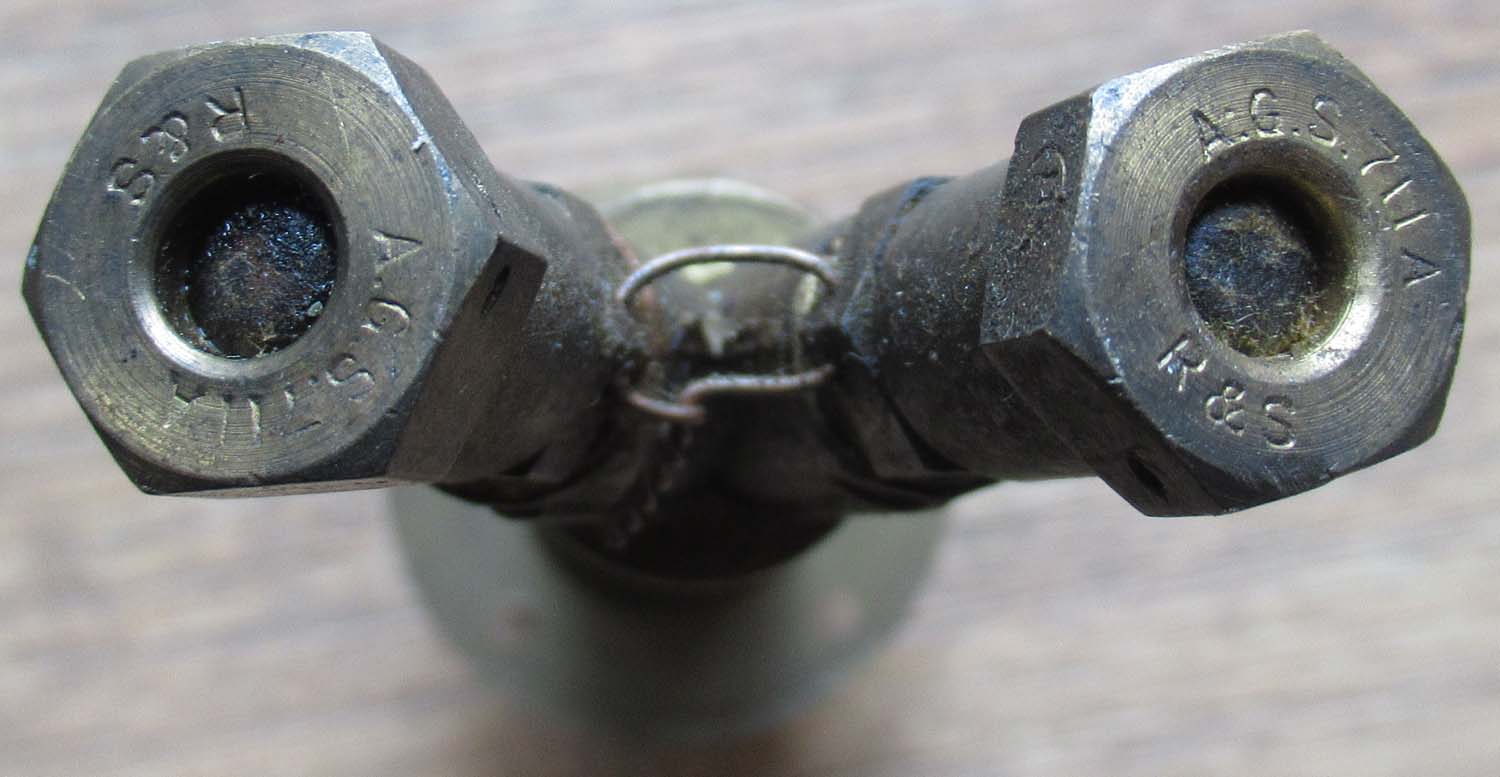

Seen above right
fitted in a Spitfire Cockpit
Out of
stock more wanted please
contact me |
|
Click on pictures to enlarge
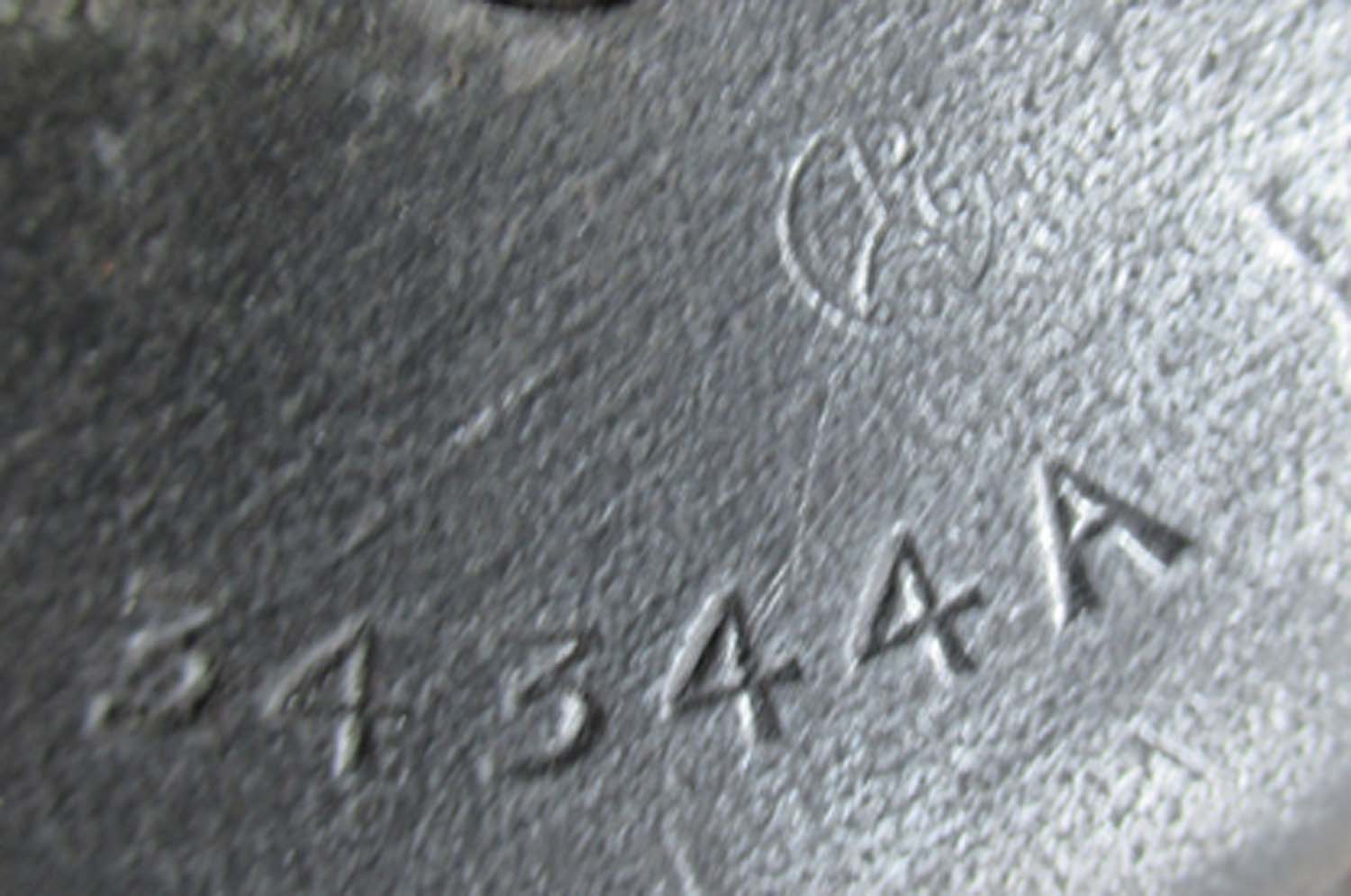
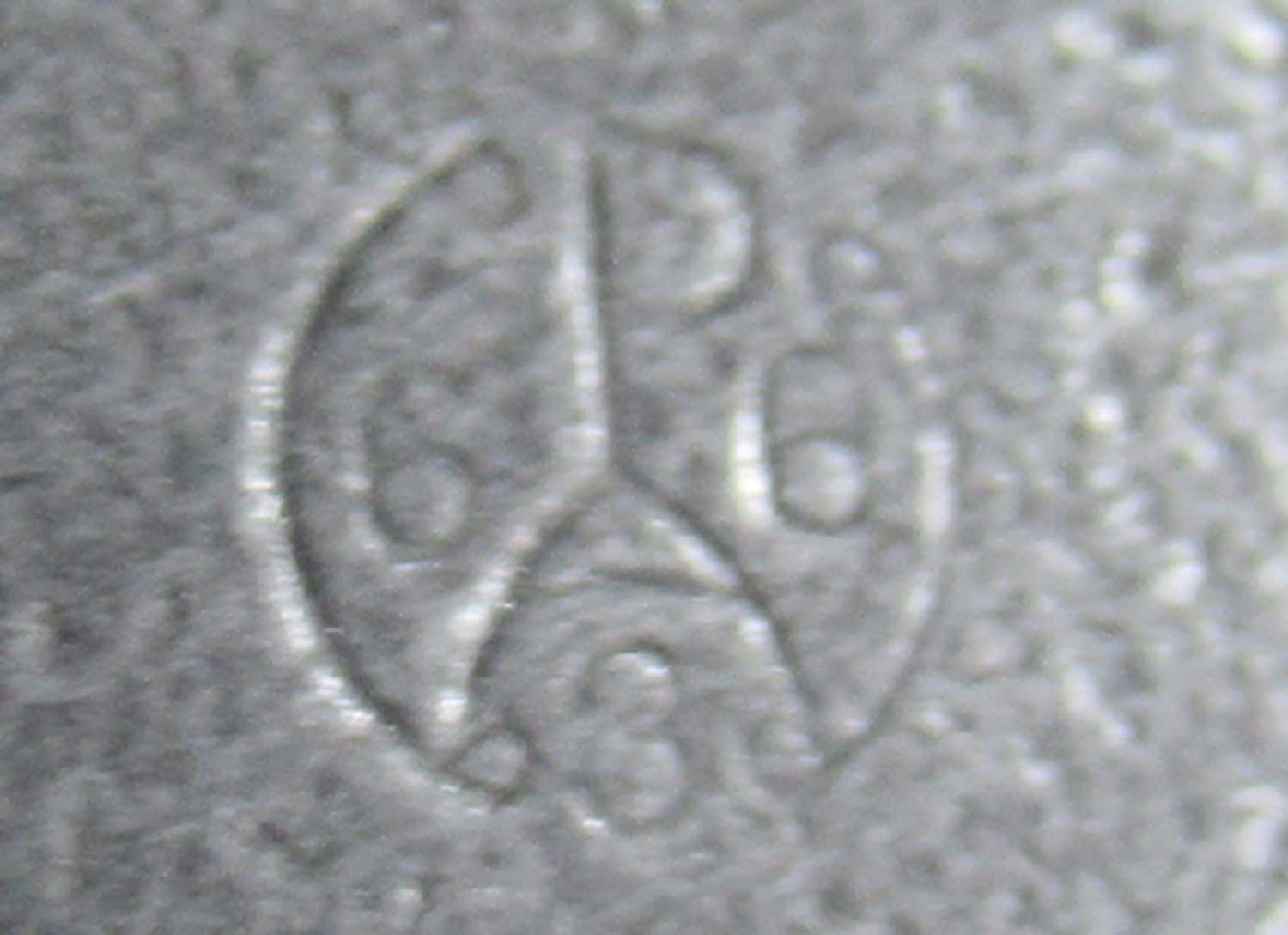
£75


|
Corsair JS590 backfire pressure release valve (No 52 pg1 Fuel)
Here is backfire pressure
relief valve from a Corsair.
The Corsair was fitted with the
mighty Pratt and Whitney R 2800 Double wasp engine.
The part
came from the recovery of a Brewster built Corsair II JS590
, 759 Squadron Yeovilton, the aircraft spun at about 4500
feet during a dogfight exercise and dived into a field at
Charlton Mackeral in Somerset on the 13th January 1945.
The
aircraft remains were recovered in September 1997 under
licence from the MOD.
Amazingly I have a picture taken at the time it was
recovered from the crash site to see more pictures and
details of the recovery
click on this link.
Click on pictures to enlarge
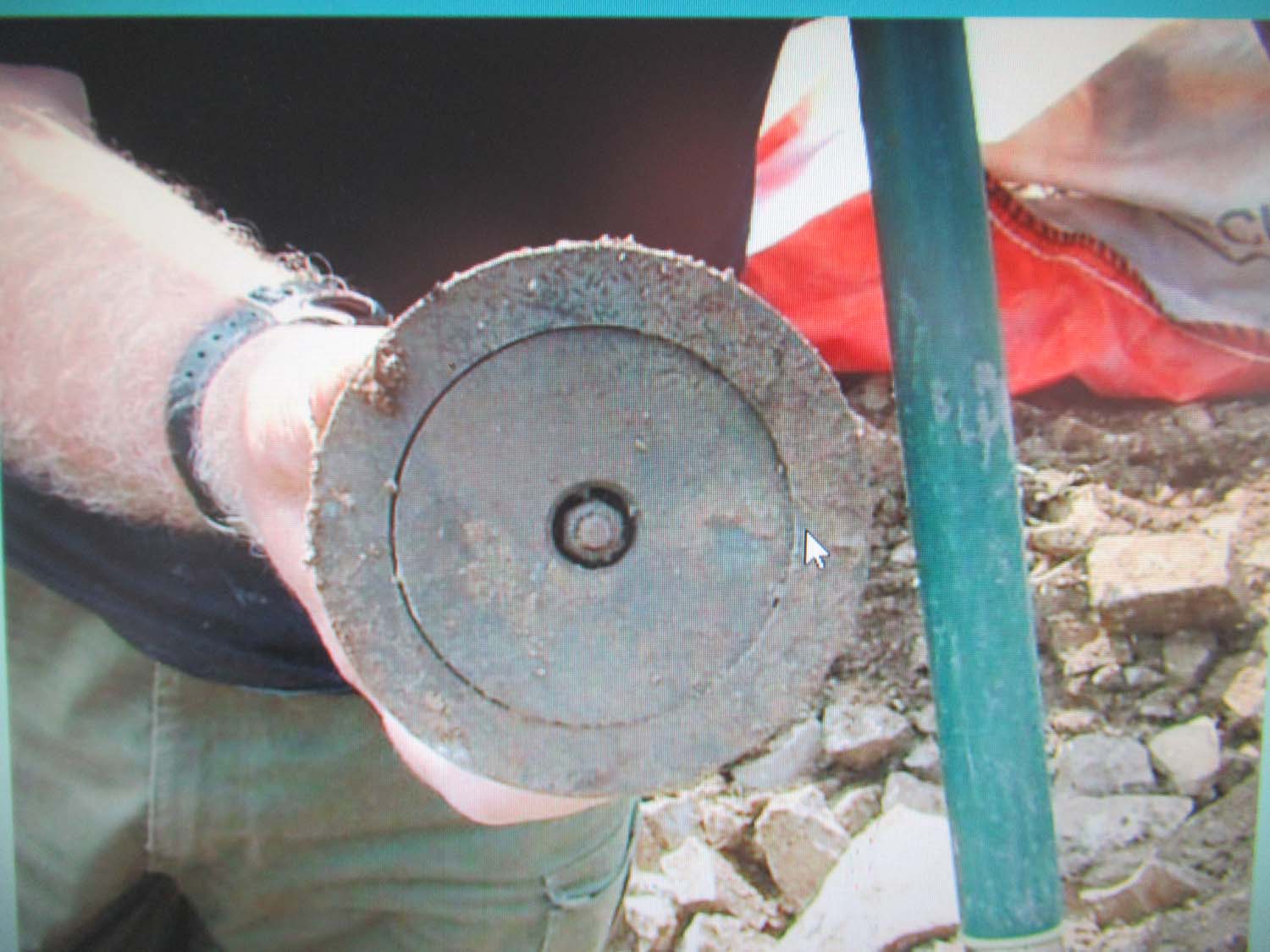
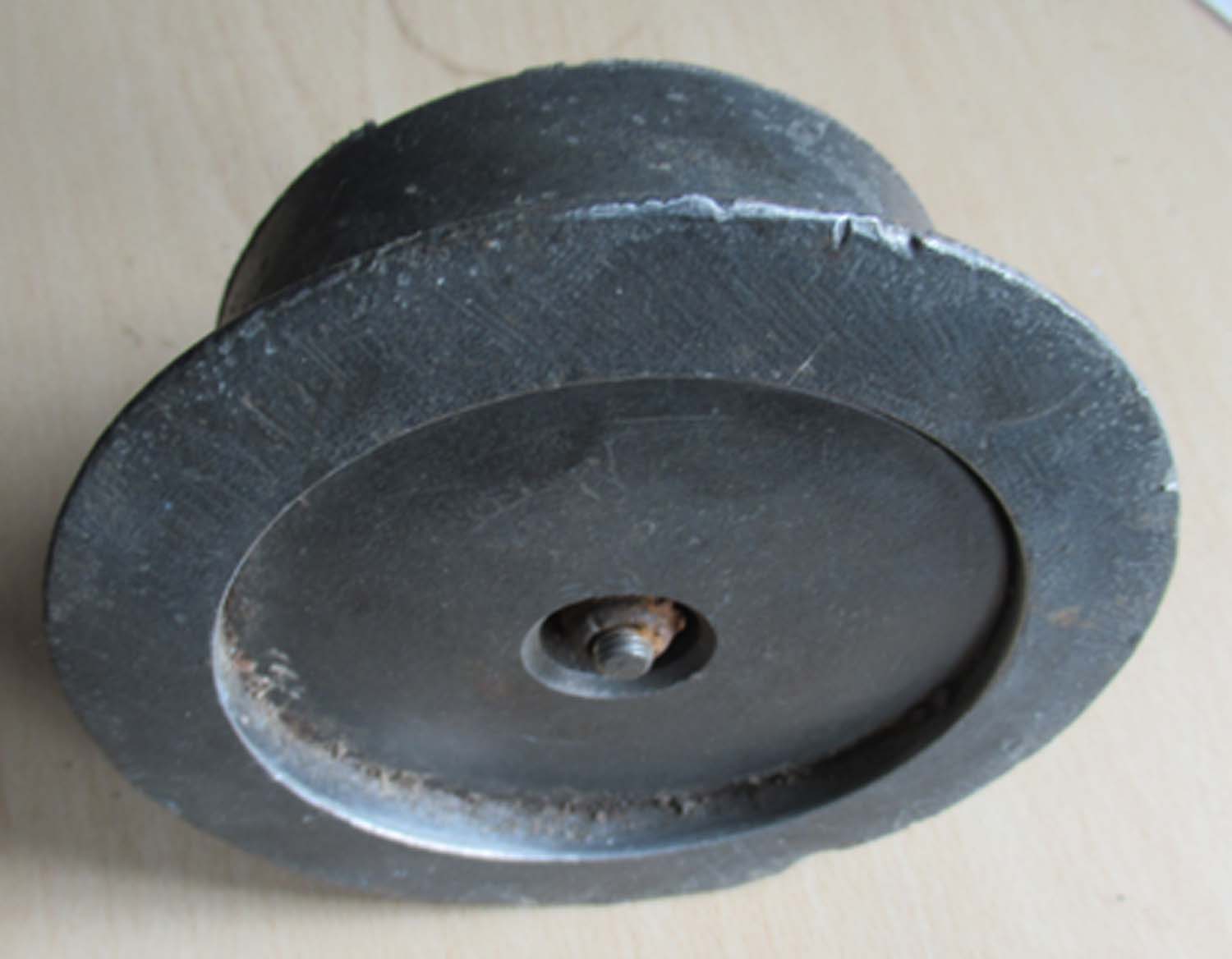
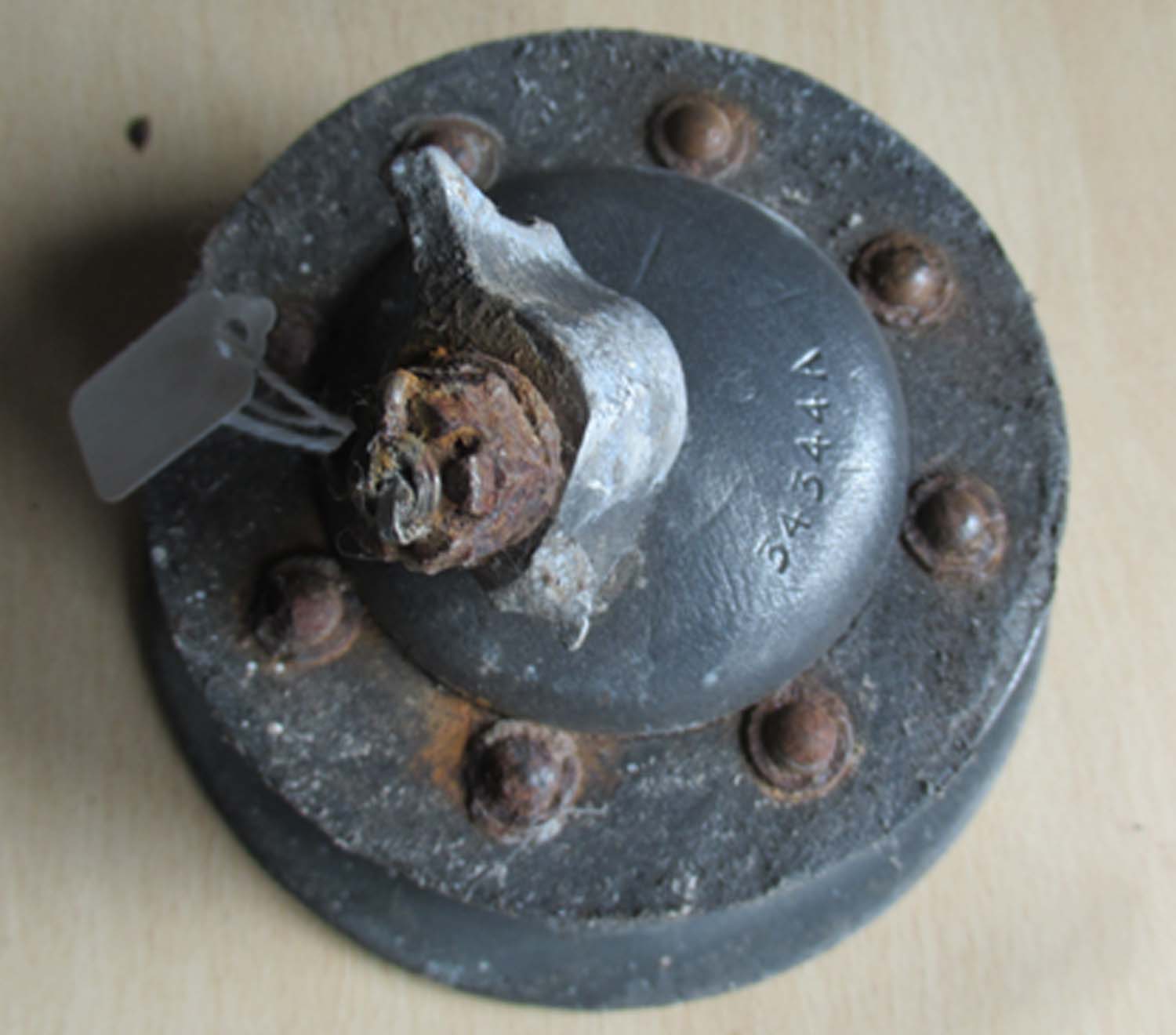
The Chance-Vought F4U Corsair was one
of the most successful fighters of WWII. In production longer than any
other US fighter in World War II (1942-1952) with 12,571 built, the Corsair
had several claims to fame, and some of which remained in service as late as
1965. It was credited with an 11:1 ratio of kills to losses in action against
Japanese aircraft and was the last piston-engine fighter in production for the
US, Fleet Air Arm or other naval air arms.
|
|
Click on pictures to enlarge


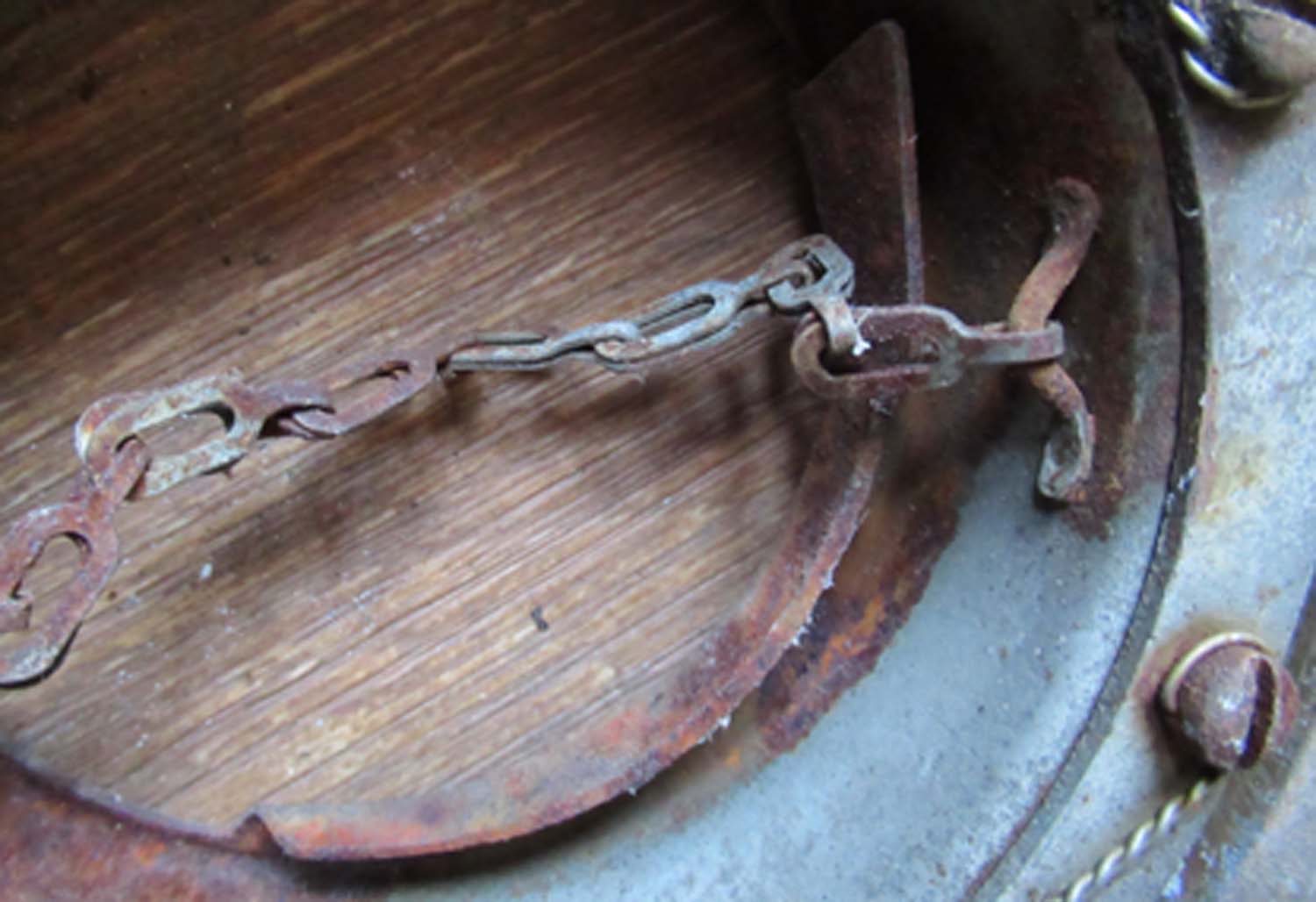 |
B25 Fuel cap mount (No 51 pg1 Fuel)
Here is fuel cap mount for a
B25 bomber it was removed from the B25 known as the Bedsheet Bomber. This aircraft spent the war in the
US as a training aircraft after a varied career in the US
she
arrived in England in
1961 where she served as the photography platform in the
film “War Lovers”. In 1963 she was used again for the
filming of the movie “633 Squadron”. After several owners
and falling into a derelict state she is now being restored
at the Wings Museum in Sussex.
There is
plenty of information about this aircraft available online
with its complete history.
Click on pictures to enlarge




£295


|
|
Click on pictures to enlarge
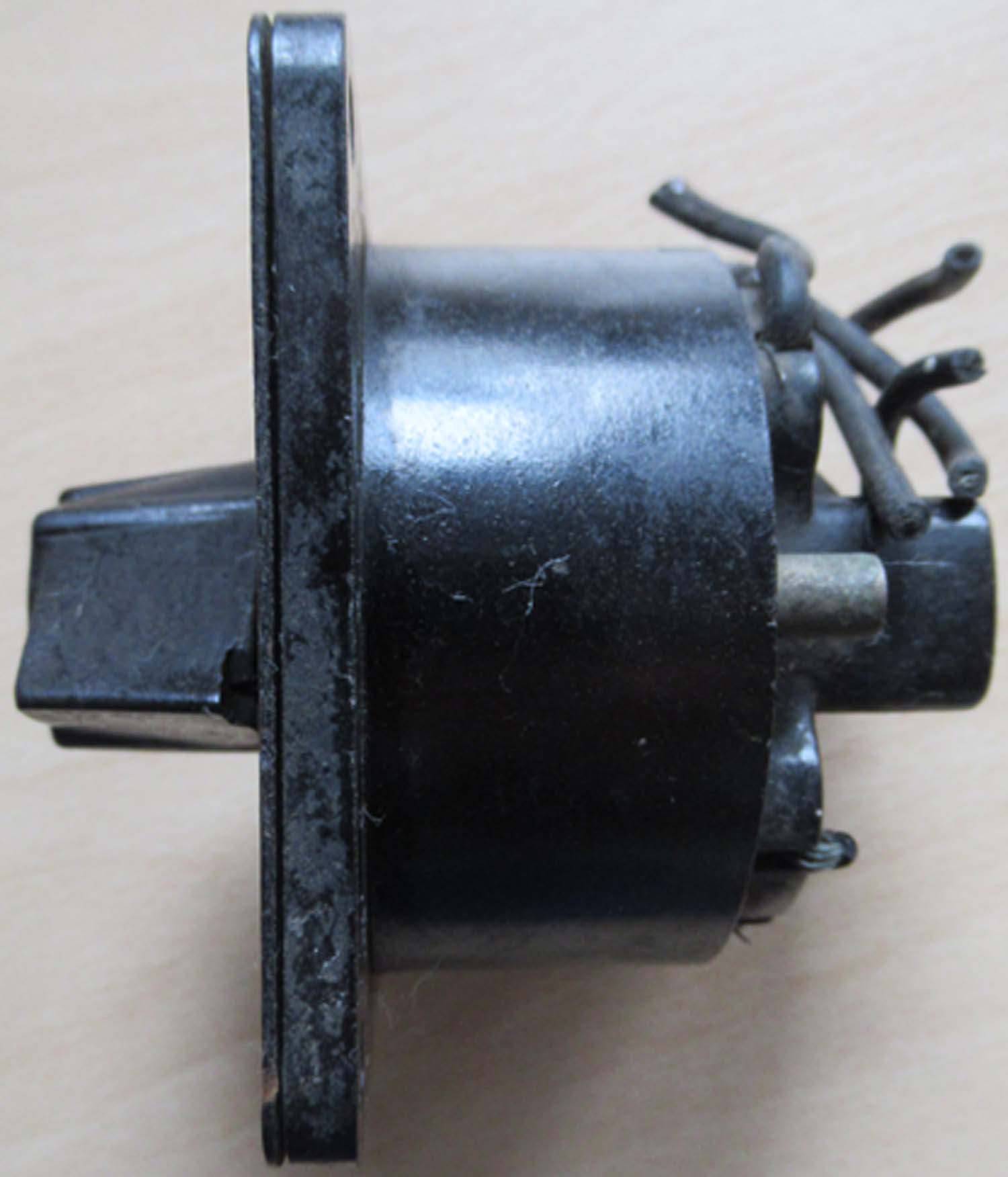
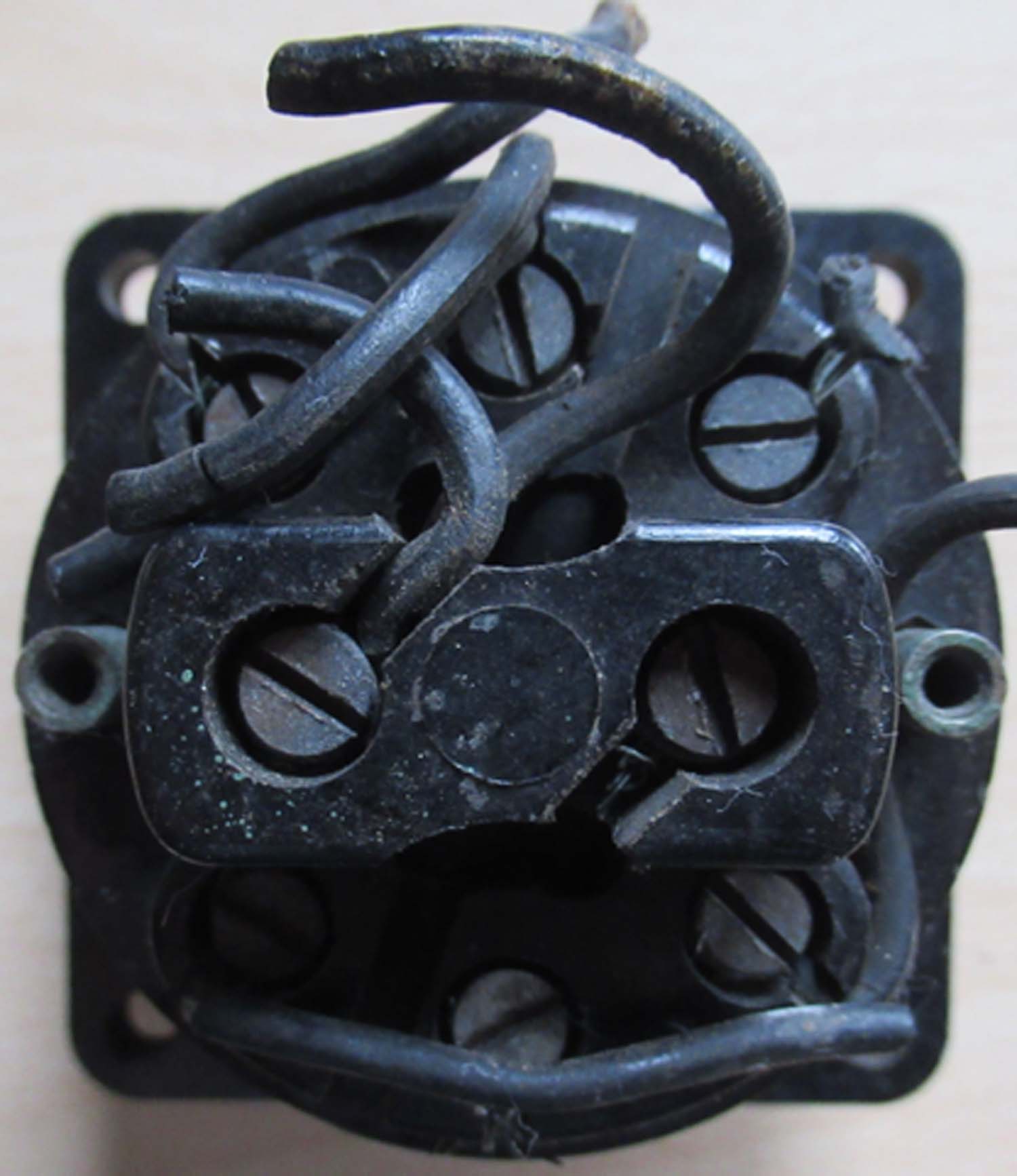 |
Hurricane Fuel Tank Selector Switch (No 50 pg1 Fuel)
Here we have a rare Hurricane fuel
tank selector switch in good condition.
Click on pictures to enlarge
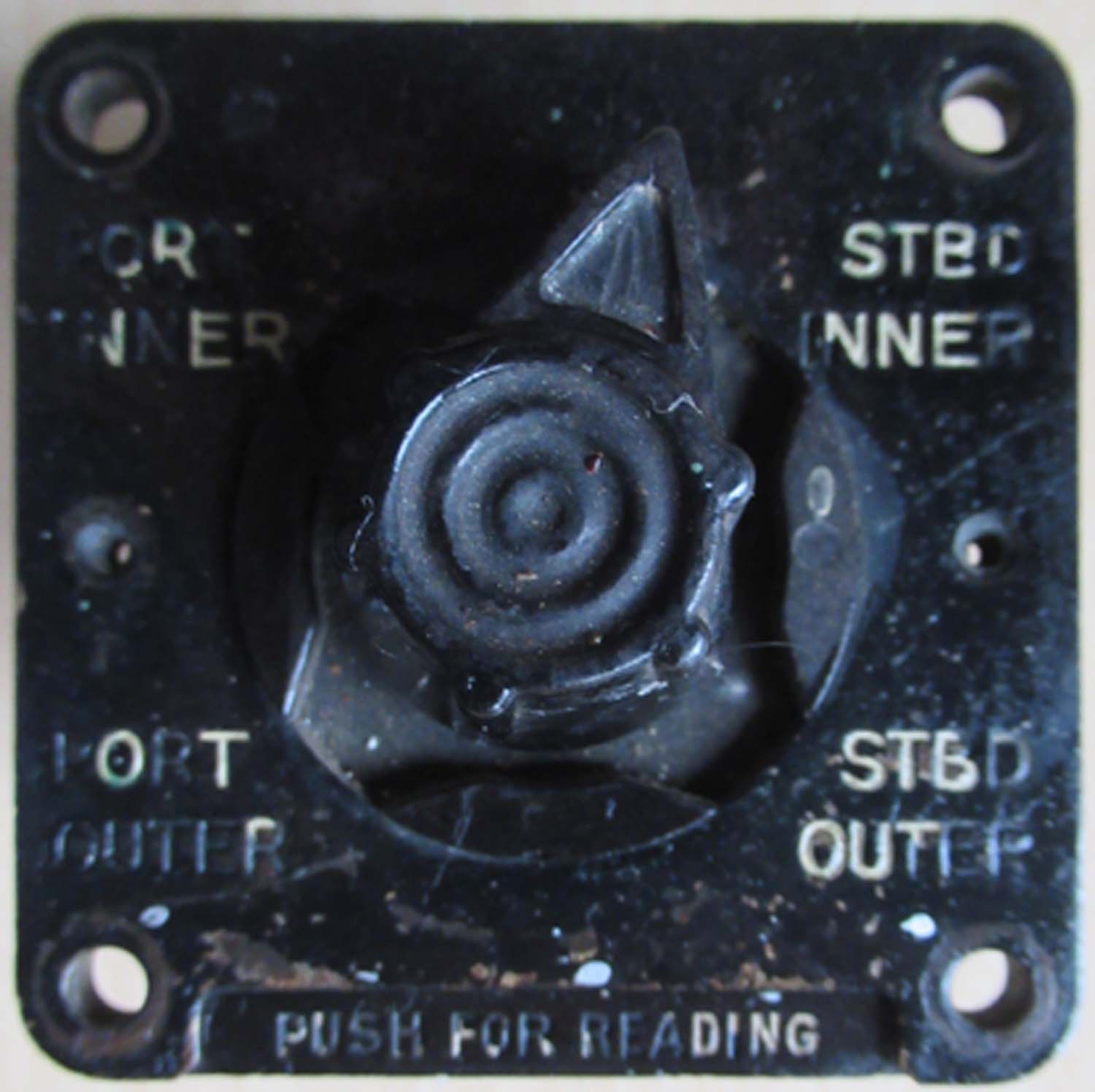
Out of stock more wanted
contact me |
|
Click on pictures to enlarge
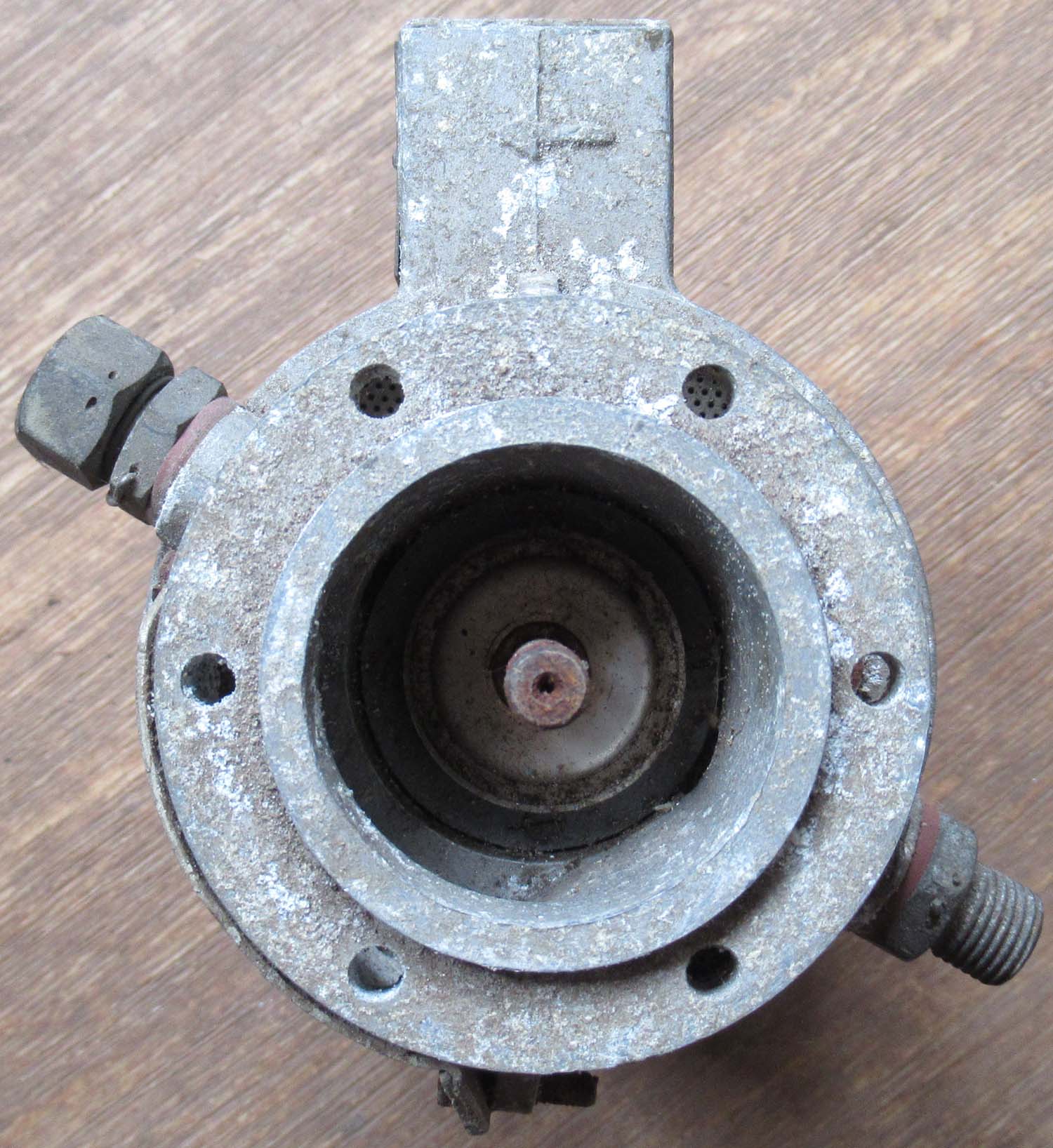
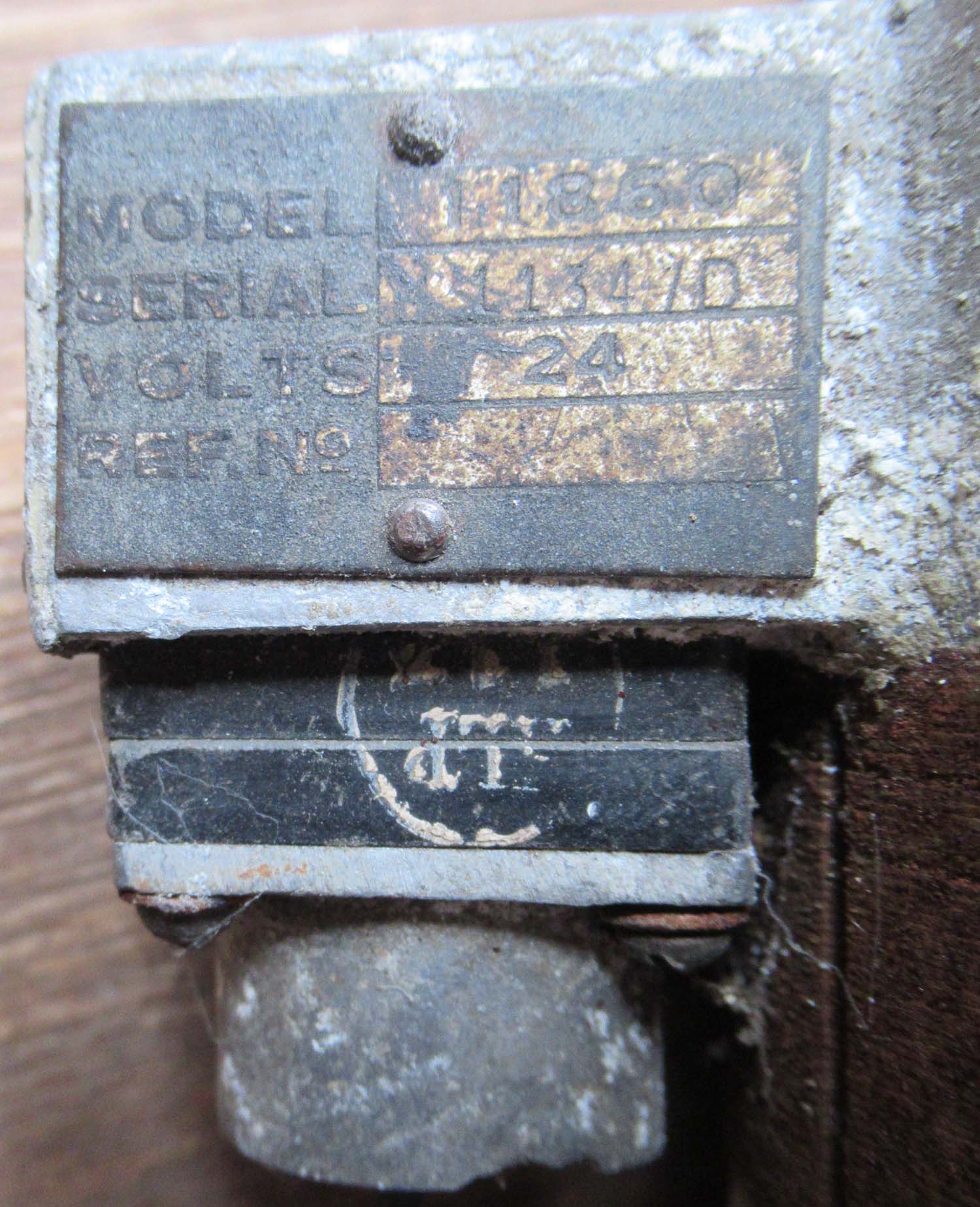
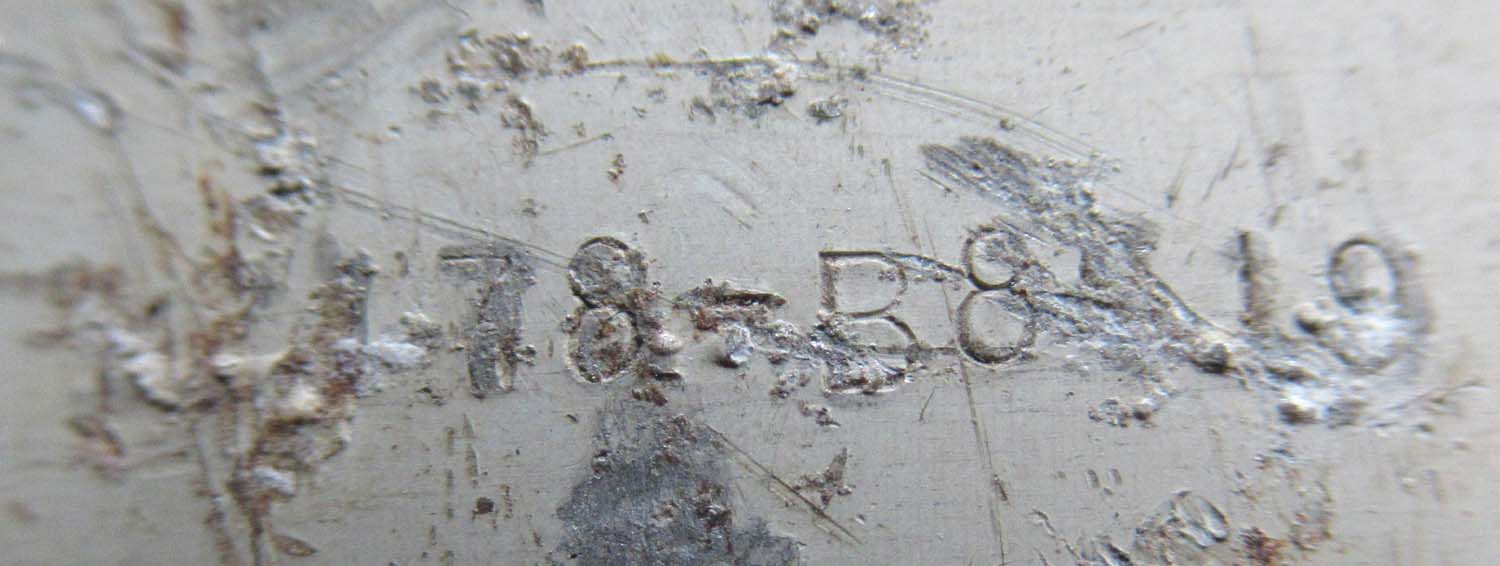 |
P51
Chandler
Fuel Pump (No
49 pg1 Fuel)
Here we have a 24 Volt
American Chandler fuel pump type G9 and
was able to be fitted to most US military wartime aircraft.
The excess capacity that fuel pumps deliver is routed back
to the fuel system by a return line.
Aircraft listed include. B24, B17, B25, A20. P38,P39, P40,
P47, P51 and others.
The W535 number on the fuel pump is an American wartime
purchasing contract number.
Model No:
11860
Ser No:
1134/D
Click on pictures to enlarge
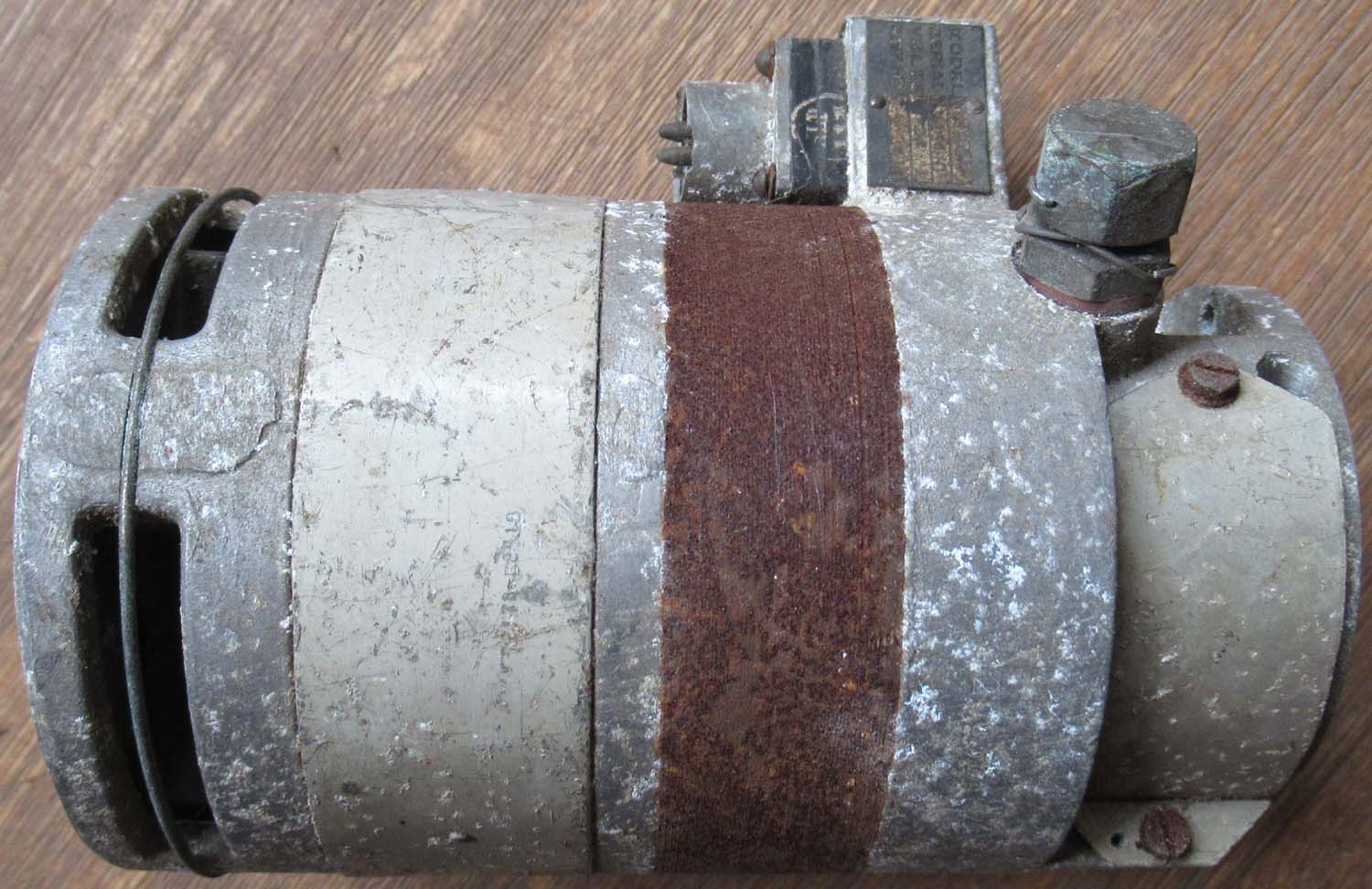
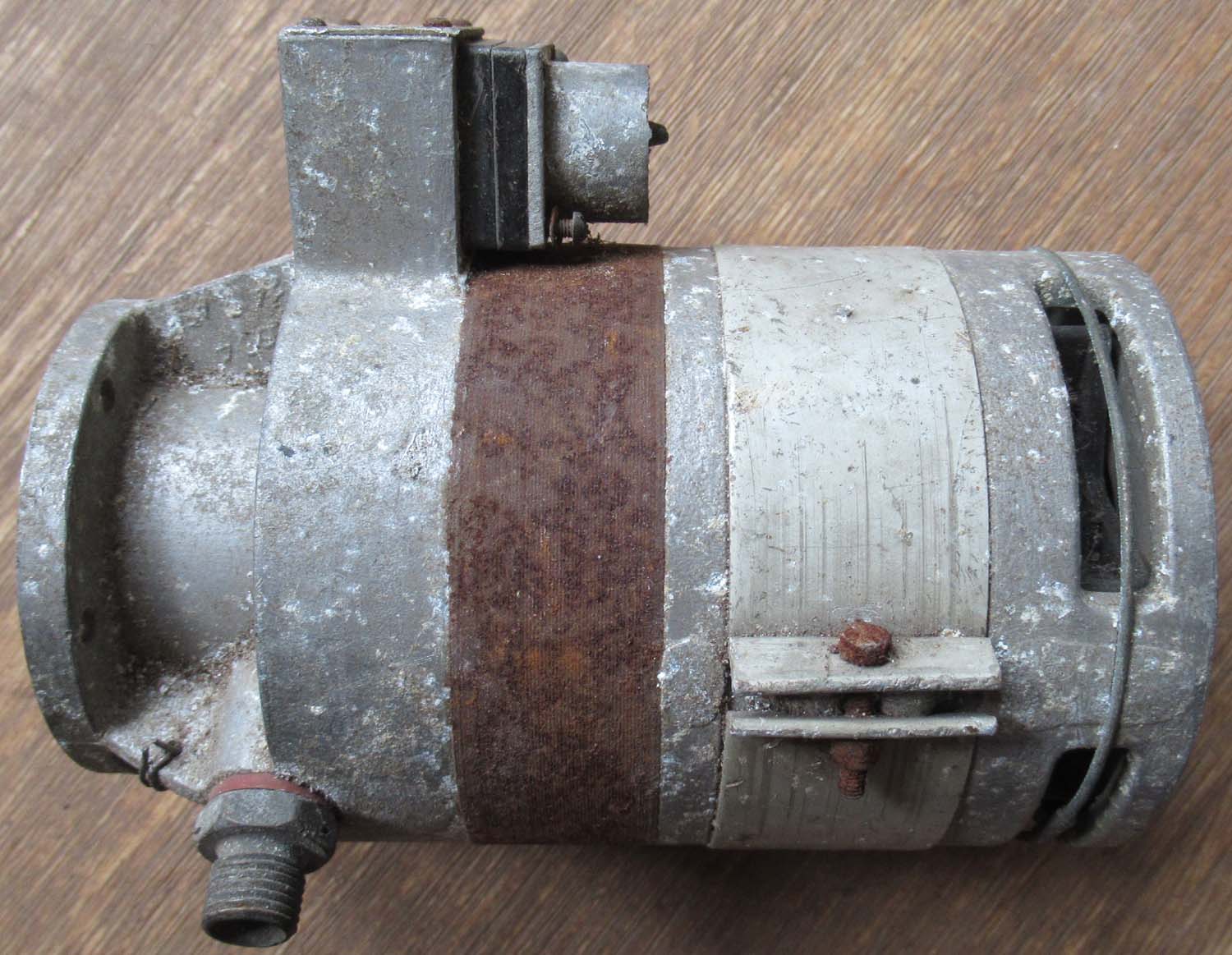
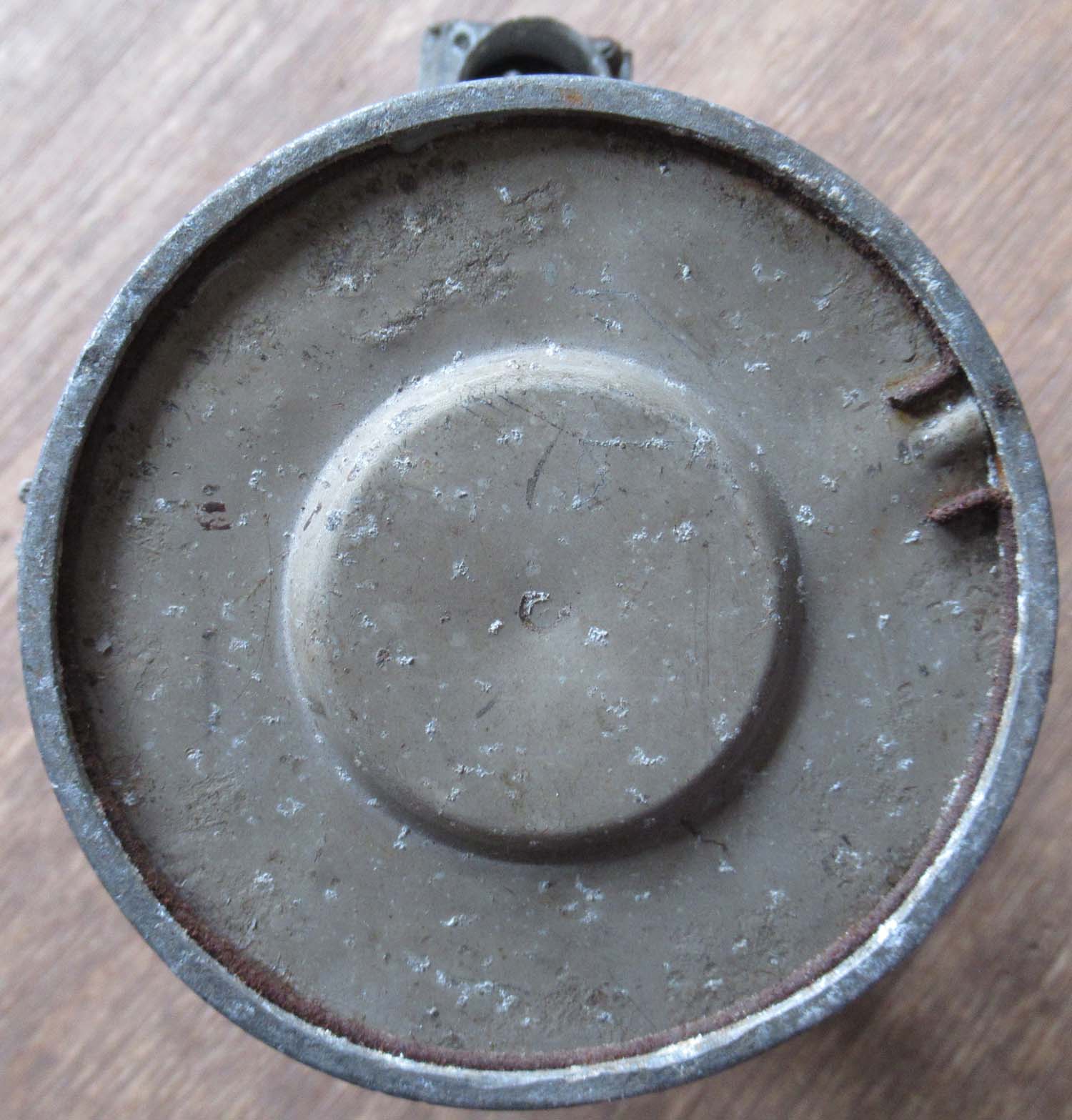
£350


|
|
Click on pictures to enlarge
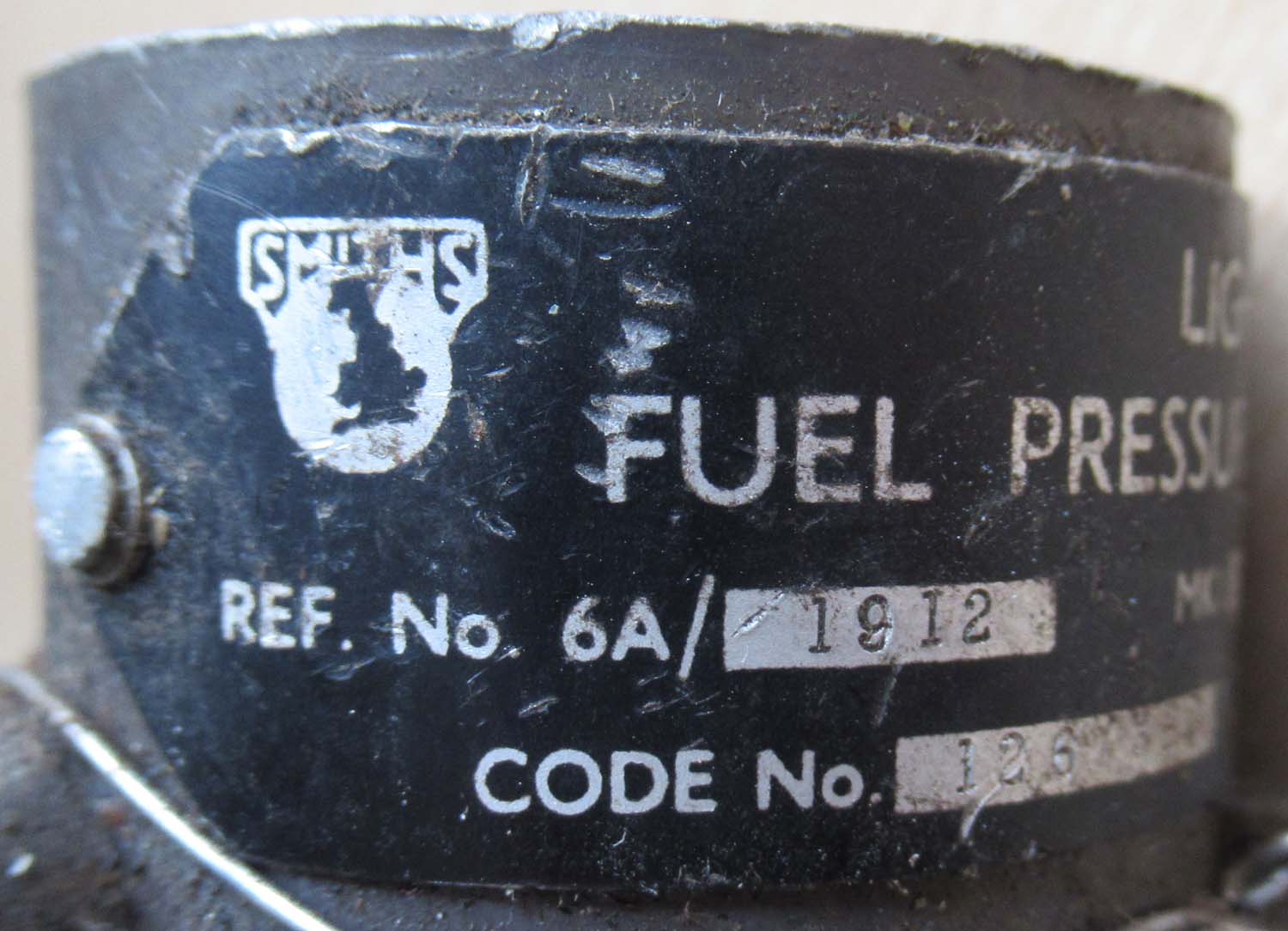
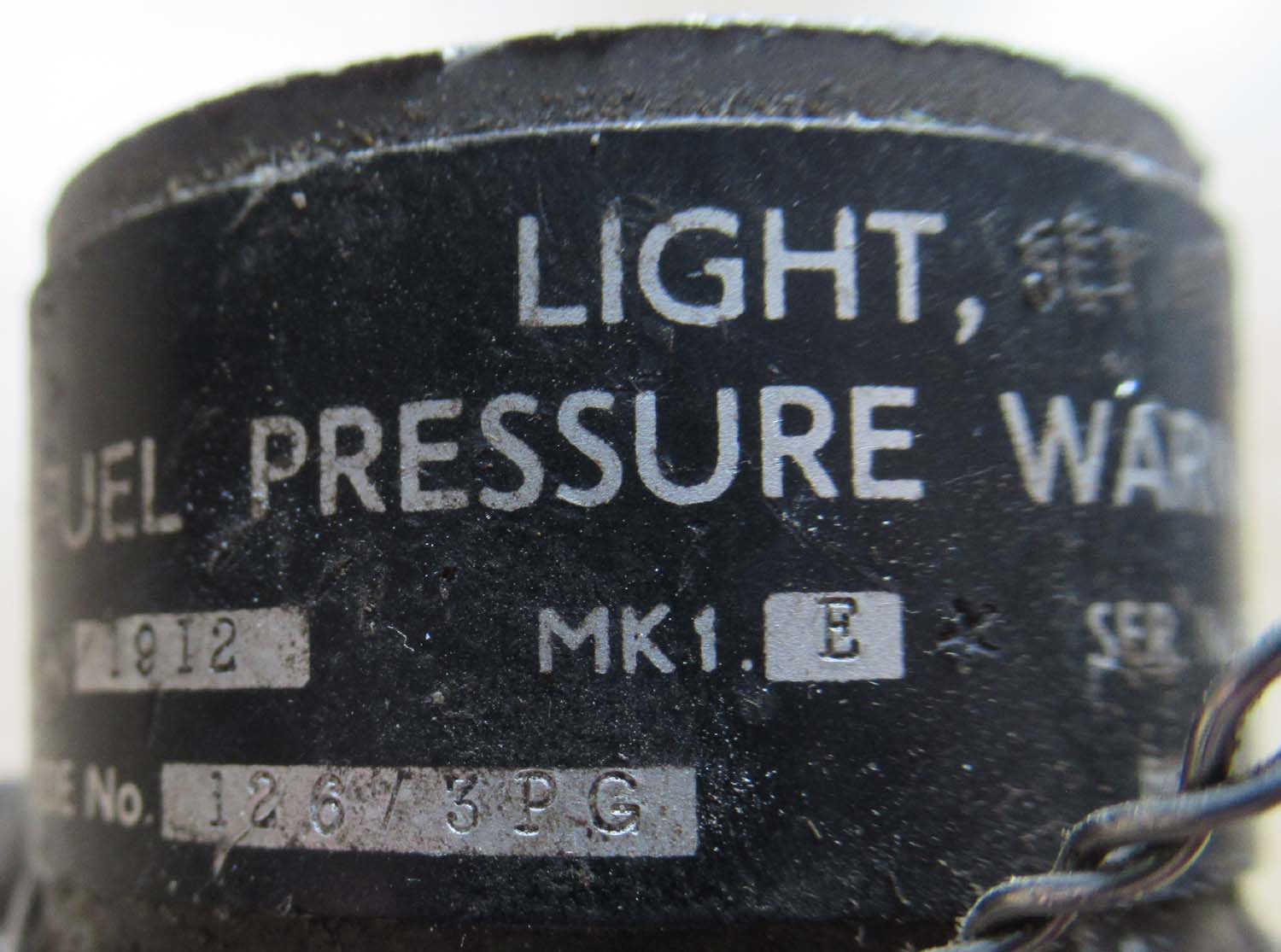
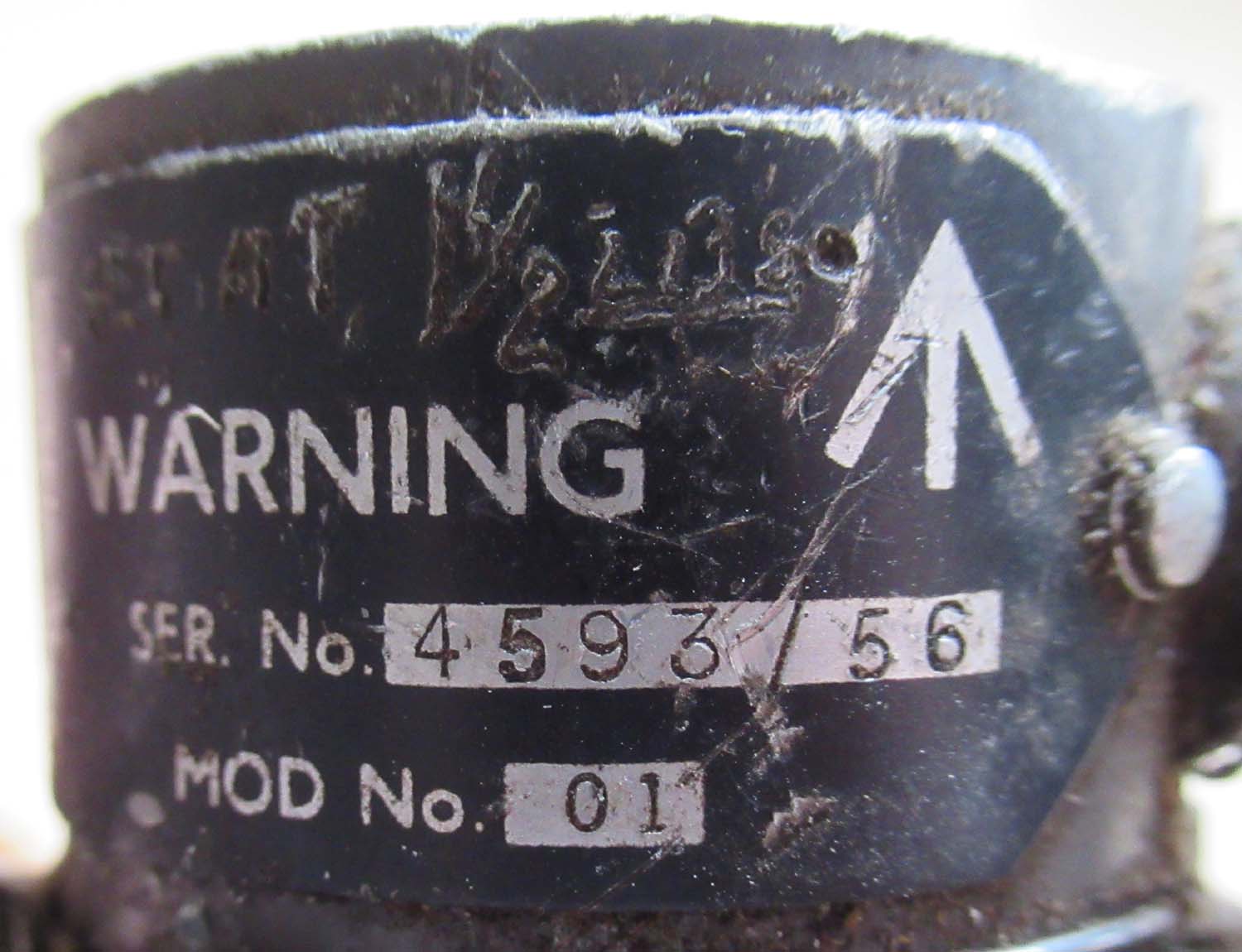 |
MKI E Fuel Pressure Switch Unit 6A/1912 (No
48 pg1 Fuel)
Here we have a MKI
E fuel pressure switch by Smiths.
MK I
6A/1912
Ser No: 4593/56
Code No: 126/3PG
Click on pictures to enlarge
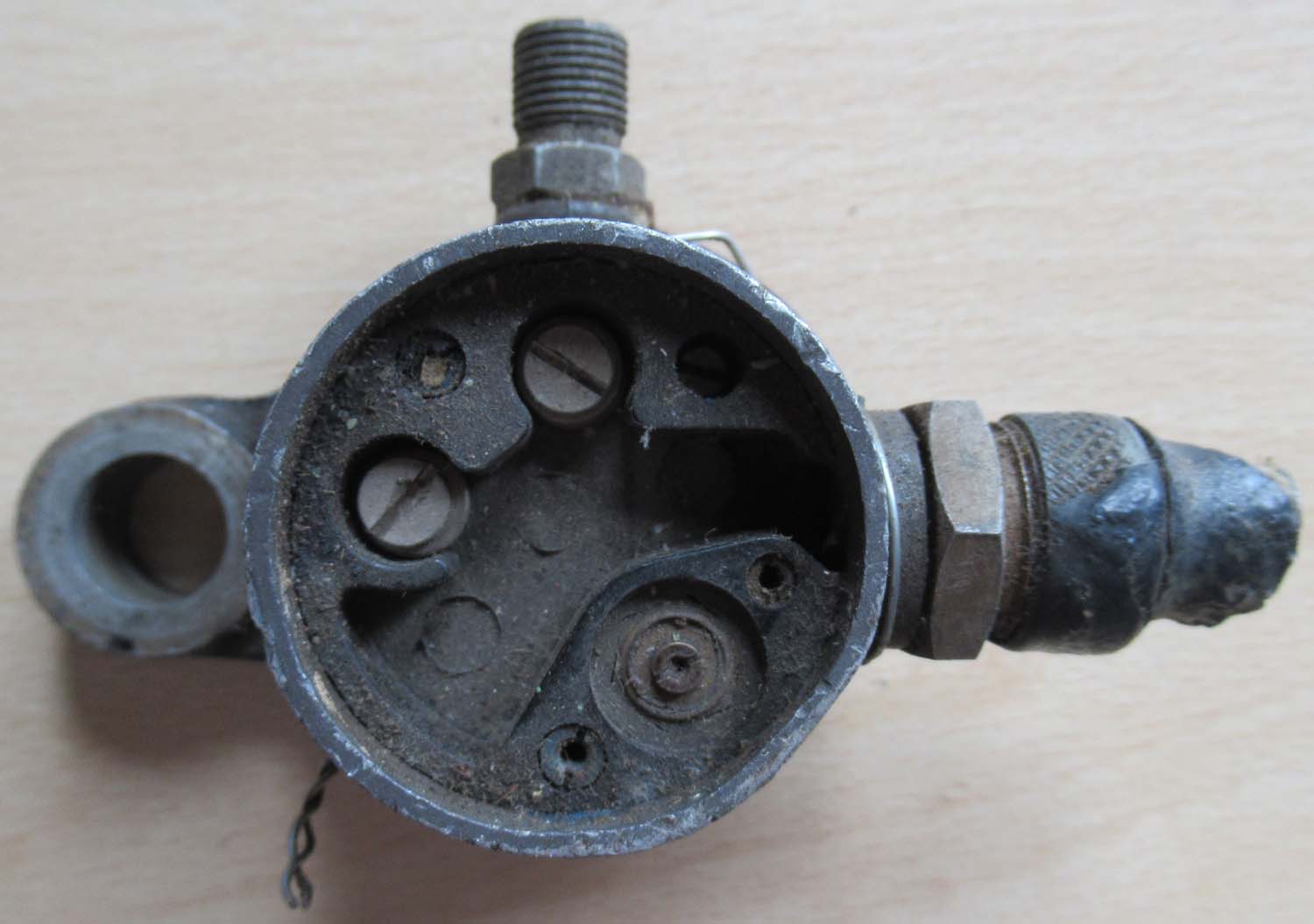
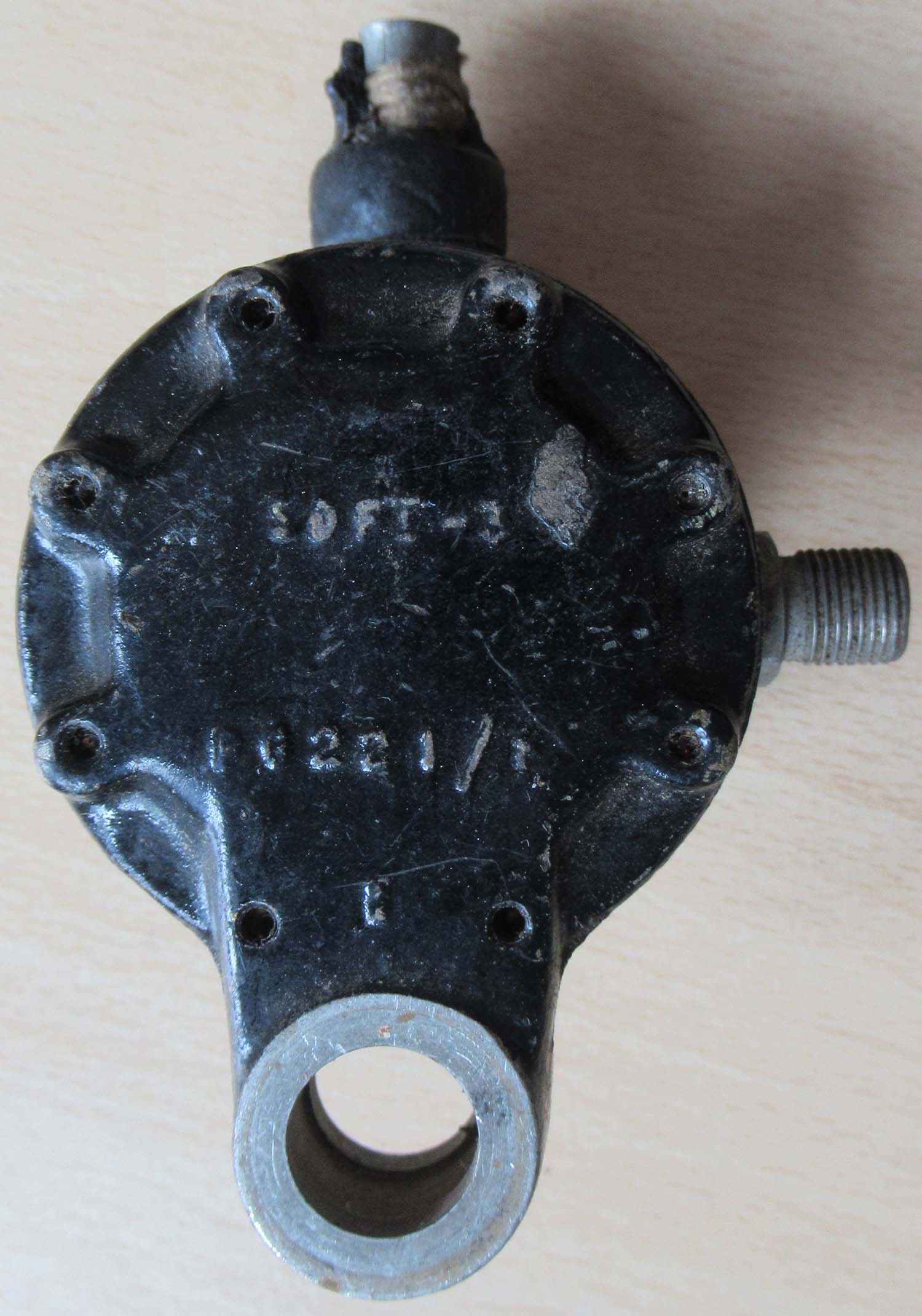
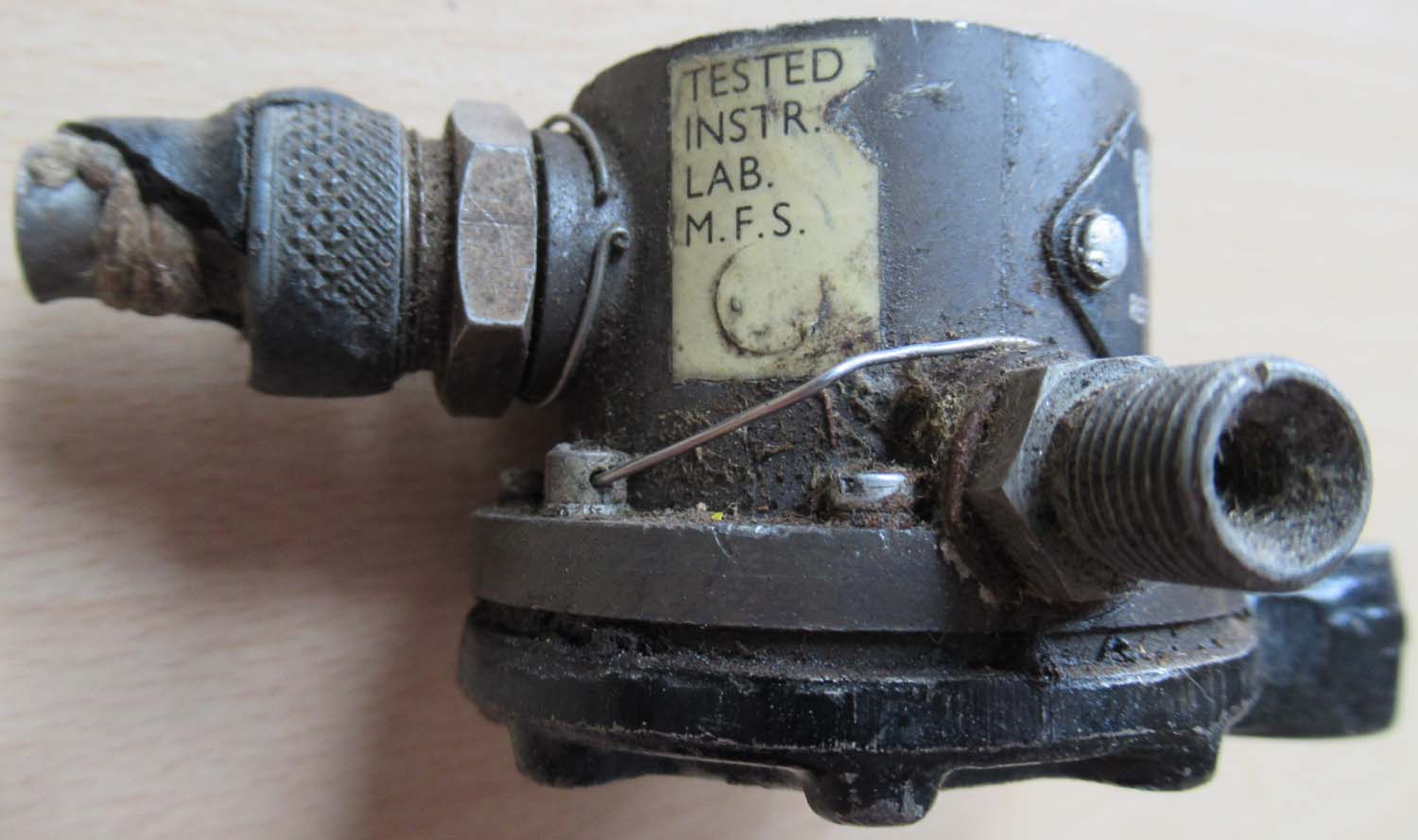
Out of
stock more wanted please
contact me |
|
Click on pictures to enlarge
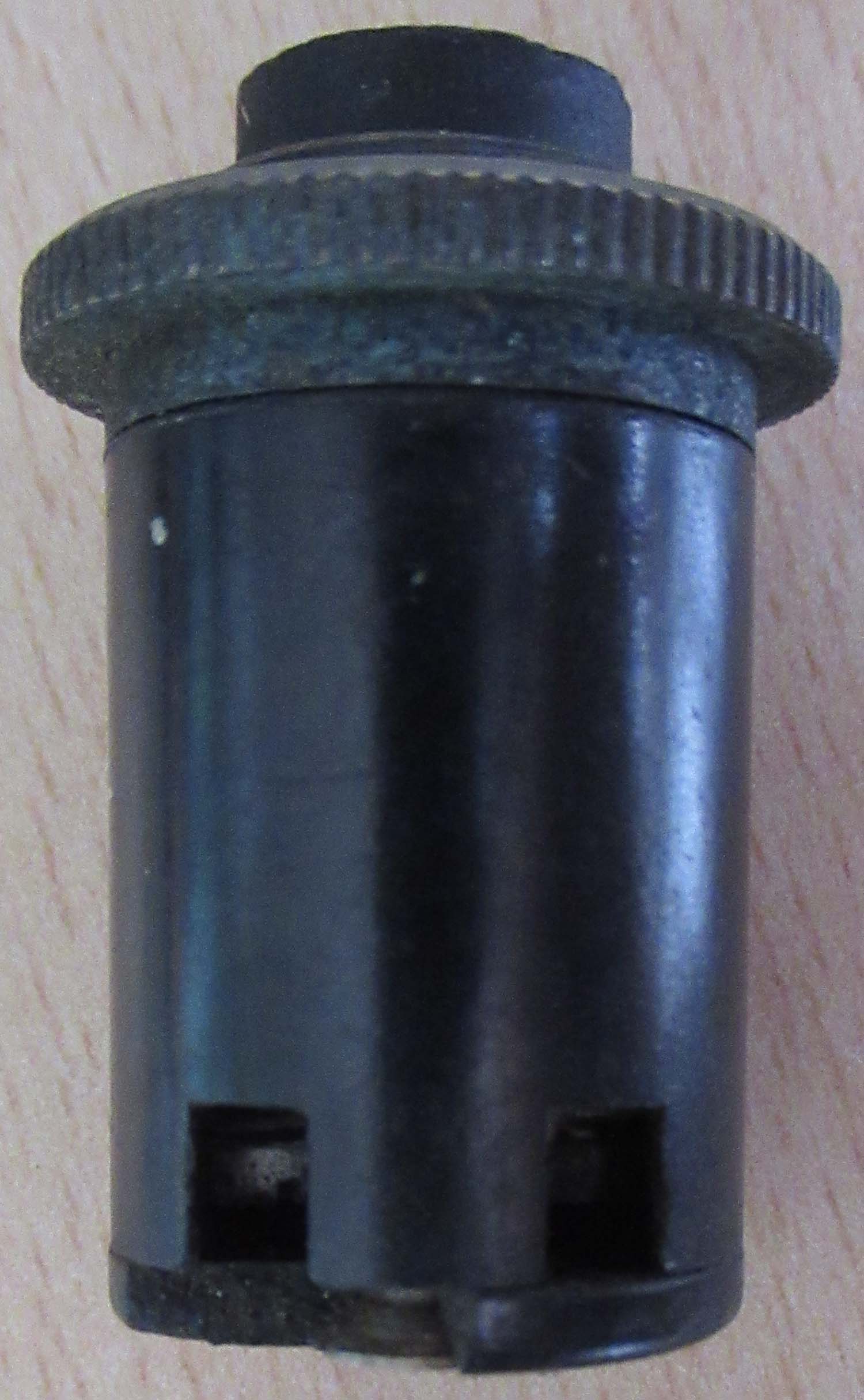
|
Original Spitfire Fuel Push Button 2 (No 46 pg1 Fuel)
This is an original push
button for gauging the fuel tanks fitted to the Spitfire
main panel as well as other RAF aircraft.
These are extremely rare
parts and this one works as it should the button depresses
smoothly.
Click on pictures to enlarge
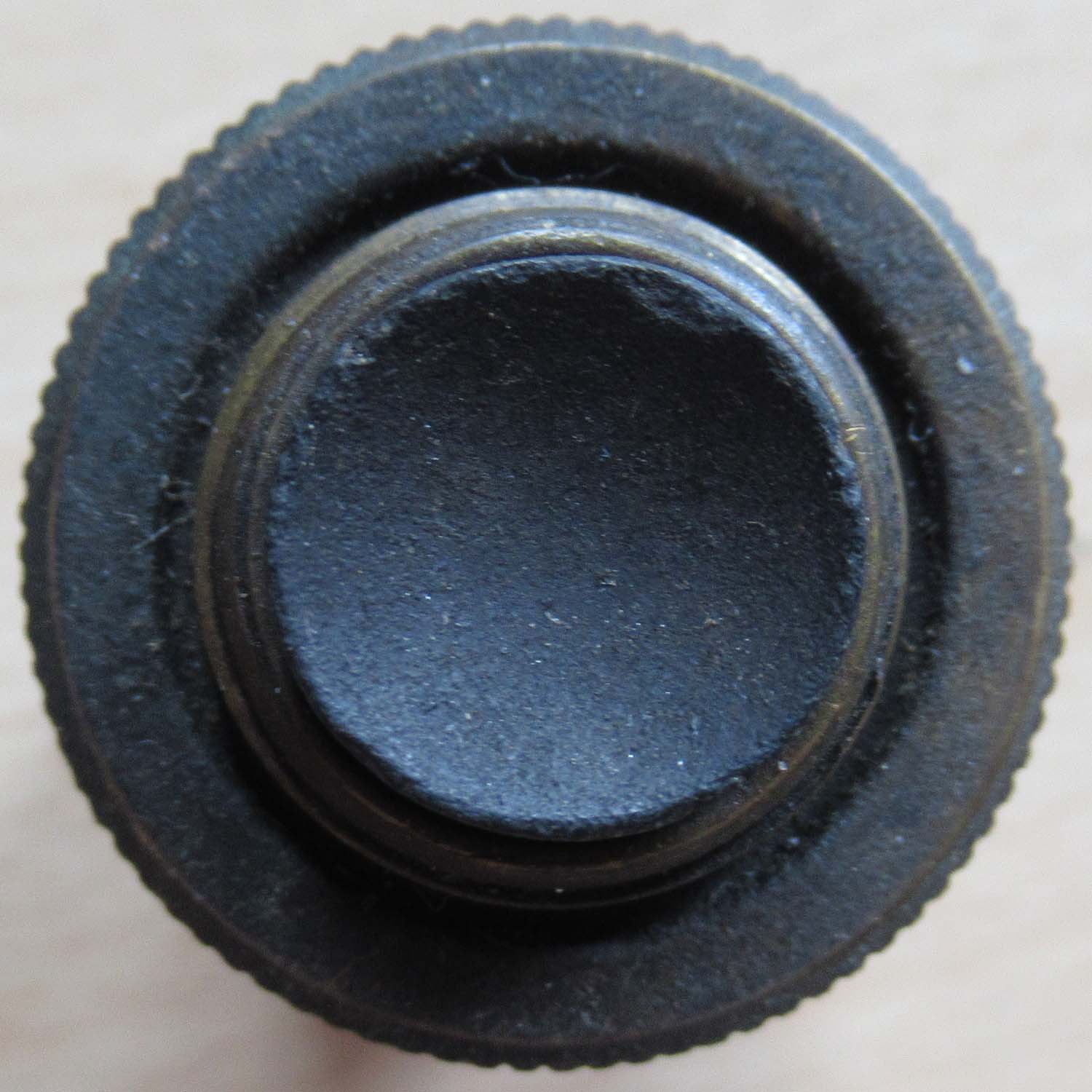
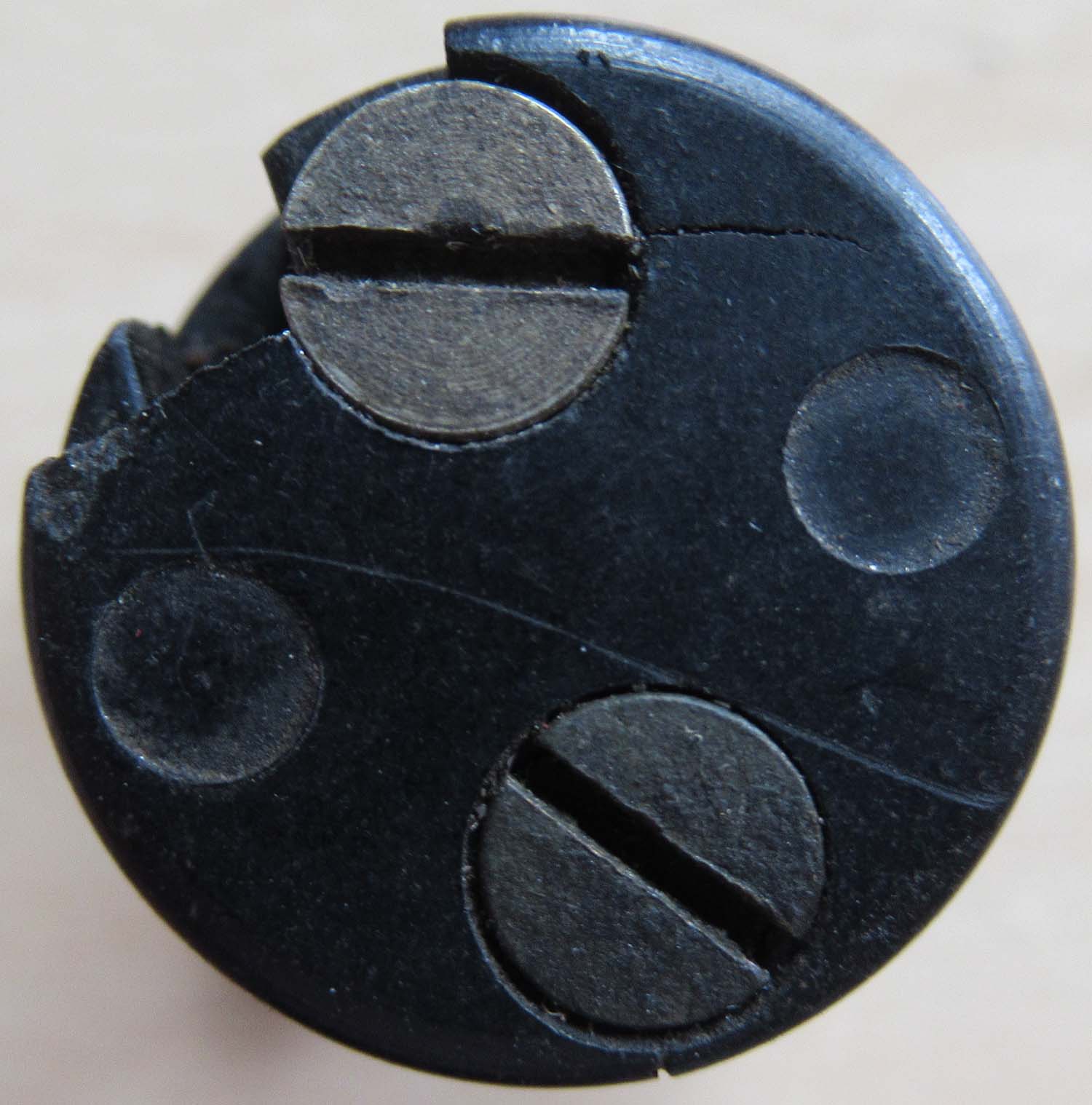
£275


|
|
Click on pictures to enlarge


 |
Vickers
Fuel Cock (No 45 pg1 Fuel)
Here we have a Vickers two-way
fuel cock which is new old stock. Recovered in its original grease,
just needs a good soak in petrol. We will
remove this for the seller if requested.
Unfortunately missing its handle.
Used in a variety of Wartime RAF aircraft
including the Spitfire.
Click on pictures to enlarge
 
£295


|
|
Click on pictures to enlarge
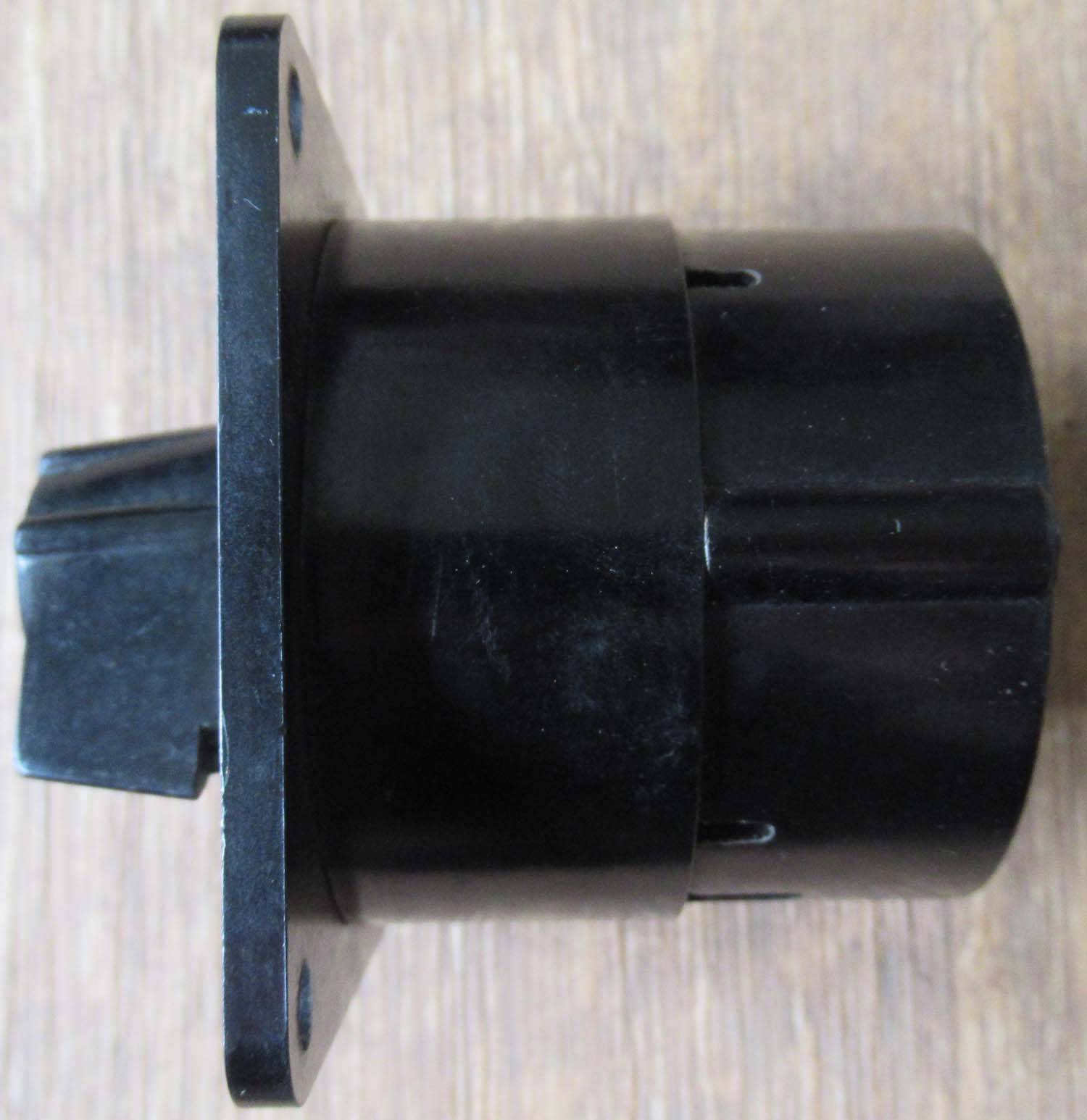
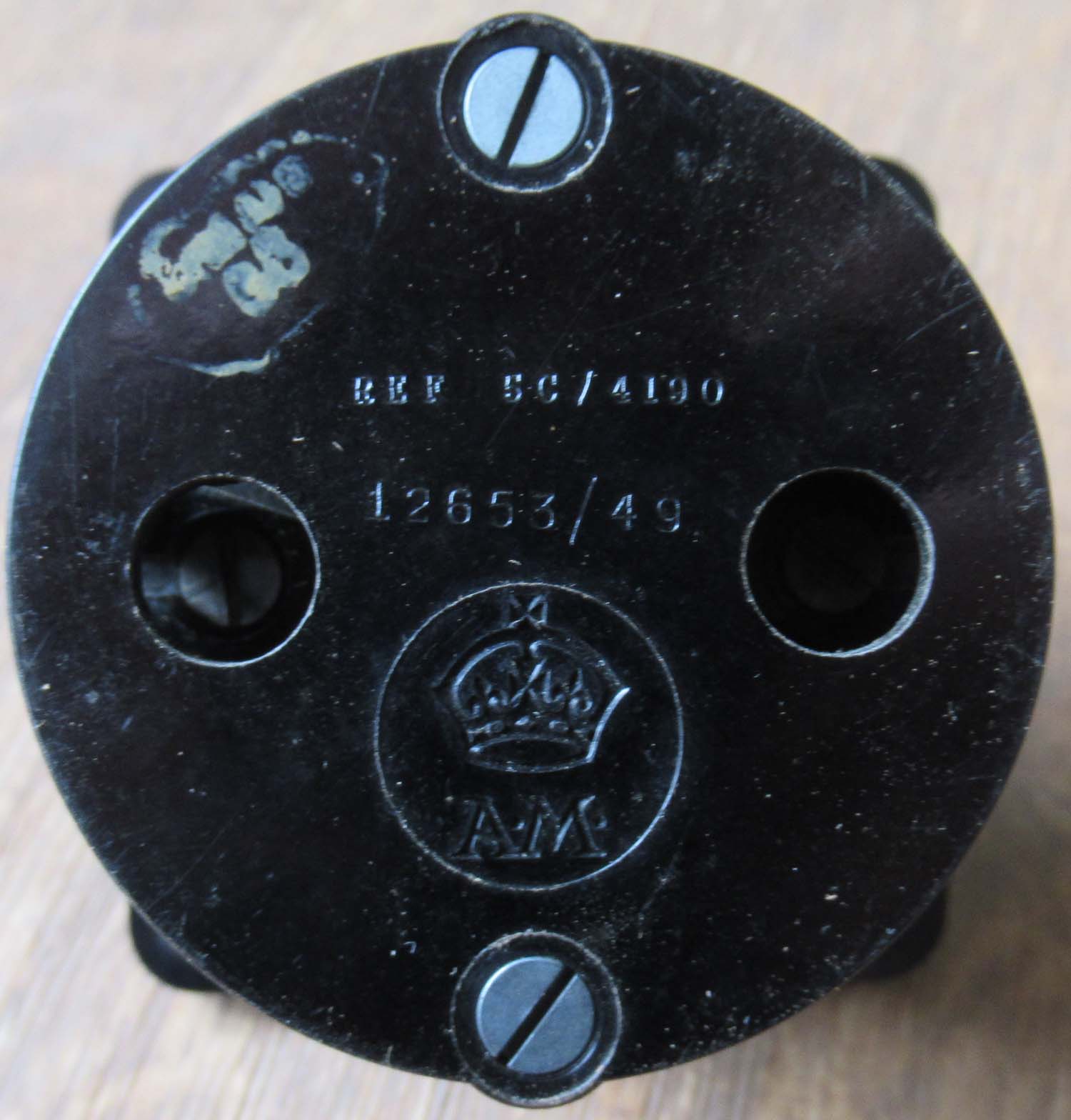 |
Typhoon Fuel Switch B (No 44 pg1 Fuel)
Fuel gauge switch used in the
Hawker Typhoon and possibly other aircraft. Button will
depress and turn as it should.
5C/4190
Click on pictures to enlarge
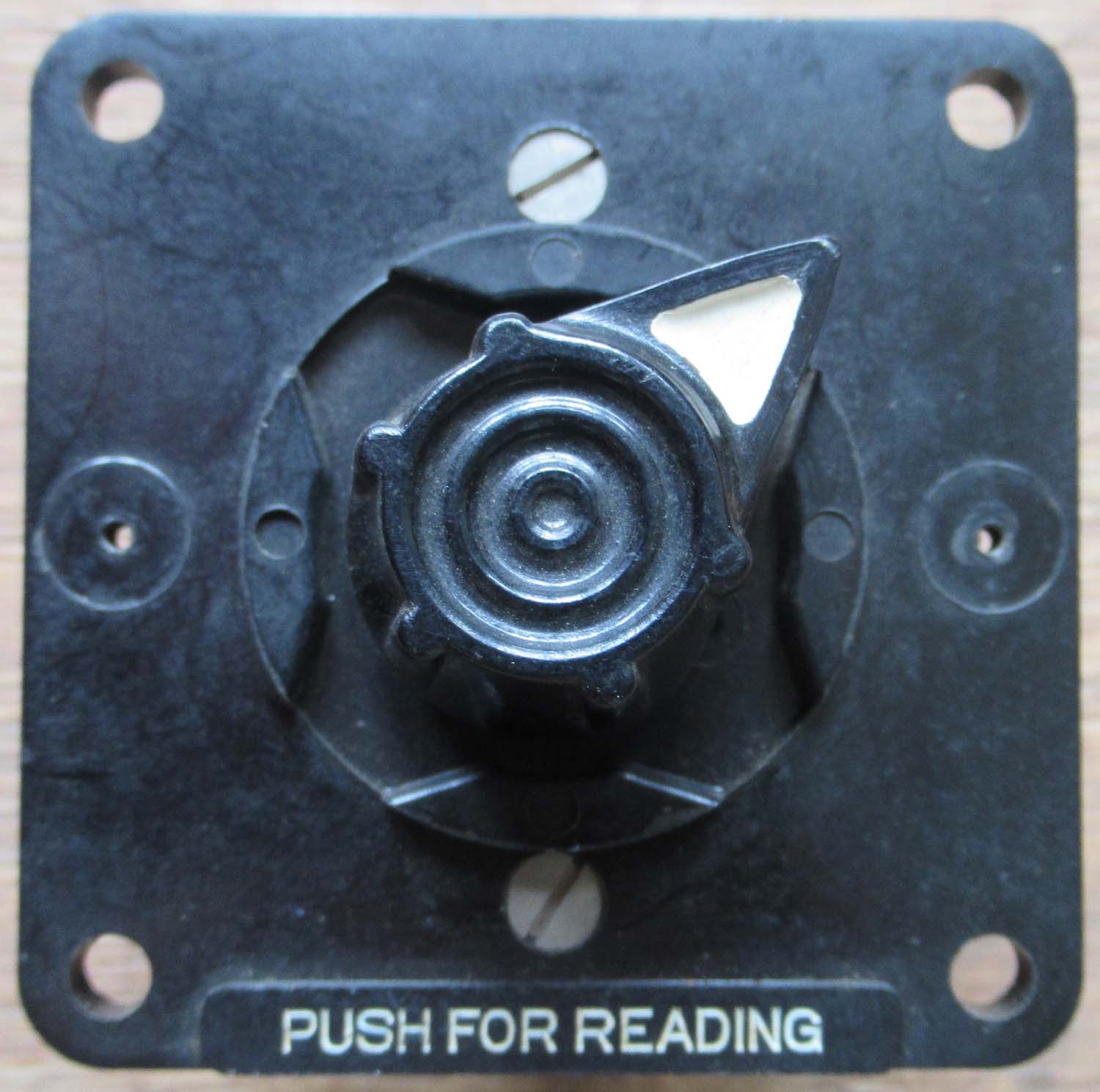
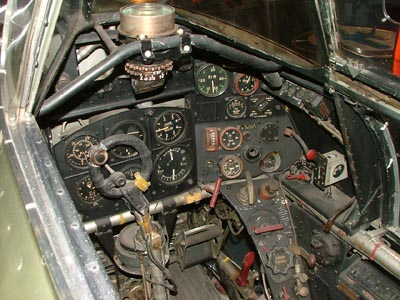
Seen above in the Hawker
Cockpit Typhoon in Duxford. Enlarge the picture for a better
view.
£150


|
|
Click on pictures to enlarge
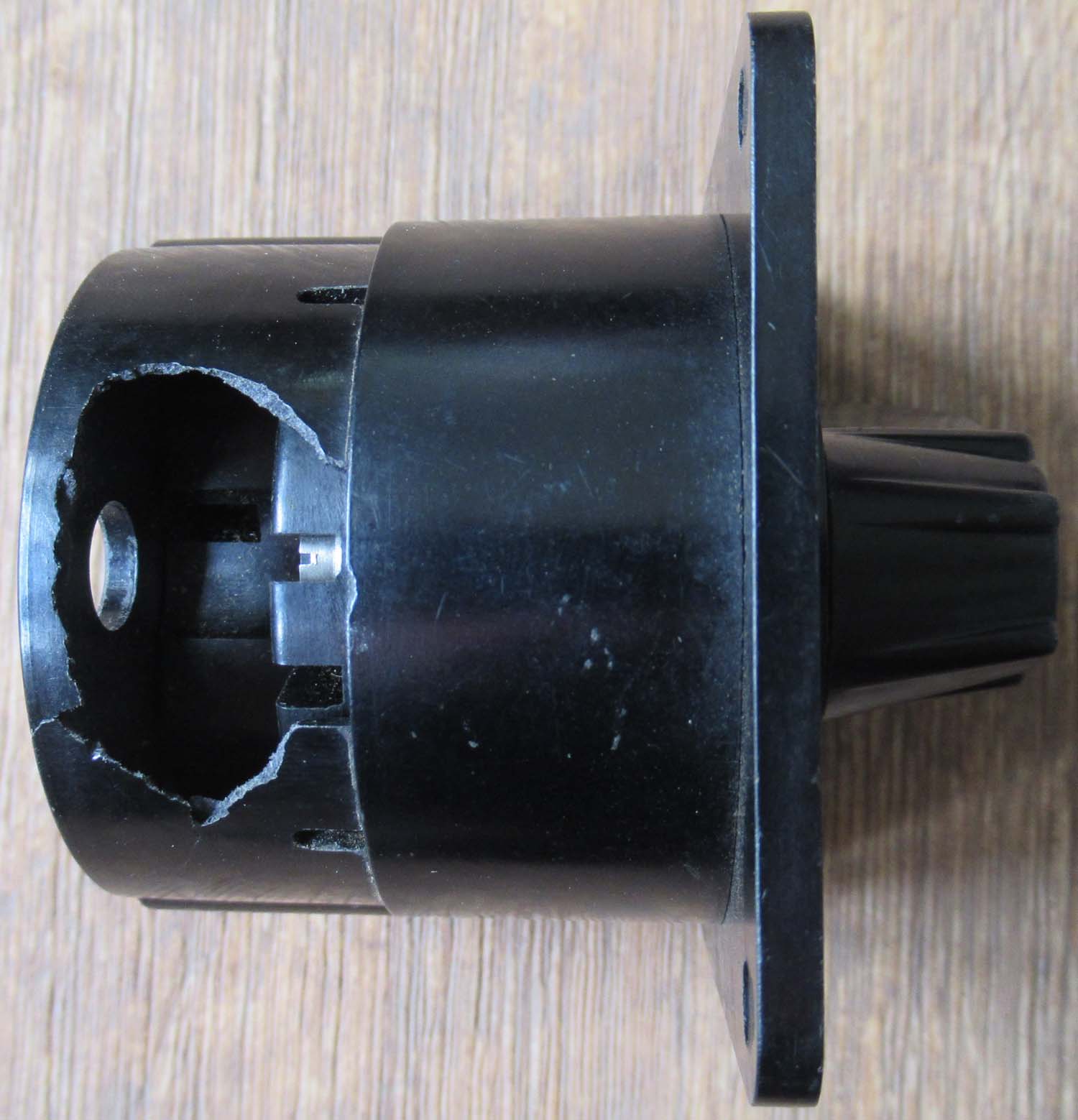
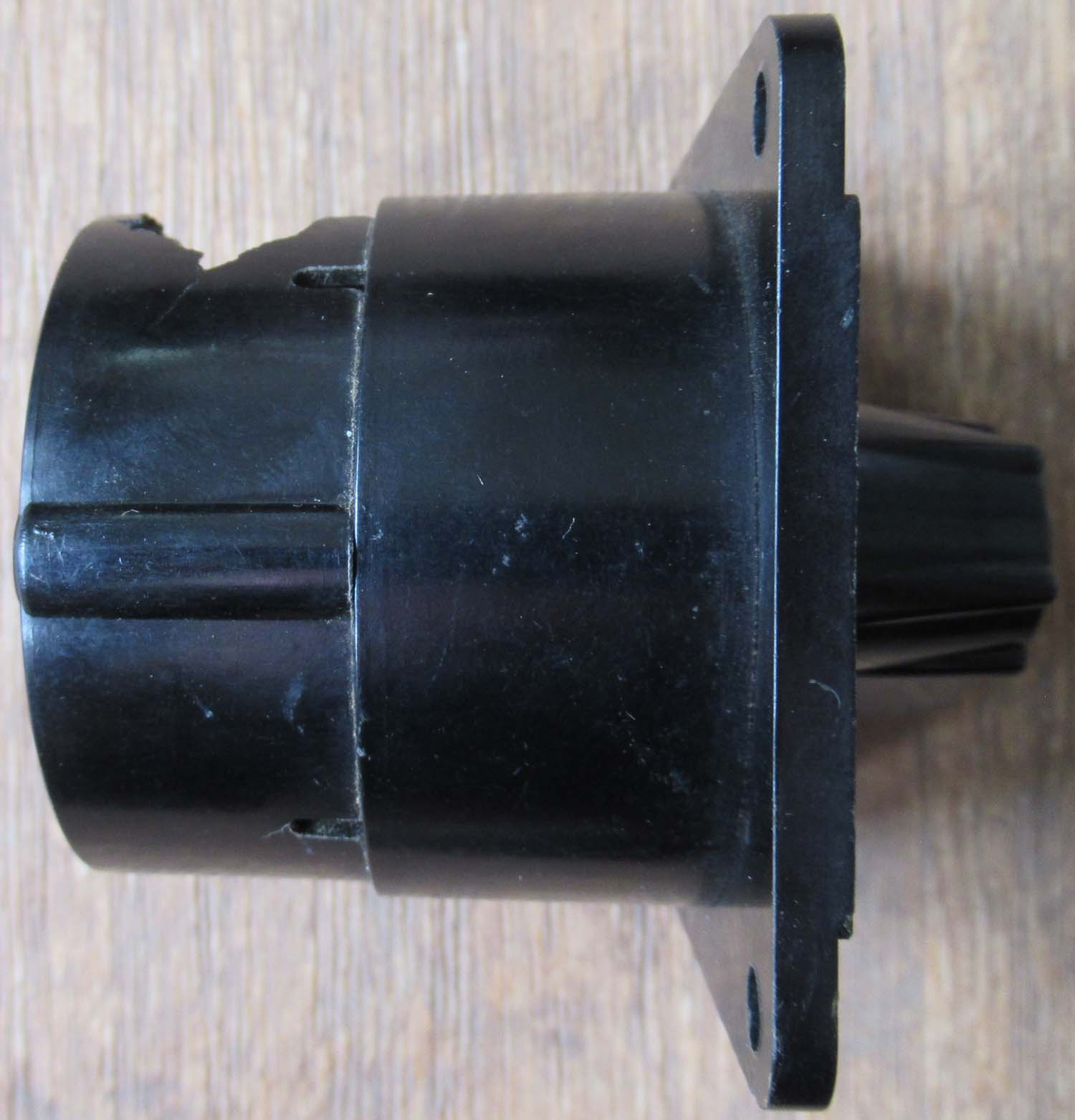 |
Typhoon Fuel Switch A (No 43 pg1 Fuel)
Fuel gauge switch used in the
Hawker Typhoon and possibly other aircraft. This one has
damage to the case but this will not affect it as a display
item in a panel. Button will depress and turn as it should.
5C/4190
Click on pictures to enlarge
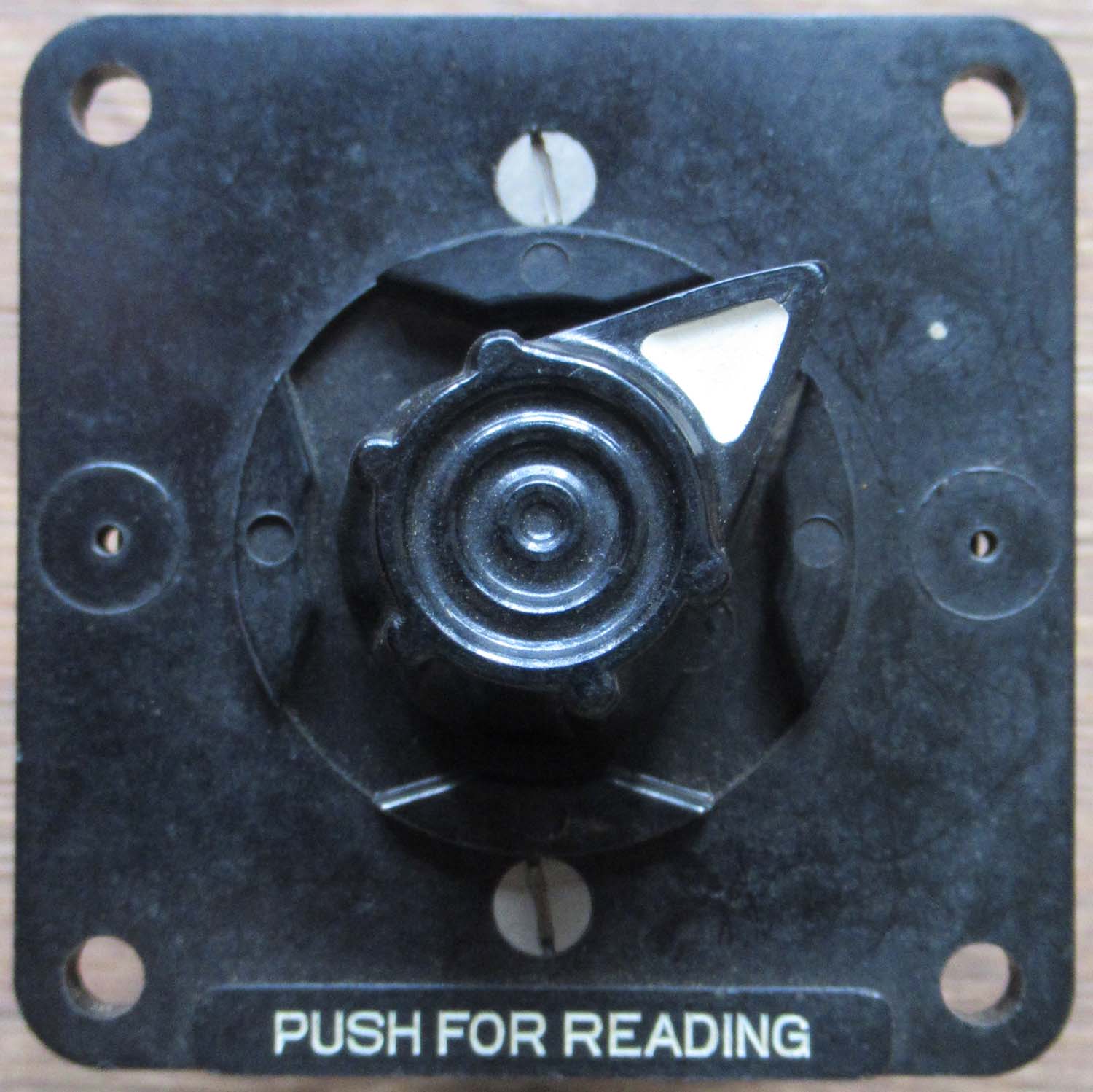

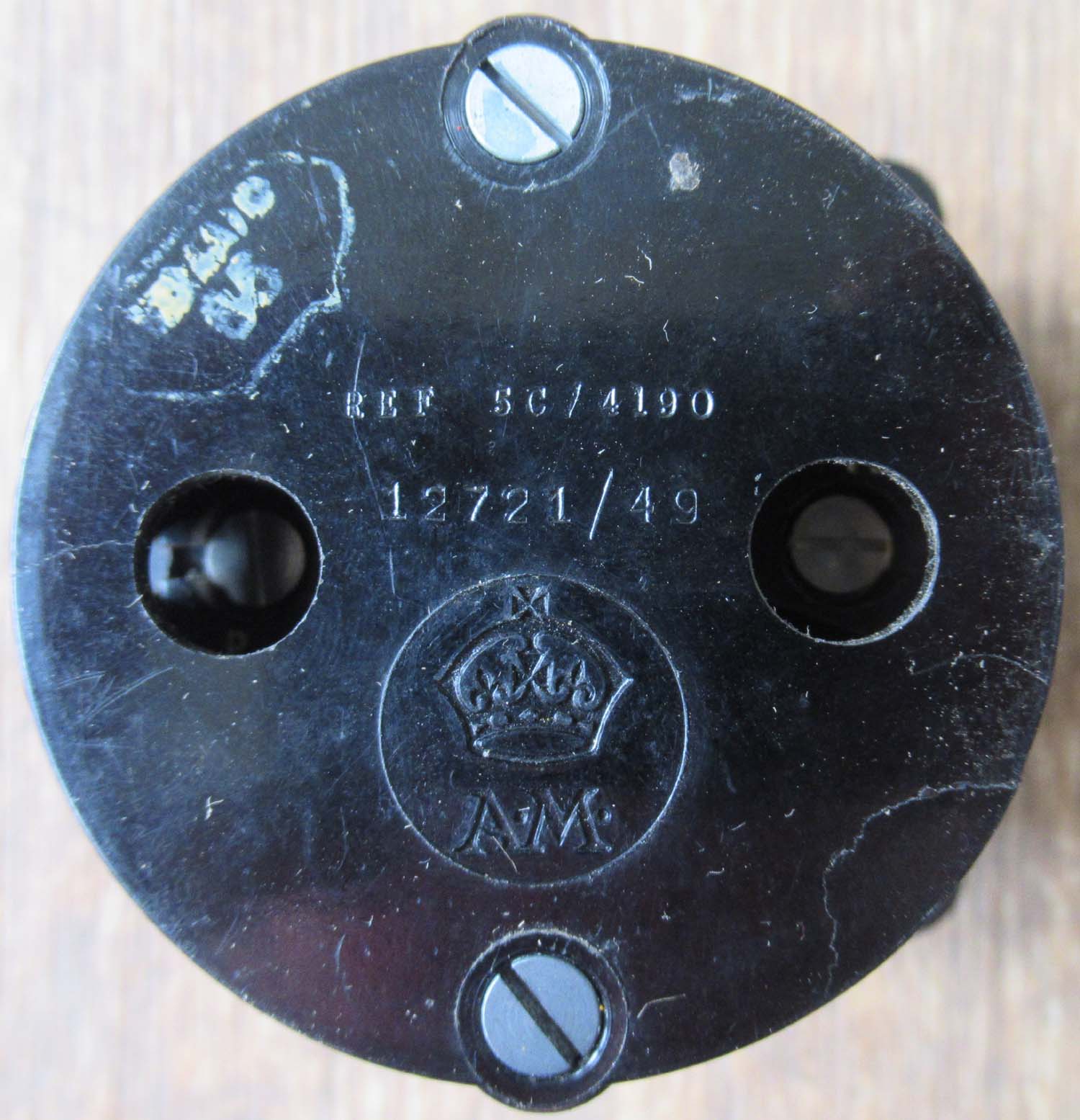
Seen above in the Hawker
Cockpit Typhoon in Duxford. Enlarge the picture for a better
view.
£120


|
|
Click on pictures to enlarge

 |
MKI Fuel
Pressure Switch Unit 6A/1034 (No
42 pg1 Fuel)
Here is a new old stock MKI
fuel pressure switch in
its original box. Comes with its original copper washers. Appears unused .
MK I
6A/1034
Dated 1943
Click on pictures to enlarge




Out of
stock more wanted please
contact me |
|
Click on pictures to enlarge
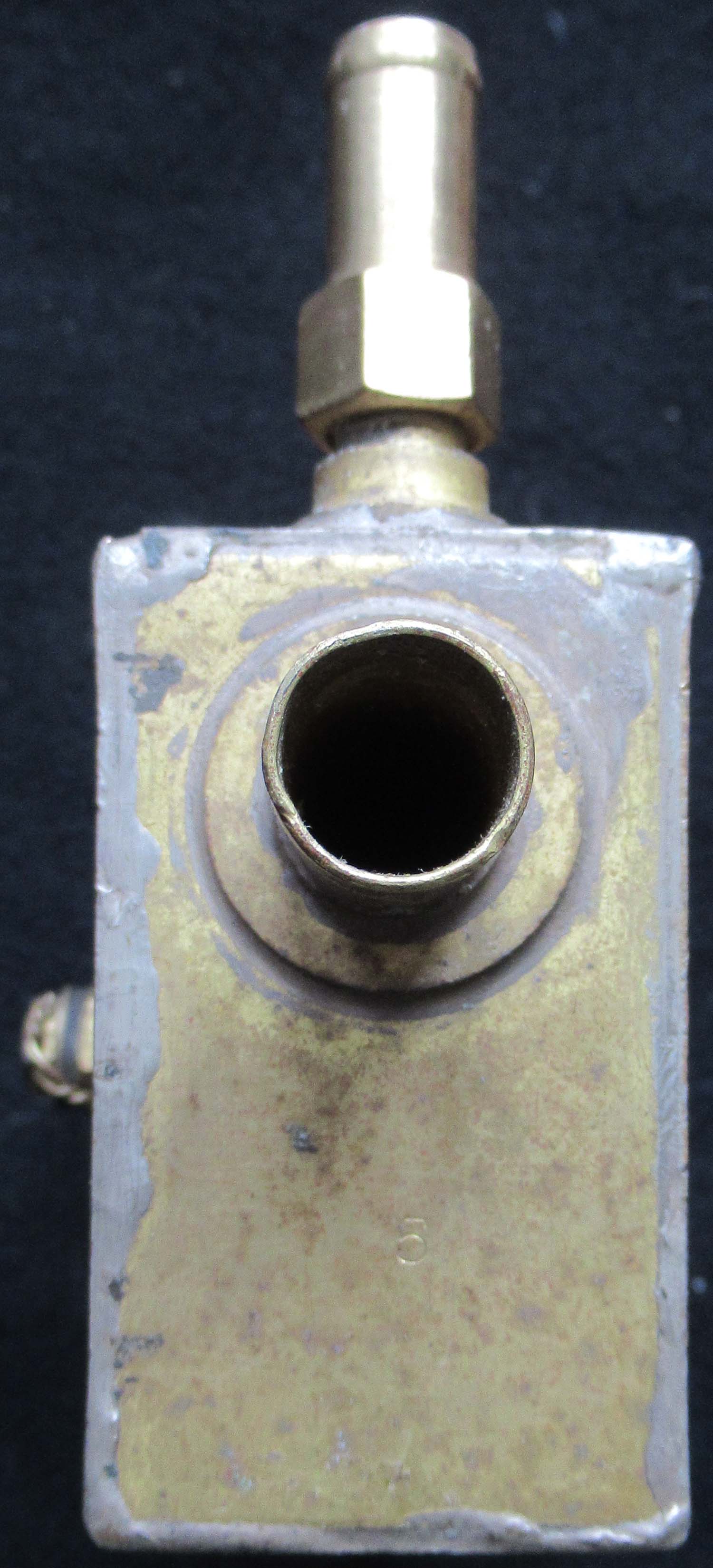
|
Spitfire Oil And Water Trap 37 J/30 (No 41 pg1 Fuel)
Here is an oil and water trap
as fitted to the firewall of the Spitfire, Hurricane, and
probably most of the other Merlin powered aircraft.
In good
original condition polished up makes a great identifiable
display item.
Click on pictures to enlarge
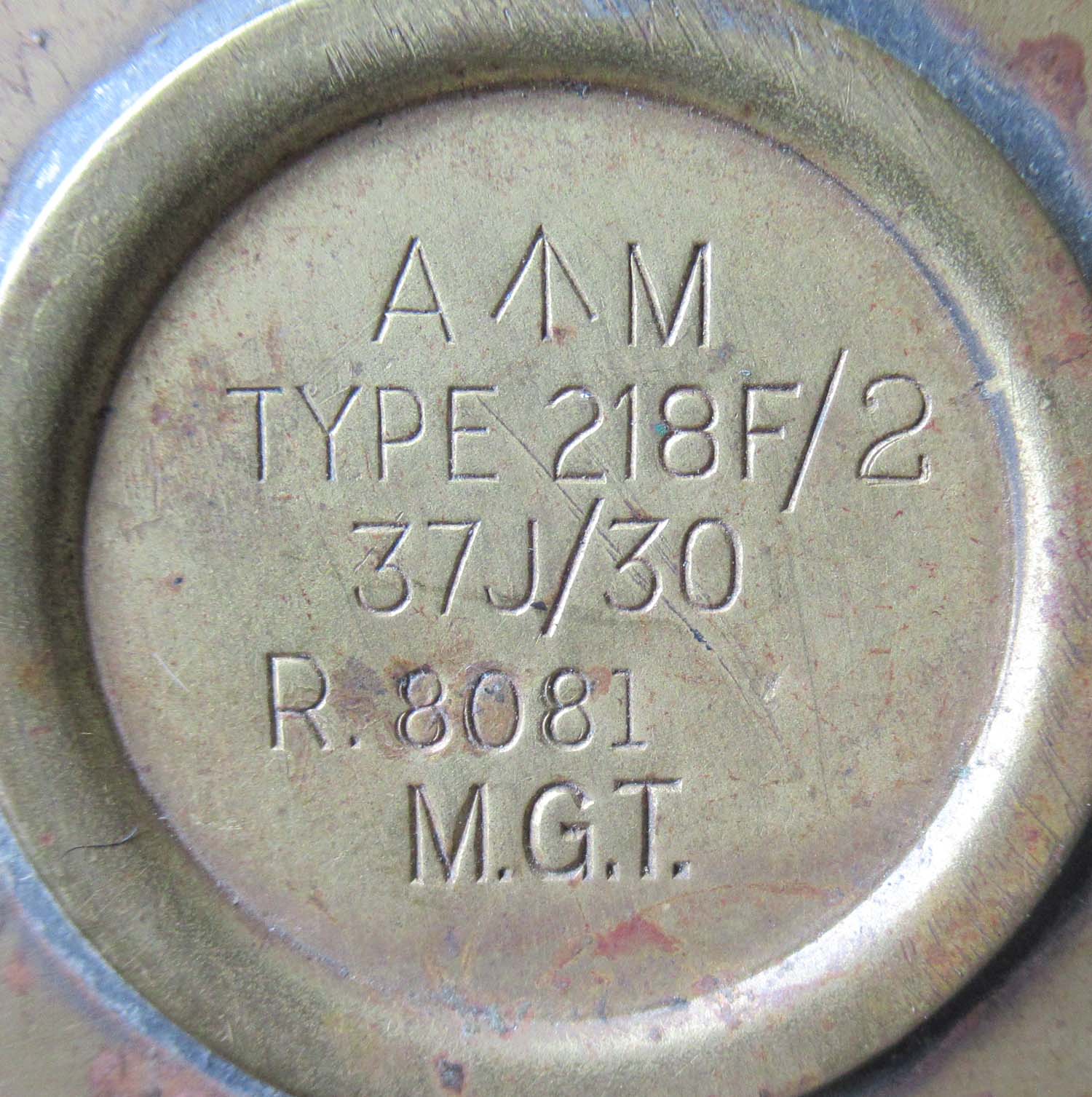
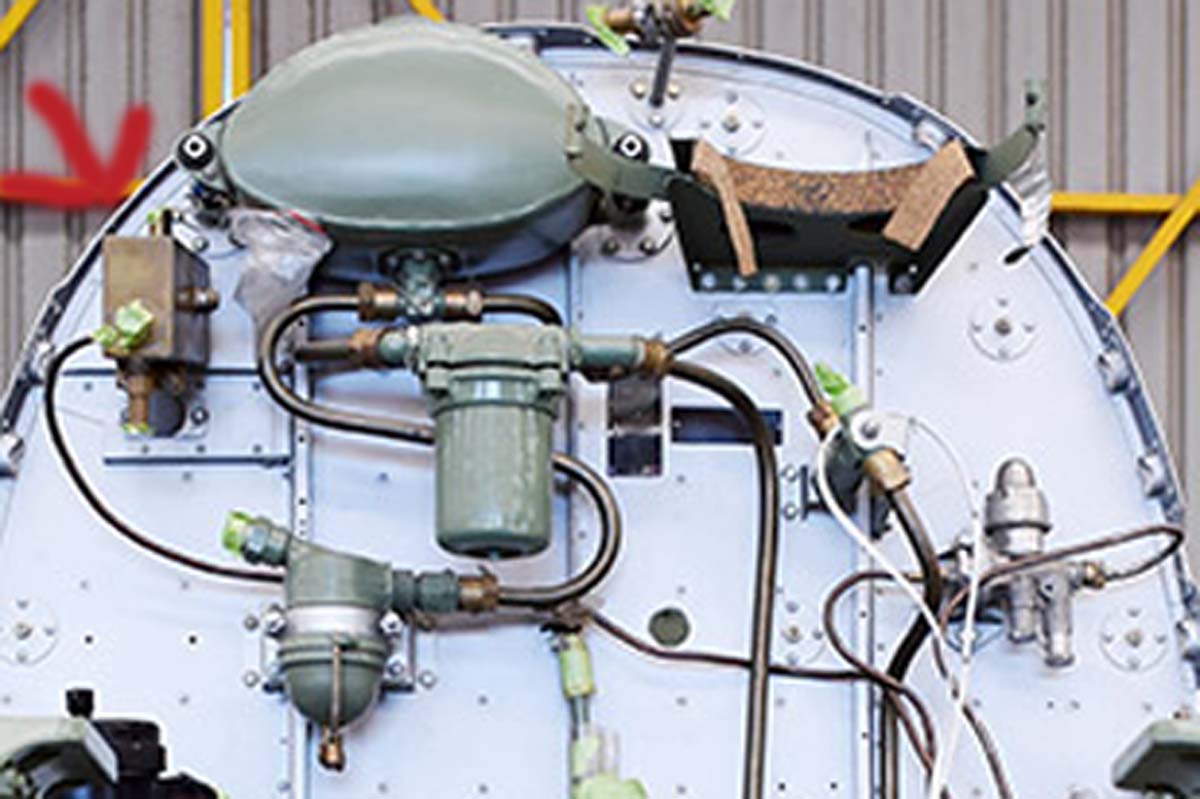

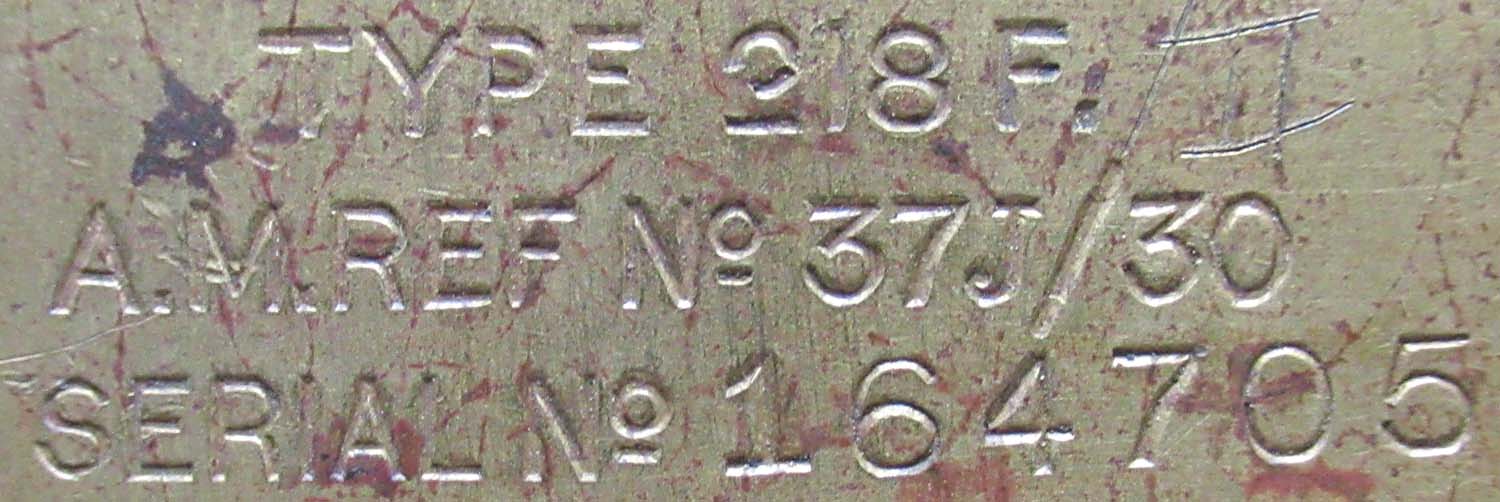
Three available
£275 each


|
|
Click on pictures to enlarge
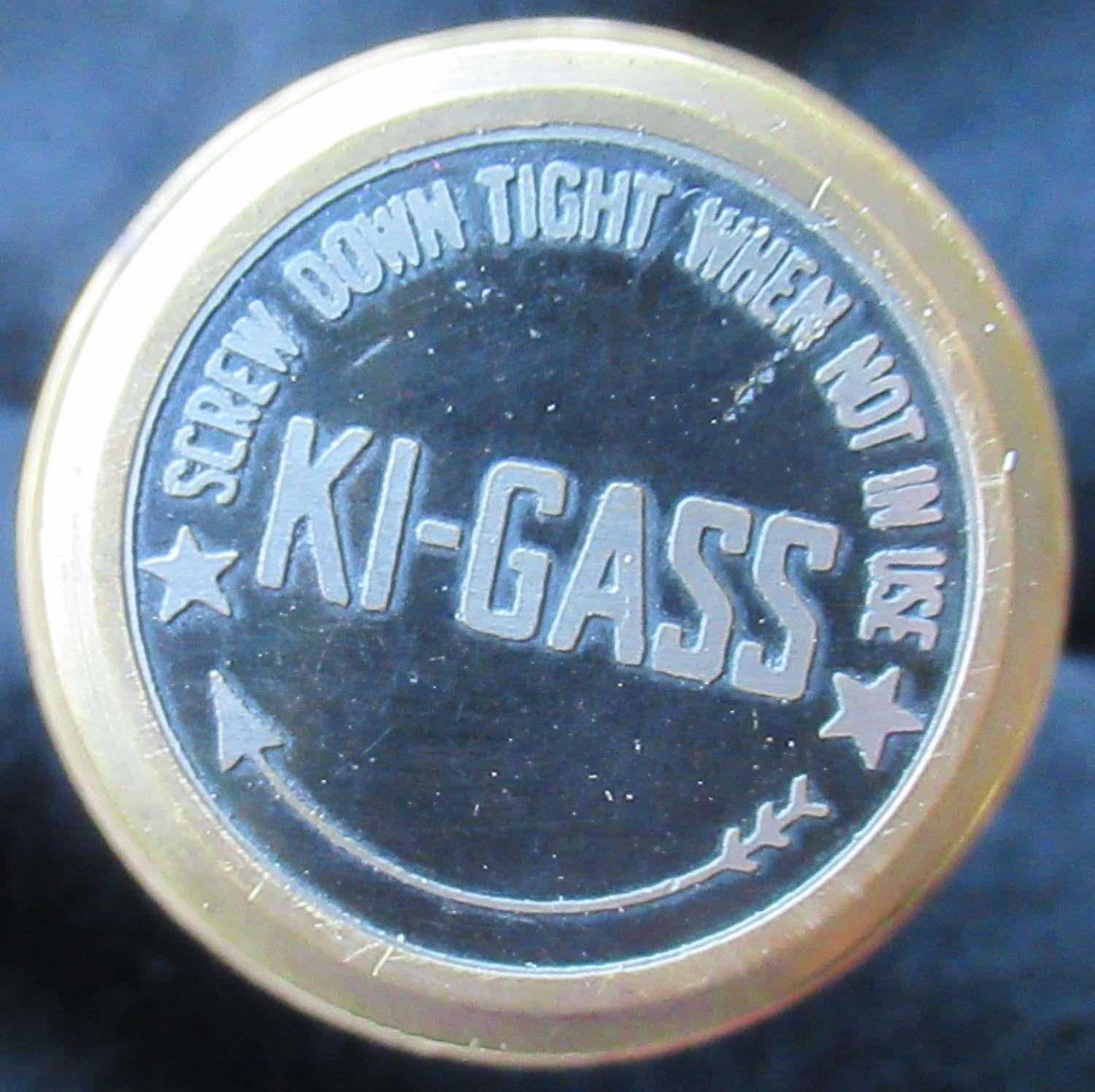

|
KI Gass Fuel Priming Pump (No 39 pg1 Fuel)
This is a peace that is
getting hard to find and I have not had one listed for a
while. Its in superb condition and the seals still feel
tight.
Fitted to Spitfires, Hurricanes
and other RAF wartime aircraft it pumps neat fuel
directly into the Merlin engine for cold starting. It is
complete and undamaged. Used in every Merlin Powered
Spitfire.
Dated 1945
Click on pictures to enlarge




Seen above far right
fitted in a Spitfire Cockpit
Out of
stock more wanted please
contact me
|
|
Click on pictures to enlarge
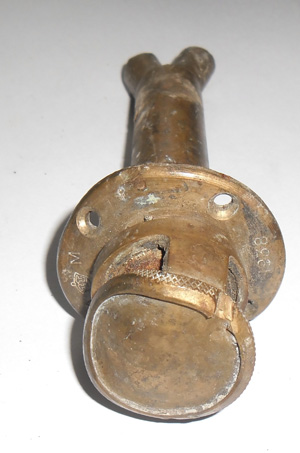
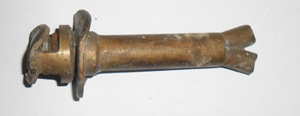 |
Bristol Blenheim R3912 KI Gass
(No 38 pg1 Fuel) This is a great recognizable
piece from Blenheim R3912 the K Gass pump used to prime the
engine before starting in great shape. Unusually in the Blenheim
the primer pumps are located in the engine nacelles and operated
from the ground.
Dated 1938
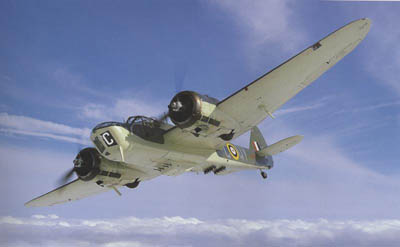
You can see details of this aircrafts recovery
on this
link
£375


|
|
Click on pictures to enlarge
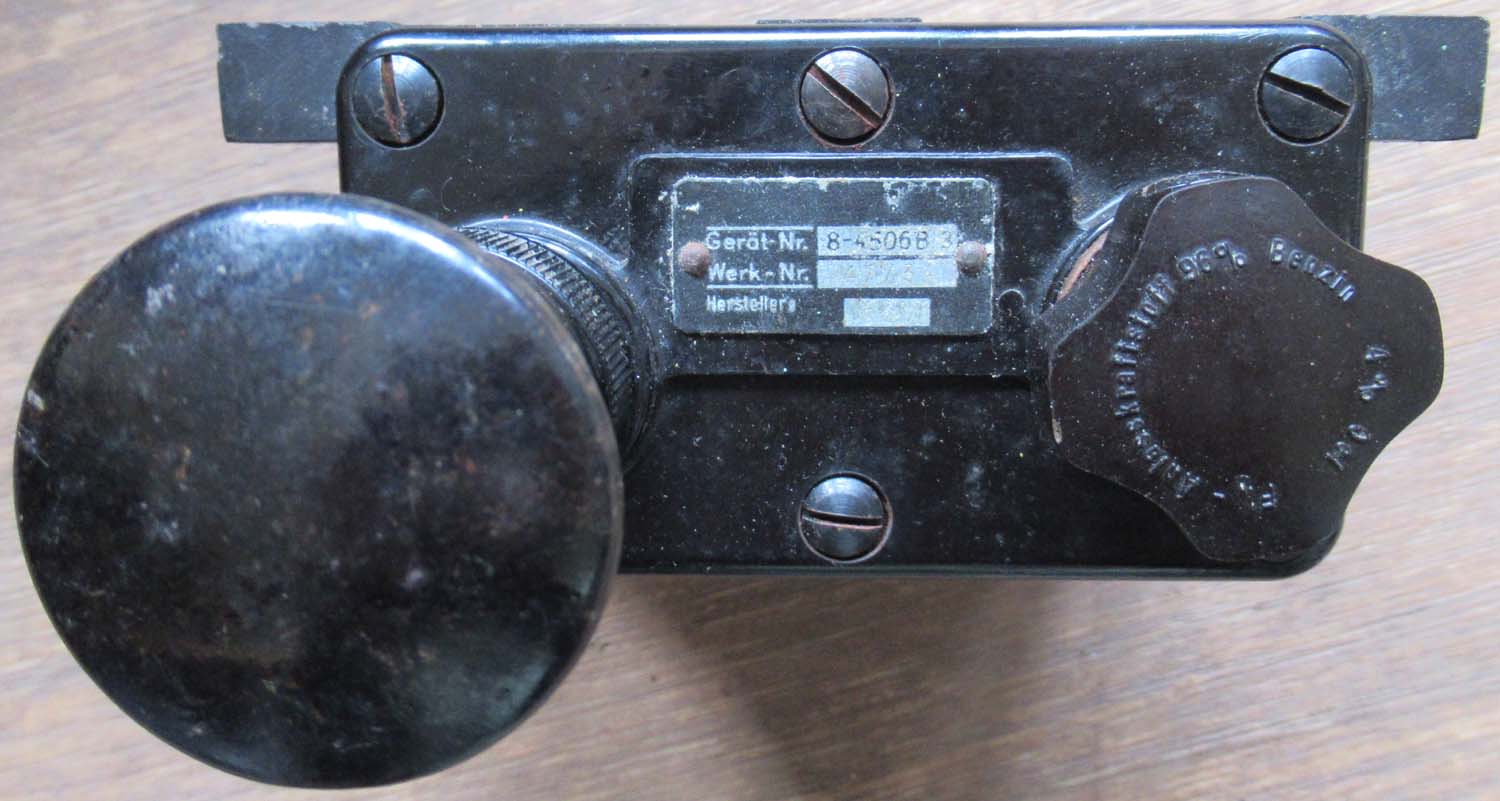
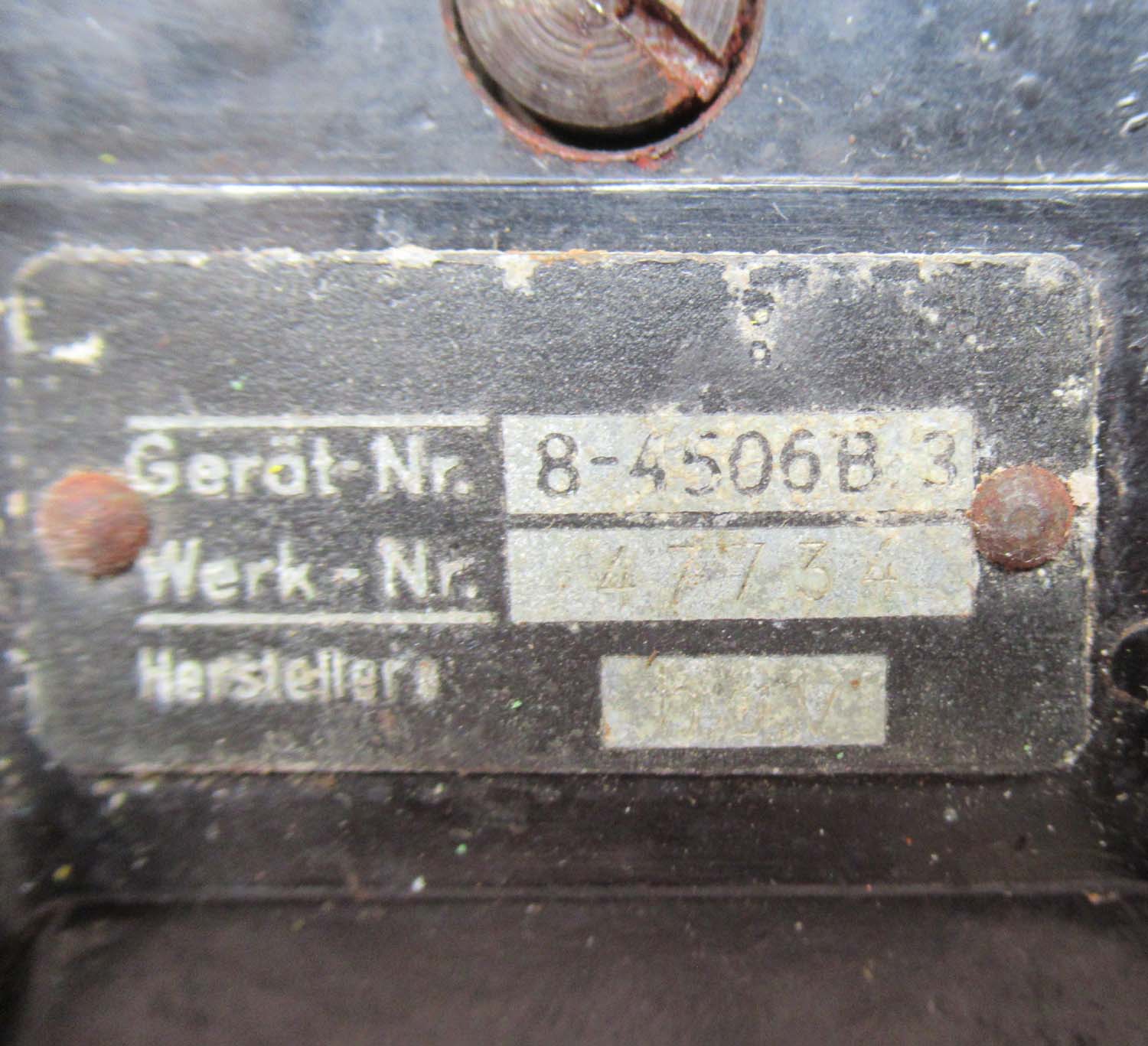
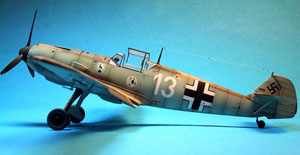
Seen in situ
(below)
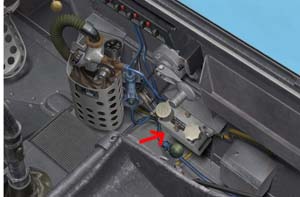
Seen in situ
(below) marked L in the
original 109E pilots notes
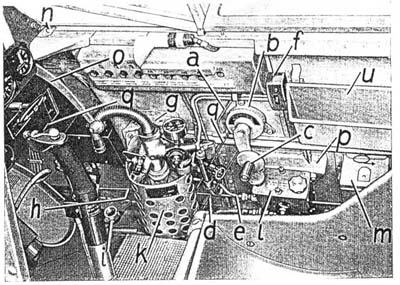 |
Messerschmitt BF 109 E Fuel
Priming Pump (No 37 pg1 Fuel)
Here is an extremely rare
fuel priming pump as fitted to the BF109 E. There is no
damage or chips to the case and the pump moves up and down
without any resistance. This piece also appears to be
fitted to the BF 110 and a similar version also appears in
the FW 190.
The Bf 109E was the standard Luftwaffe fighter at the start
of the Second World War. It was the only single engine
Luftwaffe fighter in use during the Battle of Britain, Like
all early versions of the 109, it was relatively short
lived, being replaced by the 109F in 1941.
The 109E was the first version of the fighter to be based
around the Daimler Benz 601 engine, giving it significantly
superior performance to the earlier Jumo 210 powered
machines. Its top speed rose by 60 miles per hour, its
service ceiling by nearly 5000 feet! The DB 601 engine used
direct fuel injection instead of a carburettor, meaning that
it performed much better under negative G than the Spitfire
or Hurricane, or than earlier models of the 109 (apart from
the 109C, which has a similarly designed Jumo 210G engine).
Work on the 109E began in the summer of 1938. The first
prototype of the new variant, the 109V-14, flew then. It was
powered by the DB 601A engine, and armed with two
nose-mounted MG 17s and two wing mounted MG/FF cannon. A
second prototype, the V-15, soon followed, this time armed
with a single nose-mounted cannon.
Production of the Bf 109E-1 was delayed by problems with the
DB601 engine. The pre-production E-0s were ready by December
1938, by which point complete 109E-1 airframes were being
made. However the engine did not appear until the spring of
1939. This partly explains the sudden rapid appearance of
the 109E in Luftwaffe service over the summer of 1939 – all
that was left to do was fit the engine to the aircraft. 850
Bf 109E-1s were delivered in the first eight months of 1939,
in time for the outbreak of war.
Click on pictures to enlarge
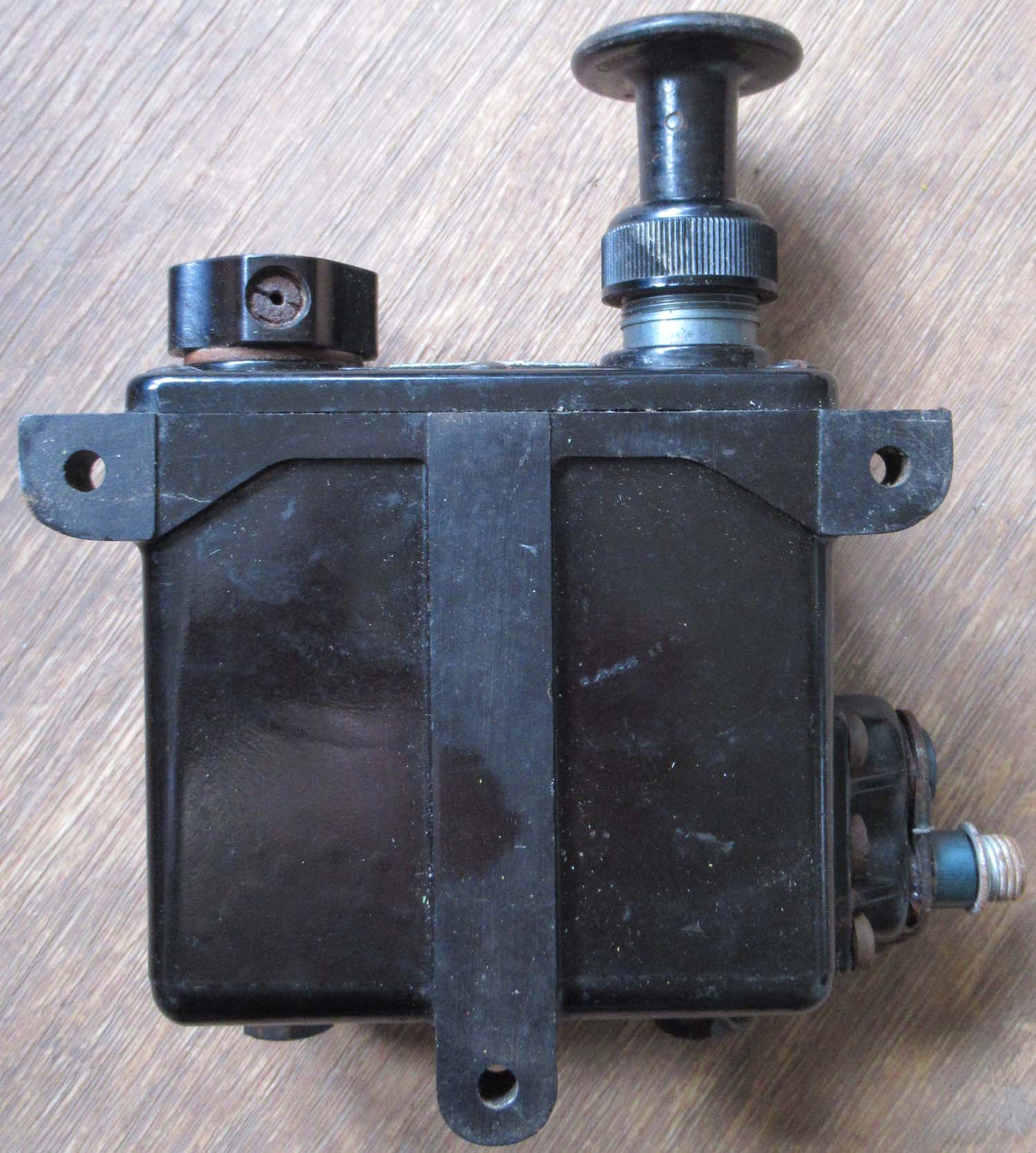
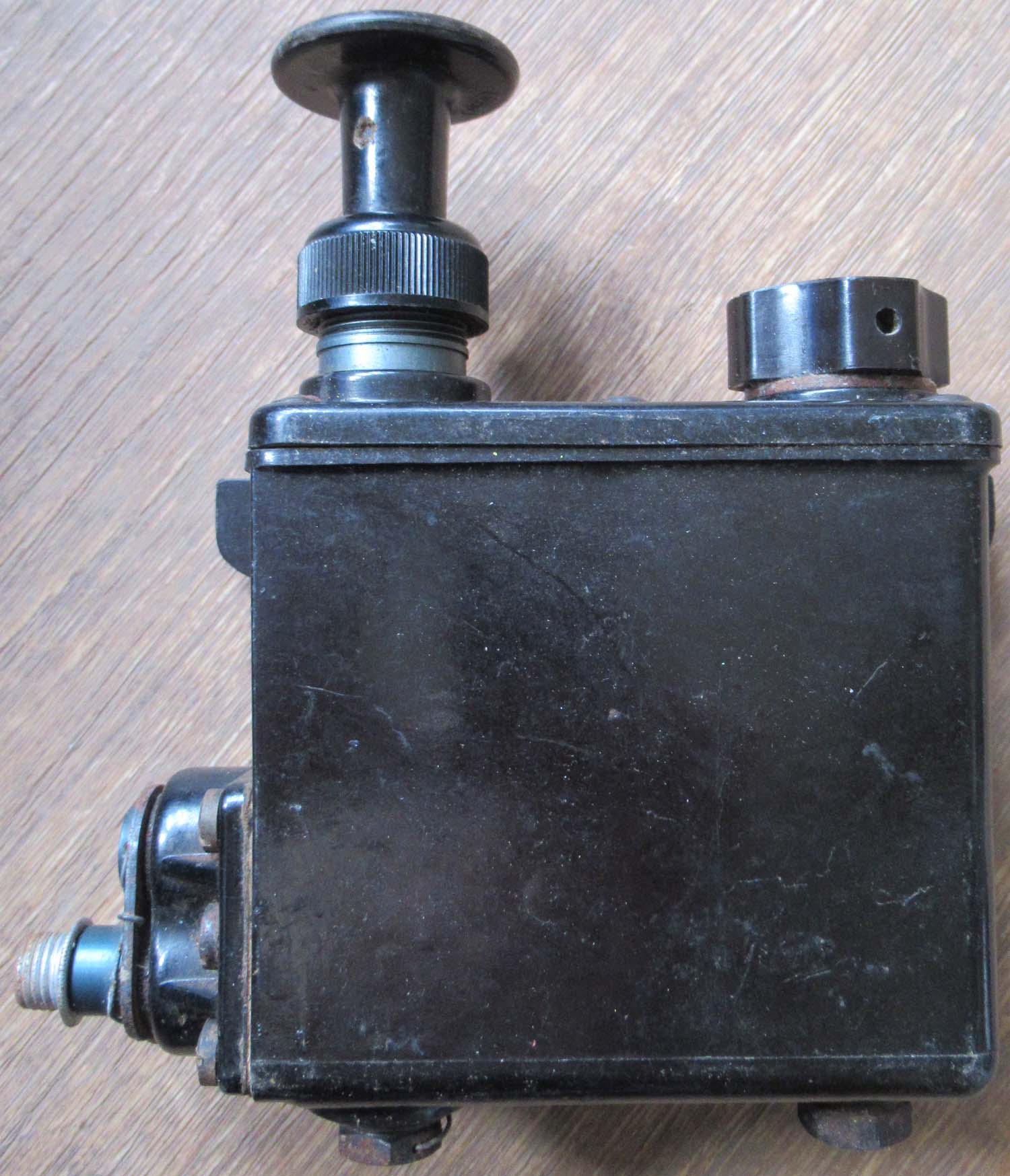
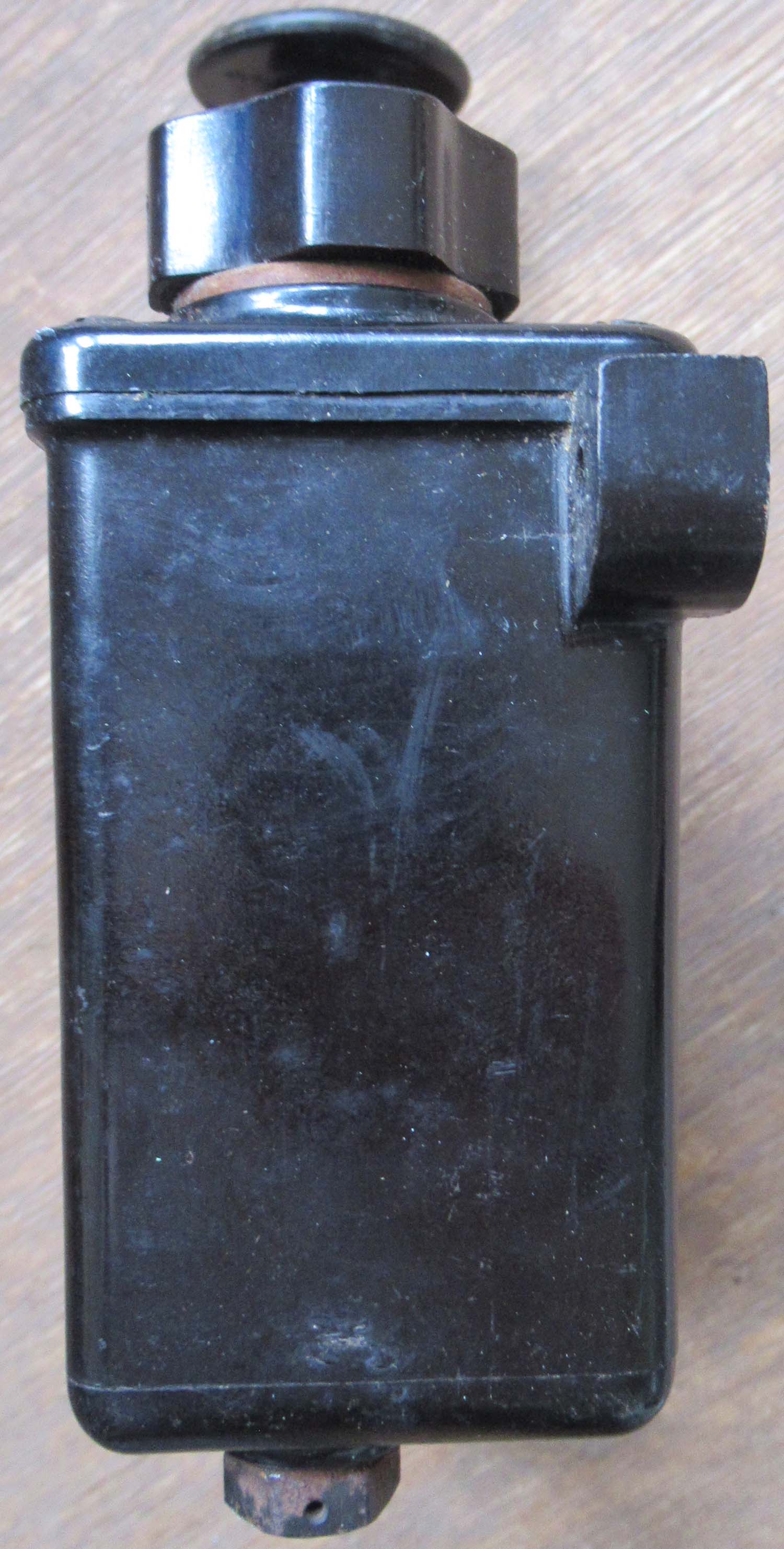
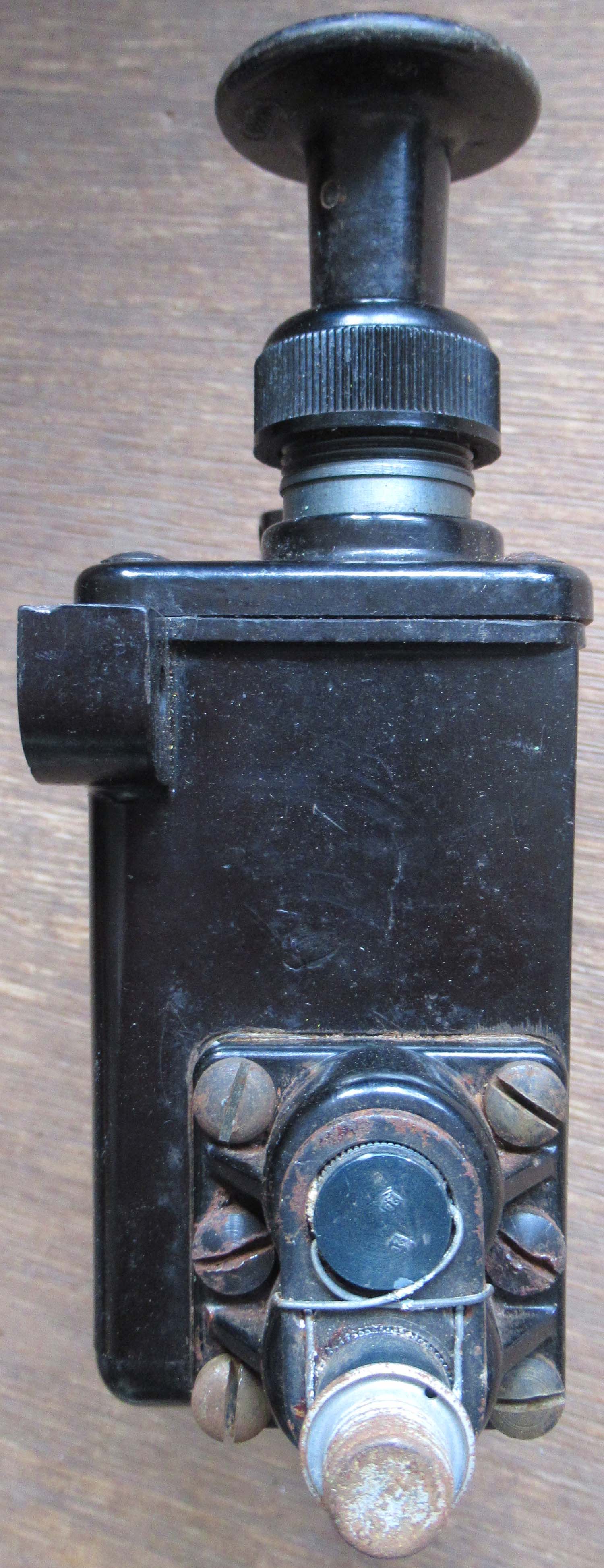
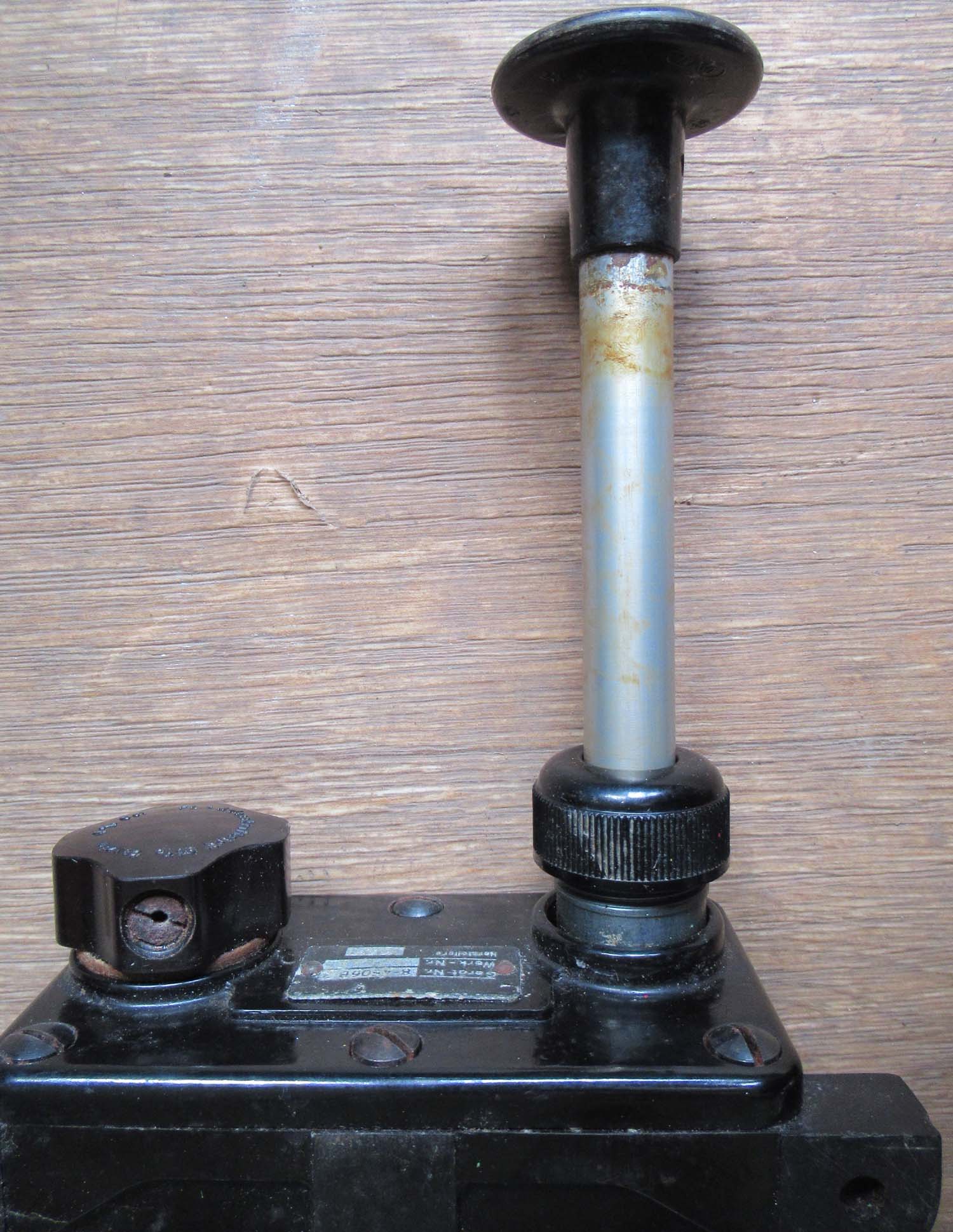
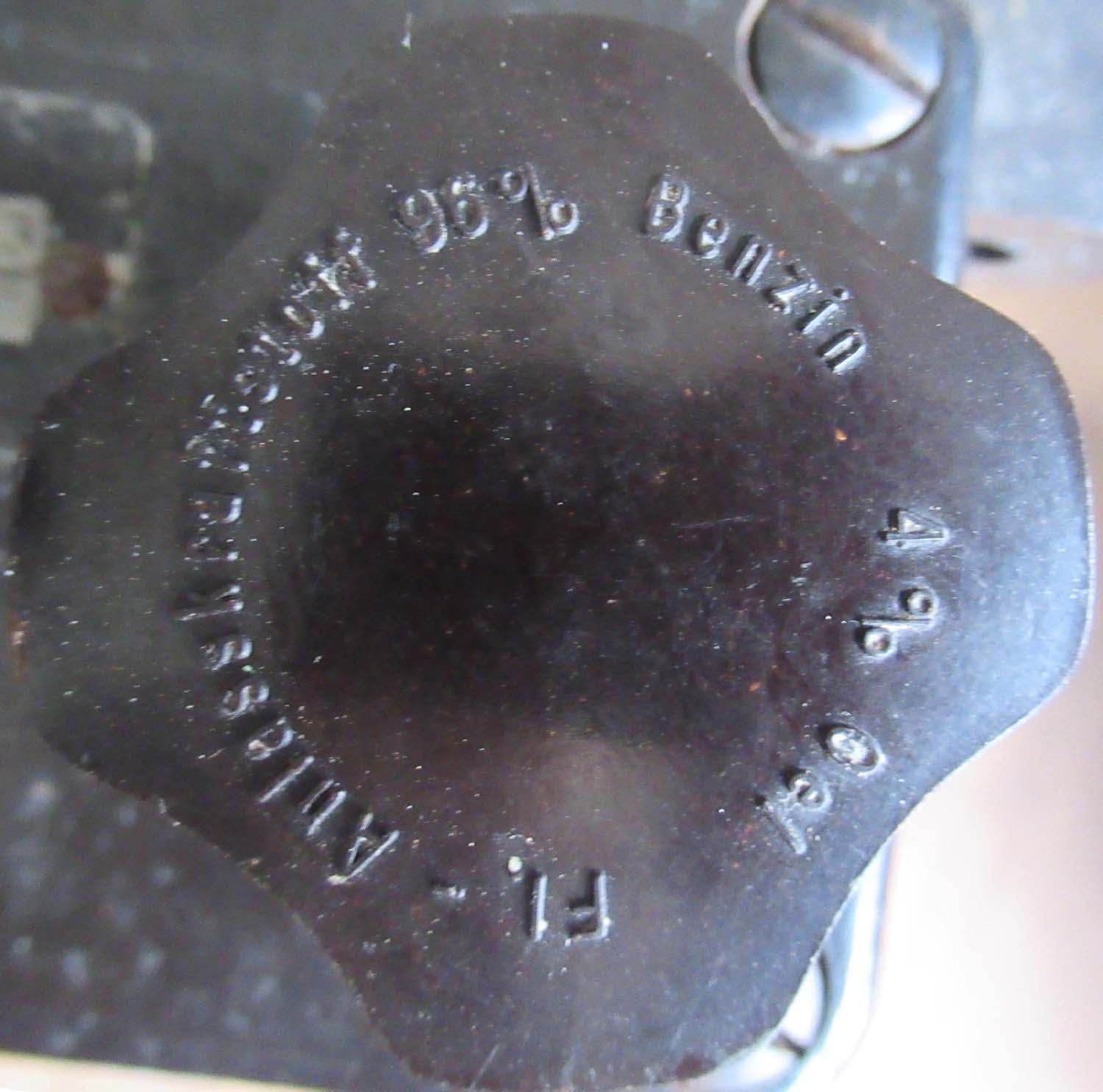
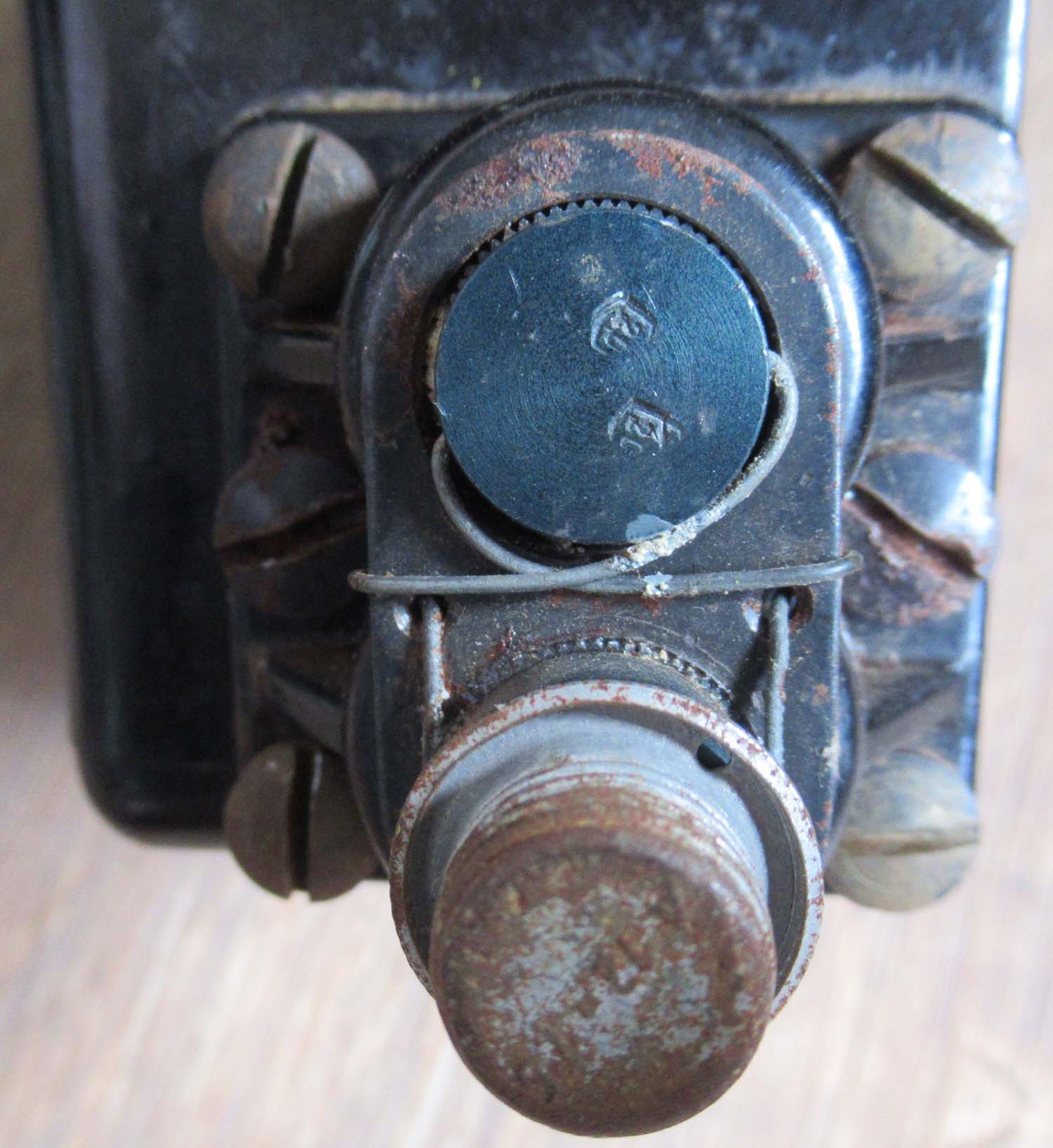
£1200


|
|
Click on pictures to enlarge
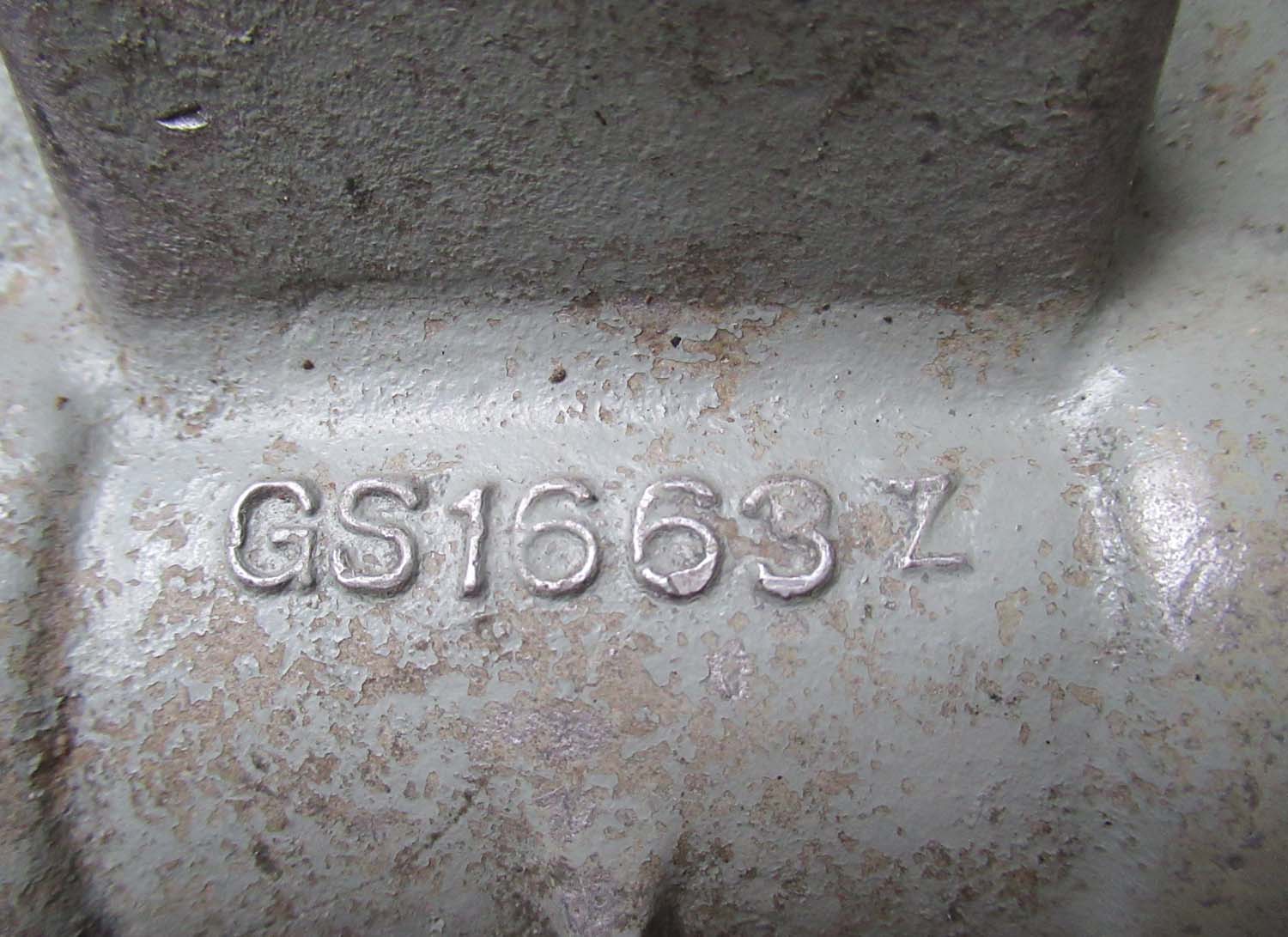
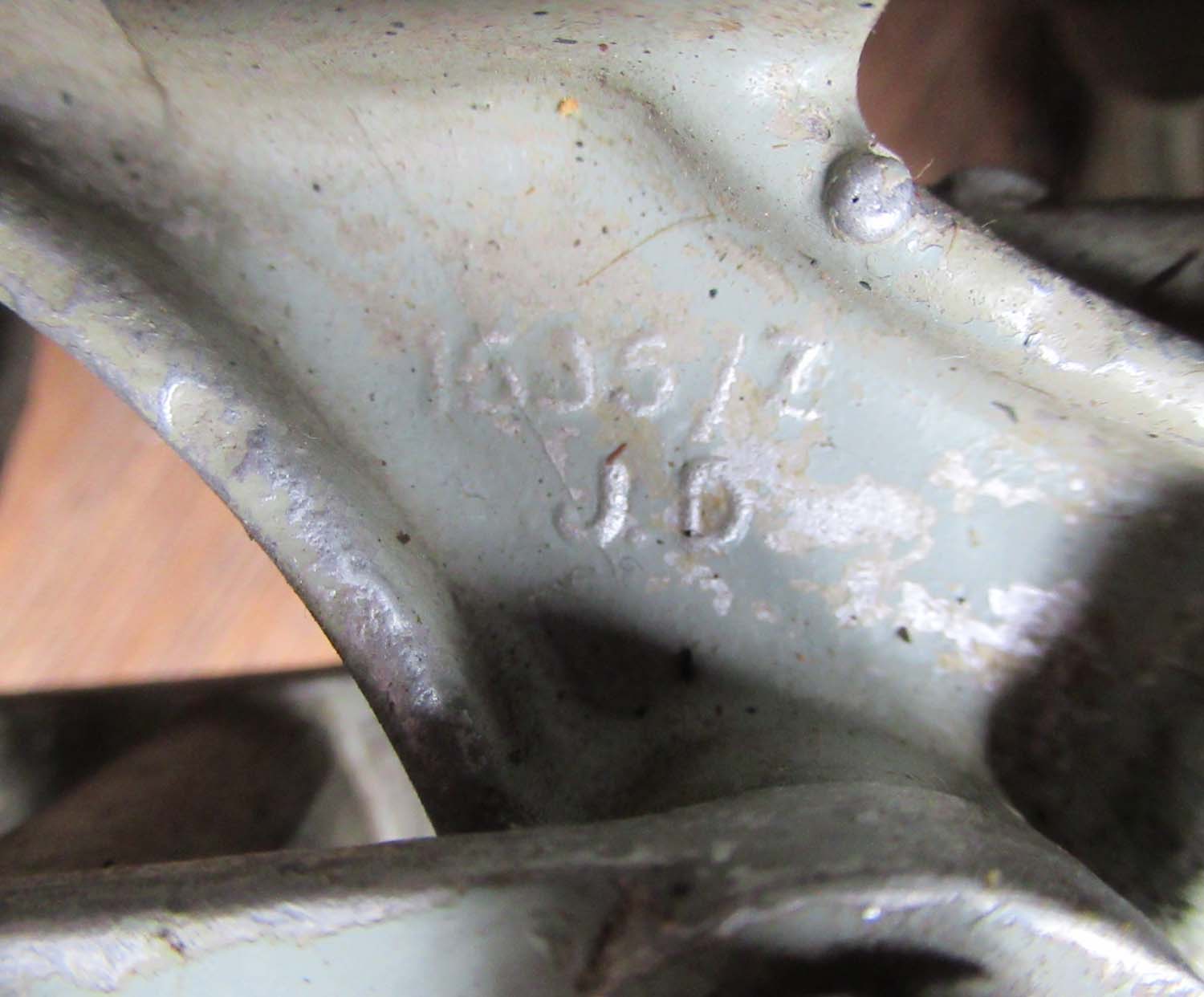
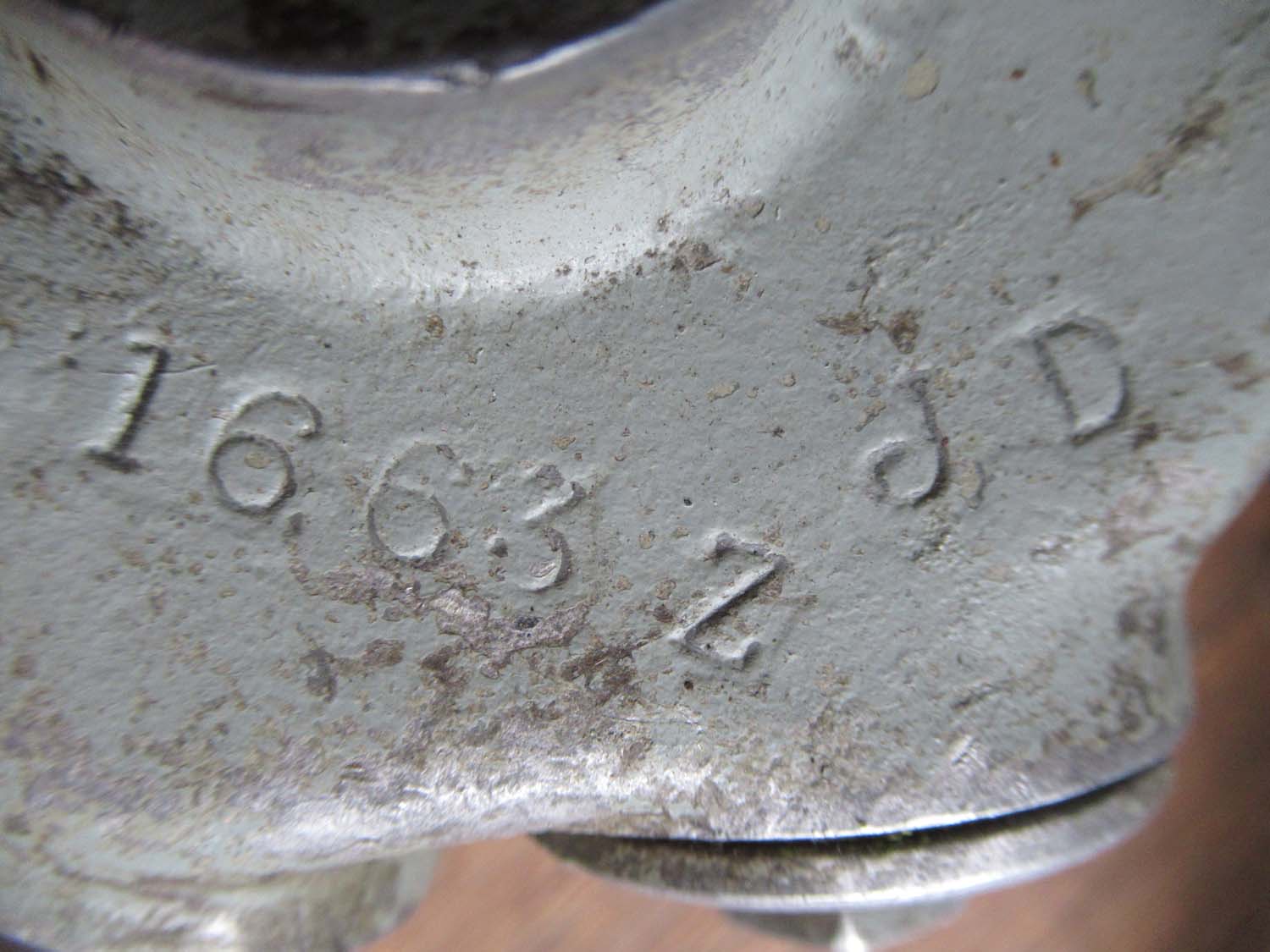
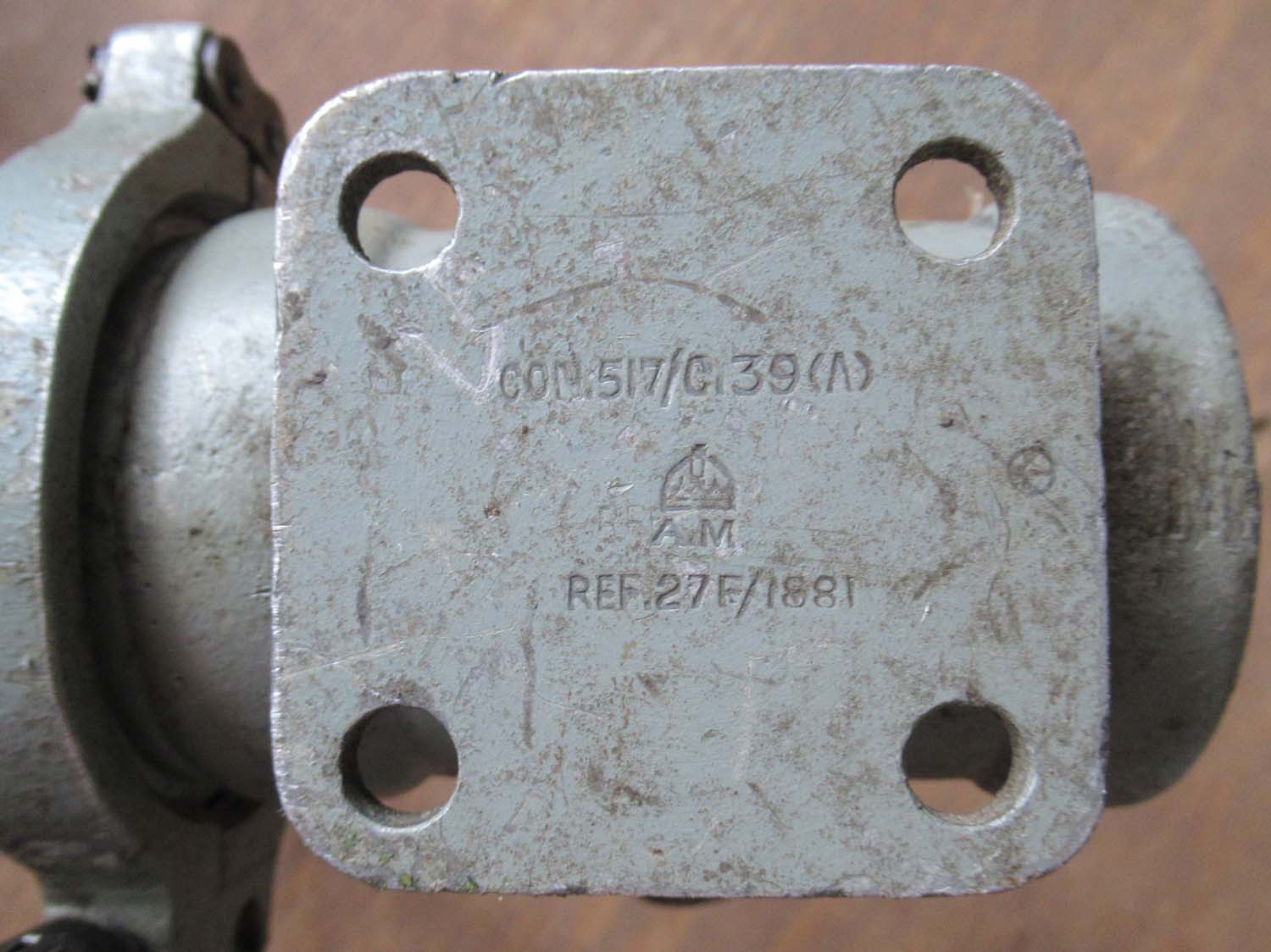 |
1939 Fuel Transfer
Pump (No 36 pg1 Fuel)
This is a very nice fuel
transfer pump, dated 1939.
The reference code of
27F identifies it as airborne fuel equipment and so was
definitely fitted to an aircraft. Fuel transfer pumps were
only required in bombers or larger aircraft to stabilise the
aircraft as fuel was used.
So far I have been unable to
identify the specific aircraft it was used in but there were
a limited number of aircraft which were in service with the
RAF in 1939. It may have been used in more that one aircraft
type but a definite contender is the Short Sunderland flying
boat that had mechanical fuel transfer pumps as a back up to
the electrical ones. This aircraft stayed in the air for
very long periods and carried a huge fuel load which would
need to be moved around the aircrafts various fuel tanks to
maintain stability in the air.
It is of course quite
possible this was fitted to a Wellington or Hampton which
were also operational in 1939.
GS1663Z
Ref: 27F/1881
Click on pictures to enlarge
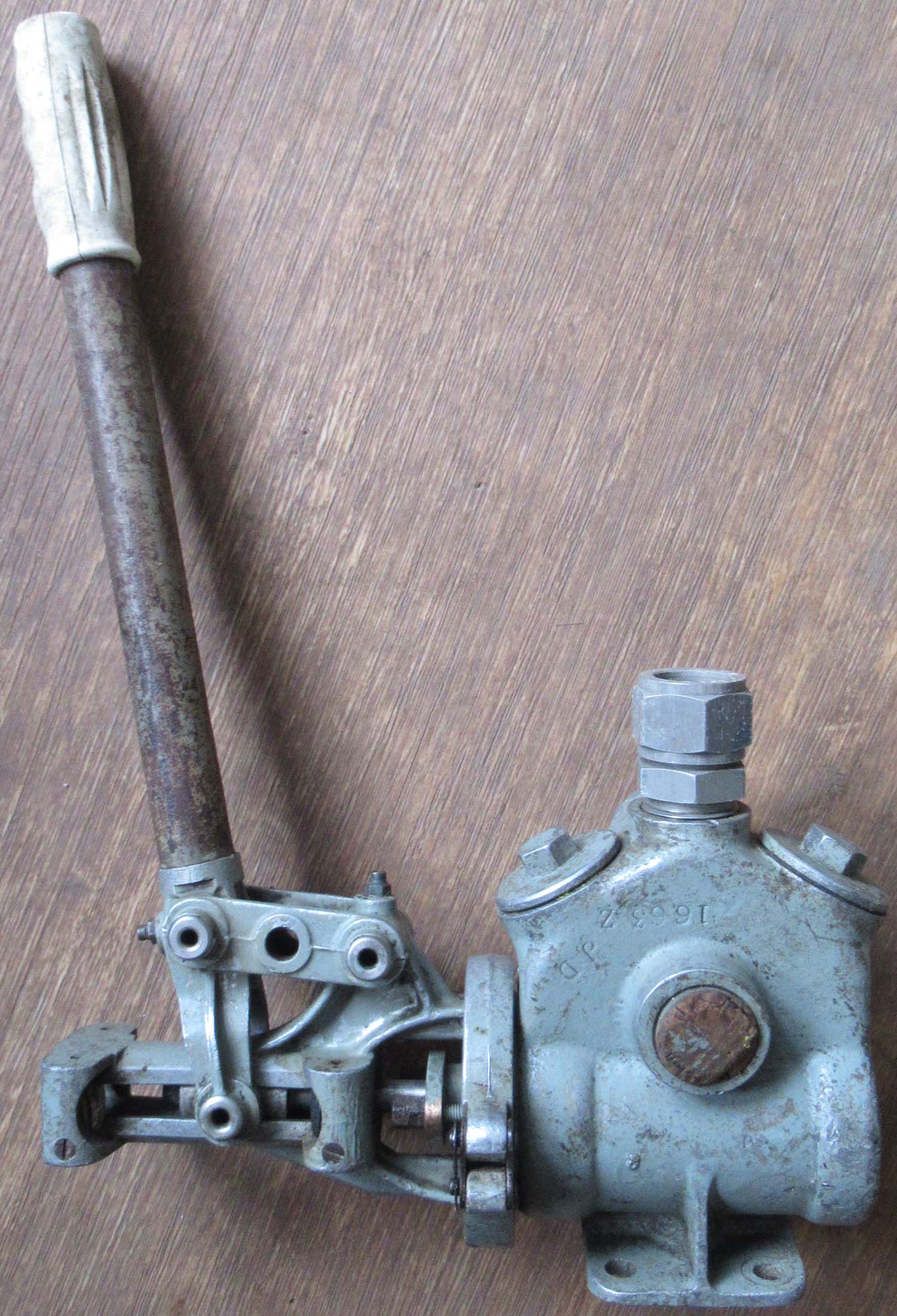
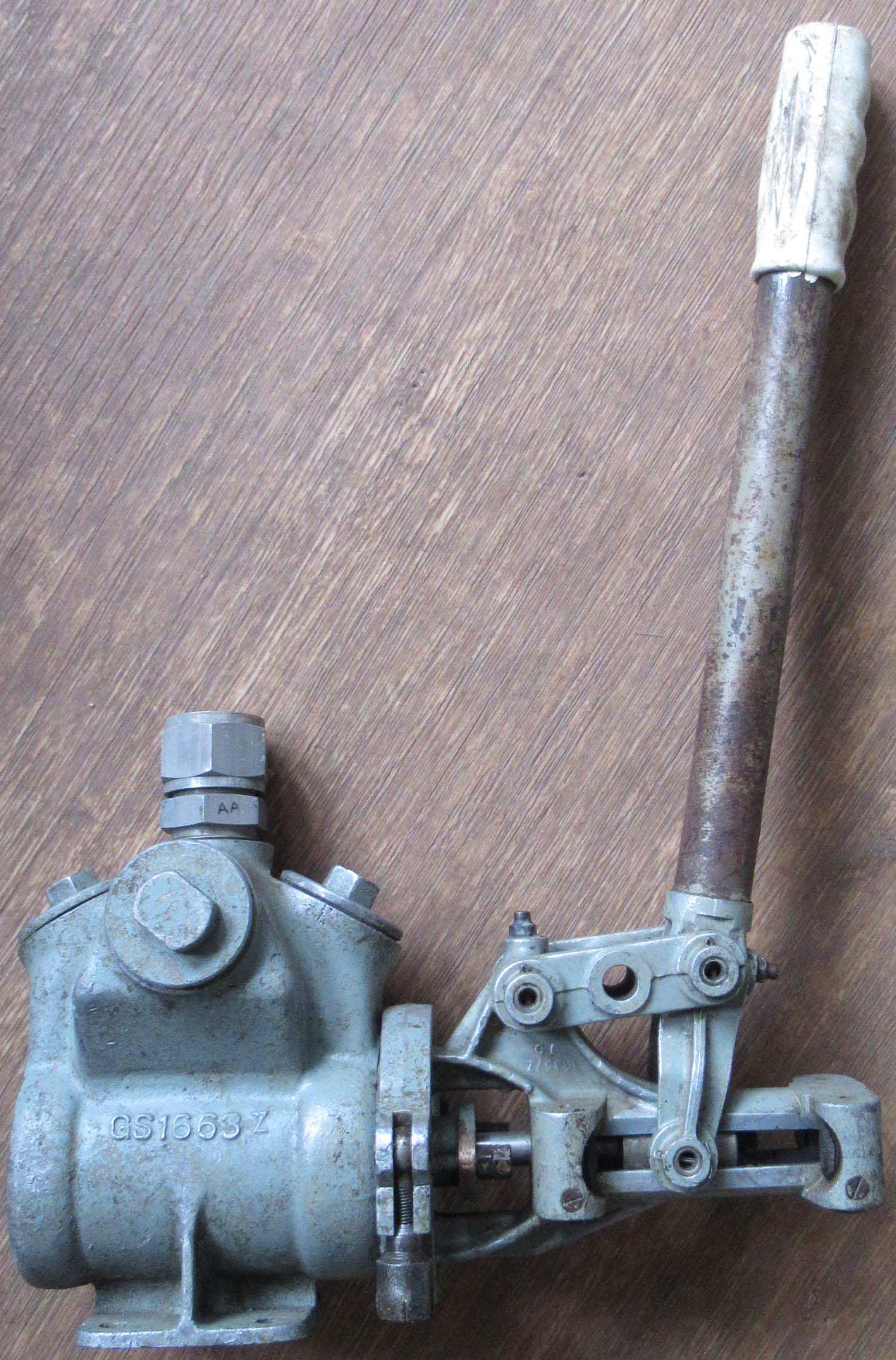
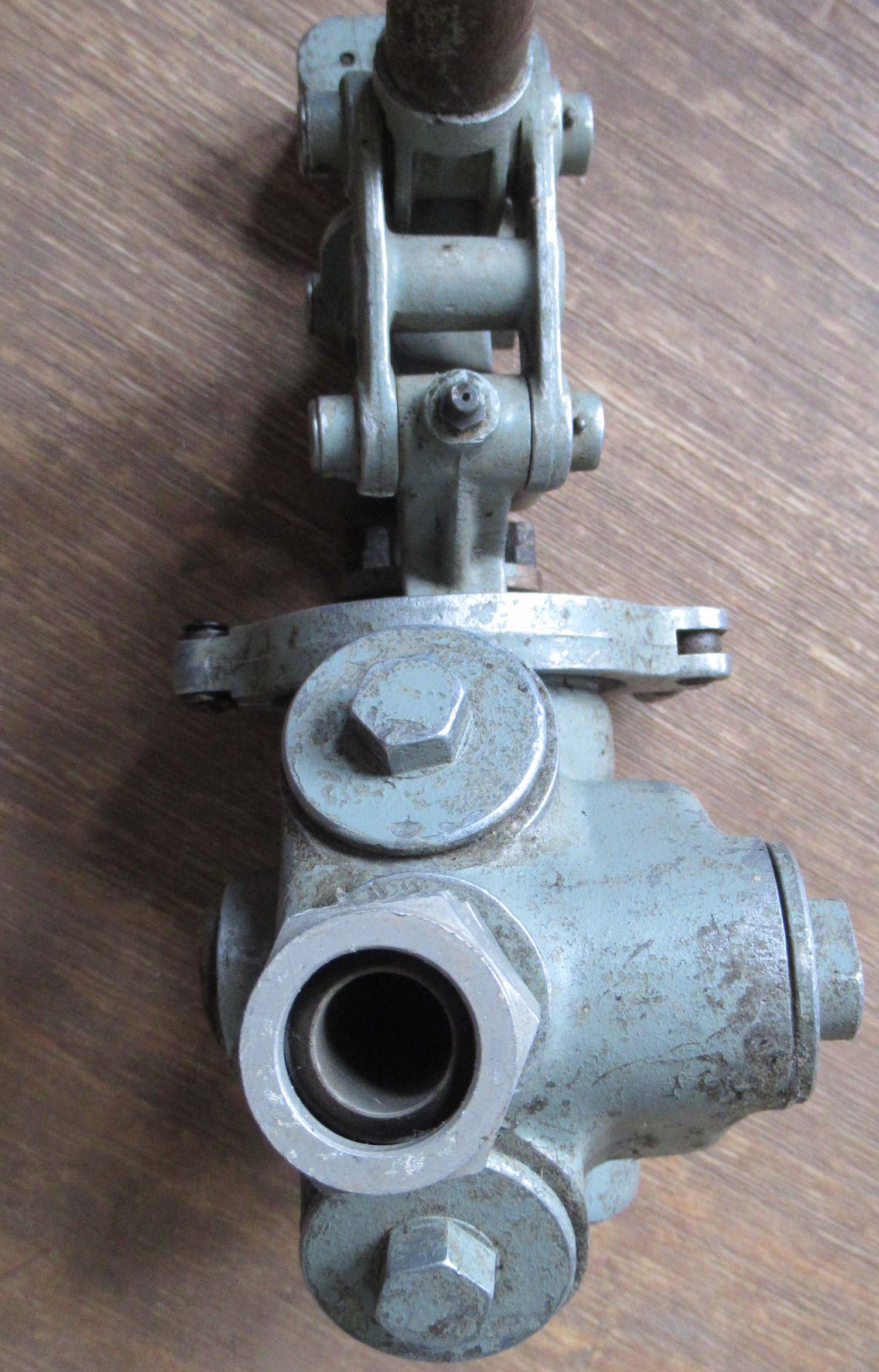
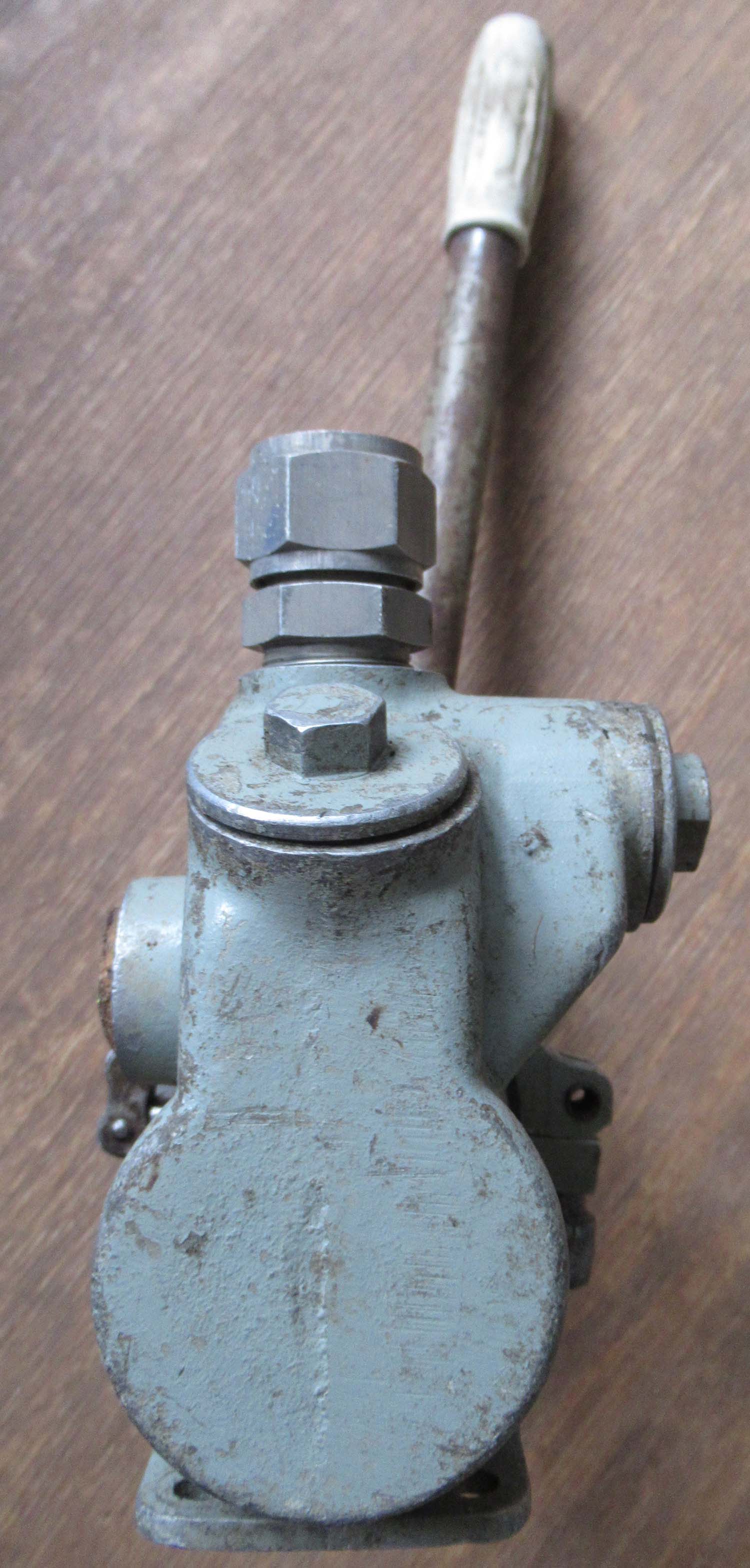
£475


|
|
Click on pictures to enlarge
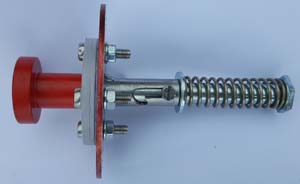
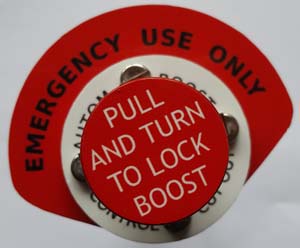
Out of
stock, more always wanted
please contact me
|
Hawker Hurricane Emergency Boost Control 1 (No 35 pg1
Fuel)
This is a superb quality reproduction of the Hurricane emergency boost control.
Used
to give maximum boost in combat situations the engine could
only withstand a limited time of this before being
destroyed. In twenty years I have never seen an original.
These pieces were fitted with slightly different variations
in colour and we have all three available. The knob
functions as it was originally designed.
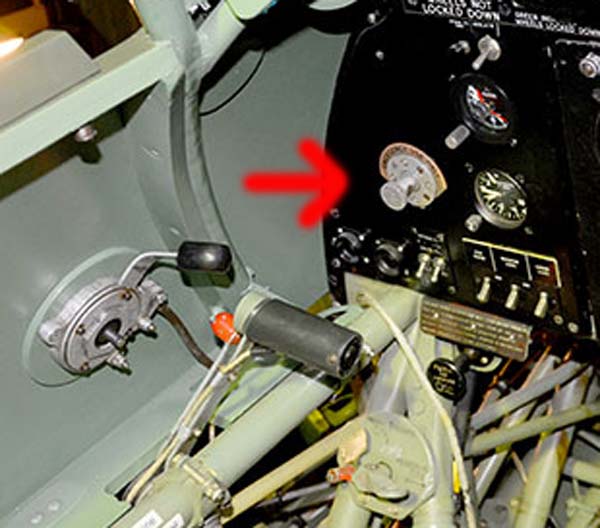
Seen in
situ above in the Hurricane cockpit
|
|
Click on pictures to enlarge
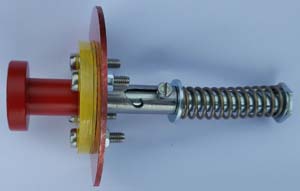
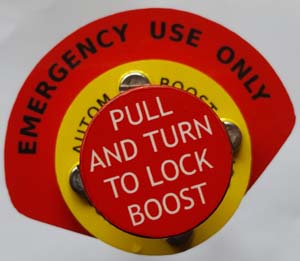
|
Hawker Hurricane Emergency Boost Control 2 (No 34 pg1
Fuel)
This is a superb quality reproduction of the Hurricane emergency boost control.
Used
to give maximum boost in combat situations the engine could
only withstand a limited time of this before being
destroyed. In twenty years I have never seen an original.
These pieces were fitted with slightly different variations
in colour and we have all three available. The knob
functions as it was originally designed.
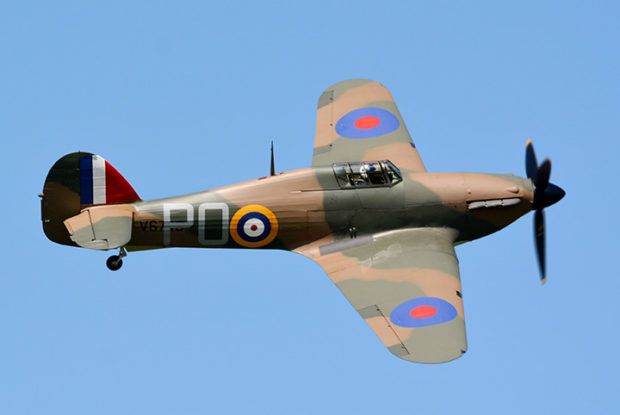
Out of stock more required please
contact me |
|
Click on pictures to enlarge
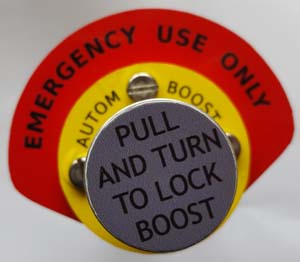
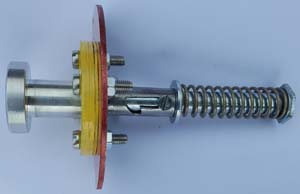
|
Hawker Hurricane Emergency Boost Control 3 (No 33 pg1
Fuel)
This is a superb quality reproduction of the Hurricane emergency boost control.
Used
to give maximum boost in combat situations the engine could
only withstand a limited time of this before being
destroyed. In twenty years I have never seen an original.
These pieces were fitted with slightly different variations
in colour and we have all three available. The knob
functions as it was originally designed.
Two available
£295 each


|
|
Click on pictures to enlarge
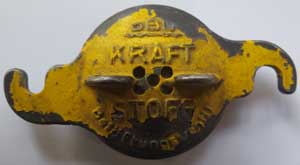
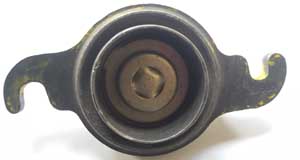
£295


|
BF 109 And FW 190 Fuel Cap (No 32 pg1 Fuel)
Here is stunning German aircraft fuel
cap in good condition. I believe these were fitted to the
BF 109 and FW 190. Still has some original paint.
36565
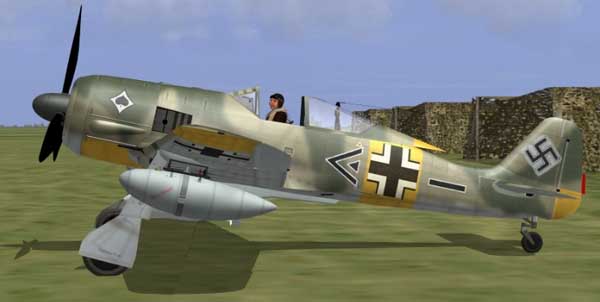
Above the FW
190
|
|
Click on pictures to enlarge
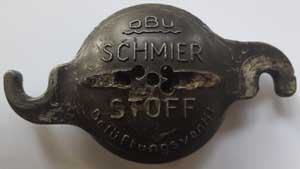
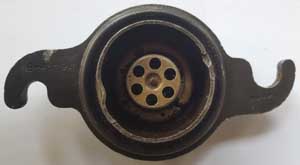
£295


|
BF 109 And FW 190 Oil Cap (No 31 pg1 Fuel)
Basically the same design as the
fuel cap. Here is the oil filler cap in good
condition.
8-4519A
54198
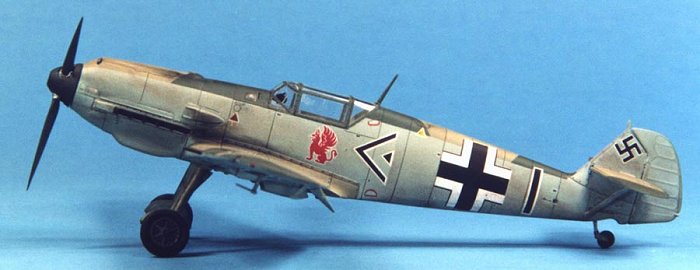
Above the
BF 109 E |
|
Click on pictures to enlarge
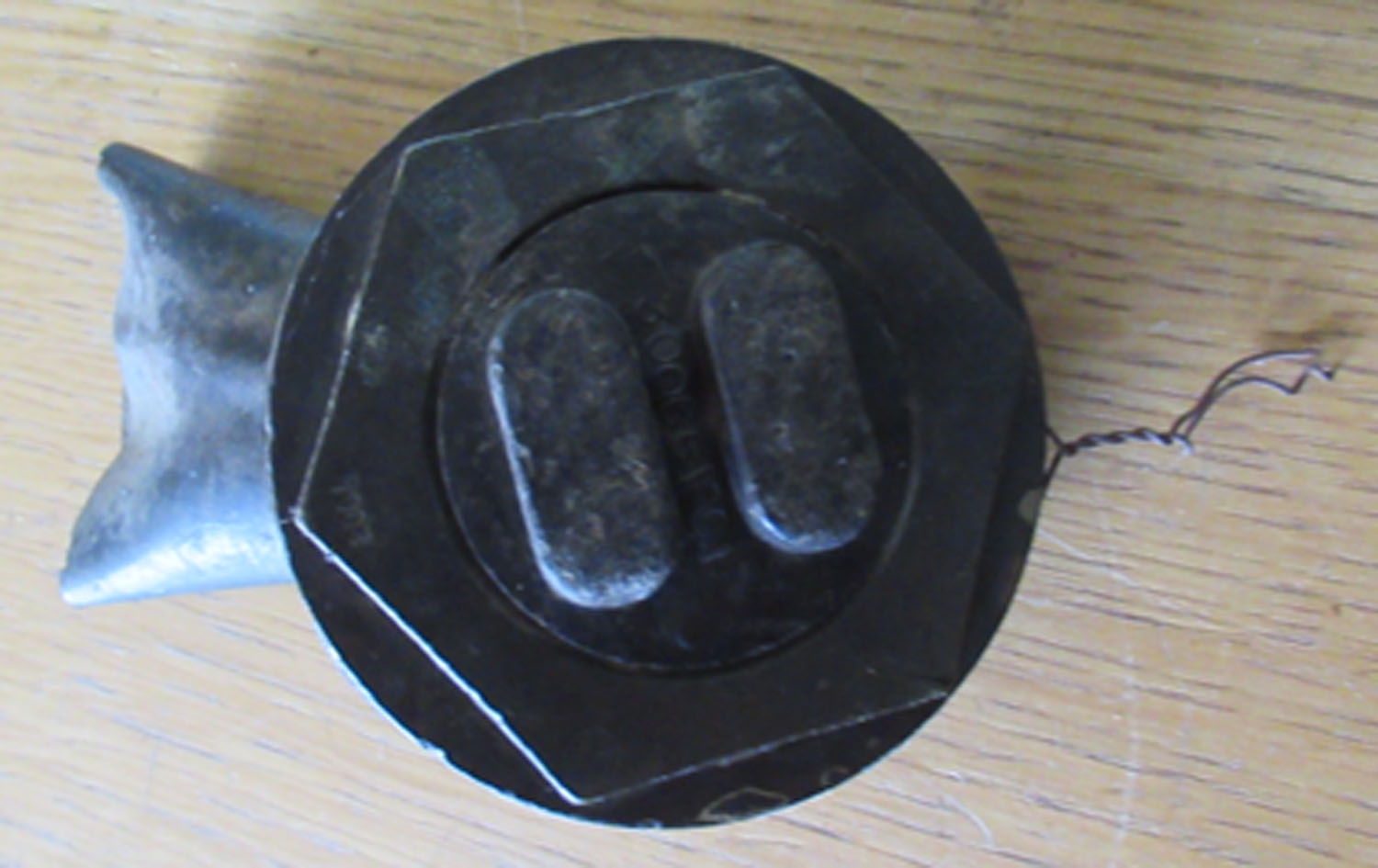
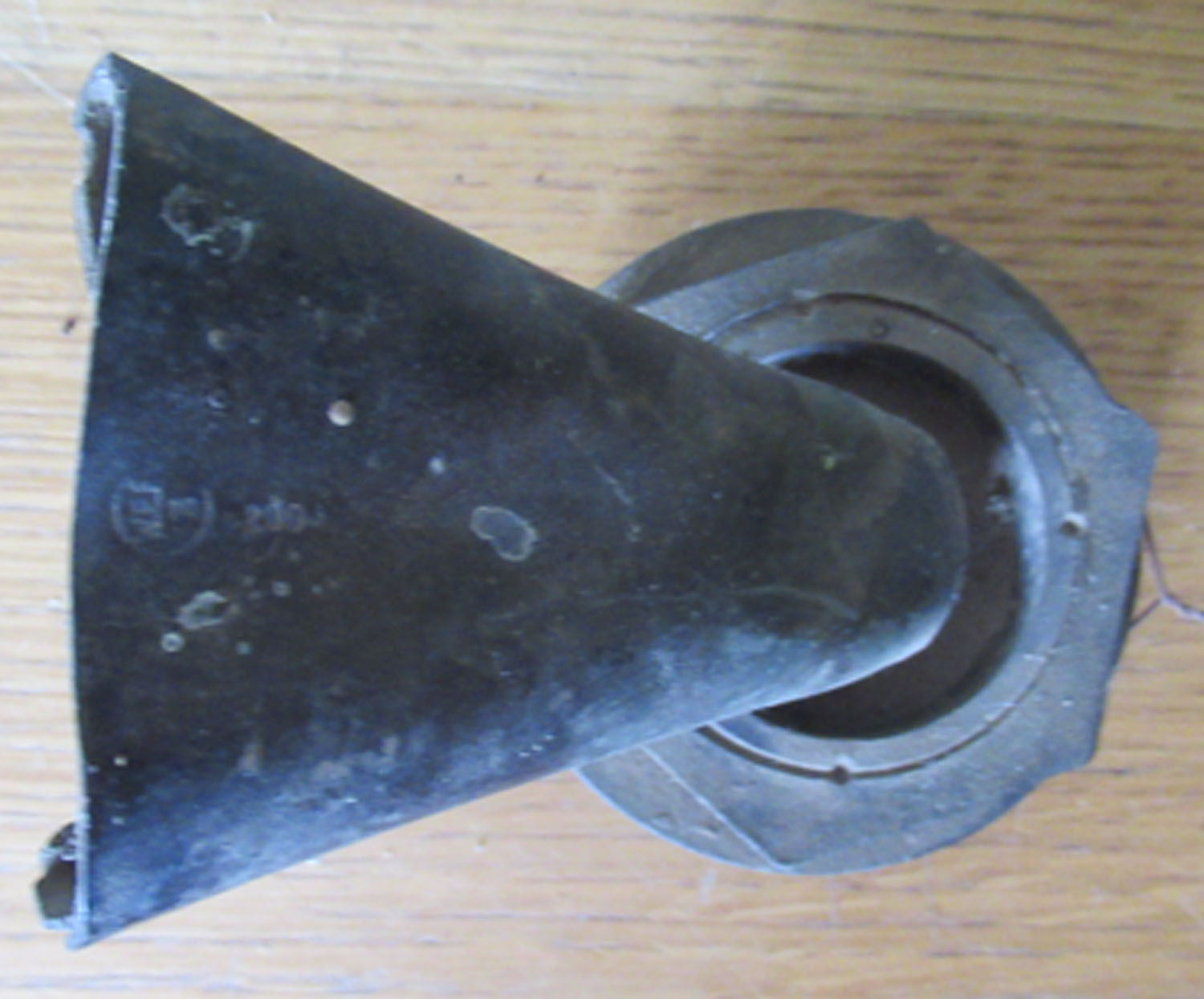
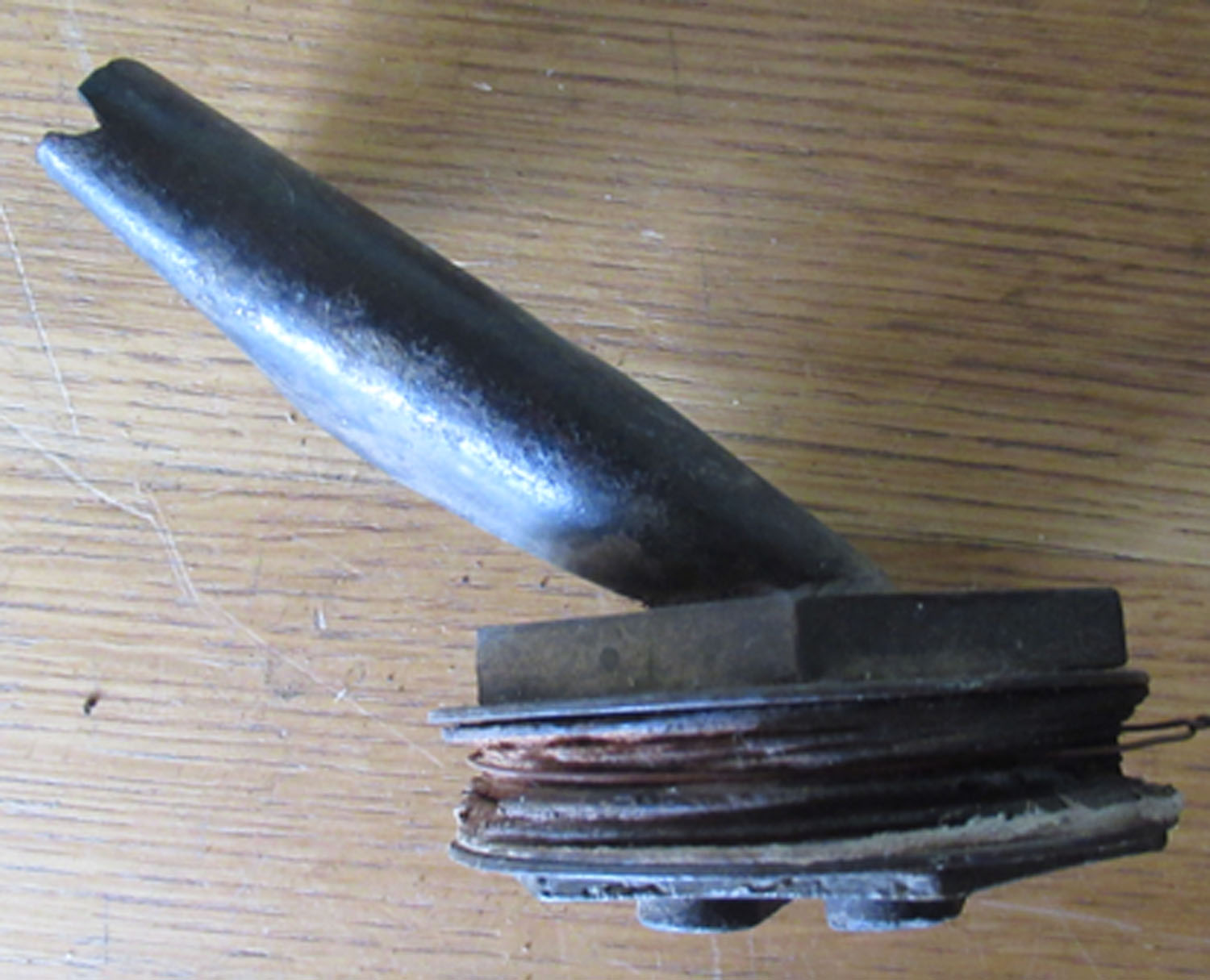
£295


|
Spitfire Drop Tank Connector (No 30 pg1 Fuel)
This is a peace from my
personal collection. It comes from the Spitfire drop tank
and was discovered at an old RAF Fighter station at Culmhead
in Somerset.
Spitfire Part number 300
65 80
It comes from a Spitfire
belly drop tank shown under .
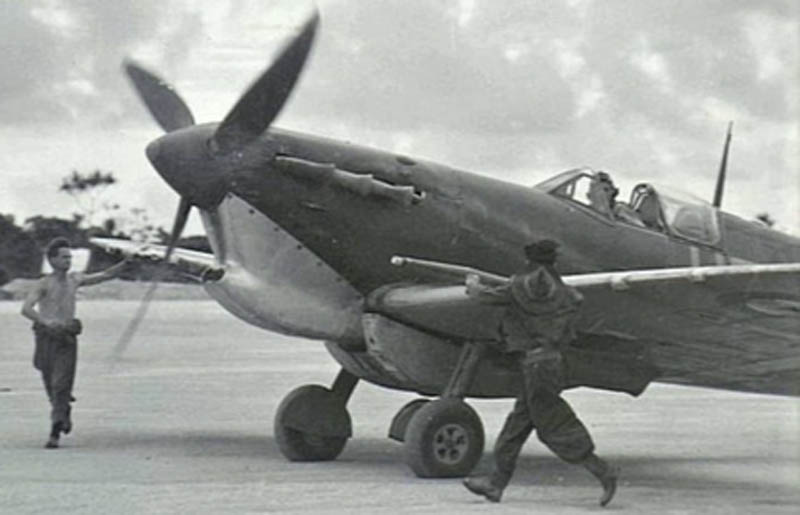
Culmhead was an active
airfield throughout the war with Squadrons of Spitfires
based there and units from Farnborough doing testing and
research.
On D Day Typhoons flew out of
Culmhead escorted by Seafires of the Royal Navy .
A personal friend of mine
Battle of Britain Pilot Dave Glaser who was with 234
Squadron at Culmhead testing drop tanks, he showed me His
log book and had a recorded flight of over five hours in a
Spitfire.
The drop tank was fitted to
one of the wings and the pilots had standing orders to ditch
the aircraft if the tank refused to be released because it
was considered to dangerous to land with one attached.
However Dave Glaser
flying his personal Spitfire did not want to loose his
favourite aircraft and actually landed with the tank
attached when it refused to release.
I am not sure of the
consequences for refusing to obey the order but I knew He
was a rebel as in the style of many of the Battle of Britain
Pilots he wore His hair long for the standards of the day
and He told me he was reprimanded many times for this.
Squadron Leader Glaser not
someone who is famous but actually fought from the Battle of
Britain age 19 in 1940 right through to 1945 in Australia
Fighting the Japanese. There is a complete article about Him
on this website follow this
link if you want to know
about Him.
|
|
Click on pictures to enlarge


 |
Heavy Duty Fuel Cock (No
29 pg1 Fuel)
This is a heavy duty fuel
cock with on and off settings and in good working condition.
Made
by B.M Ltd. Internal diameter approximately 37mm.
Click on pictures to enlarge


£395


|
|
Click on pictures to enlarge
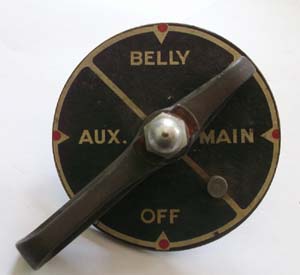
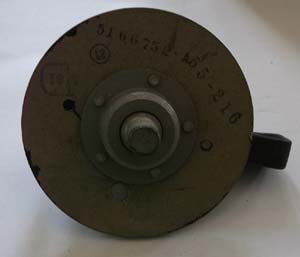 |
Belly, Aux And Main Fuel Cock (No 28 pg1 Fuel)
This is a really nicely
marked fuel cock.
I do not know which aircraft this is from.
If you can help with any identification please
contact me.
33-B-6001
5166752-A55-216
£175


|
|
Click on pictures to enlarge
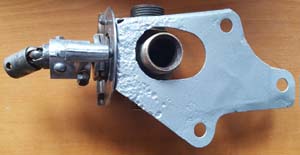
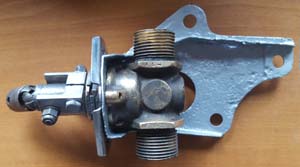
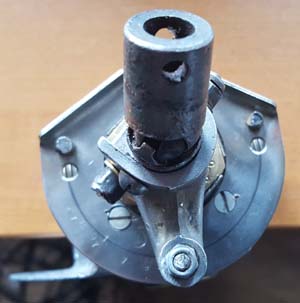 |
Hawker Typhoon Fuel Selector With Mounting Bracket (No 27 pg1
Fuel)
This is a really nice
original three way fuel cock form a Hawker Typhoon
complete with its original mounting bracket and U/J . The
fuel cock rotates as it should, the U/J moves fully.
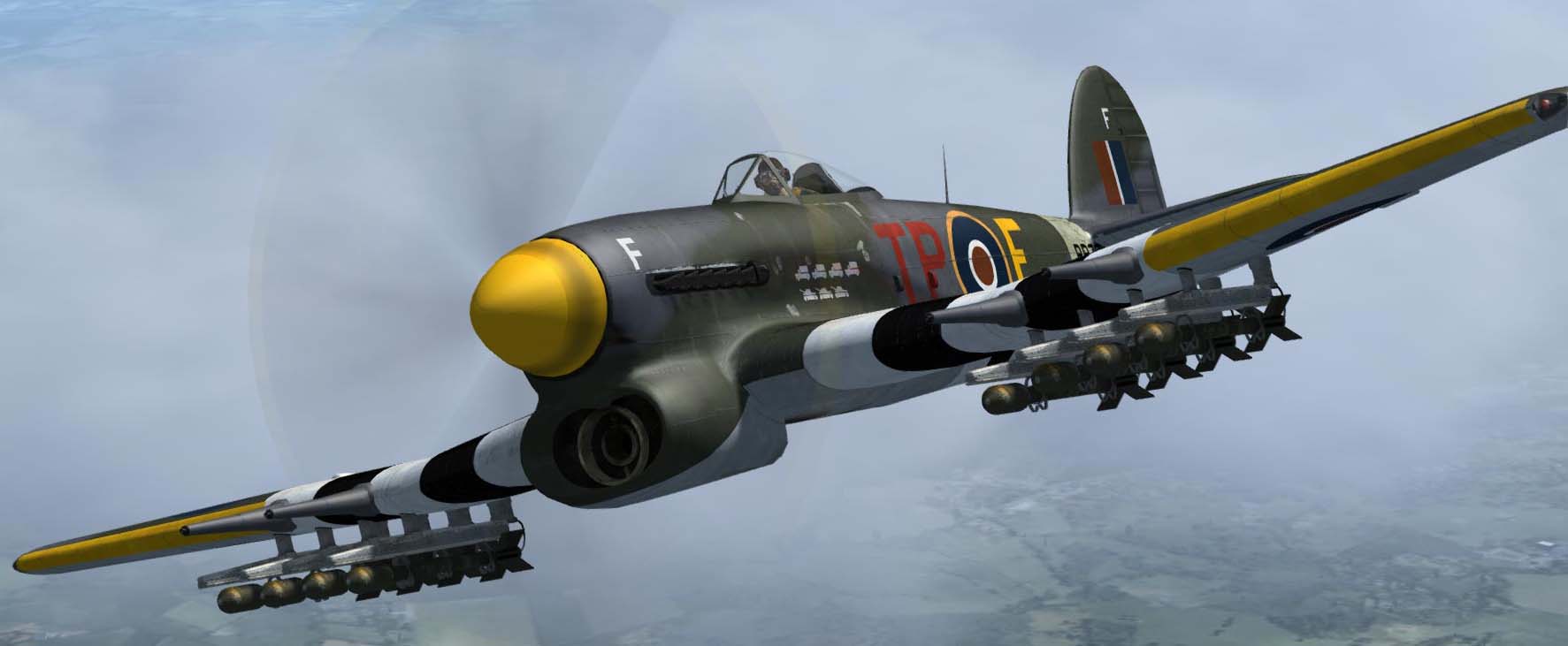
Shown above
the awesome Hawker Typhoon.
£375


|
|
Click on pictures to enlarge
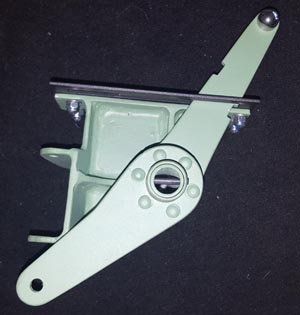
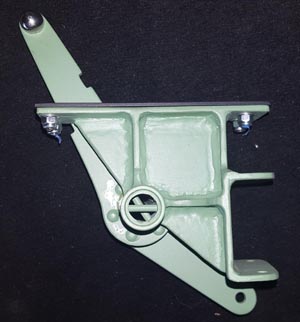
|
Spitfire Fuel Tank Cock Single Lever (No 26 pg1 Fuel)
This new made piece is the fuel
cock which turns the fuel on and off. This one is the
single lever model.
Made to exact specification from
original drawings. The only difference from the original is that the main body
is steel rather that cast alloy.
Click on pictures to enlarge
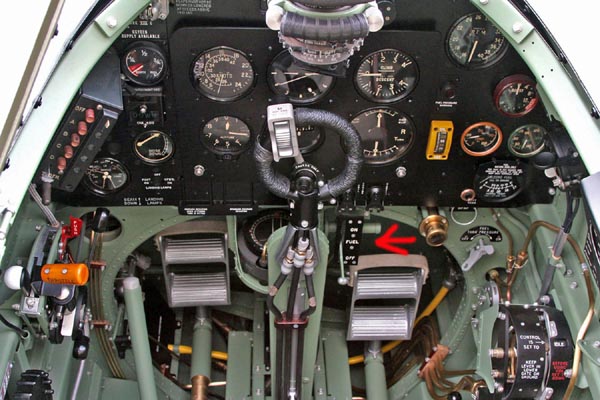
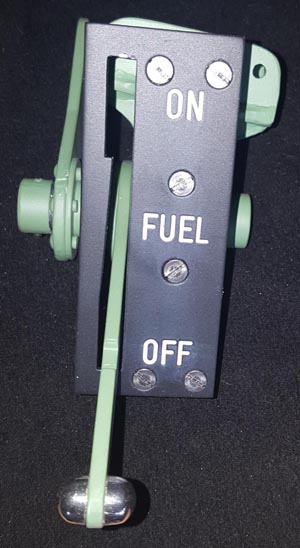
Seen in situ above
in the Spitfire cockpit
Two
available
£795 each


|
|
Click on pictures to enlarge
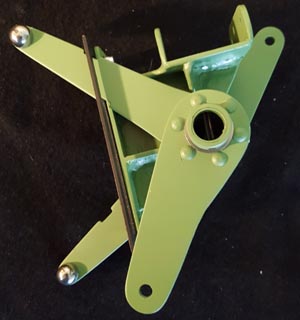
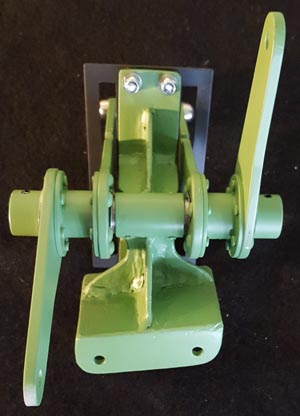
|
Spitfire Fuel Tank Cock Twin Lever (No 25 pg1 Fuel)
This new made piece is the fuel
cock which turns the fuel on and off. This one is the the
twin lever version.
Made to exact specification from
original drawings. The only difference from the original is that the main body
is steel rather that cast alloy.
Click on picture to enlarge
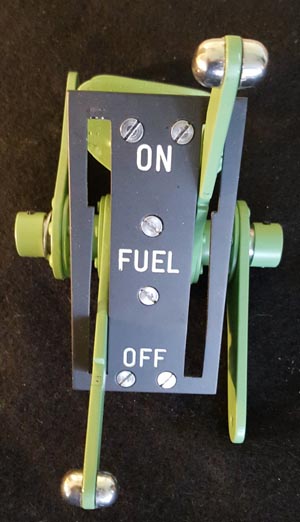
£895


|
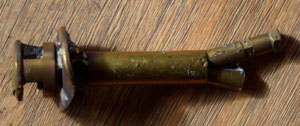
Click on pictures to enlarge
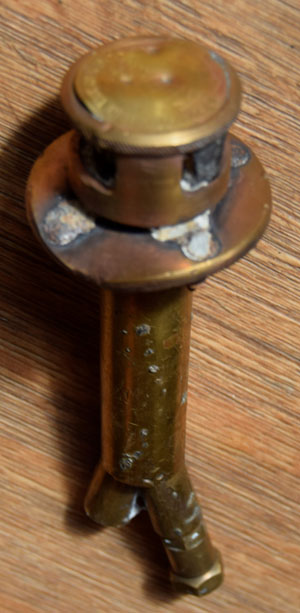
|
Spitfire KI Gass (No 24 pg1 Fuel)
Here is a nice but damaged
KI Gass recovered from a Spitfire wreck in the port of
Le Havre. It has some
corrosion to the steel fixing
bolts and is seized. The mounting plate is bent out of
shape.
I do not know the identity of the
aircraft but I found a report of MK IX Spitfires being
shot down in the area on the
5th September 1942 after a raid by twelve A 20 light
Bombers. Six credits for downed Spitfires were awarded to
the Abbeville Boys. Four free French Pilots from nos 340
Squadron were lost and one Spitfire from no 64 Squadron
crashed into the channel. There is of course no proof that
it came from one of these Spitfires but this does have
potential for further research.
1226F
A.G.S.71A
Click on picture to enlarge
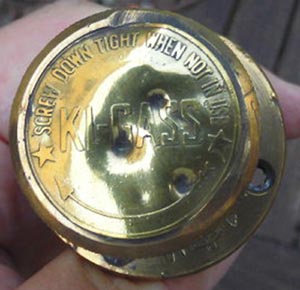
£295


|
|
Click on pictures to enlarge
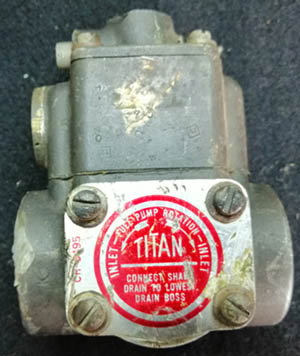
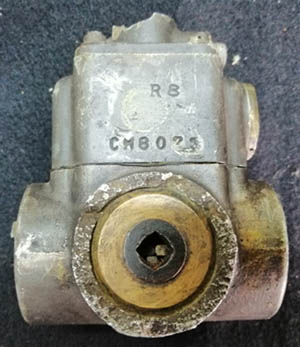
|
Chandler Hill Titan Fuel Pump 400 GPH (No 23 pg1 Fuel)
Here is a Chandler Hill
Titan fuel pump AN 4101-CH 400 Gallons per hour made in
Detroit USA
This alledgely came from a
Mustang crash sight but I have no information other than
what the seller told me to back this up, clearly it has been
crashed as it has some damage . At 400 gallons per hour it
would seem over kill for a mustang which at most should only
consume a maximum of 120 Gallons per hour. I can tell you
from my research that it was used in Wartime US aircraft.
Click on pictures to enlarge
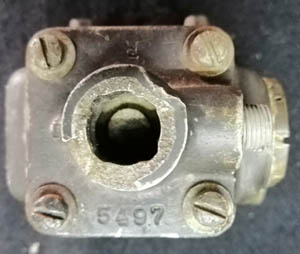 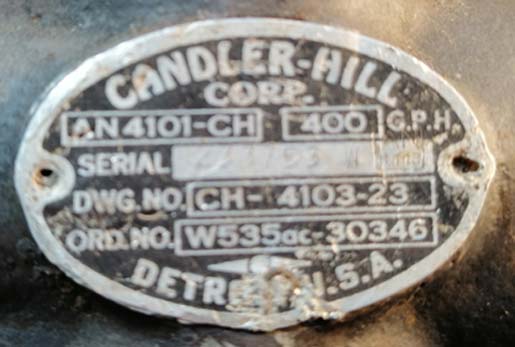
£55


|
|
Click on pictures to enlarge
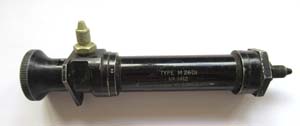
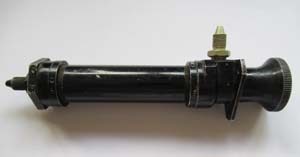
|
Rotax Type M 2601 Hand Primer Pump (No 22 pg1 Fuel)
Here is a Rotax fuel
primer pump which appears in good condition. Unlocks with a good
strong spring and the moves smoothly.
Click on picture to enlarge

£275


|
|
Click on pictures to enlarge
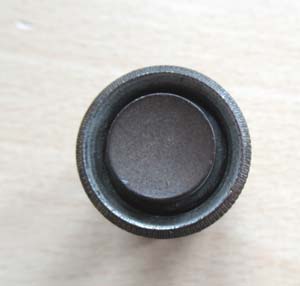
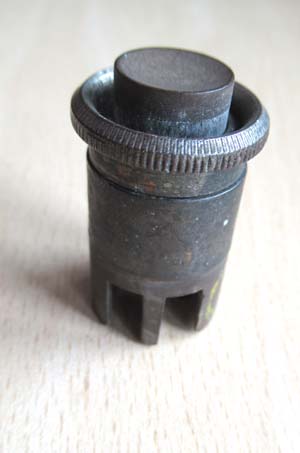
|
Original Spitfire Fuel Push Button 1 (No 21 pg1 Fuel)
This is an original push button
for gauging the fuel tanks fitted to the Spitfire main panel
as well as other RAF aircraft,
These are extremely rare
parts and this one works as it should the button depresses
smoothly.
Click on pictures to enlarge
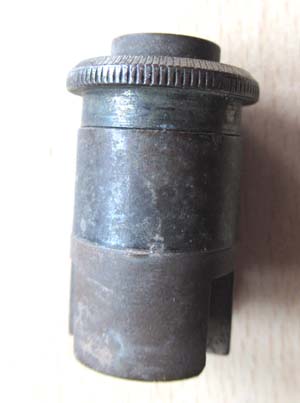 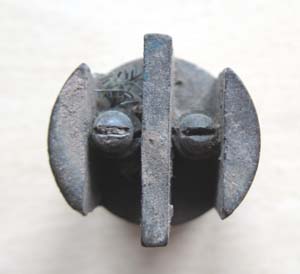 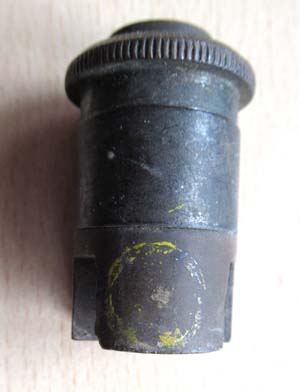
£275


|
|
Click on
pictures to enlarge
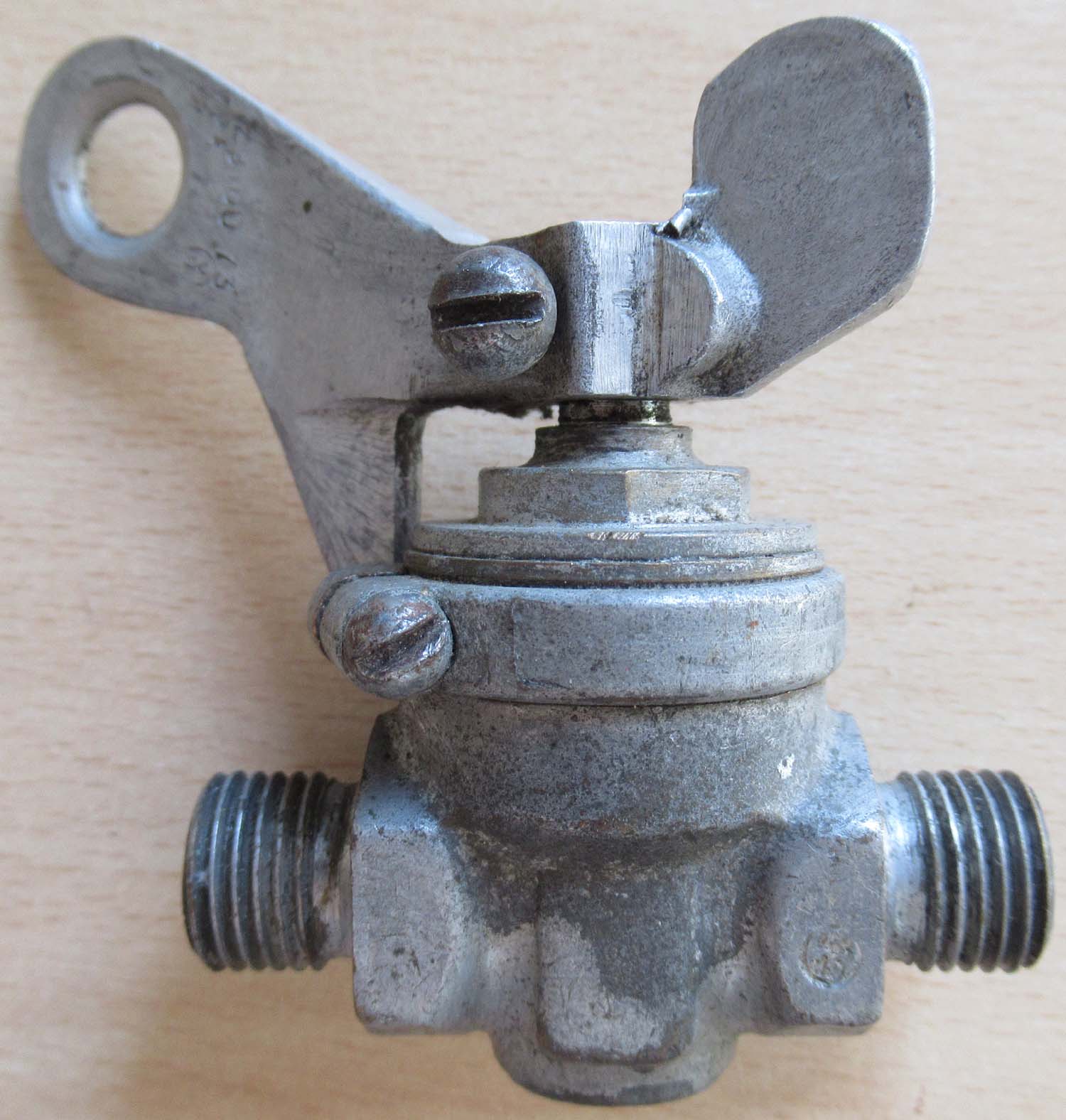
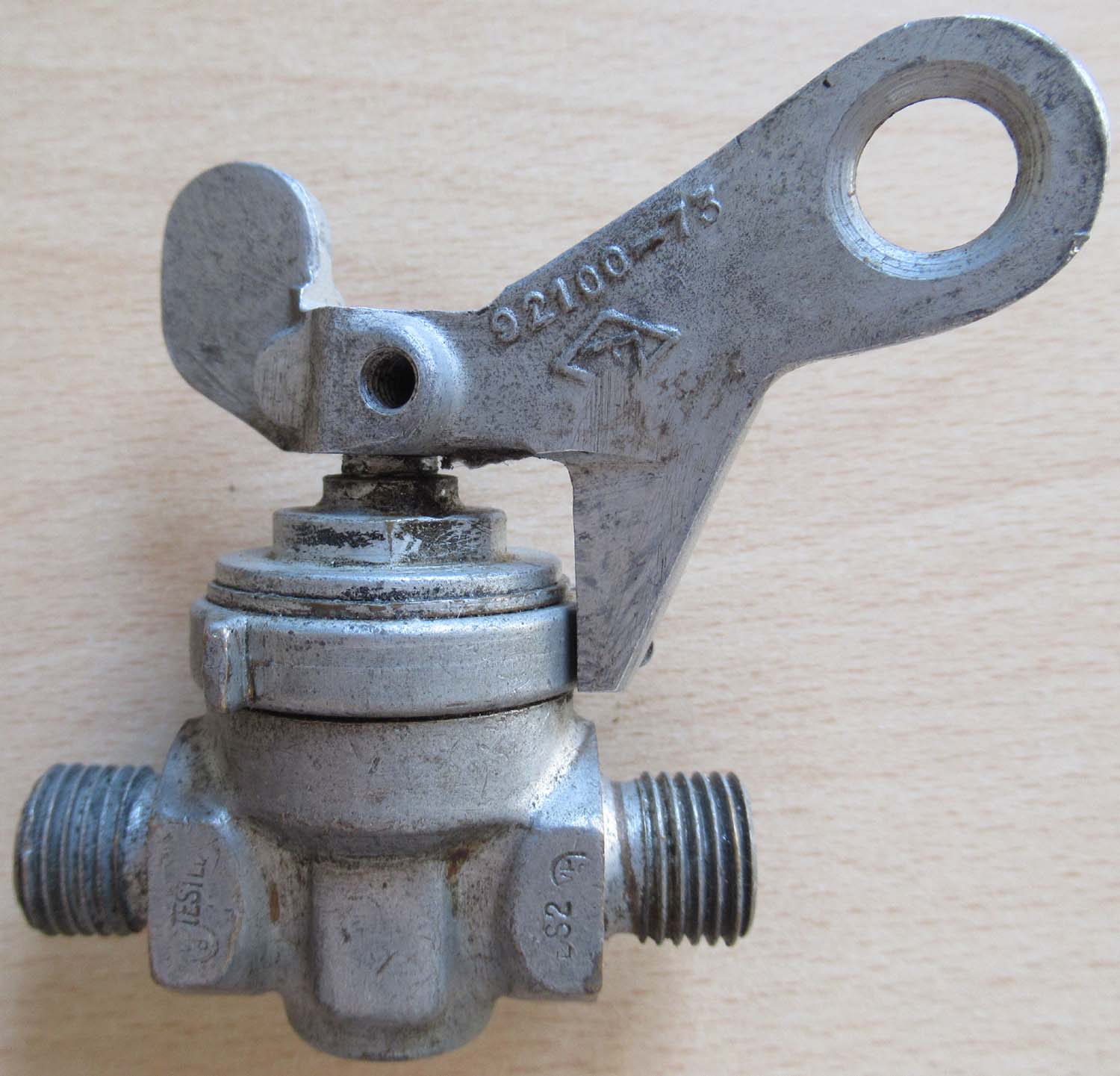 |
Vickers Fuel Cock
3 (No 20 pg1 Fuel)
Click on
pictures to enlarge
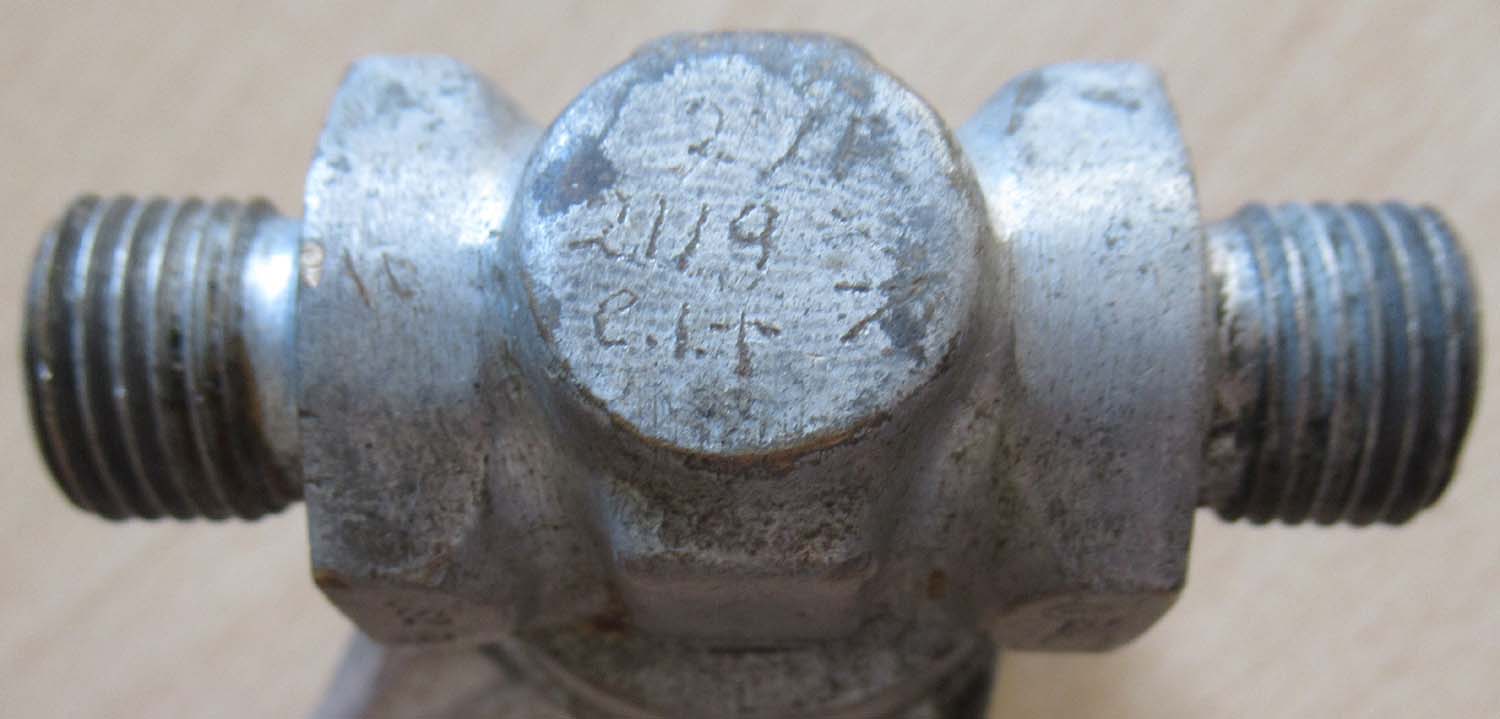
Seen in situ
under in a MK I Spitfire
.jpg)
£265


|
|
Click on picture to enlarge
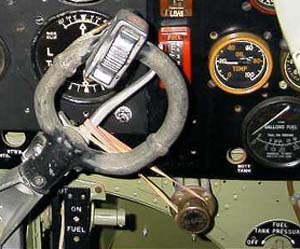
£125


|
KI Gass Spitfire Fitting Brackets (No
19 pg1 Fuel)
Re manufactured bracket for
fixing the KI Gass pump to the Cockpit Bulkhead of the
Spitfire.
Plate attaches to the bulkhead and the KI Gass
attaches to the spacers as seen left.
Click on picture to enlarge
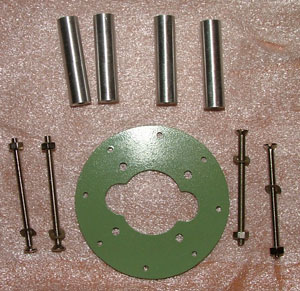
|
|
Click on picture to enlarge
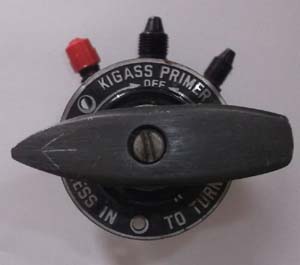
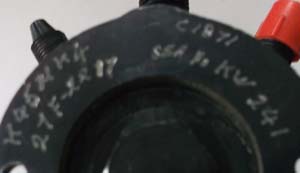 |
KI Gass Twin Engine (No 18 pg1 Fuel)
KI Gass pump in excellent
condition appears to be for a twin engine aircraft as it has
one inlet and two outlets.
If you know its application
please contact me.
Click on picture to enlarge
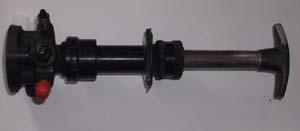
Two available
£275


|
|
Click on pictures to enlarge
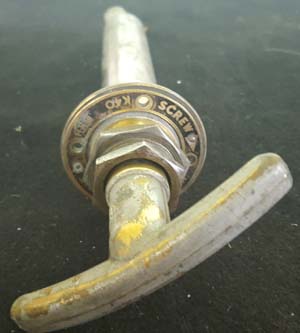
|
KI- Gass 4 (No 17 pg1 Fuel)
A fuel priming pump used to
prime the Rolls Royce Griffon engine and other big piston engines.
Mounted in
late
Spitfire's on the lower RHS of the Cockpit.
This KI Gass shown is in good
original condition.
Click on pictures to enlarge

£275


|
|
Click on pictures to enlarge
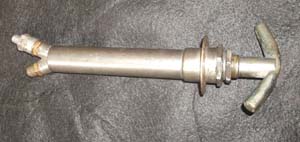
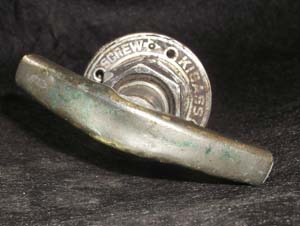
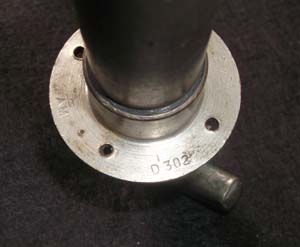
£275


|
KI- Gass 3 (No 16 pg1 Fuel)
Here,
this
Ki Gass has clearly been used and has slight damage to the
handle please see the pictures.
Unusually it is dated and
has an Air Ministry crown mark.
It is dated 1943 and as the MK
XIV Spitfire did not enter service until October 1943, I
believe this piece was most likely fitted in a Hawker
Typhoon which entered service in 1941. Although either
aircraft is a possibility.
Seen under in situ in a
late Mk PRU Spitfire
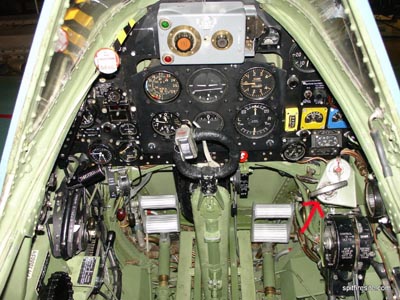
Seen under in situ in a
Hawker Typhoon.
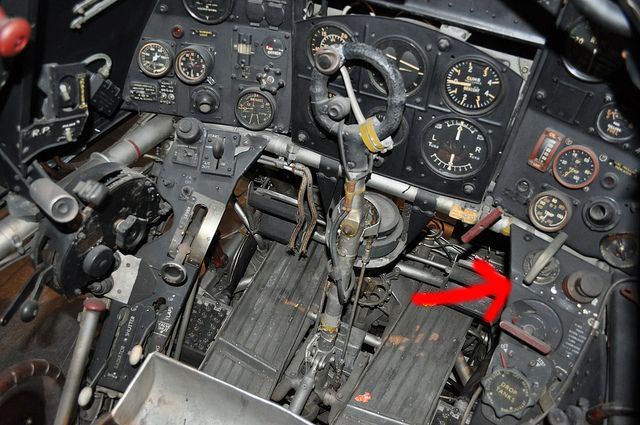
|
|
Click on pictures to enlarge
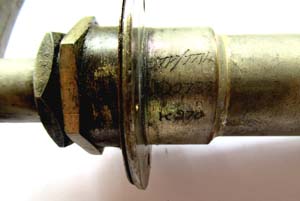
£295


|
KI- Gass 2 (No 15 pg1 Fuel)
Here we have another KI Gass shown in good
condition. It functions as it should. The end pipes are sealed
with their original caps.
D2739
K270
Click on pictures to enlarge
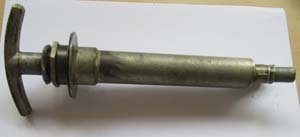
|
|
Click on pictures to enlarge
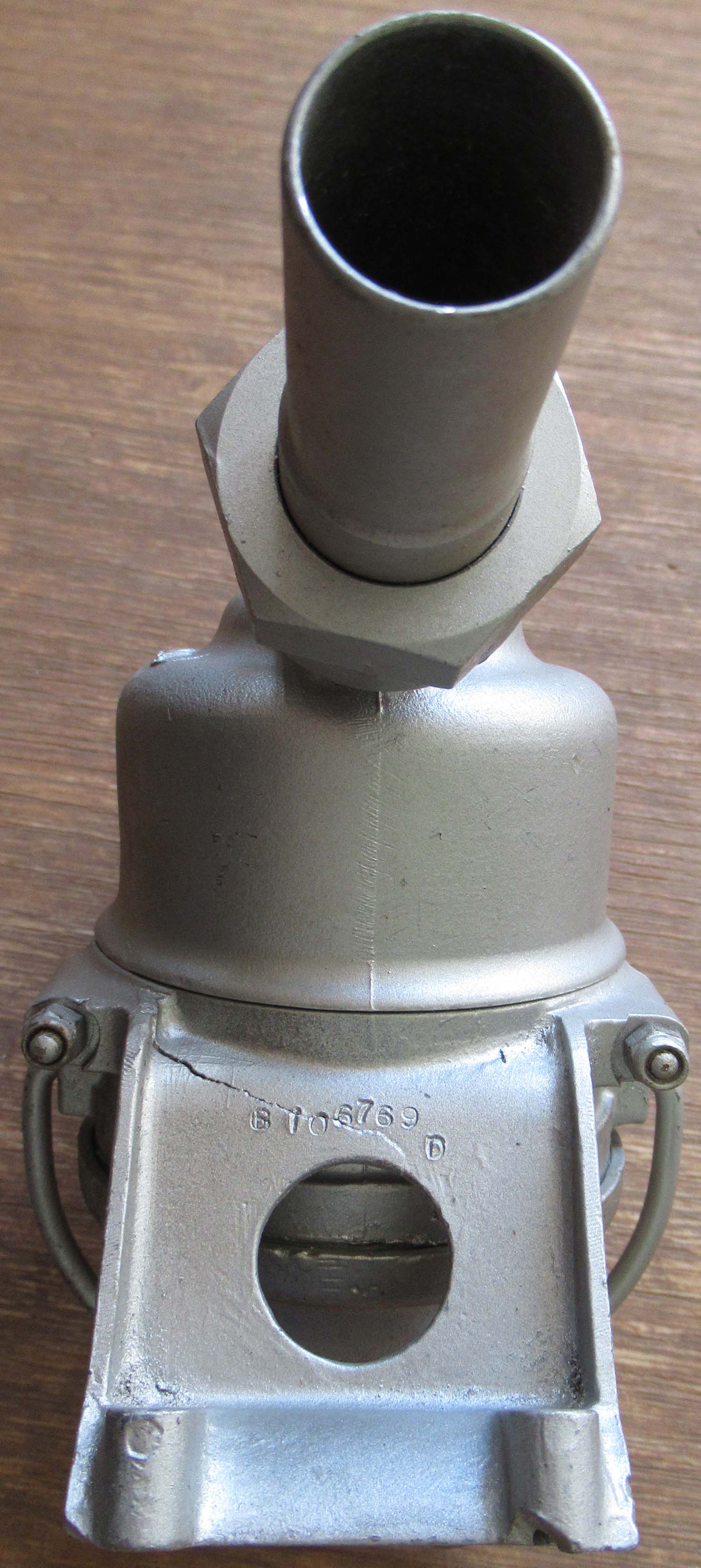
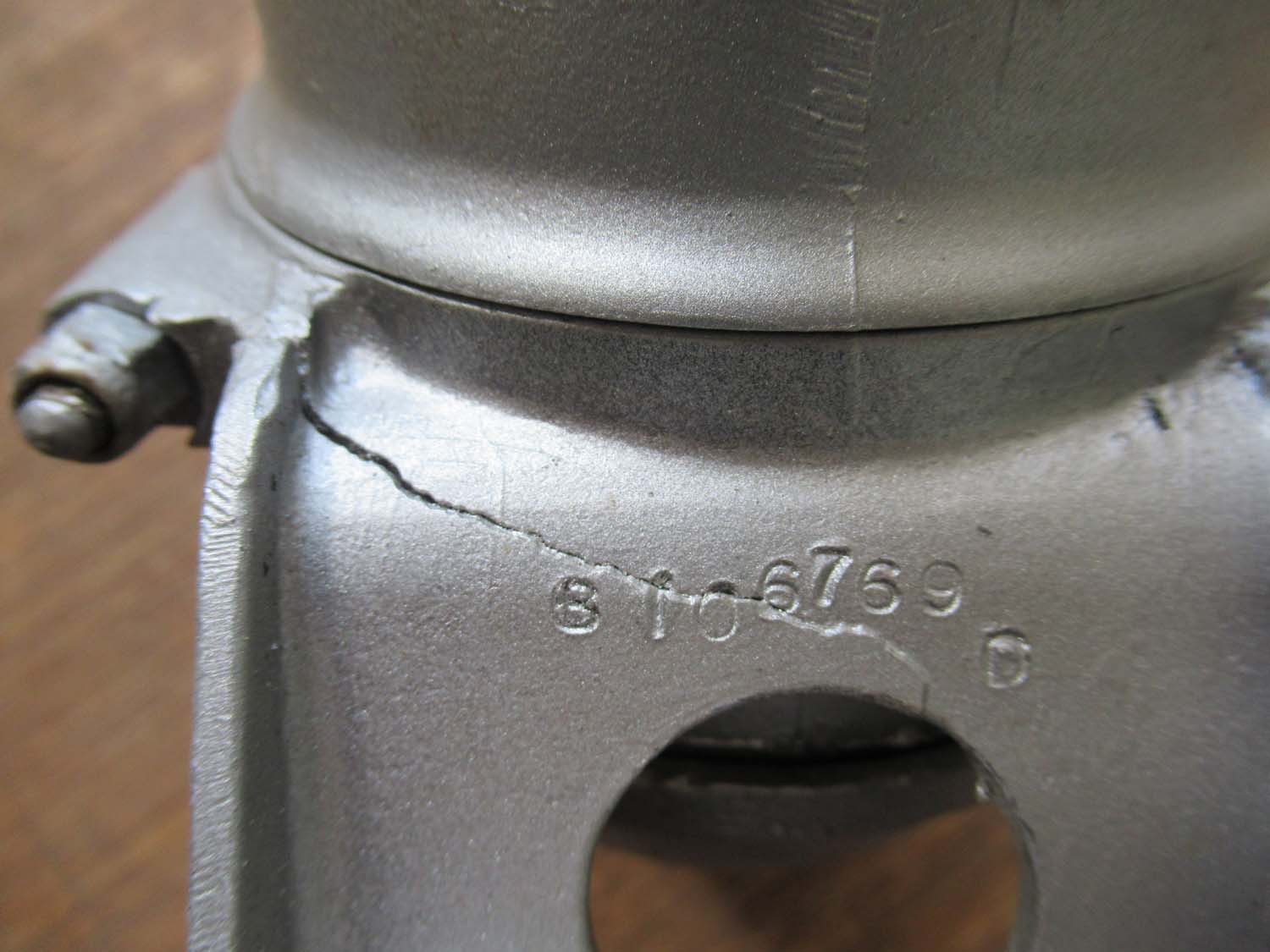 |
Hawker Typhoon Fuel
Filter And Bracket (No 14 pg1 Fuel) This is a
restored fuel filter from a Hawker Typhoon with its original
bracket. The bracket has a small hairline crack.
904/H
Bracket
part No: B 106769 D
Fuel
filter part No: AGS1001/1
Click on pictures to enlarge
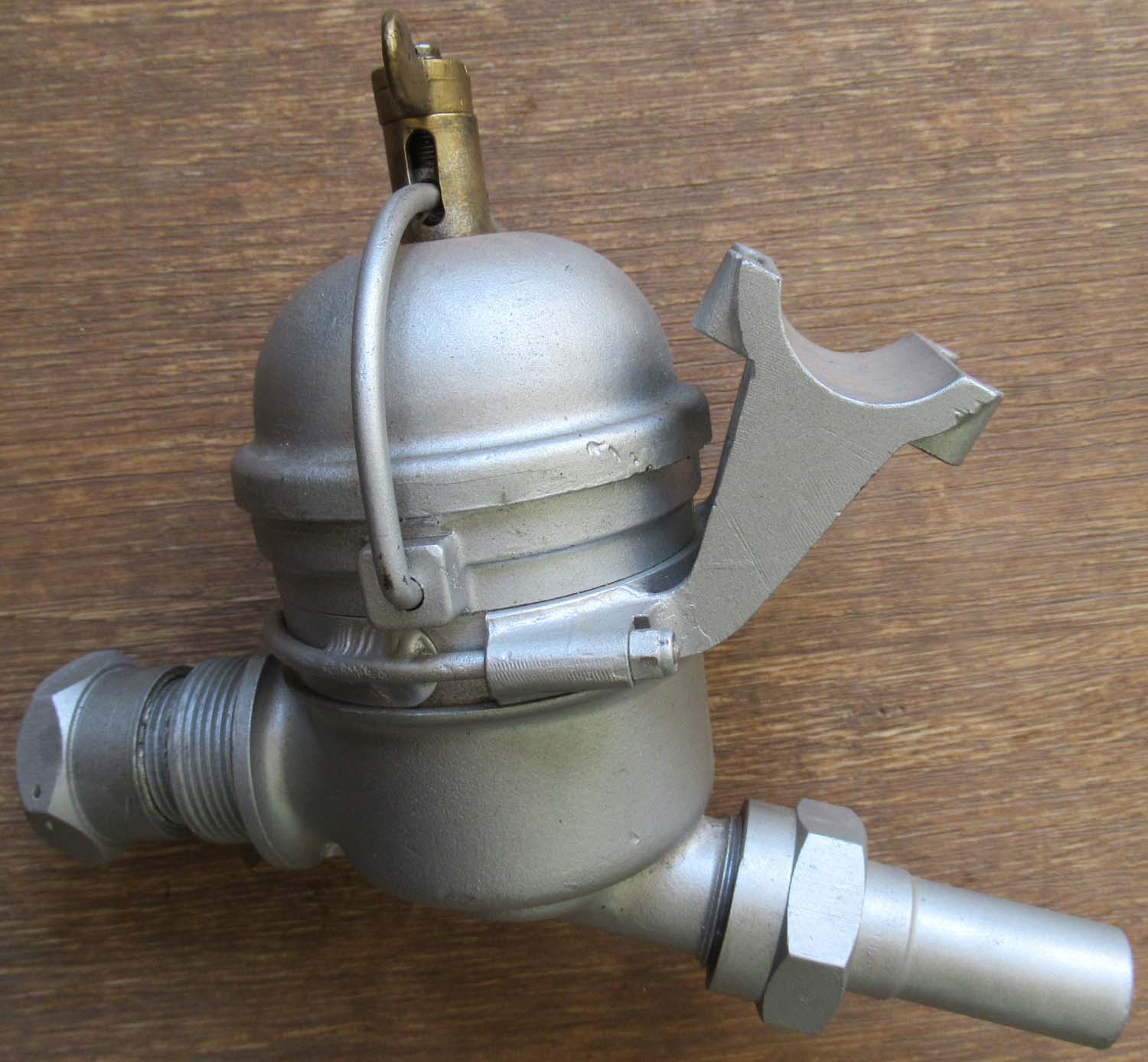
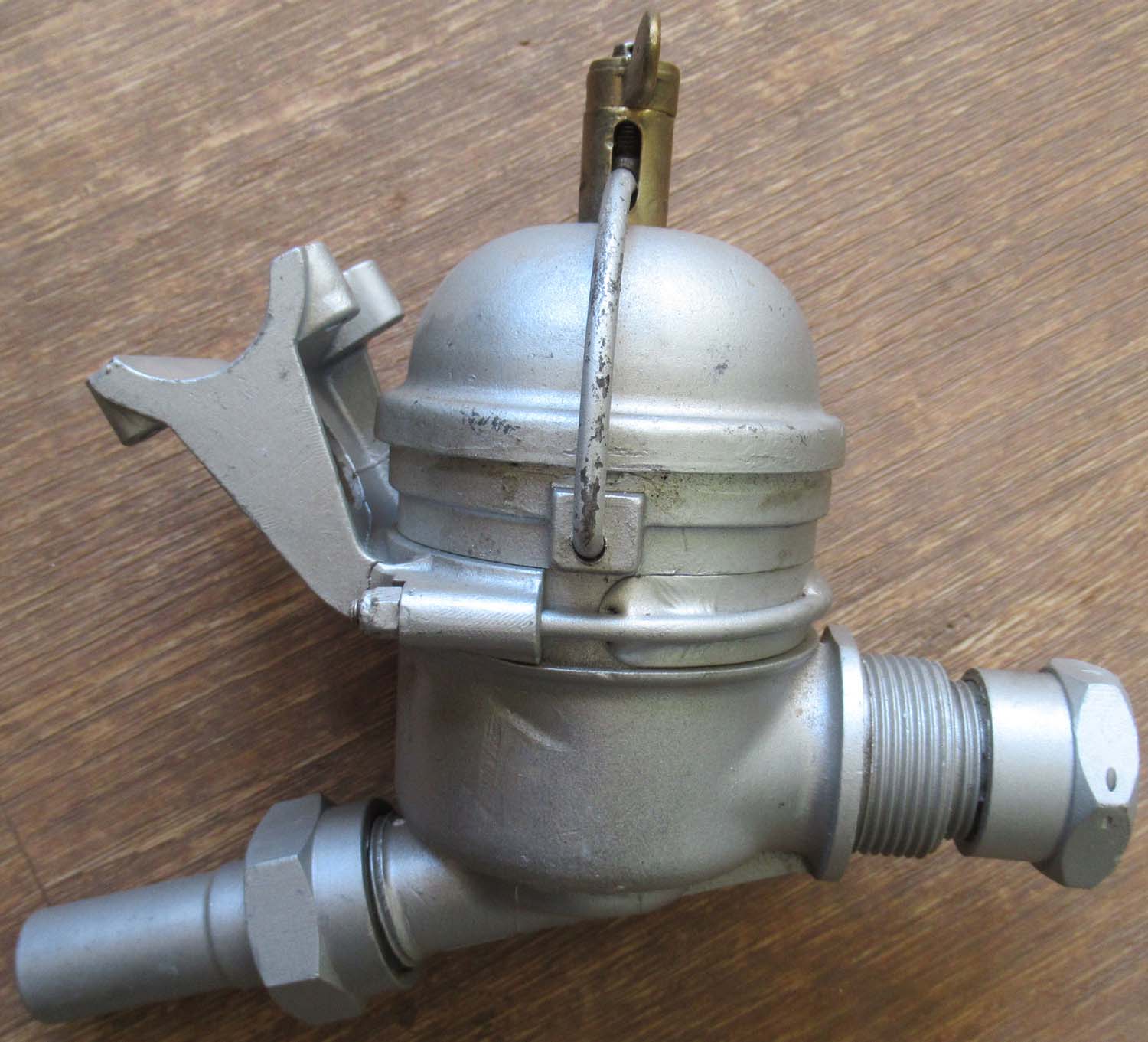
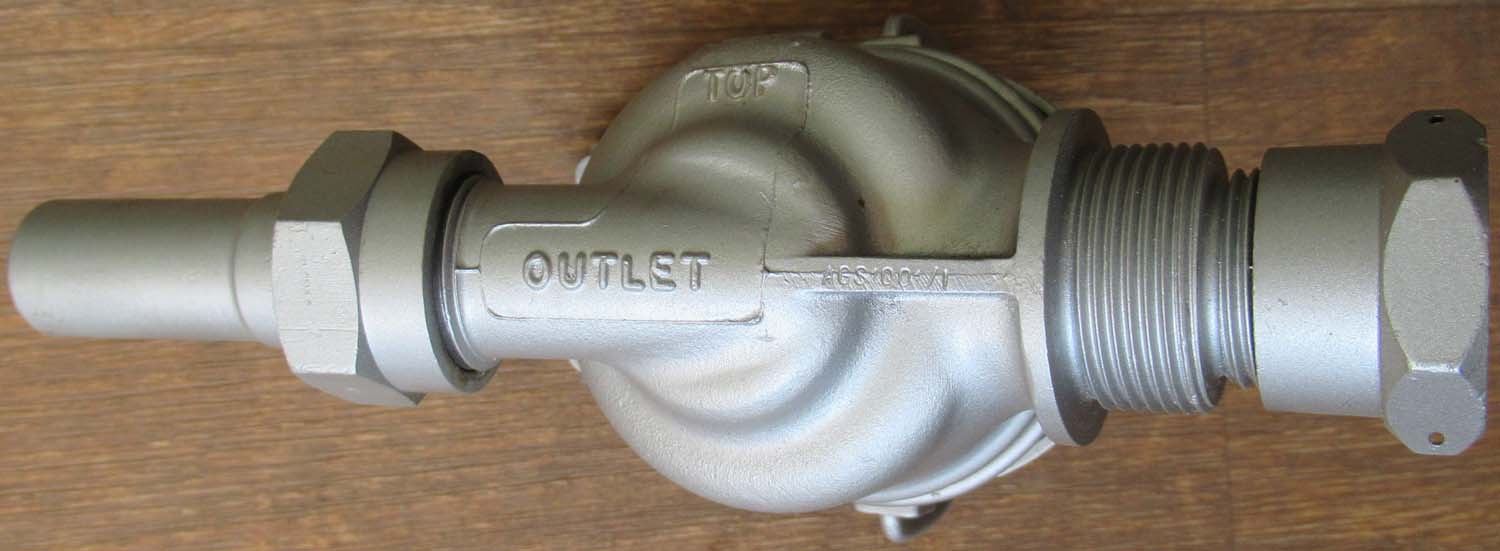
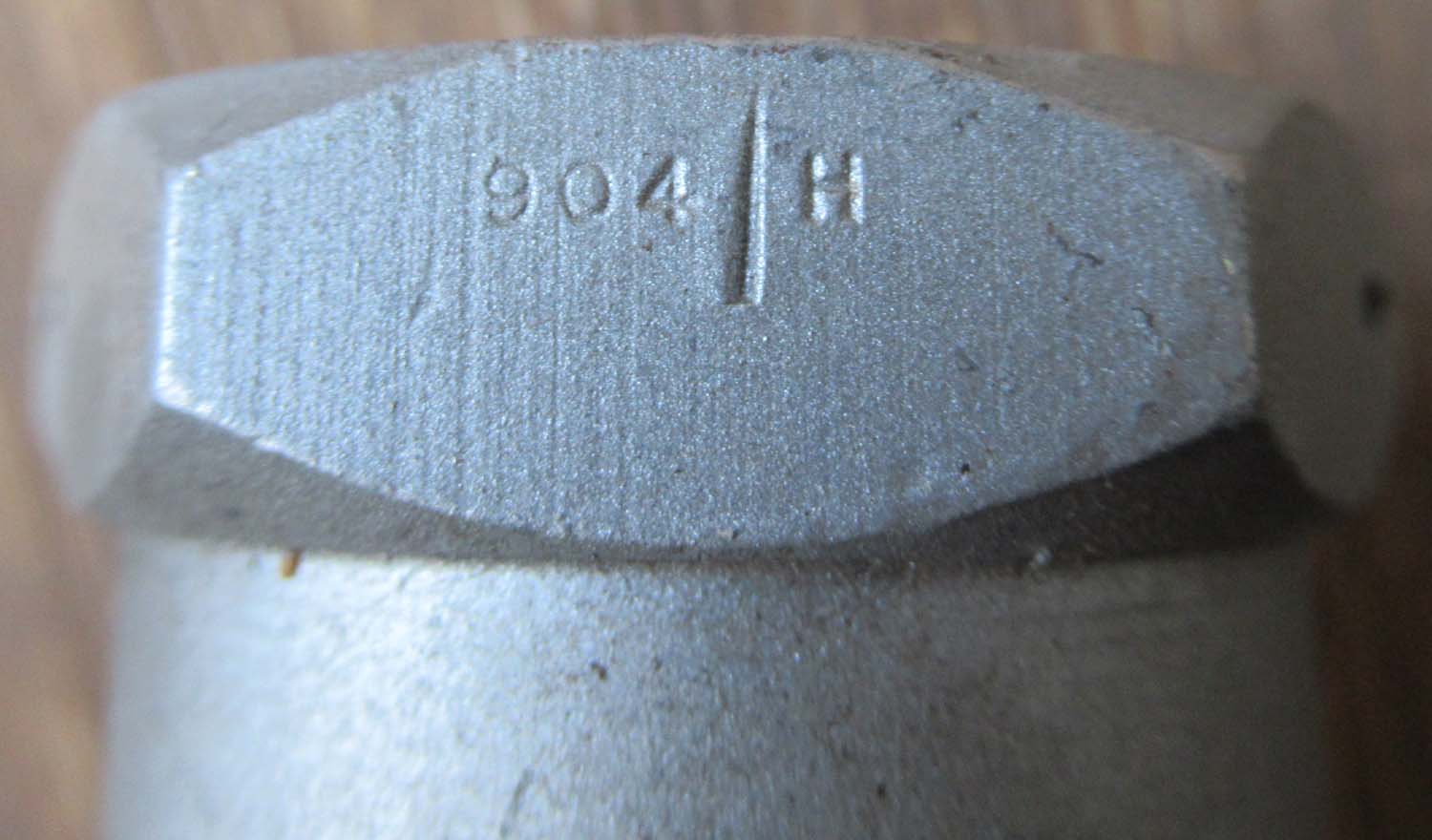
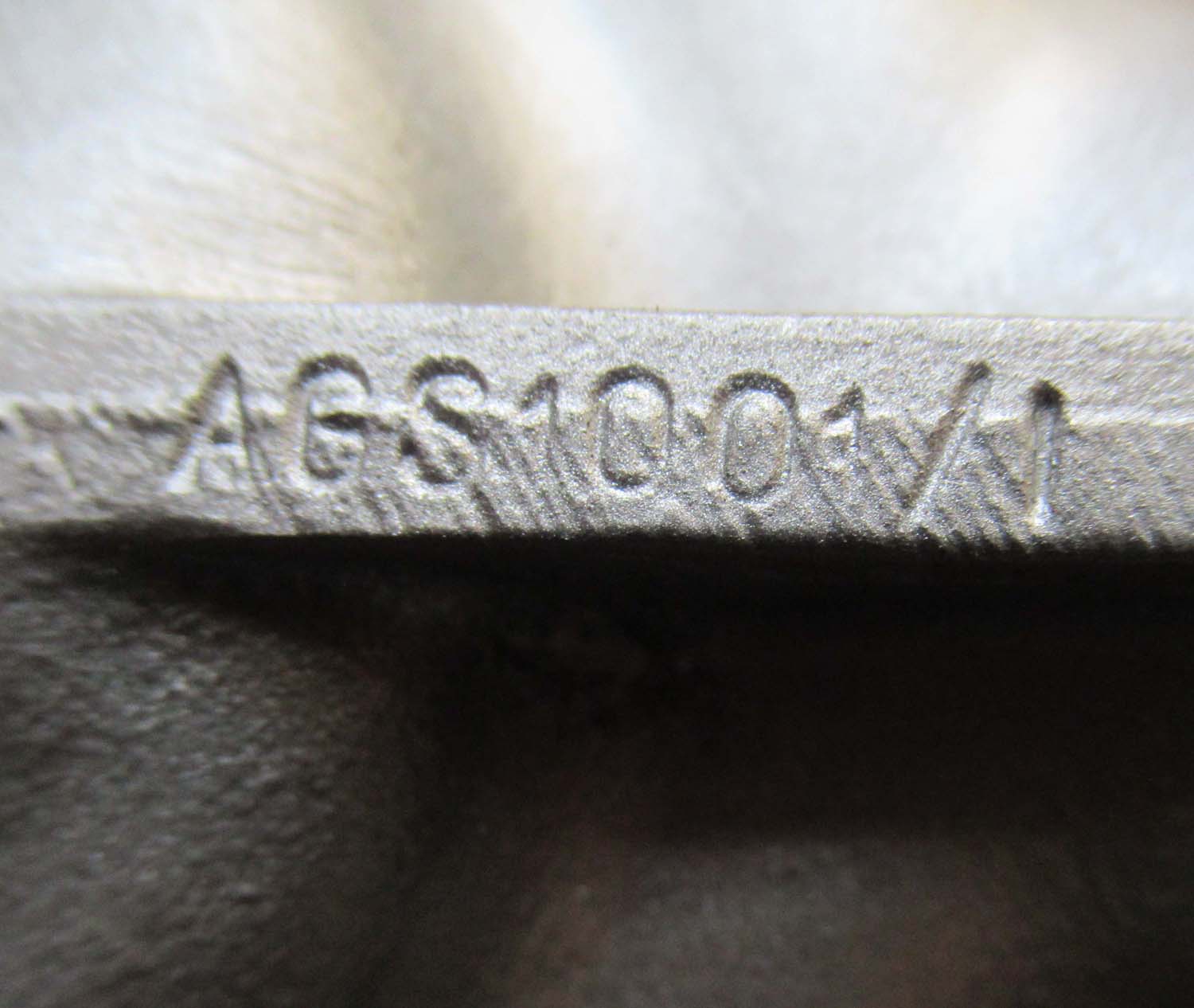
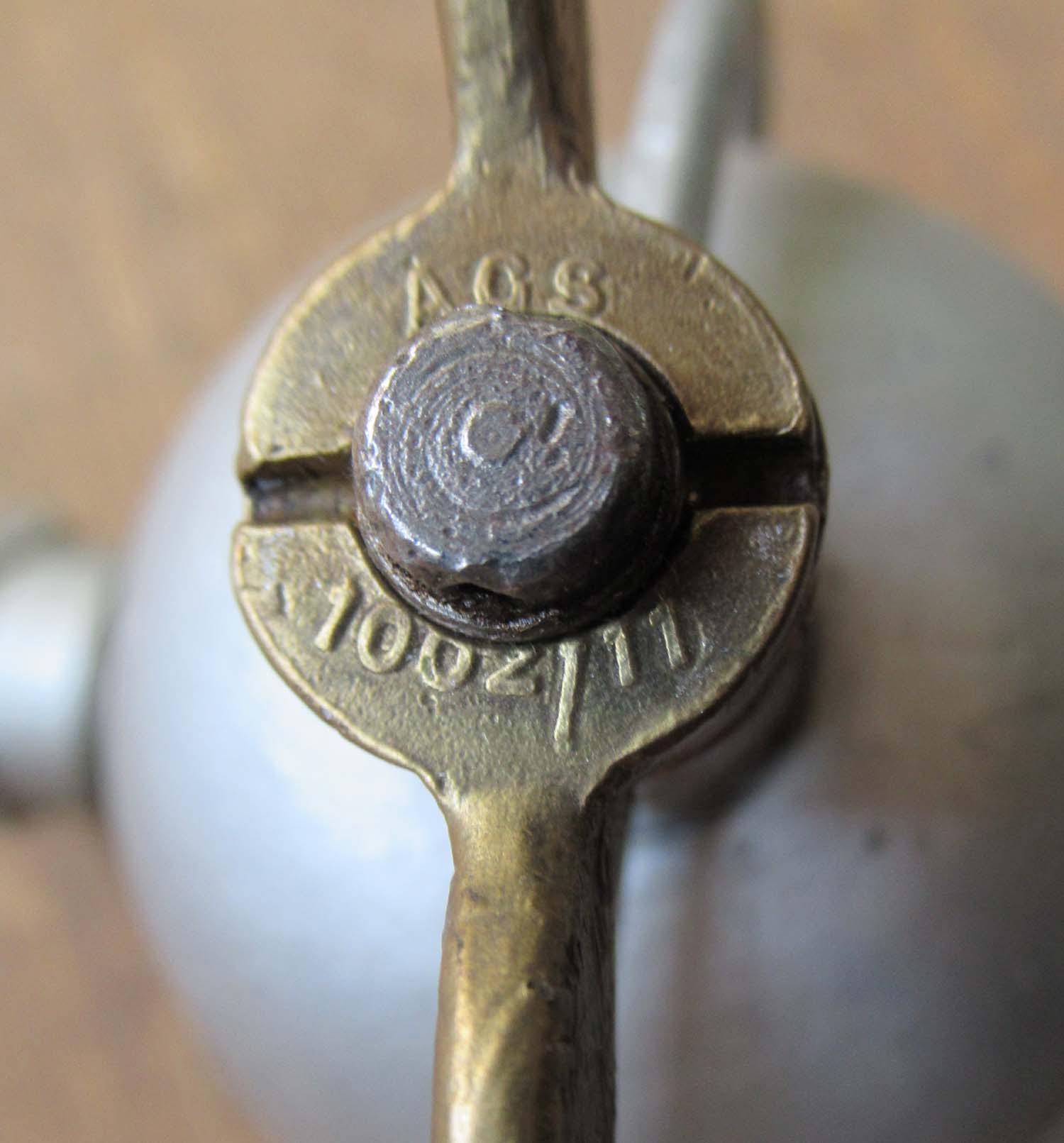
£275


|
|
Click on pictures to
enlarge
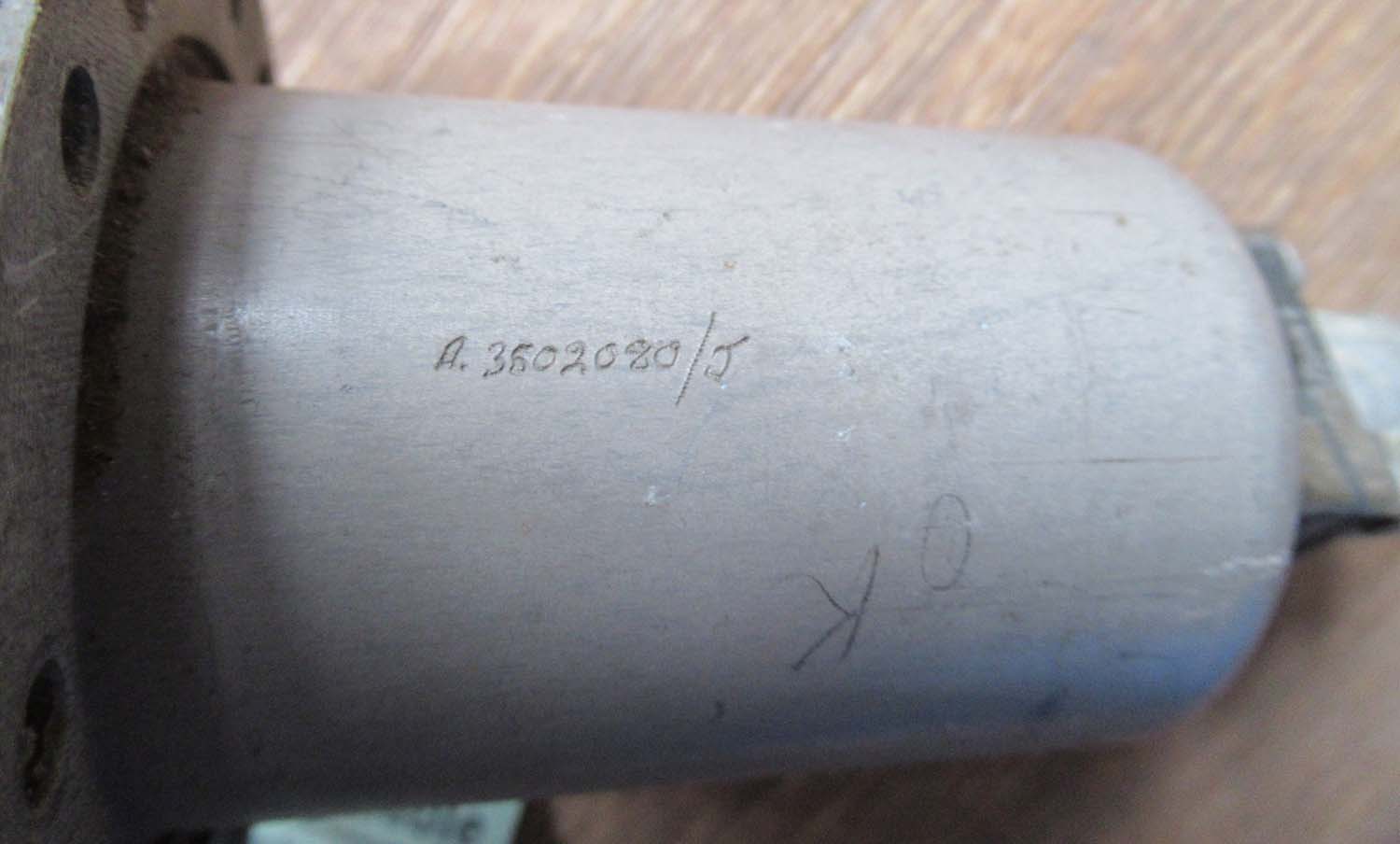
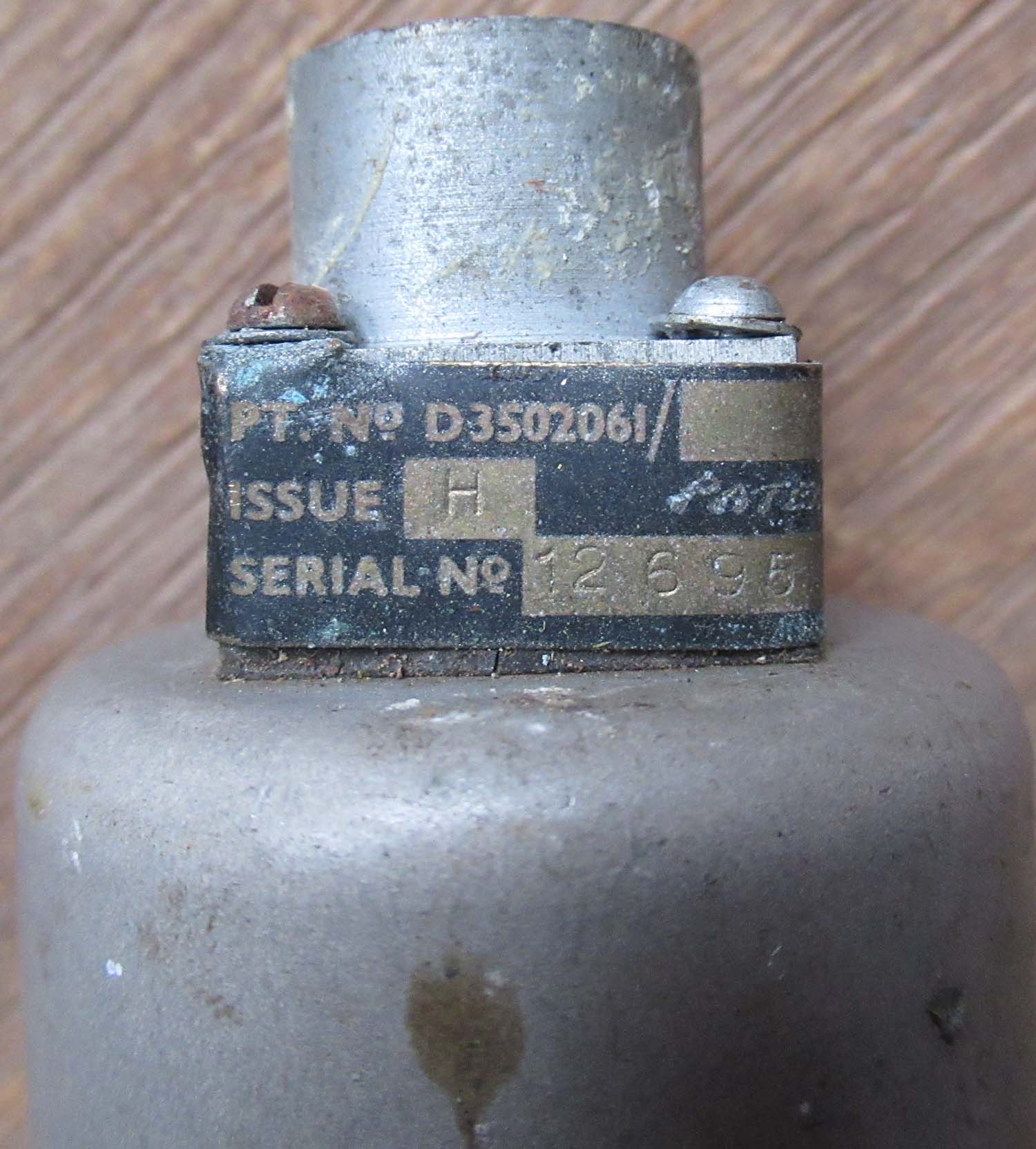 |
Float Switch 5CW/5099
(No 13 pg 1 Fuel)
A3502068/B
Ser No:12695
Click on pictures to
enlarge
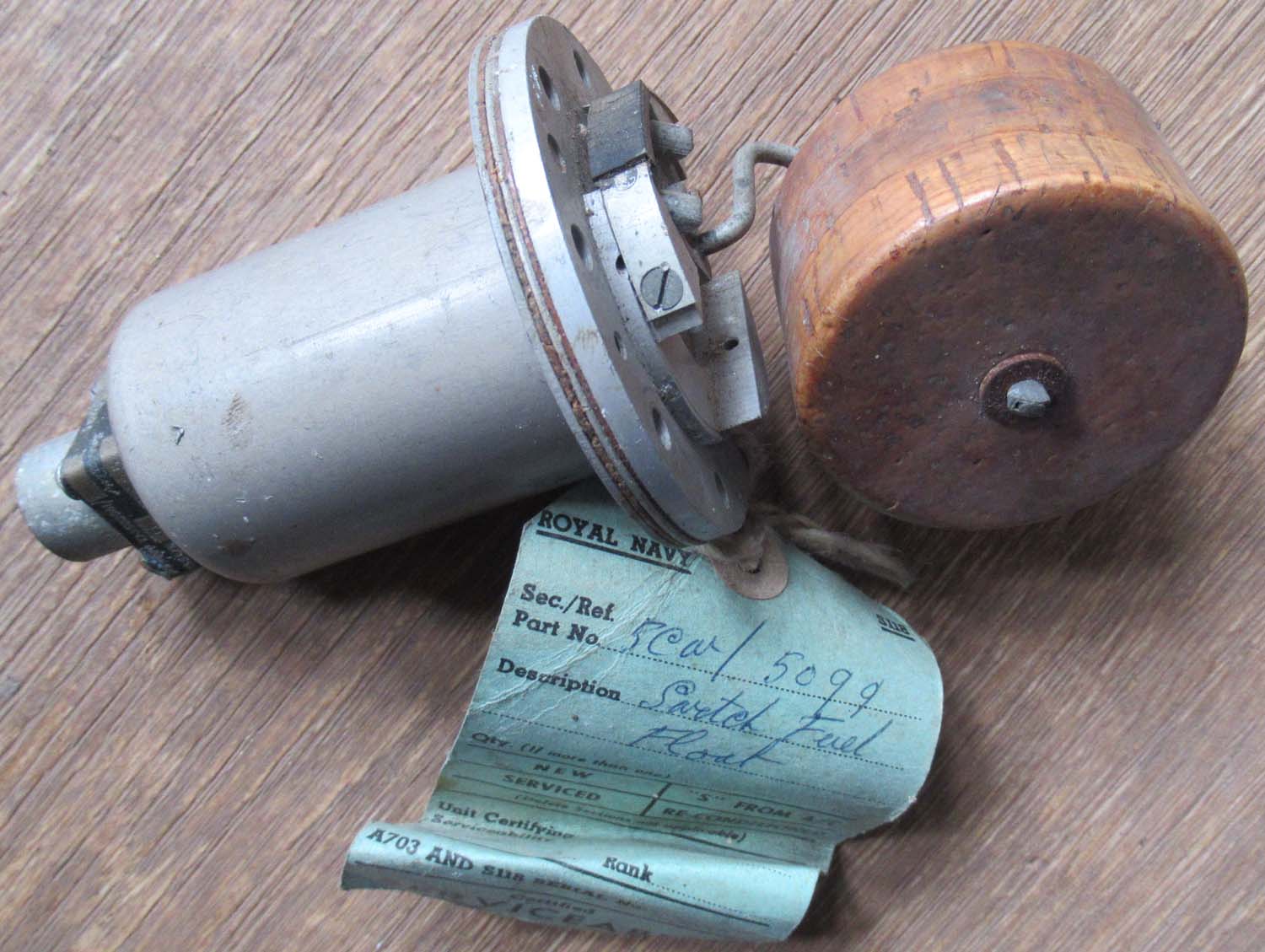
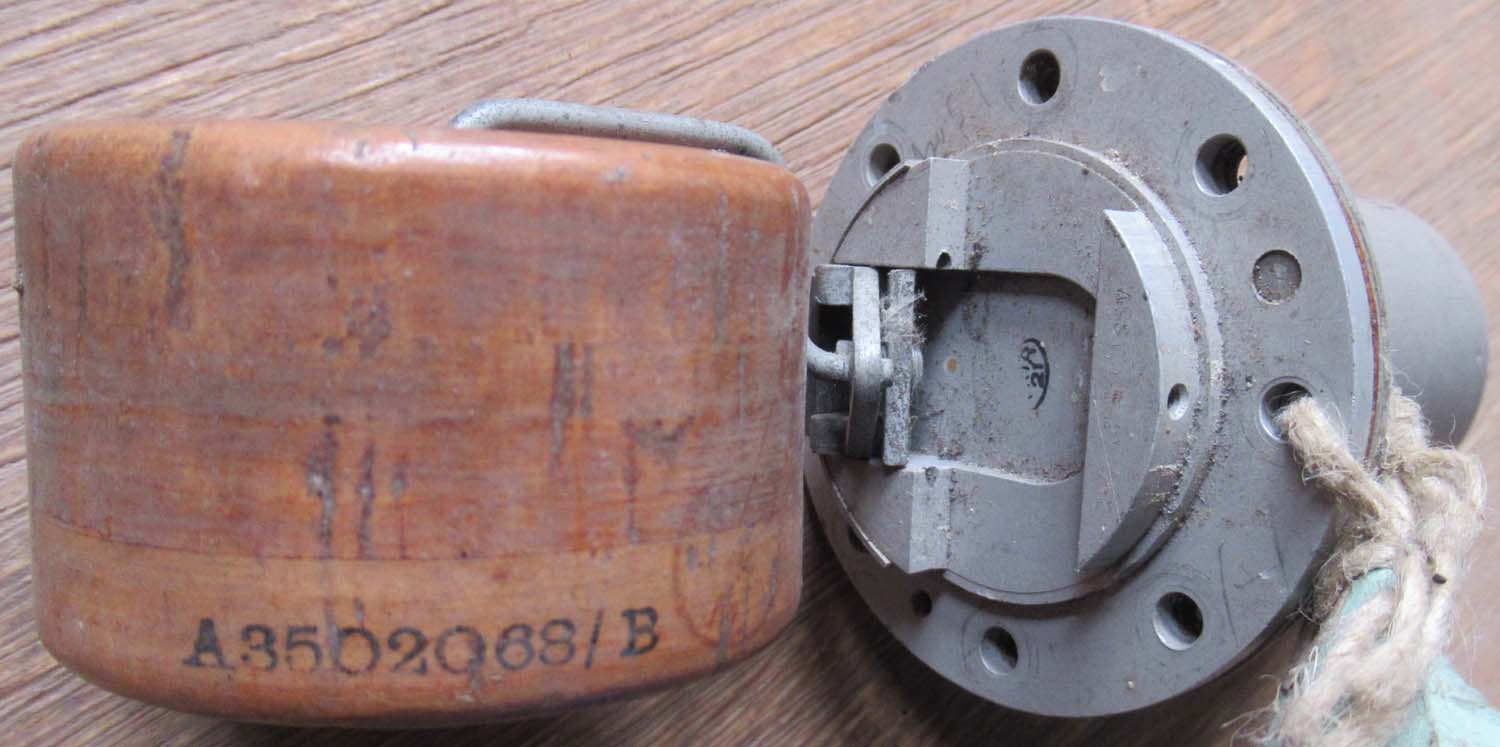
£40


|
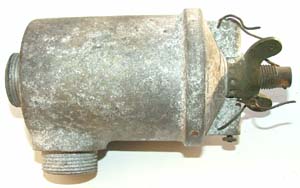
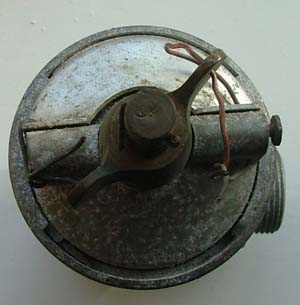 |
Merlin Spitfire Fuel
Filter
3 (No 12 pg1 Fuel)
This is a fuel filter for a Merlin as used by Spitfires and
Hurricanes. It has light corrosion on the case but is still
sealed with wire and appears clean and intact inside.
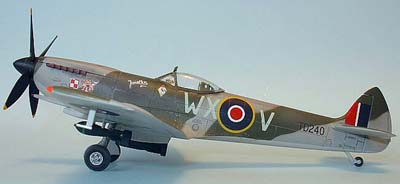
£175


|
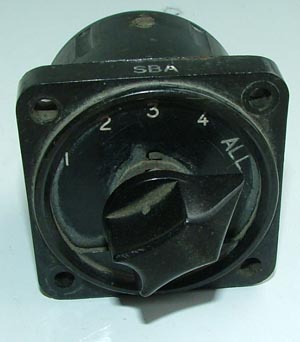 |
Fuel Tank Selector (No
11 pg1 fuel)
I bought this advertised as a
Lancaster fuel selector switch although I am dubious about
this. The tank selectors I have seen on the lanc are very
different to this.
Any info you may have will be gratefully
received,
Contact us
£55


|
|
Click on pictures to
enlarge
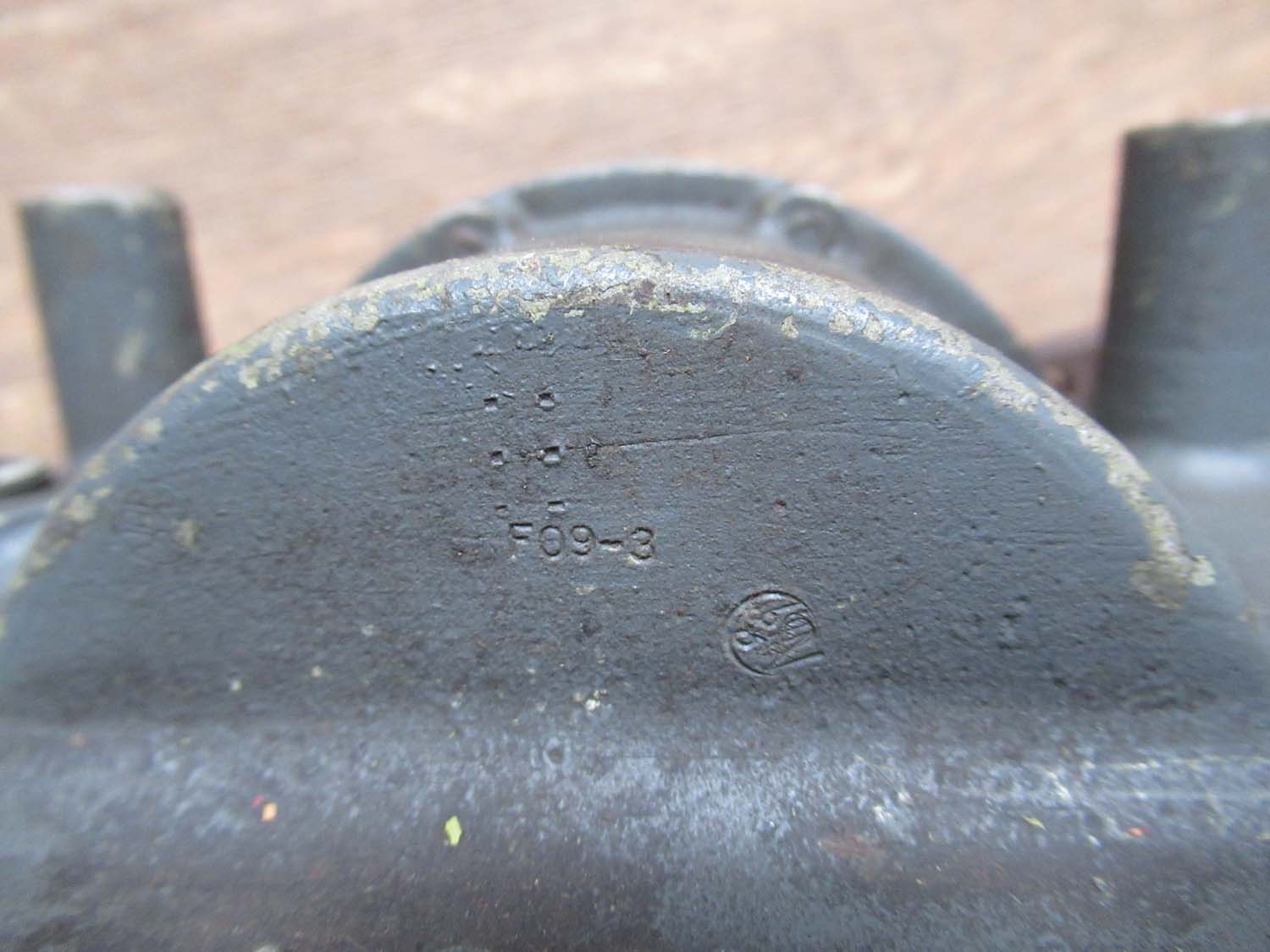
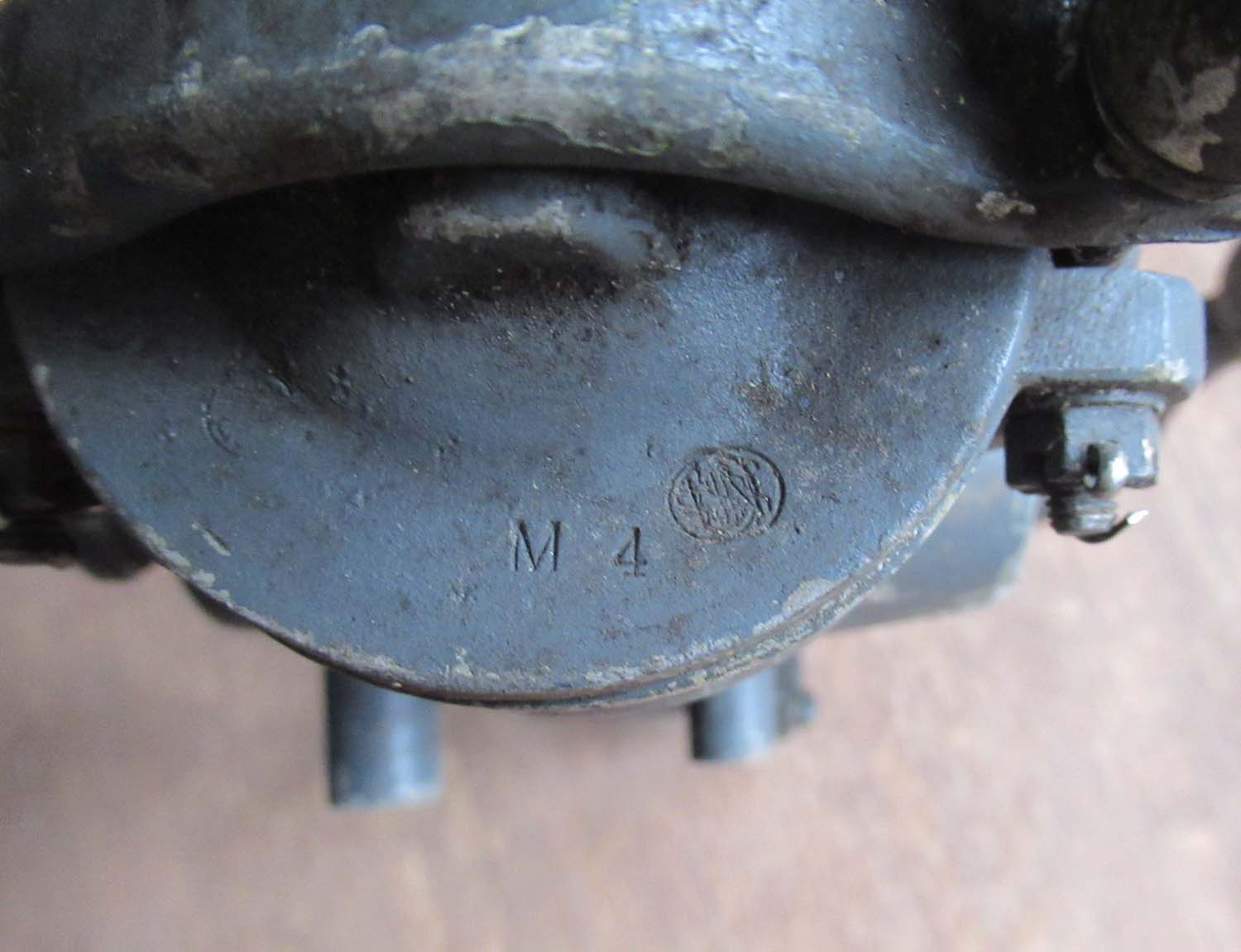
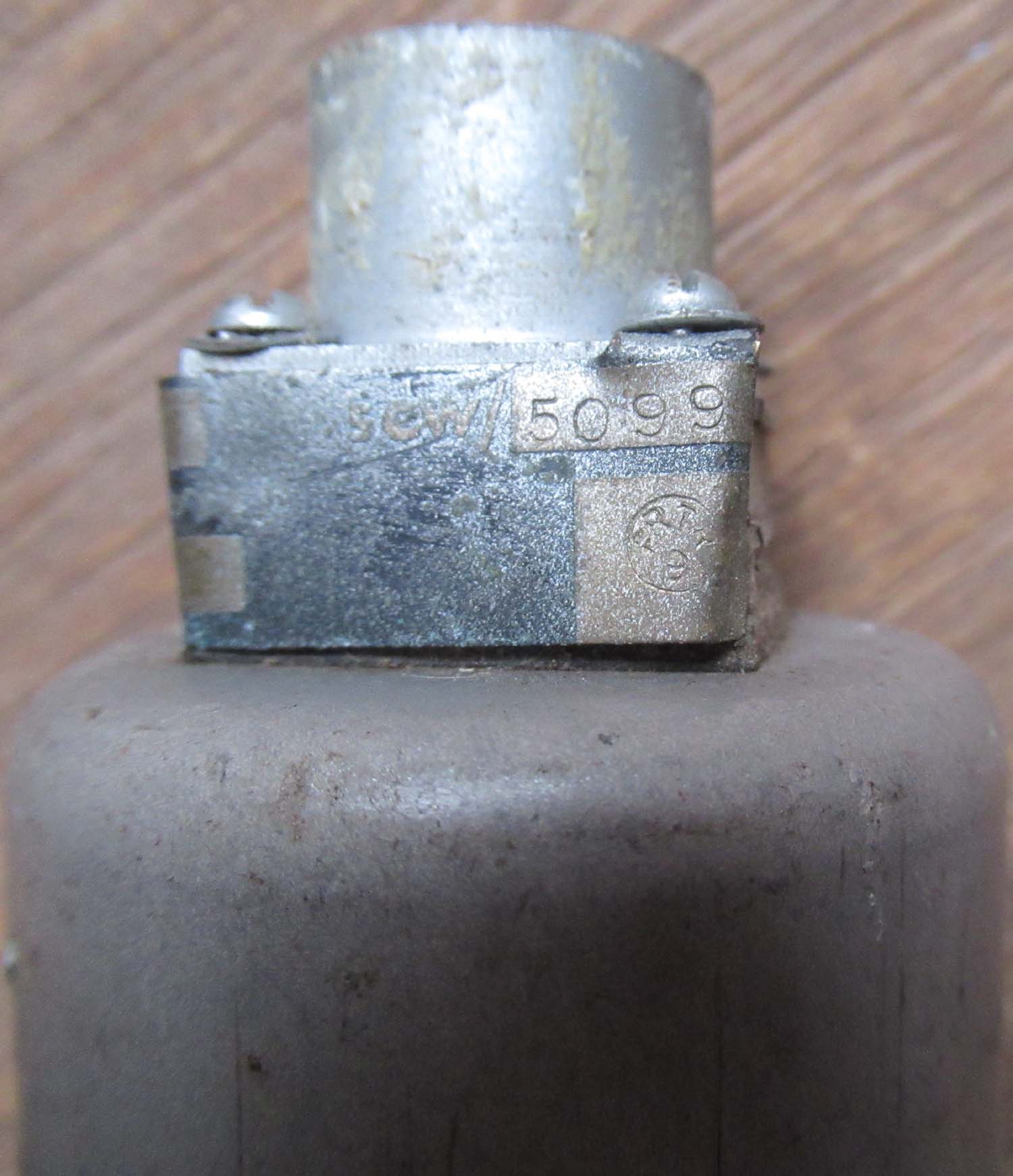 |
USAF Wobble Pump (No
10 pg1 fuel)
This is an American
fuel wobble pump. The cap on the bottom is removable for
access to the fuel filter. The small tap is the fuel
drain for checking for any water in the fuel.
It is a standard AN part and
may also be to a range of American aircraft types.
Information supplied by Mike
Nicholls originally sold to me and listed as a Turret
control so thanks to Mike for correcting the listing.
5CW/5099
F09-3
1053-1
Click on pictures to
enlarge
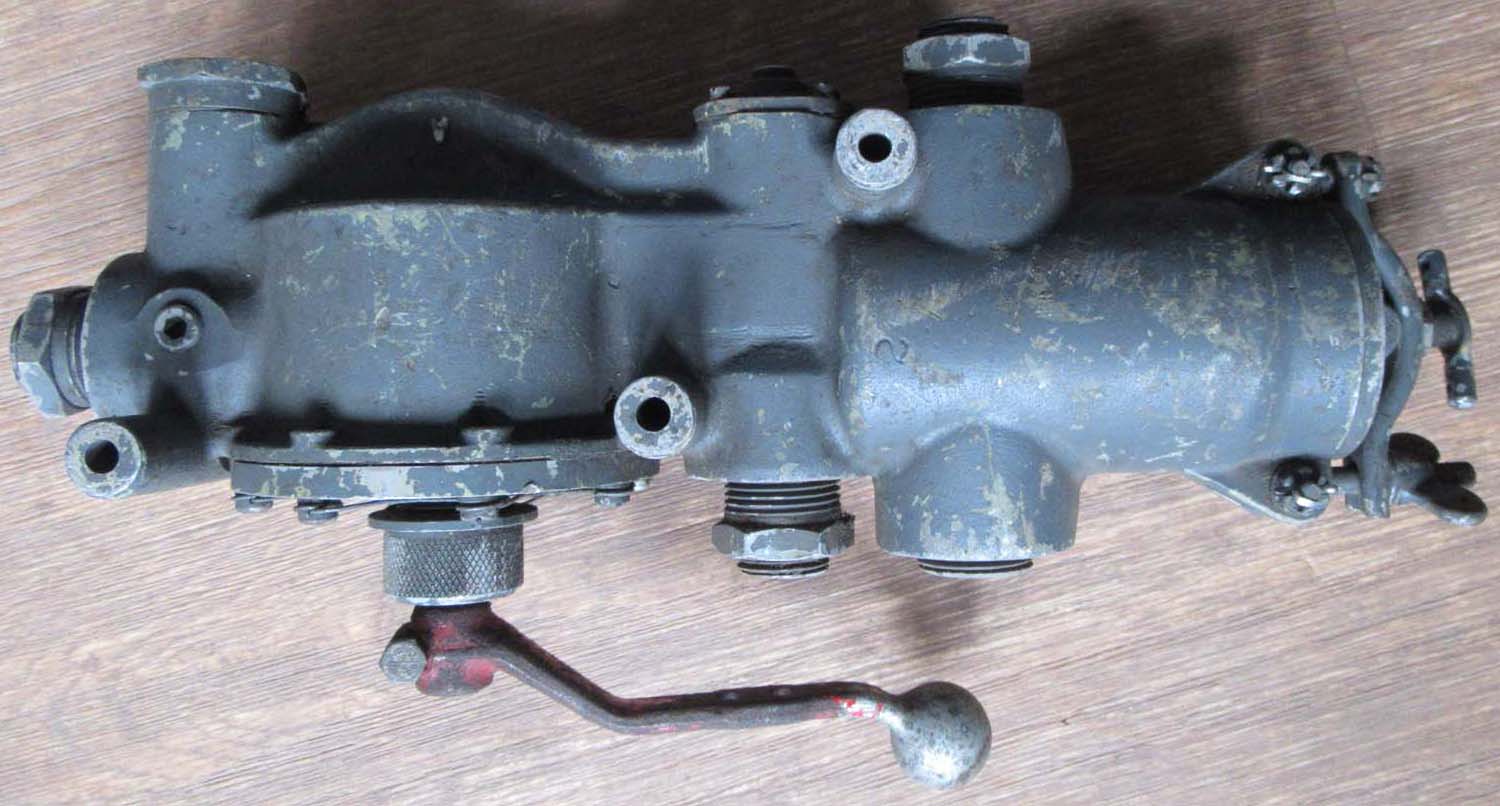
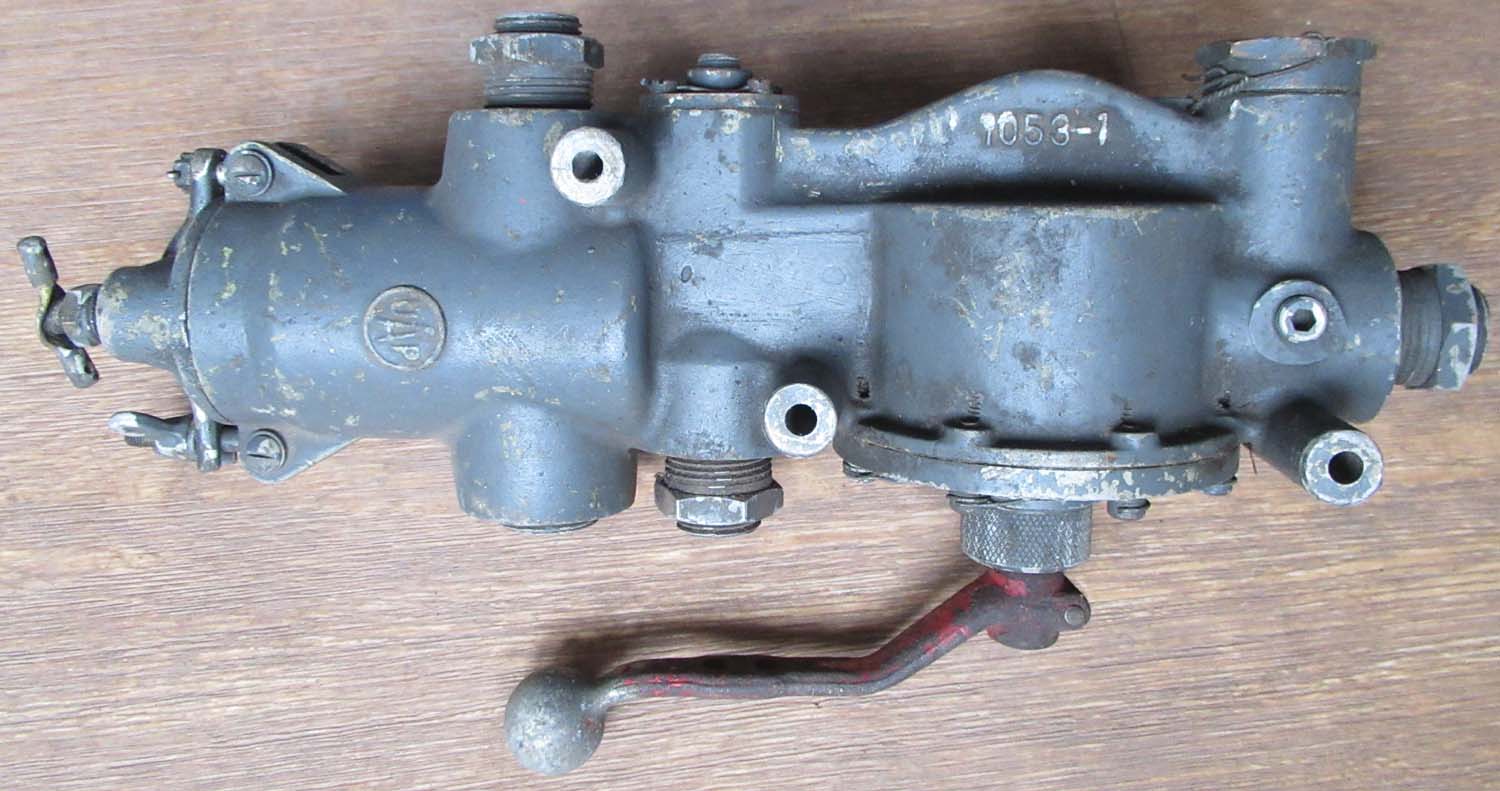
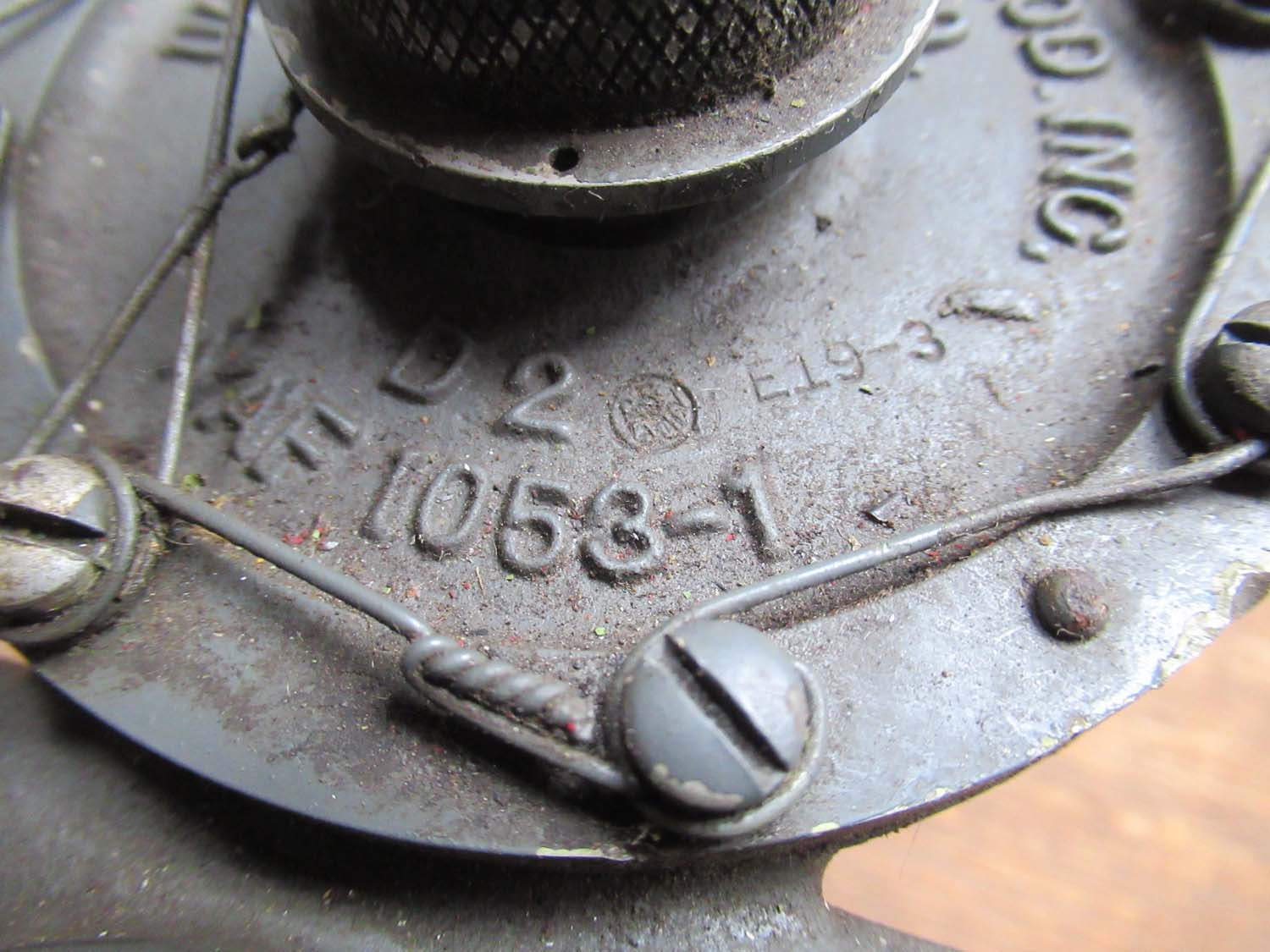
£275


Overseas
buyers
contact us for shipping
quote
|
|
Click on pictures to
enlarge
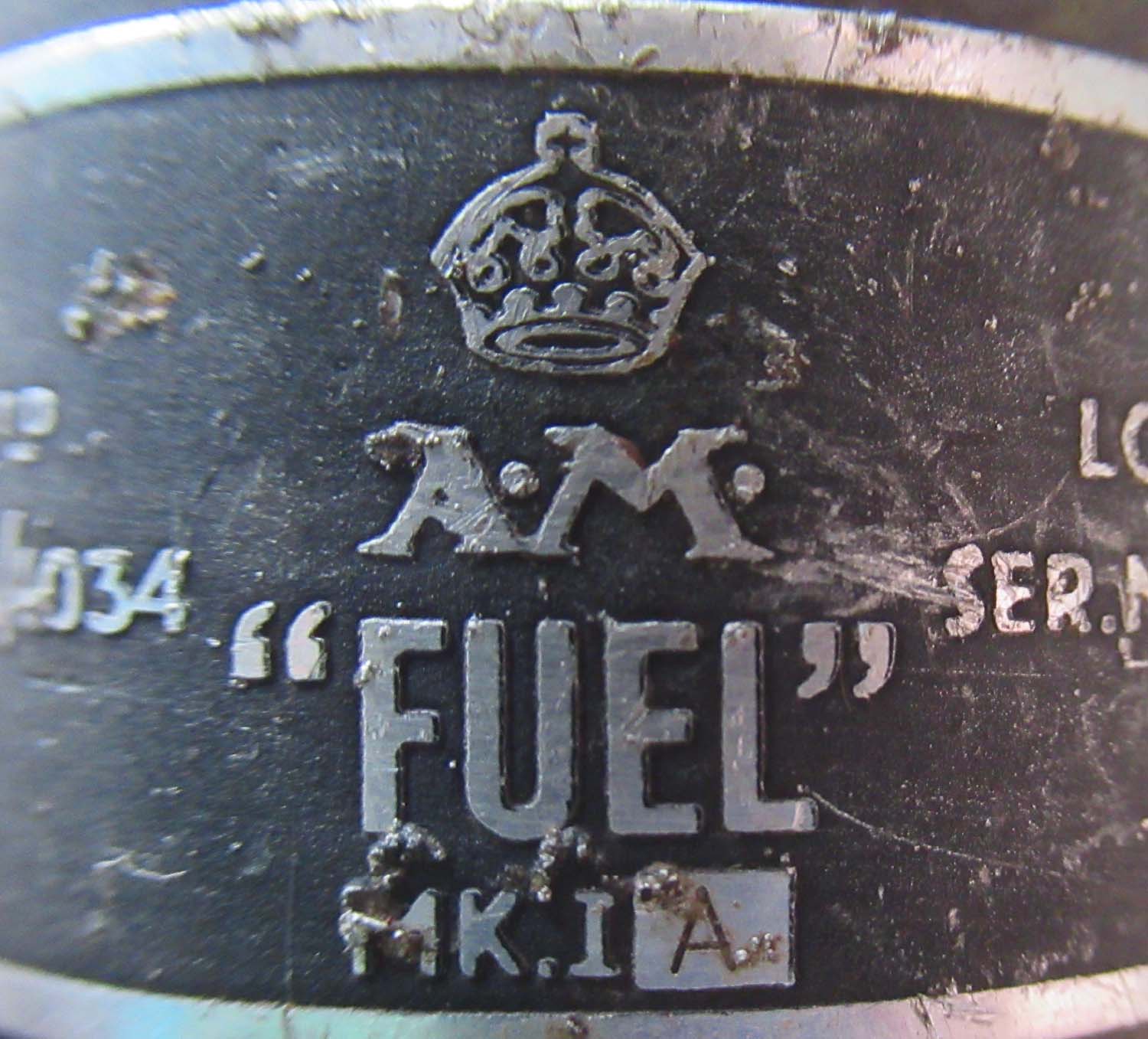
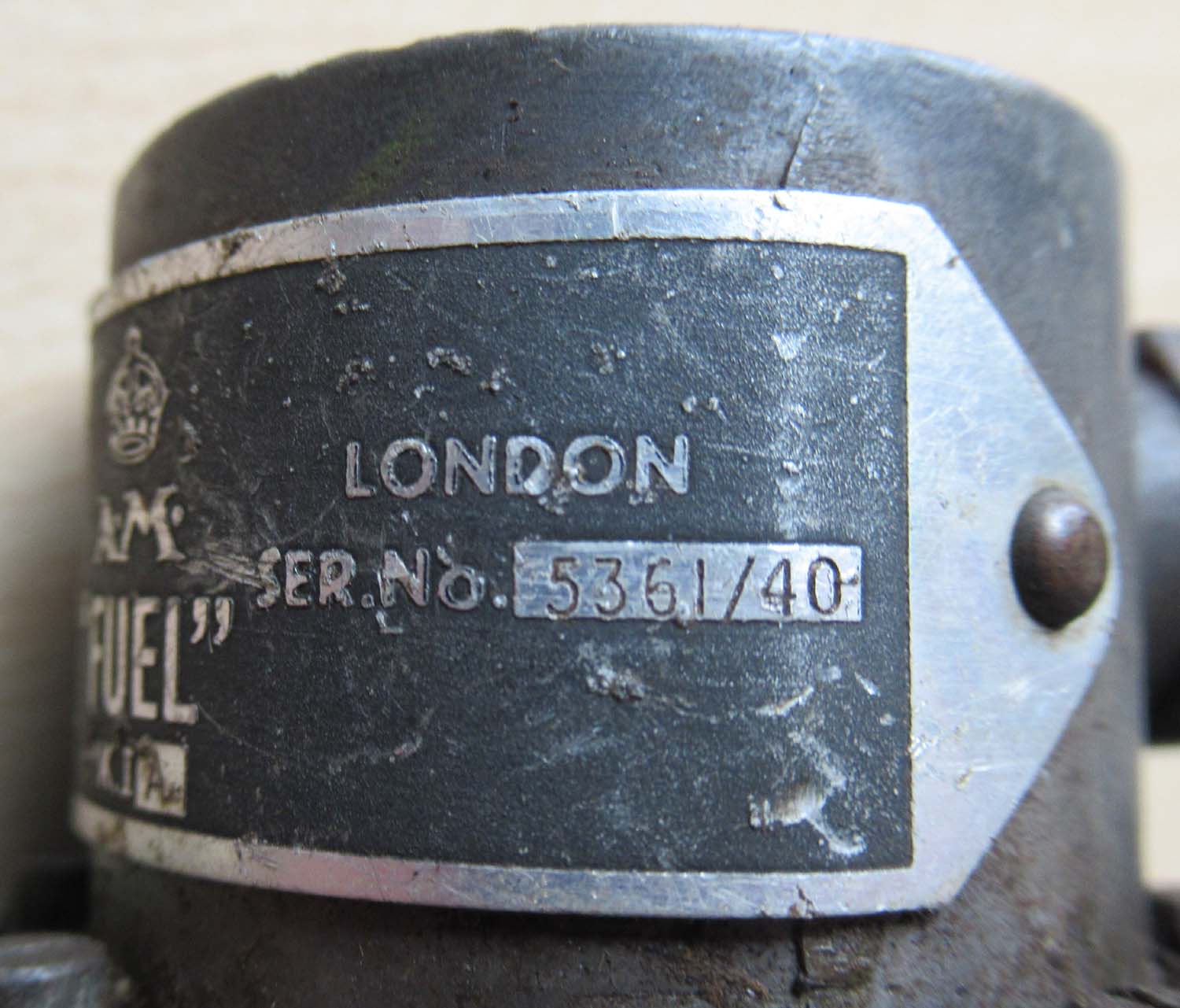
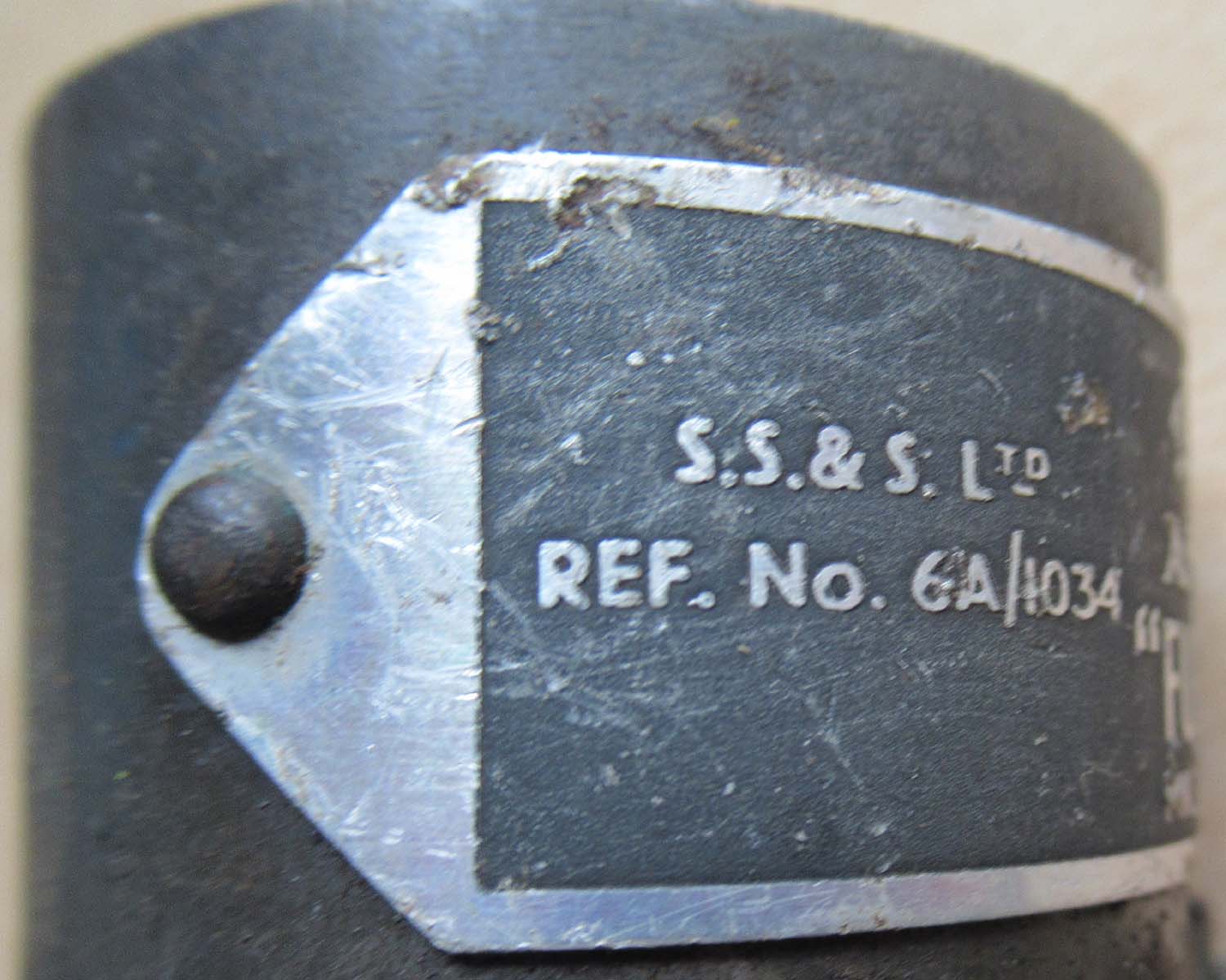
|
MKI A 1940 Fuel Pressure
Sender (No 9 pg1 fuel)
Here we have a fuel pressure sender unit, sealed.
Dated 1940.
Should
be serviceable subject to the required checks.
6A/1034
PG221/F
Serial No
5361/40
Click on pictures to
enlarge
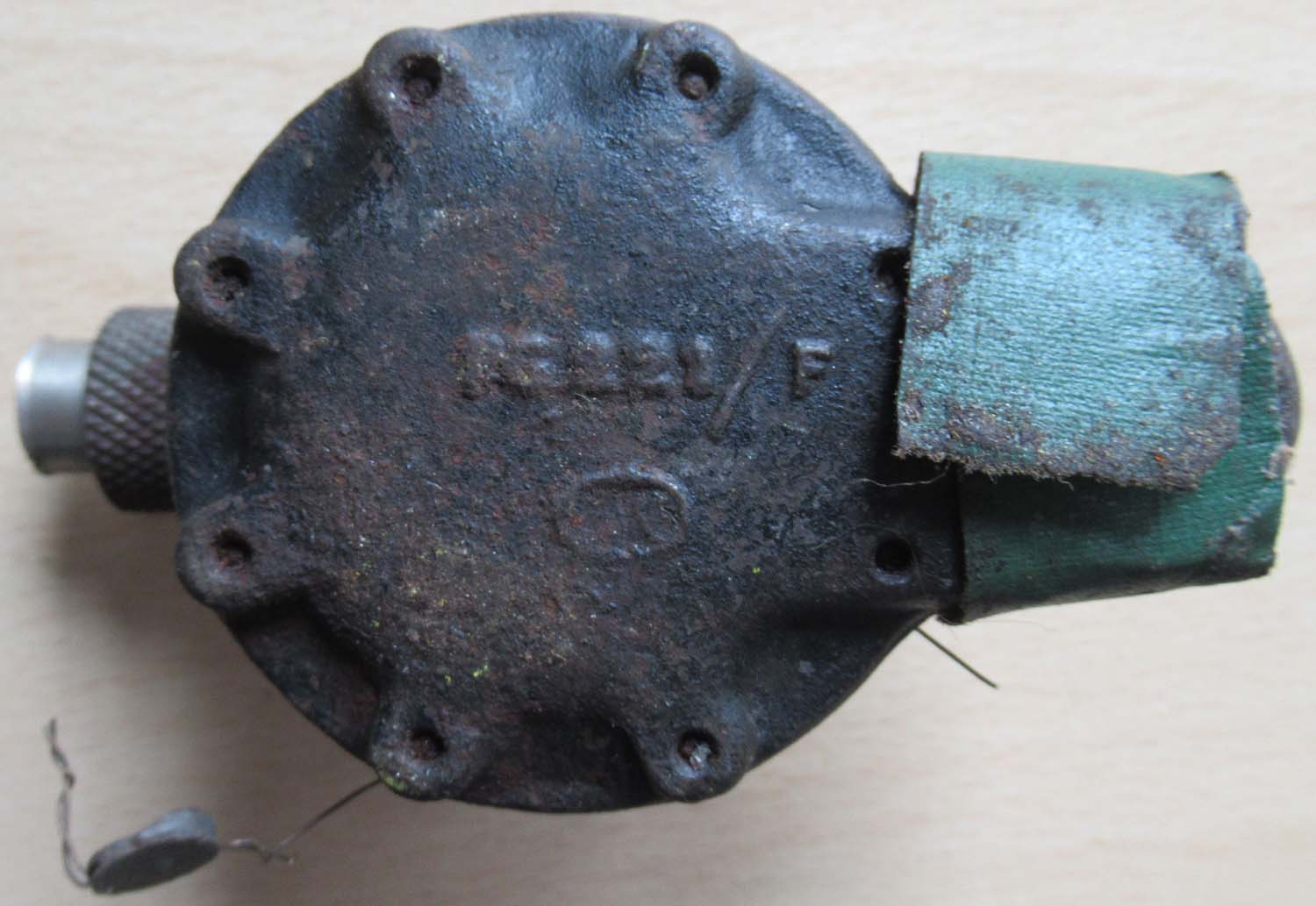
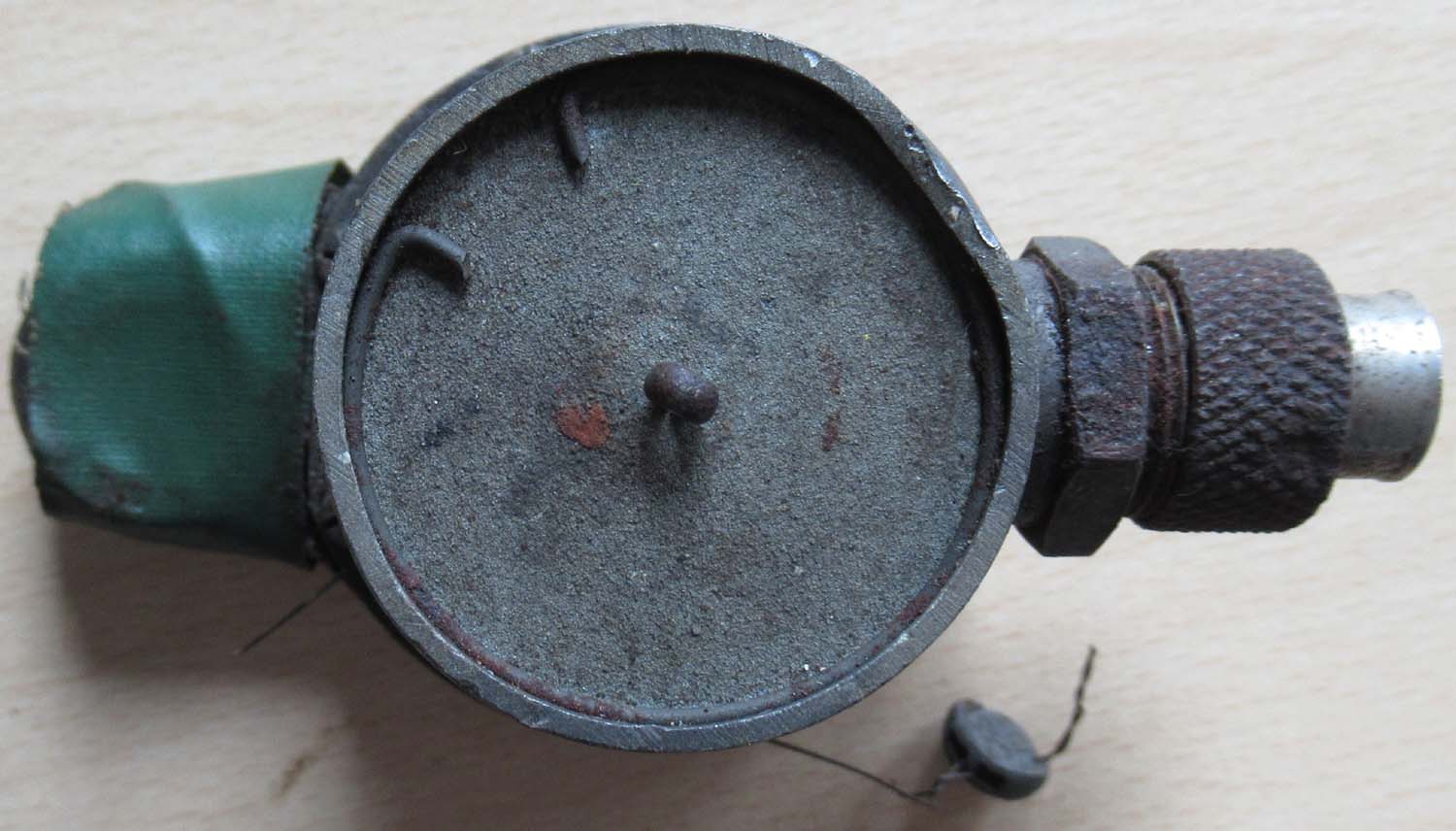
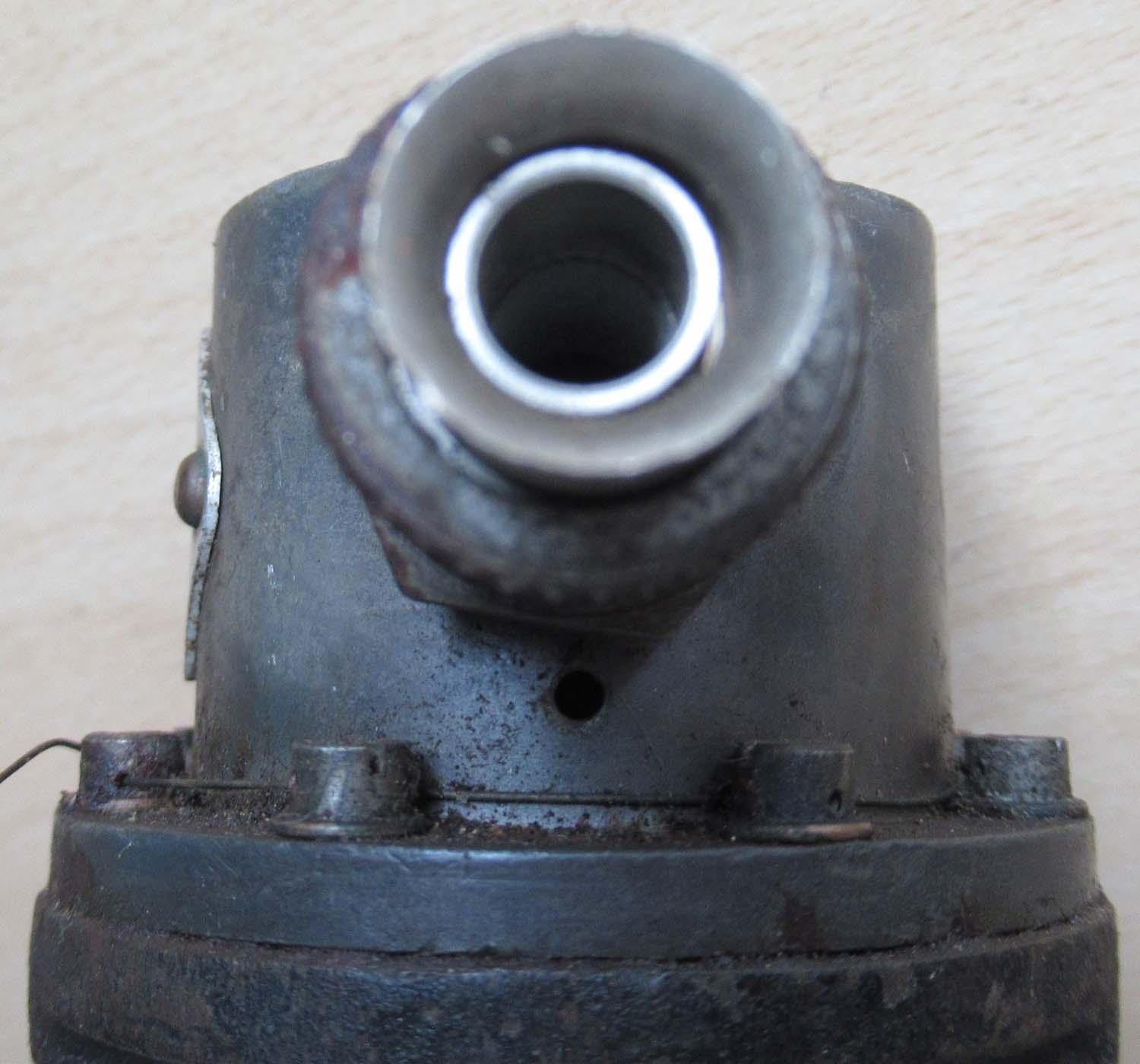
£155


|
|
Click on pictures to
enlarge
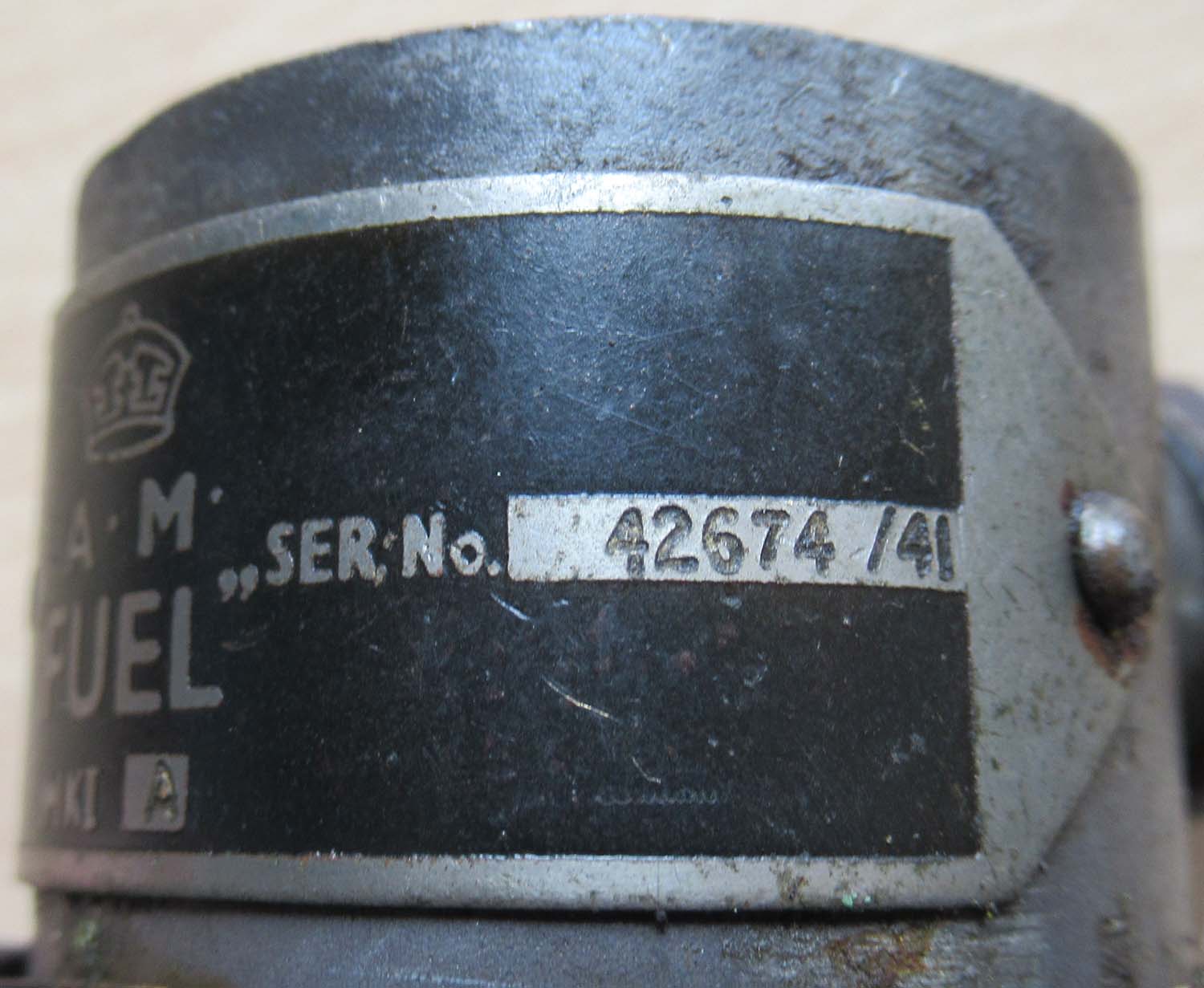
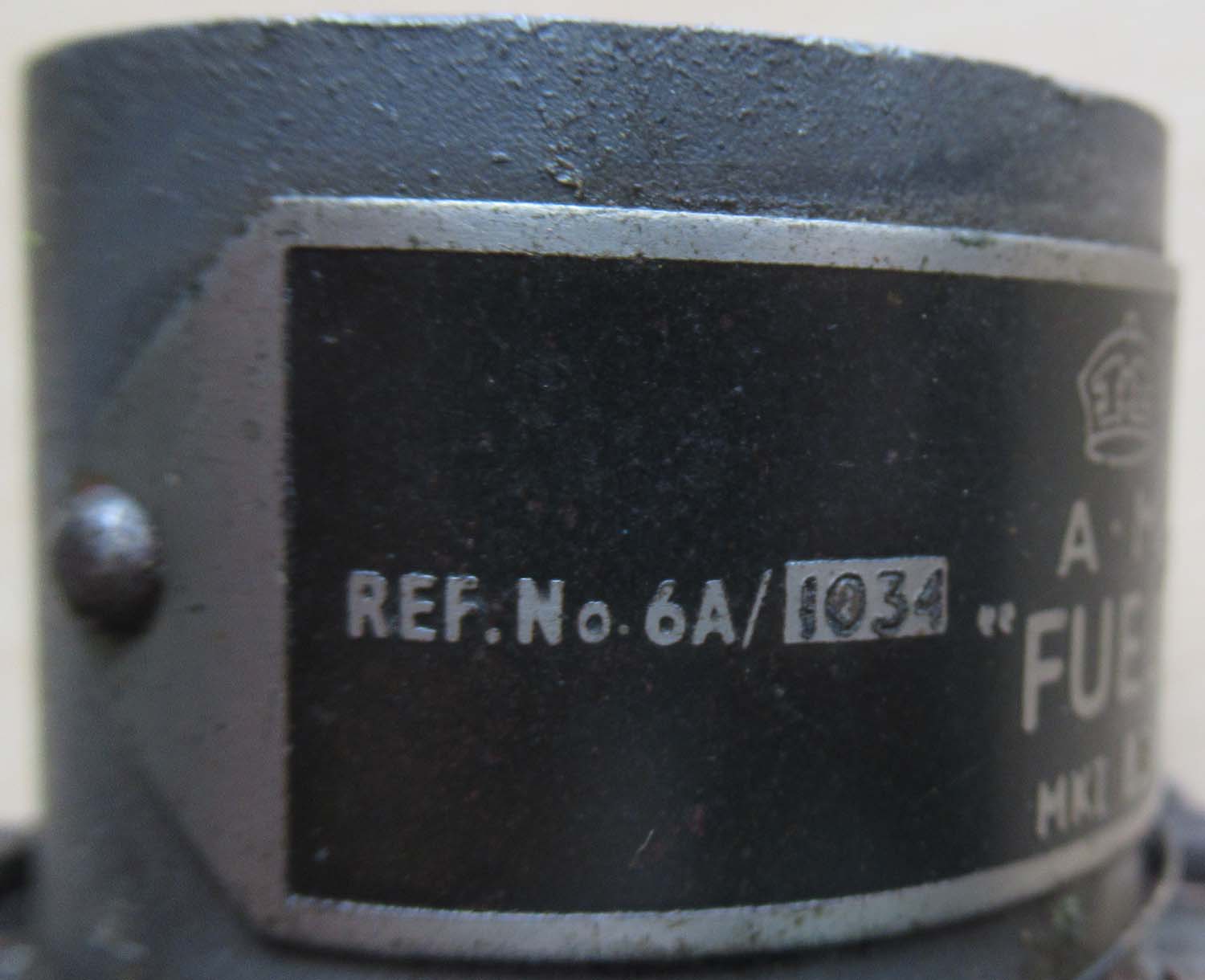
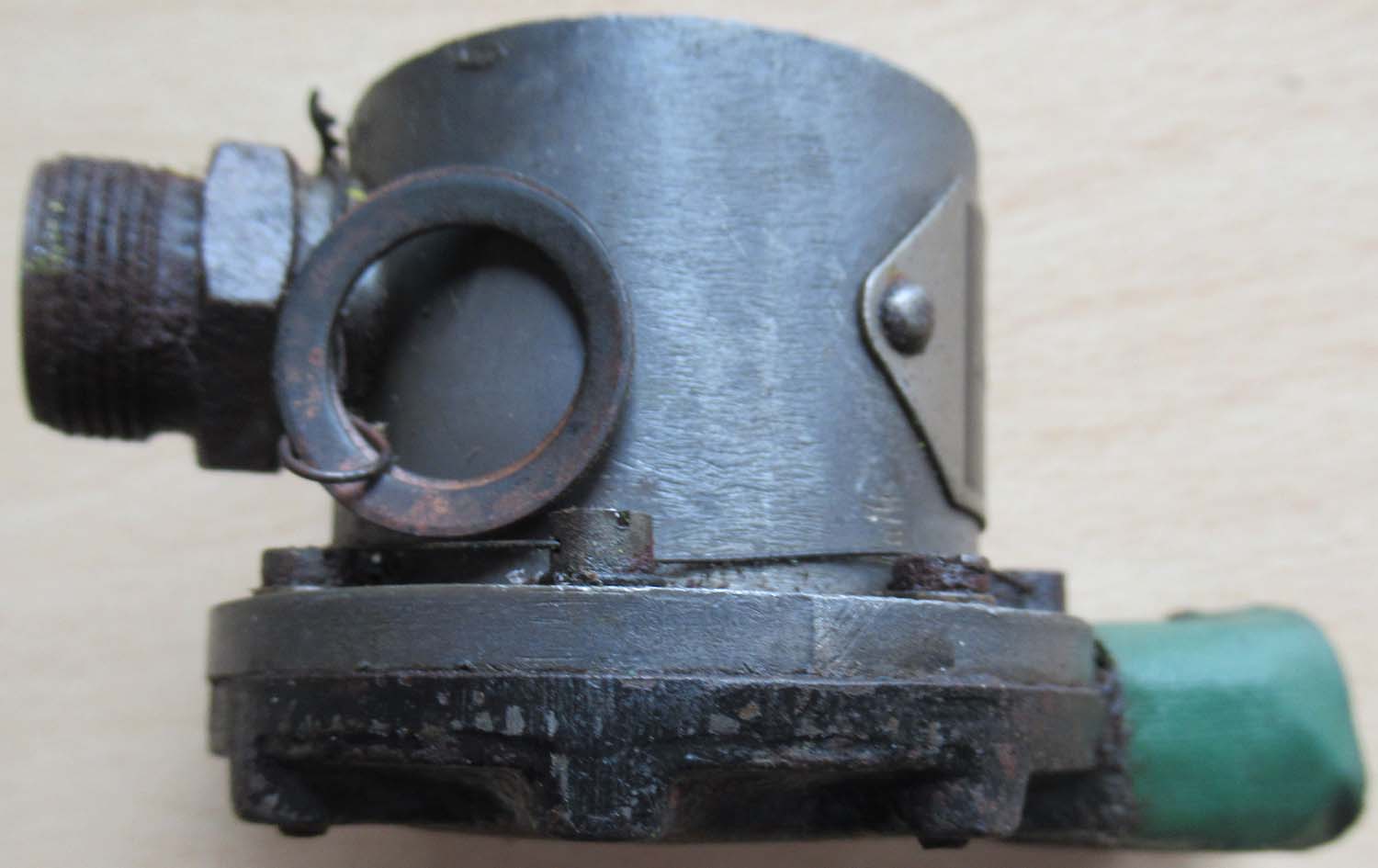 |
MKI A 1941 Fuel Pressure
Sender (No 8 pg1 fuel)
Here we have another fuel pressure sender unit,
also sealed. Dated 1941.
Should
be serviceable subject to the required checks.
6A/1034
PG221/F
Serial No
42674/41
Click on pictures to
enlarge
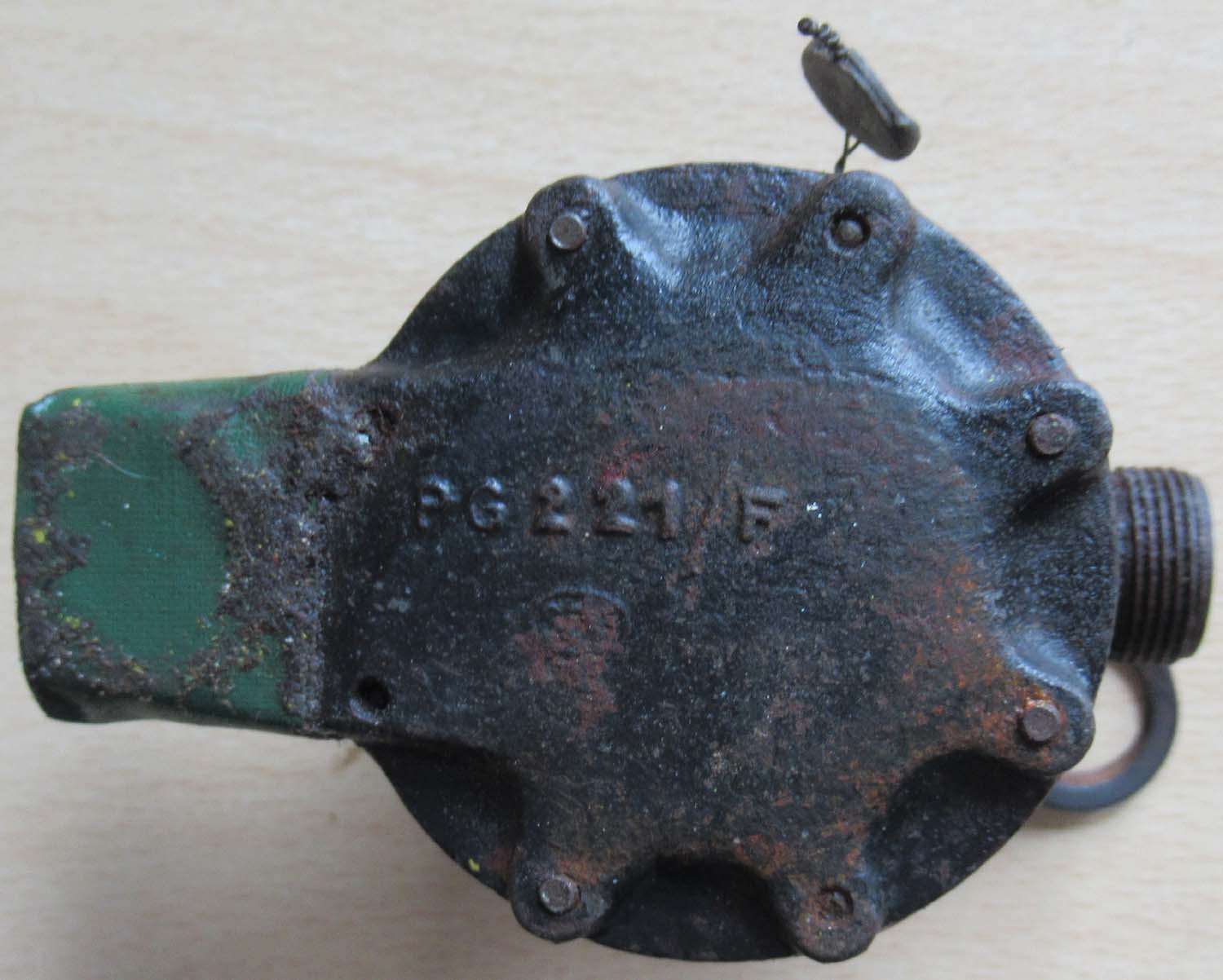
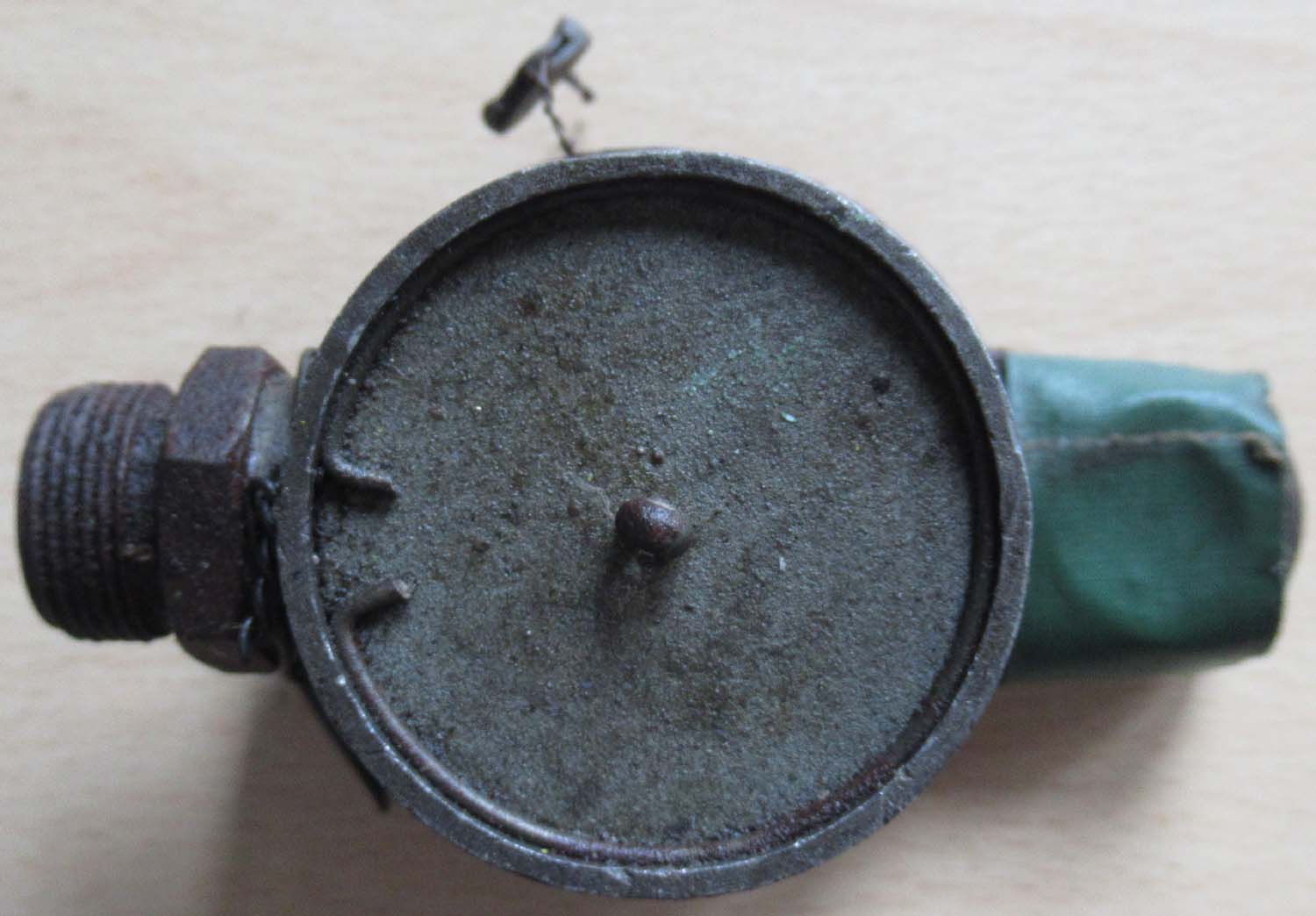
£155


|
|
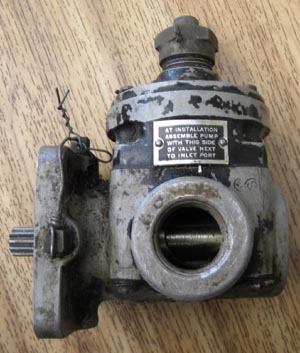
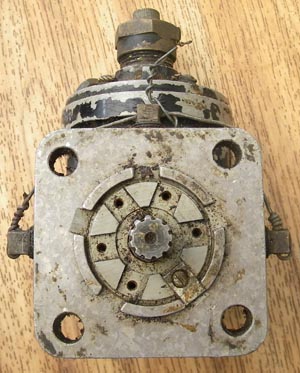
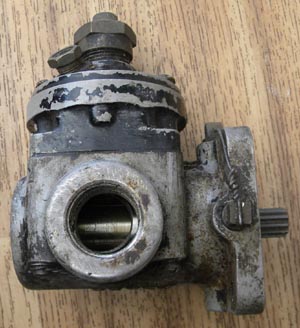 |
1940 Dated Pesco Fuel Pump
Type G-9 (No
7 pg1 fuel) Here we
have a nice Pesco fuel pump, dated 1940. Appears serviceable.
R-600-CW
Serial No
11315
Click on pictures to
enlarge
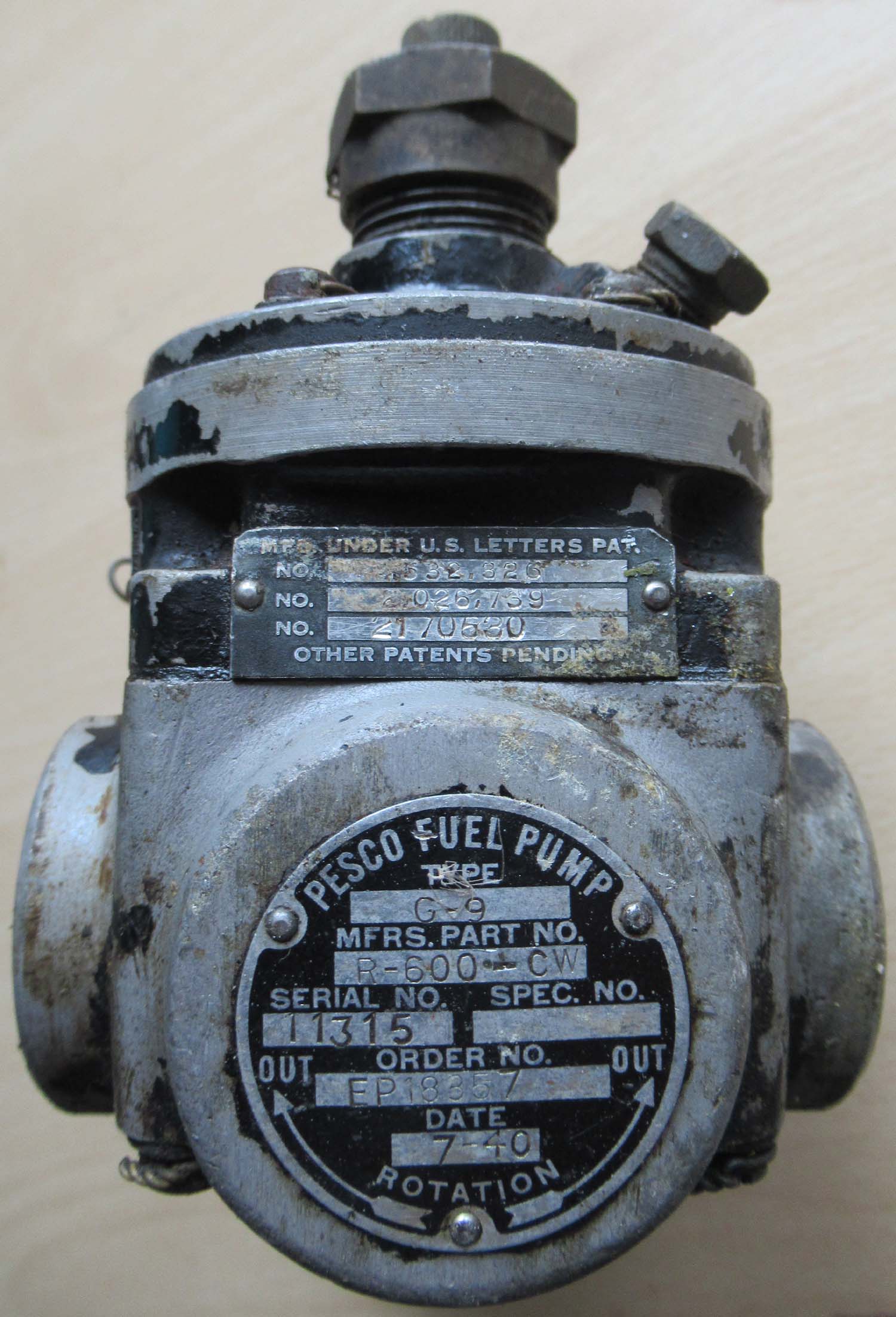
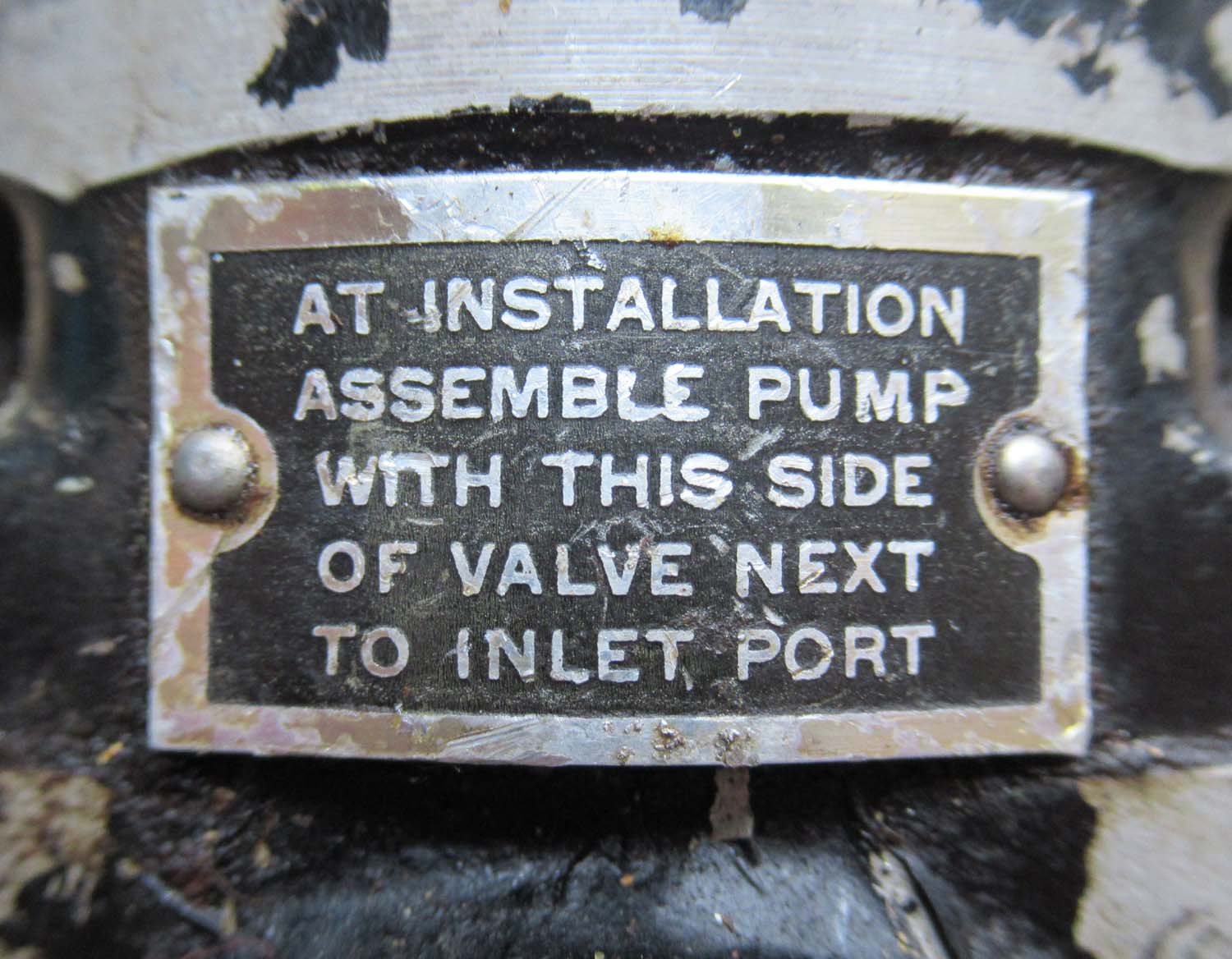
£375


|
|
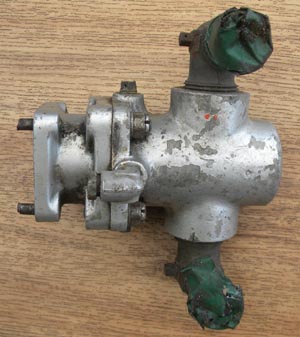
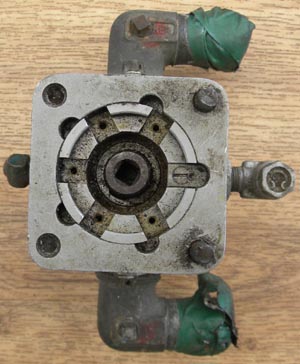
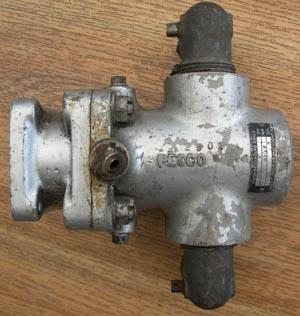 |
1942 Dated Pesco Fuel Pump (No
6 pg1 fuel) Here we
have another Pesco fuel pump, dated 1942. It also appears serviceable.
246-6
492 C
2501.A
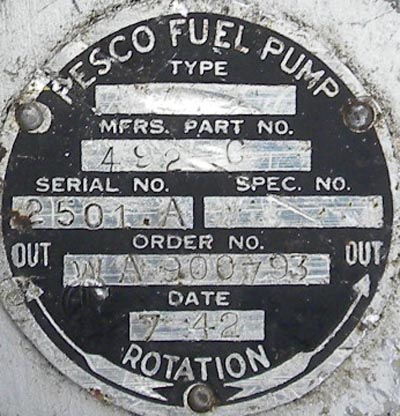
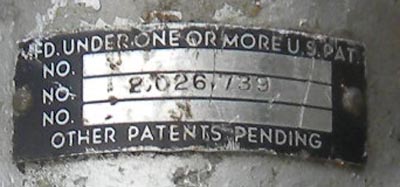
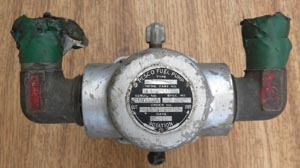
£375


|
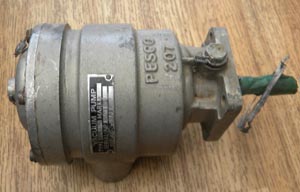
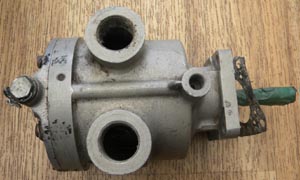
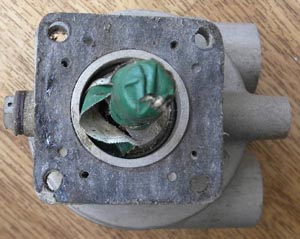 |
Pesco Vacuum
Pump (No 5 pg1 fuel)
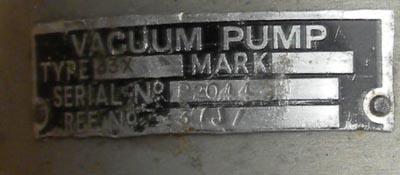

Serviceable Pesco vacuum
pump nice Air ministry crown.
£375


|
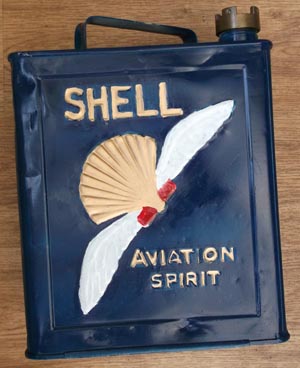
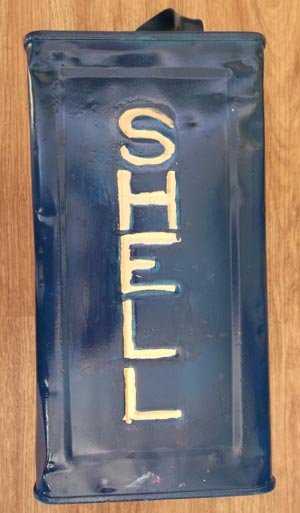 |
Shell Vintage Aviation
Fuel Can (No 4 pg1 fuel) This is a stunning 2
gallon shell fuel can dating from the late 1930's.
It has
been restored to its original colours.
A rare piece and a
great addition to any aviation collection.
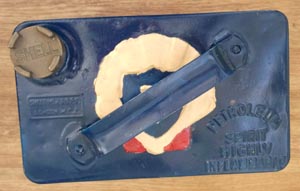
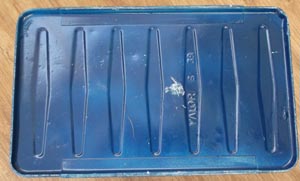
£175


|
|
Click on pictures to
enlarge
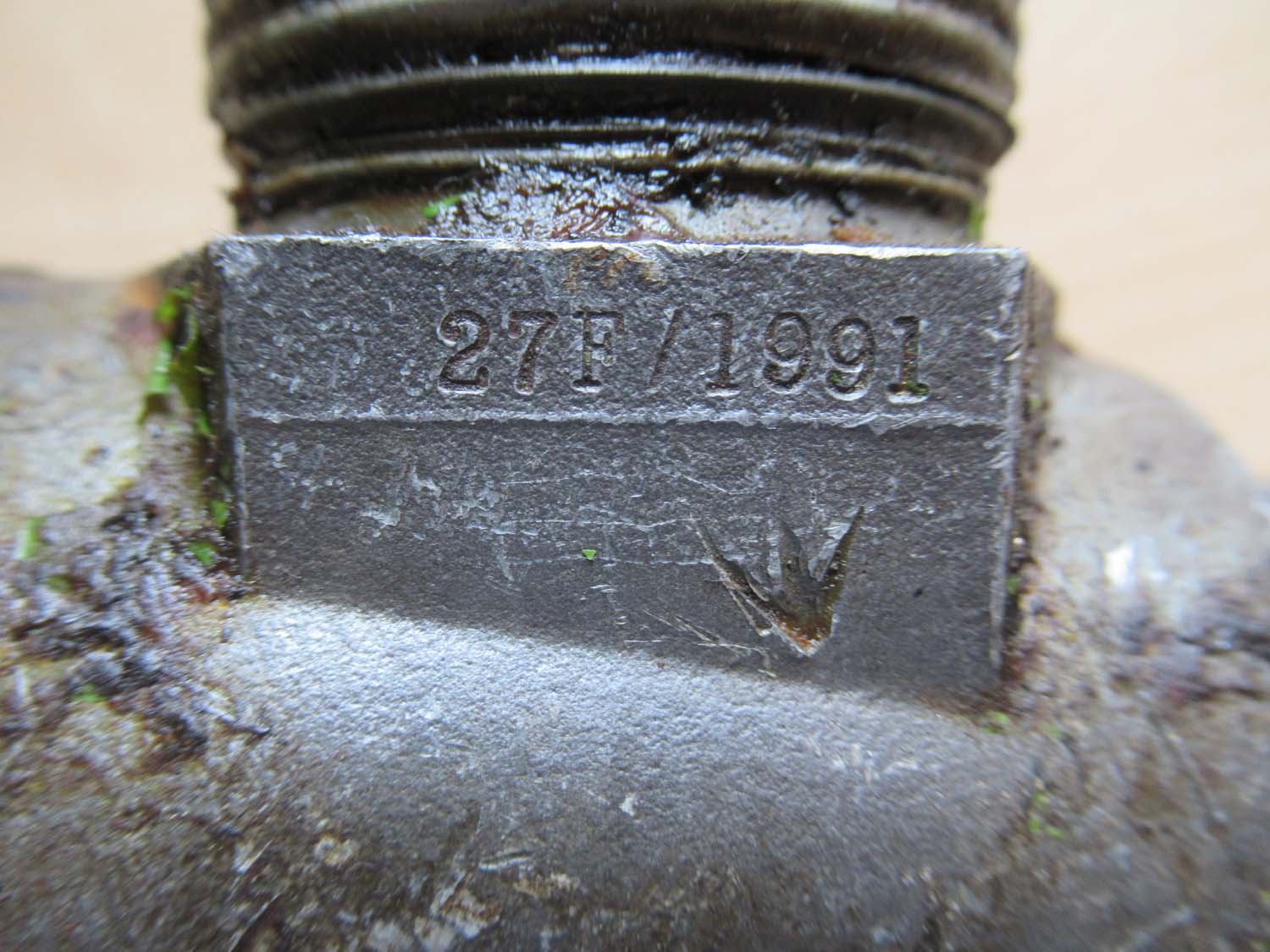
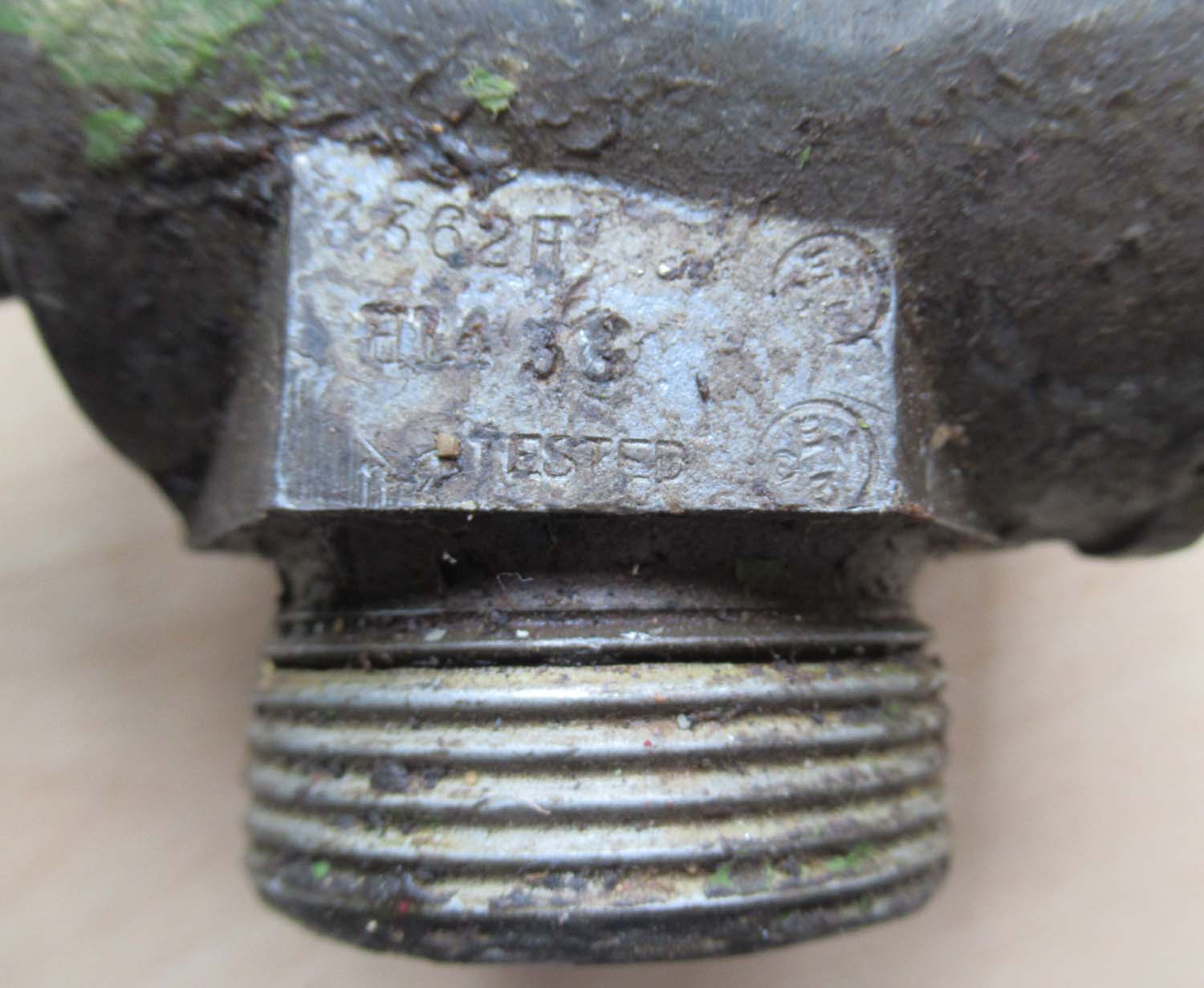
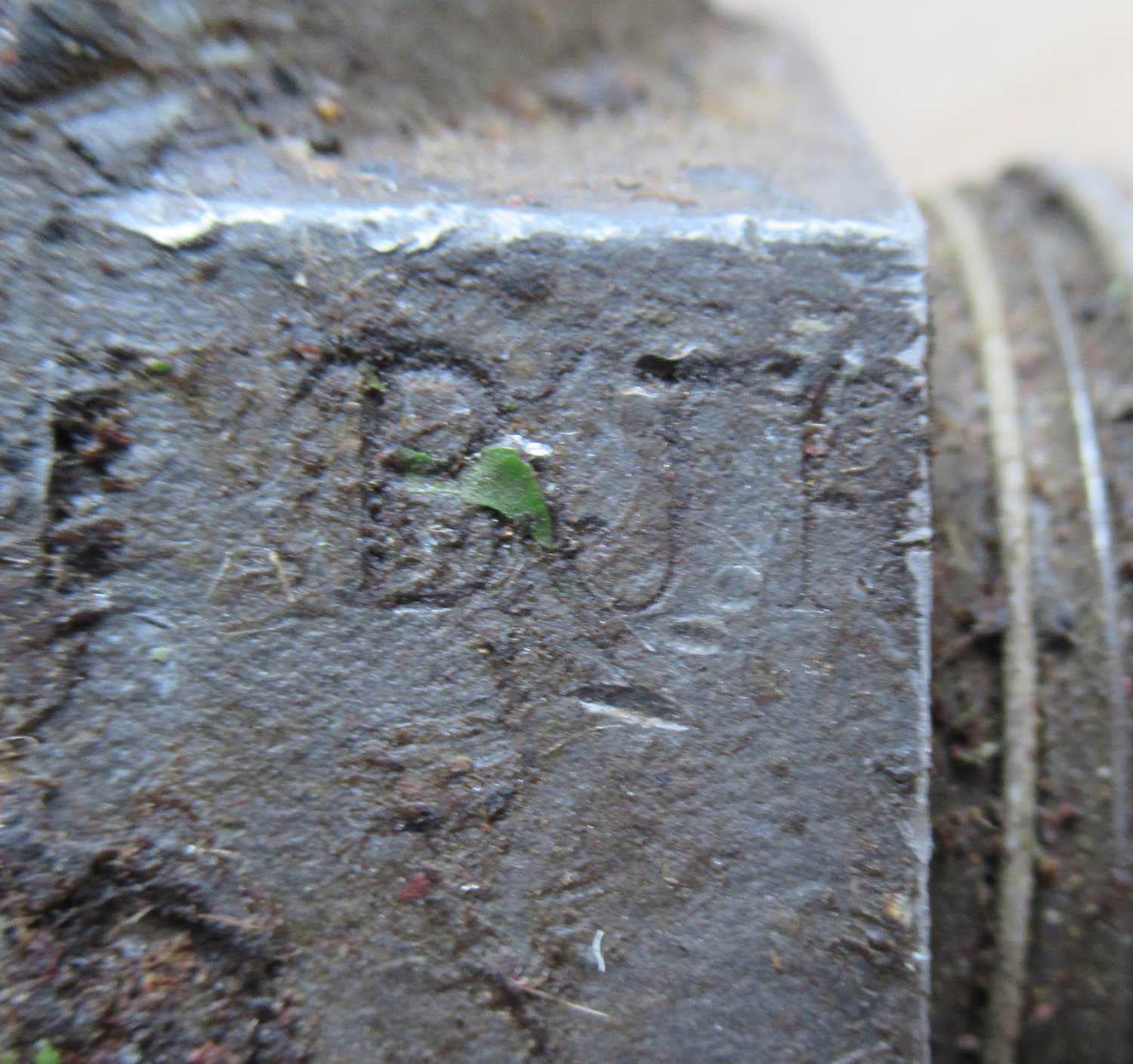 |
Fuel cock 27F/1991 (No 3 pg1 fuel)
Here we have a fuel cock.
Ref No
27F/1991
Click on pictures to
enlarge
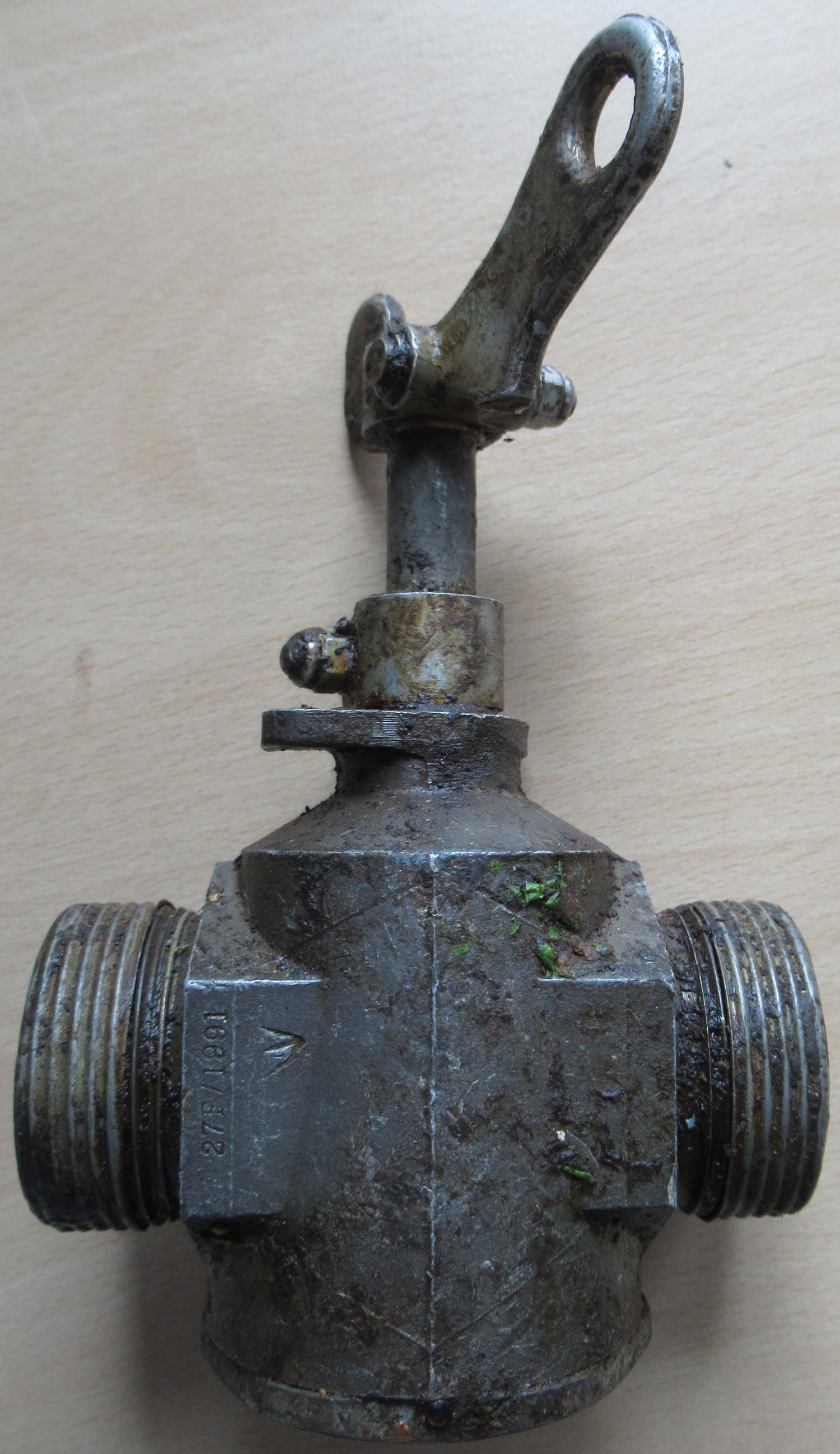
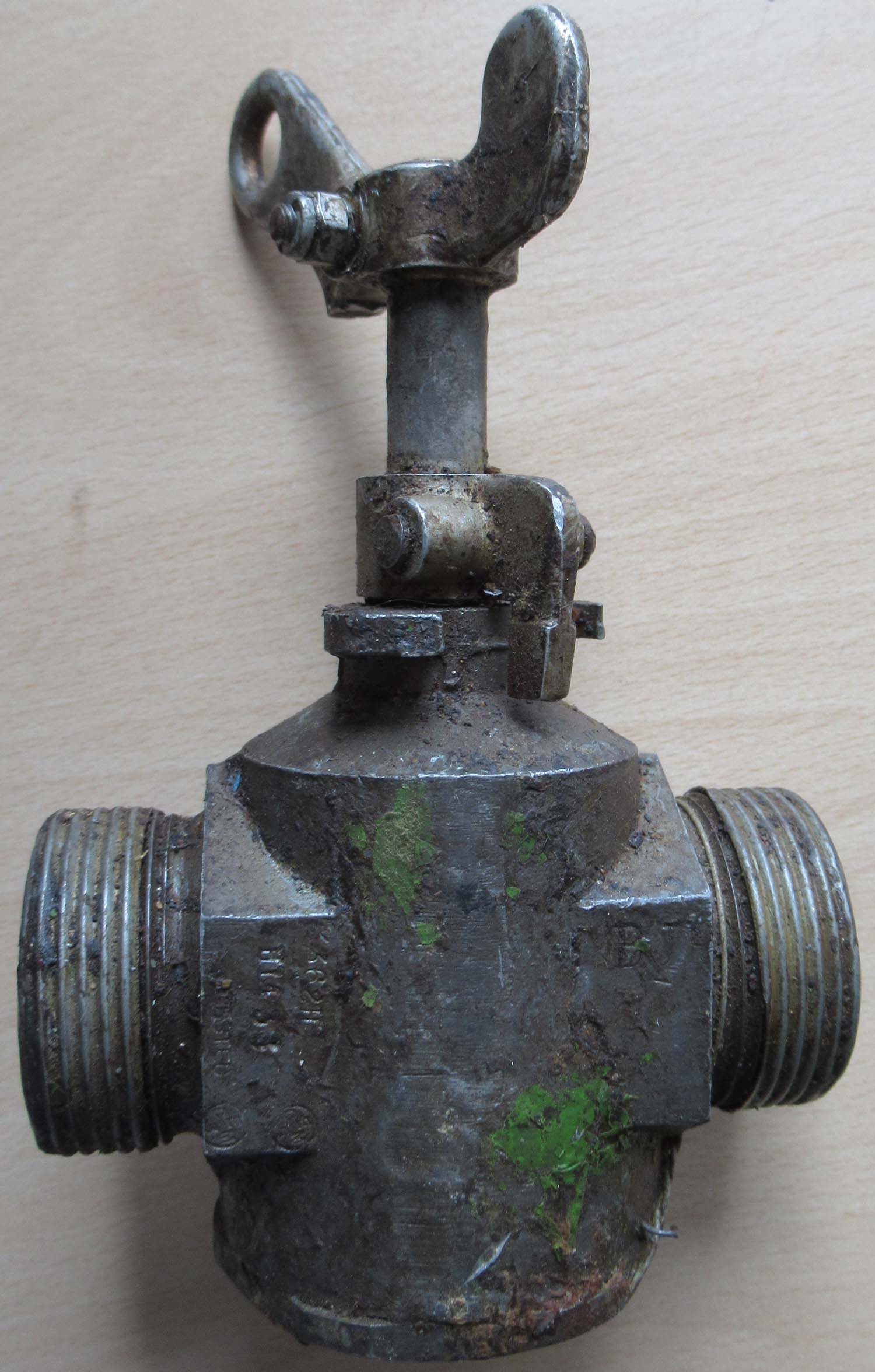
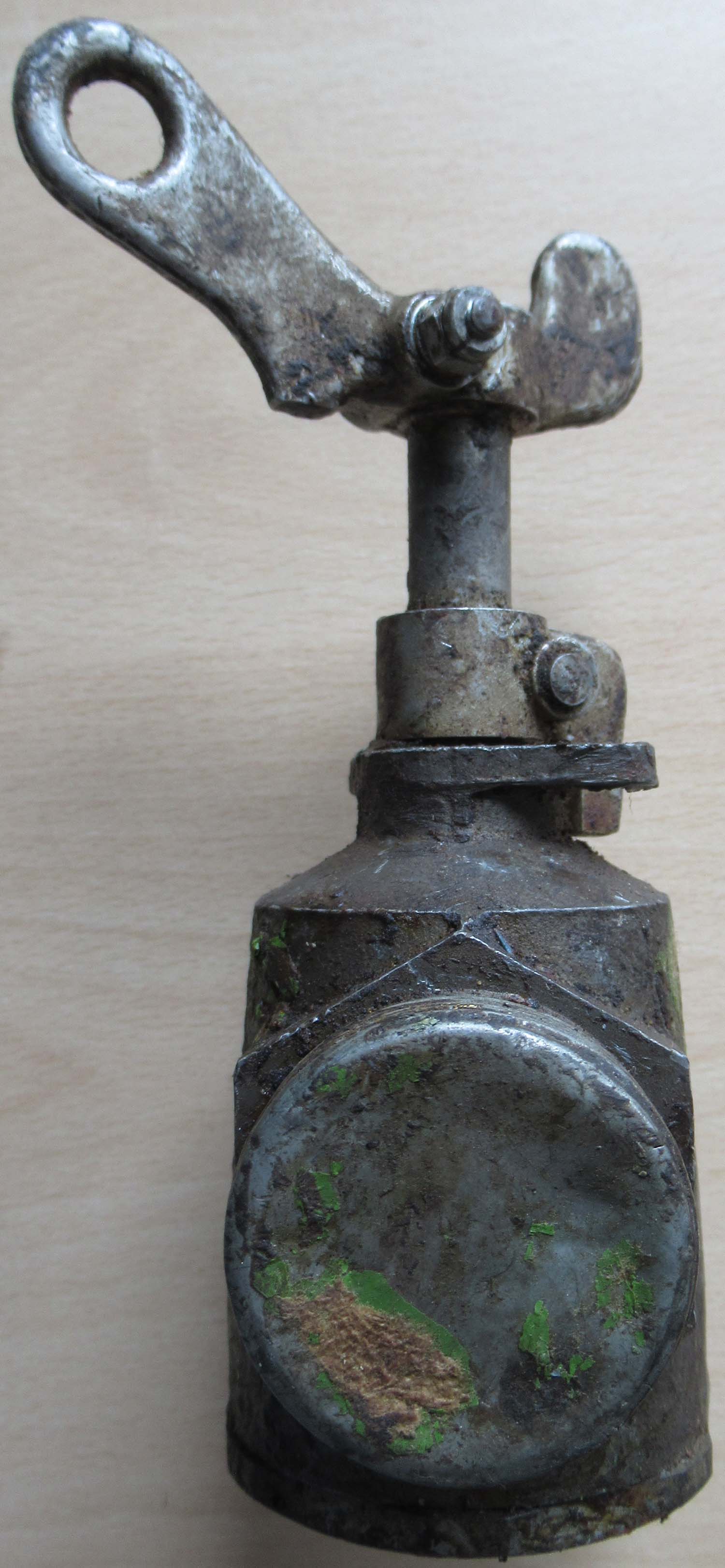
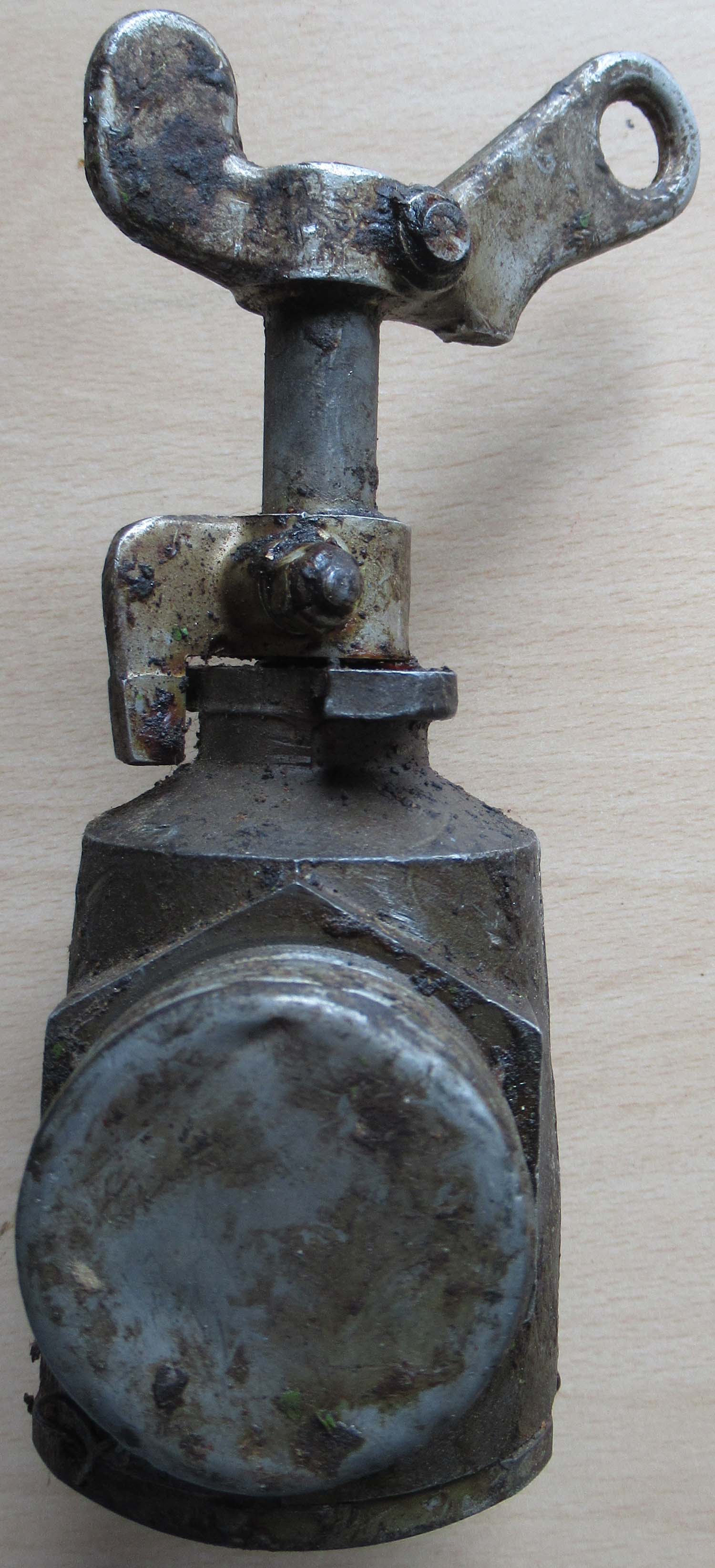
£275


|
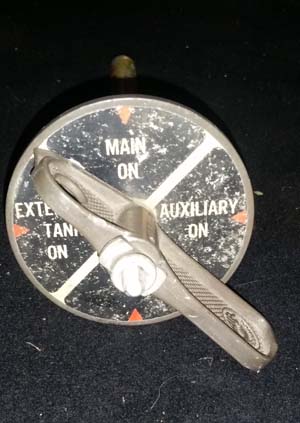
Click on the pictures to
enlarge them.
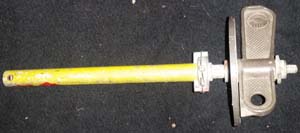
 |
P-47 Thunderbolt Fuel Cock (No 2 pg1 fuel)
This is Fuel Cock as used
in the Republic P-47 Thunderbolt
It is Manufactured by AIR
inc Associates
Part No
33-B-6001
Assemberly
No 93F65226-1
Seen in
Situ Below
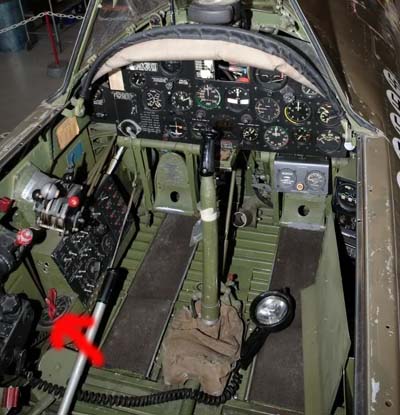
£275


|
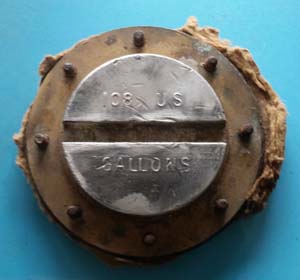
Click on
pictures to enlarge
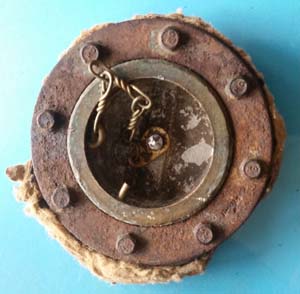
Out of stock more wanted please
contact me |
108 Gallon Paper
Drop Tank Filler Cap (No 1 pg 1 fuel)
Here is a Fuel Filler Cap
for the 108 Gallon Paper Drop Tank.
This was found in the
Netherlands by Aviation Archaeologists and There is still
parts of the Paper attached to the Filler Cap
The
original cigar-shaped 108 US Gallon tanks were delivered
from British sources, and had a 'smooth' exterior, being
constructed from mild steel. But, due to the need for this
'precious' metal for more important uses, a paper version
was designed, the thinking being that, why waste valuable
steel on a 'use once then throw away' product.
They were made from
laminations of paper card, with a plastic resin
impregnation, and moulded rather like a papier mache
'model'. They were even sometimes referred to as 'papier
mache' tanks, and were, to an extent, an early form of what
we now know as fibre glass, with paper rather than extruded
glass fibres.
The paper was wound
around the main body because it was a simple cylinder. The
cones were more complex and were hand laminated.The paper
that covered the cones was cut like flower petals. As each
layer was applied with glue it was squeegeed with a
specially shaped squeegee. After forming wood baffles were
riveted in place.Other pipes and fitting were added. The
interiors of the three sub assemblies were coated with glue
and then sprayed with fuel resistant shellac laquer.The
three assemblies were bonded together in a horizontal hand
cranked press. Once the tank was cured it was pressure
tested to 6 psi.
Acceptable tanks were then given two coats of cellulose
dope. They were then given two coats of aluminum paint
applied by spray. Stenciling was then applied. 13,166 tanks
were made.
However, their use
was mainly by the 8th USAAF, and rarely by British forces
(RAF or FAA), as the requirement was for use by the longer
range escort fighters.
Tanks of 108 US Gal
capacity in steel were still used by the USAAF, but these
became more common from American production sources. These
could be identified by their finish in Neutral Gray paint.
The British - produced paper tanks, distinguishable by their
'ribbed' appearance and silver doped finish, were used on
the P47 and P51, as well as the 'tear drop' steel under-wing
tanks on the latter, and the early steel belly tank, and
later, flatter belly tank on the former.
The tanks were made
of Kraft paper laminated with resorcinol glue. There were
three main components. The nose cone, tail cone ,the middle
body. These were shaped over wood forms.
Seen on
the Tank in Situ Below above the Writing
.jpg)
|
|
Click on the
pictures to enlarge
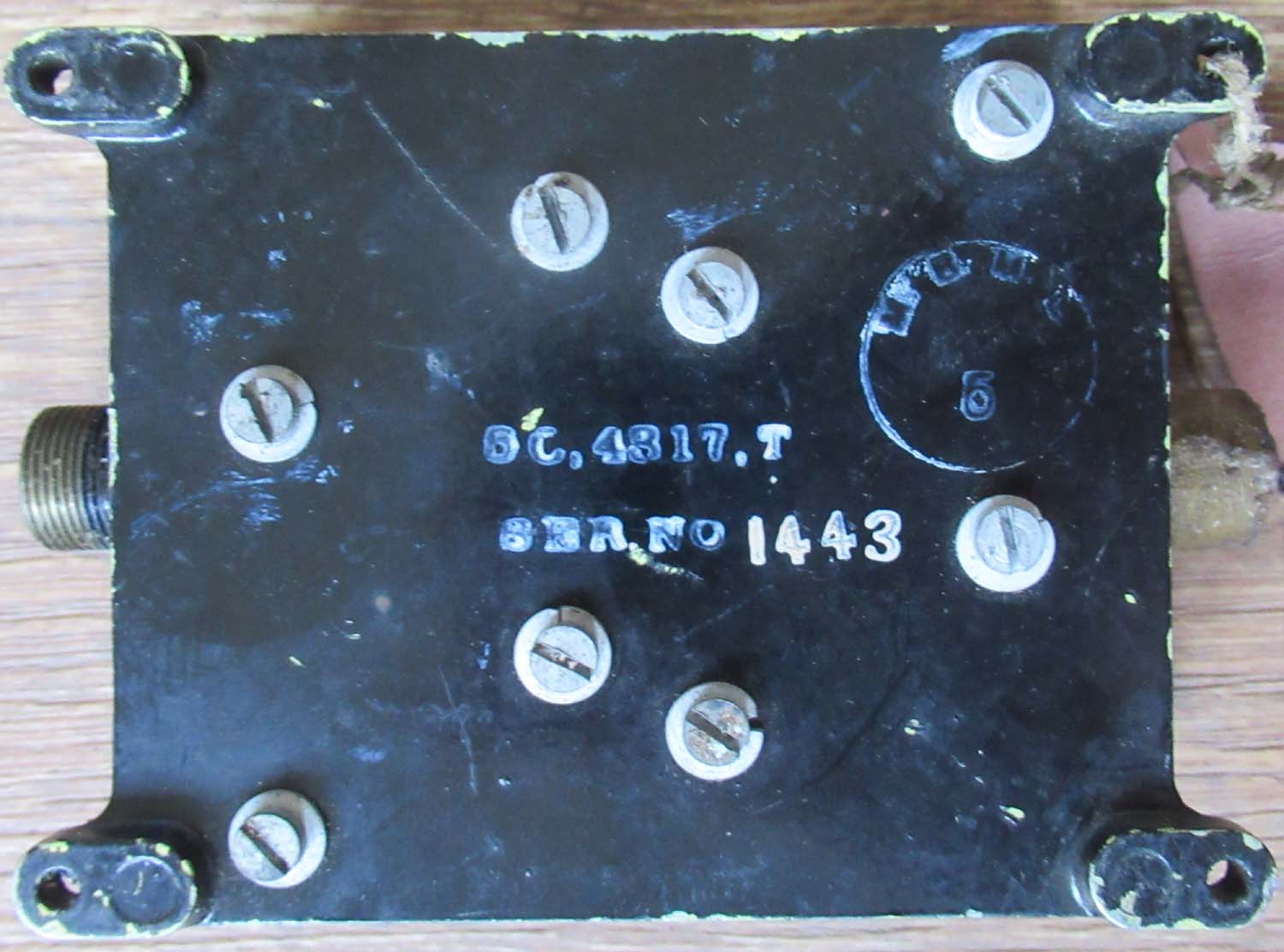
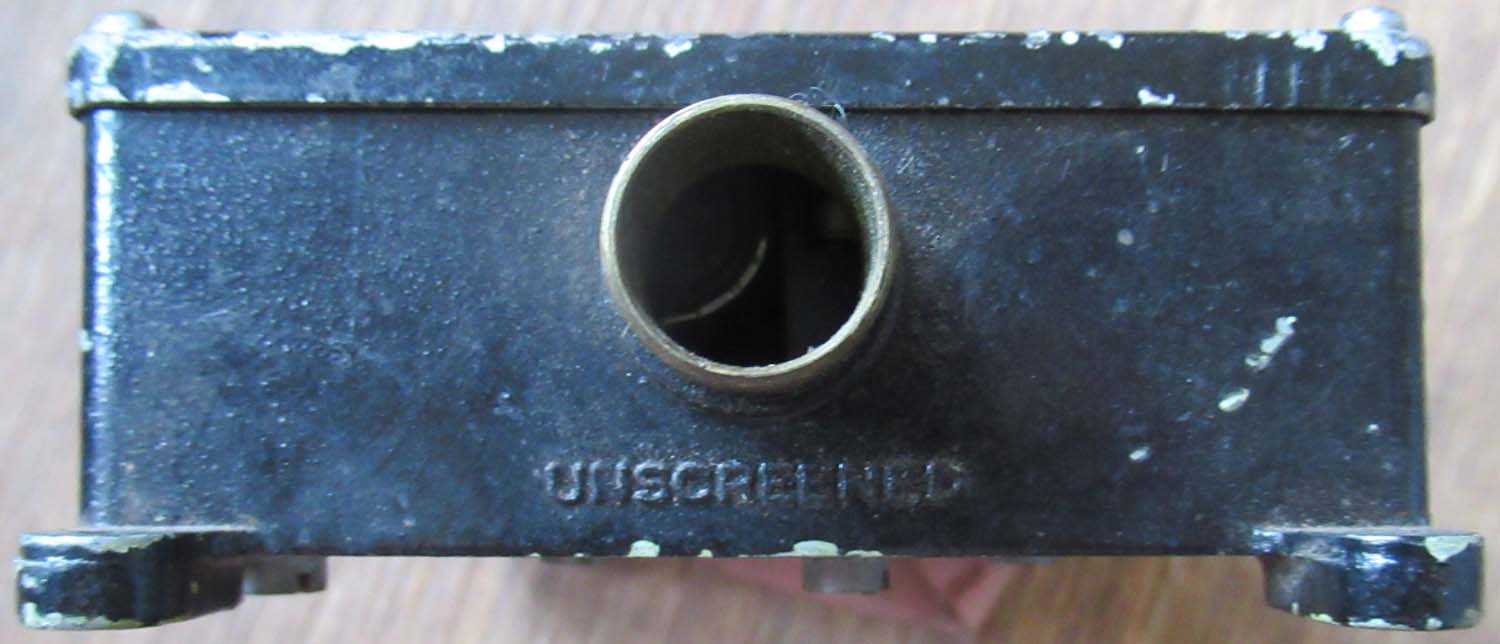
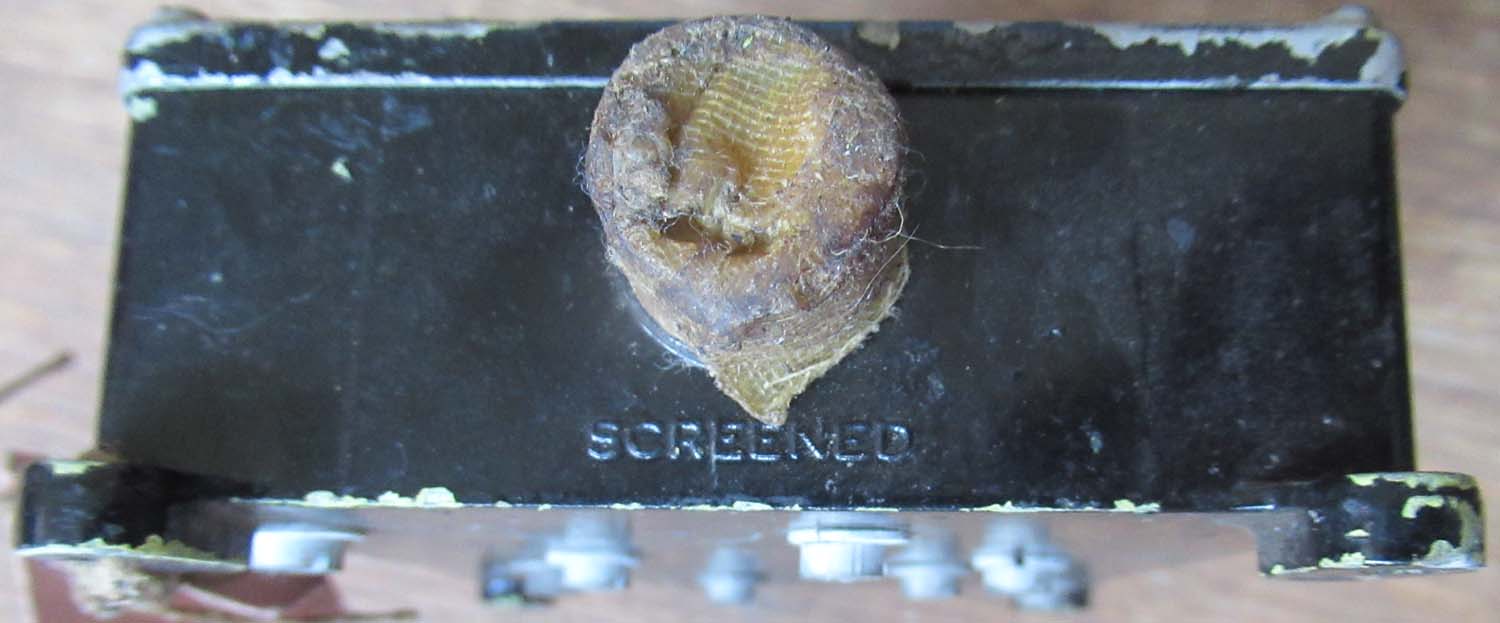 |
Spitfire
Fuel pump suppressor (No 46 pg 1 Elec Misc)
Suppressor Box Type B No. 5 5C/4317.
Used as a fuel pump suppressor for the Spitfire and other
aircraft appears to be as new inside.
Ref:5C/4317/T
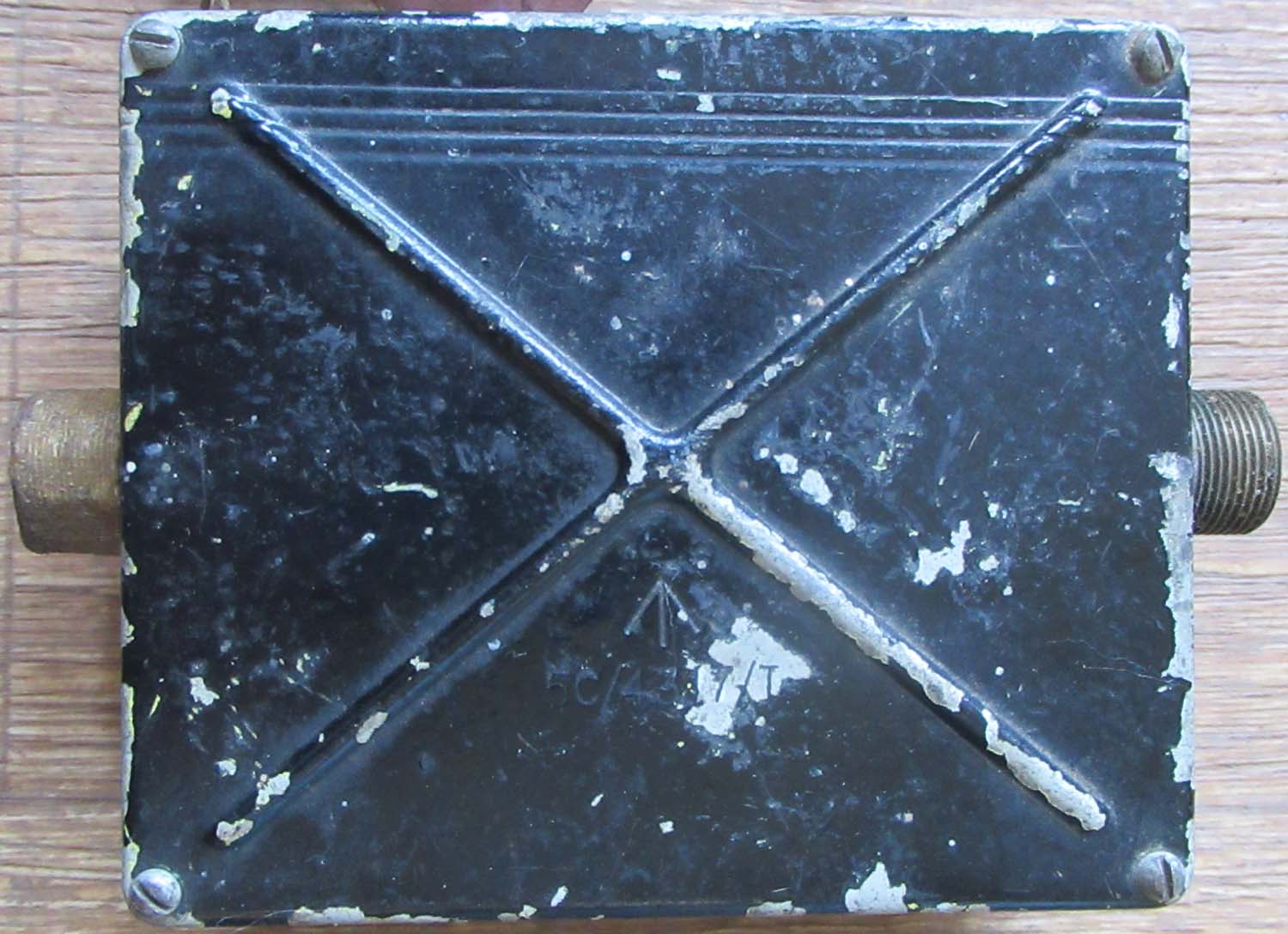
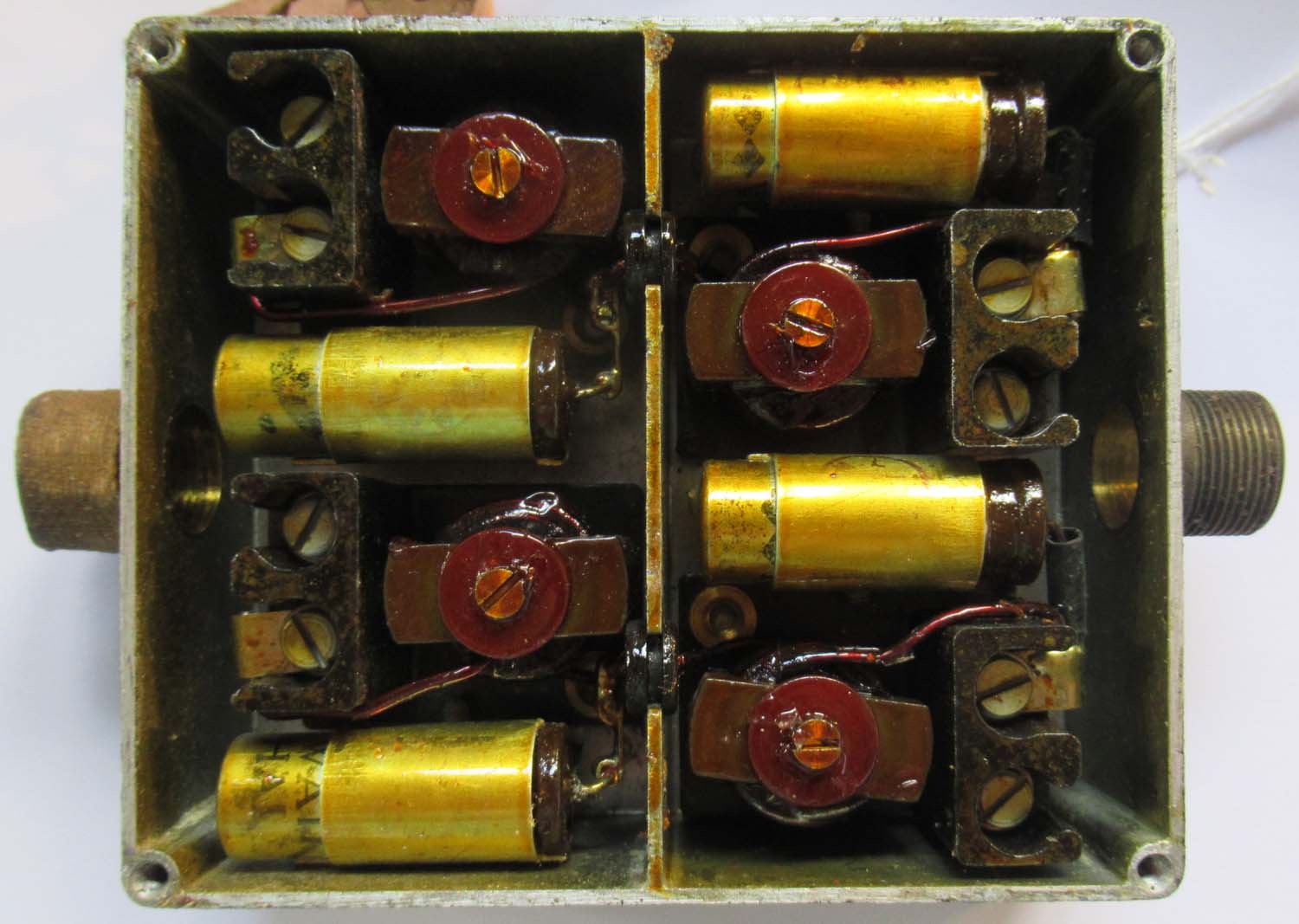
Find this in Electrical Misc link
here
|
|
Click on the
pictures to enlarge
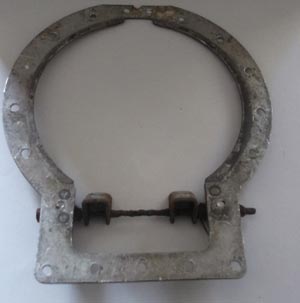

Supermarine
part number explanation under
361=
Spitfire IX Merlin 61 MH874 prototype & production
54= Service
tank
|
Original Mk IX Spitfire Service tank bracket(pg1 air)
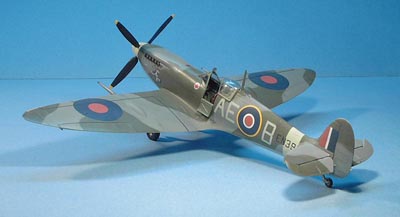
Shown above
the stunning Mk IX Spitfire
I am not sure what service tank
the piece relates to it is spring loaded it could be a fuel
tank or and oil tank or possibly access to the cooling
system. This carries the Vickers Armstrong Castle Bromwich
inspection stamp.
Follow this link to find this in the
airframe section.
|
|
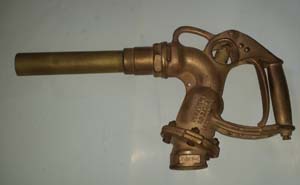
Click on
pictures to enlarge
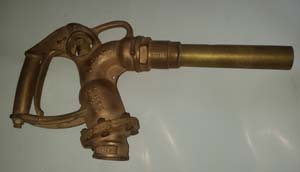
Click on
pictures to enlarge
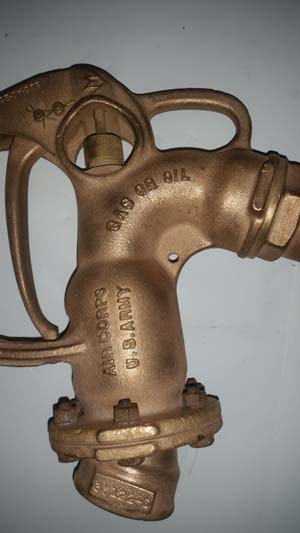
Click on
pictures to enlarge
|
WW2 USAAF Fuel
Nozzle (pg 1 Misc)
Here is a Fuel Nozzle used
by the United States American Air Corps to Refuel Aircraft
This is
made from Cast Brass
and was Manufactured by Milwaukee Valve Company
1¼
No P202
It has
22111-G and W535-AC-25596 Stamped on it
This was
used to fuel Aircraft such as the B17 Flying Fortress
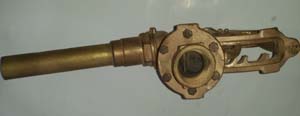
Click on
pictures to enlarge
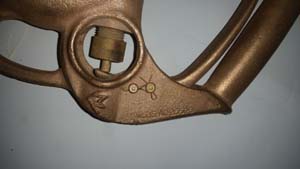
Click on
pictures to enlarge

Click
Here to See this on the Misc Page
|
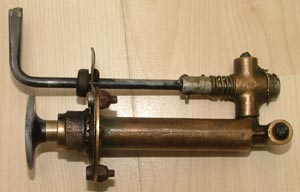 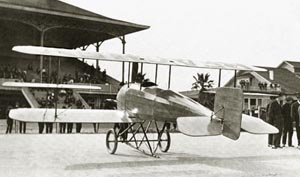
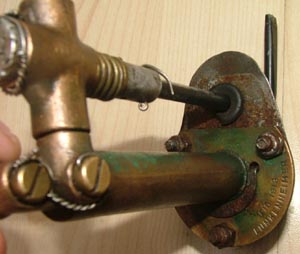
|
1913 dated Pump
(pg1 fuel)
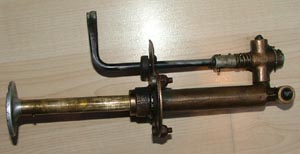
I suspect this to be a fuel
priming pump for a pre WW1 aircraft, this is the
oldest aviation part on the website. It is clearly dated
1913 and made by Lunkenheimer, a company which still makes
valves and pumps to this day. The other numbers are SP.
28477 Type EB. If anyone can tell me exactly what this part
belongs to I will supply a voucher to use on the website.
The pump functions, the right angled bar acts as a tap, the
face plate is faintly marked "ON" at the top. A
1913 By plane is shown left.
Out of stock
more wanted
|
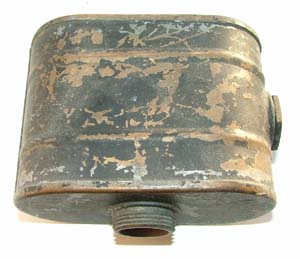 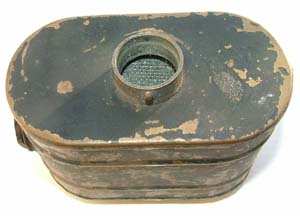 |
Merlin Spitfire Fuel filter 2 (pg1 Fuel)
Here is a brass fuel filter as
used on Merlin engines including Spitfires and Hurricanes. It appears to be in good serviceable
condition.
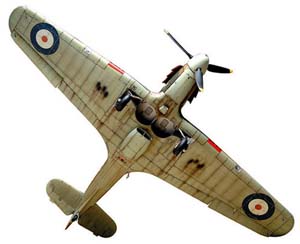
Out of
Stock more always wanted
please contact me |
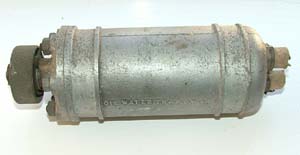
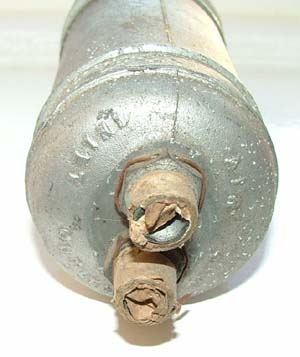
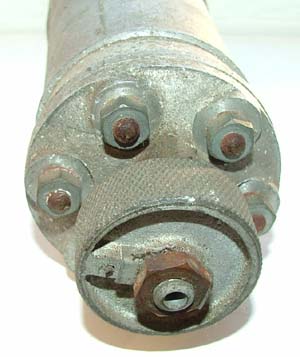 |
Merlin Fuel
Trap (pg1 fuel)
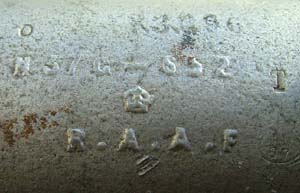
This is a Oil water trap
for a Merlin. It is still sealed and although it has some
light external corrosion it should be good to go with a
service. Marked with an Air ministry crown and RAAF.
Oil Water
Trap.O.W.T45
It has
R3096 stamped in black ink
which may be an aircraft serial number although I have
checked the Spitfire serials and cannot find a match.
N37 G 852
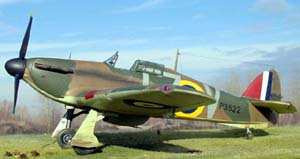
Out of stock
more wanted
contact me
|
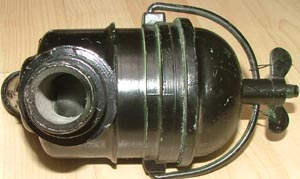
Click on the
picture's to enlarge.
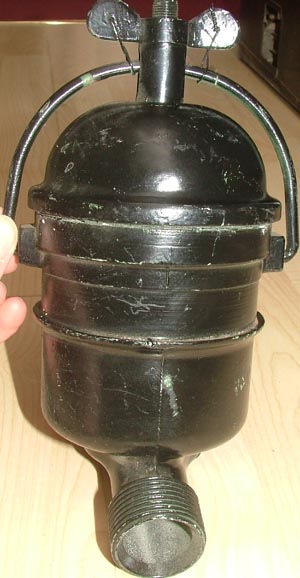
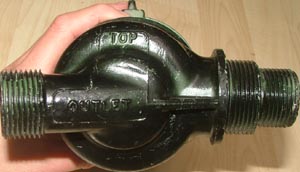 |
Spitfire fuel filter (pg1 fuel)
Here we
have a fuel filter for a Spitfire. It was mounted on the
engine side of the firewall. The diagram below shows the
filter in its position in the Spitfire fuel system.
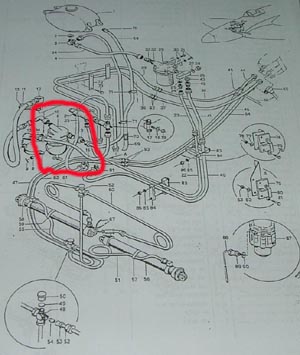
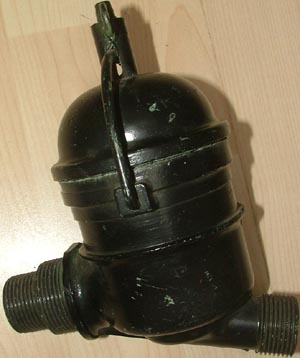
Out of
Stock more always wanted
please contact me |
|
Click on the
pictures to enlarge them
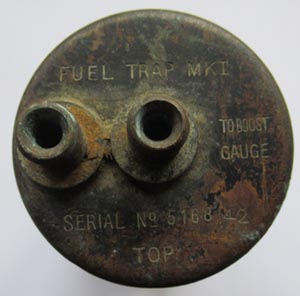
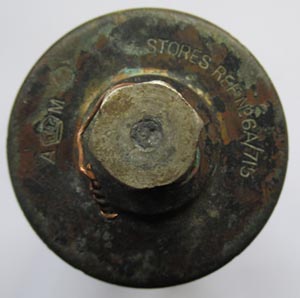 |
MK I Fuel Trap (pg1 Fuel
)
This is a MK I fuel trap to
collect excess fuel from the pipe connected to the boost
gauge. Used in Mk1 Spitfire and Hurricane and I expect other
RAF aircraft.
Very early 1939 Battle of France date in good original
condition complete with mounting bracket.
6A/715
Click on the
pictures to enlarge them
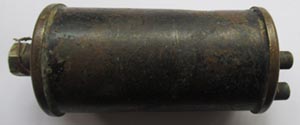
Out of
Stock more always wanted
please contact me
|
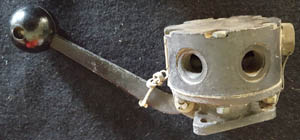
Click on the
pictures to enlarge
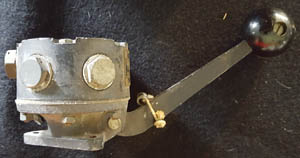
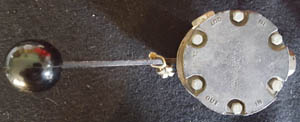 |
Spitfire Wobble pump (pg1 fuel)
Mk XIV Spitfire

A wobble
pump for priming the Griffon Engine of late model Spitfire's
Mk XIV onwards. This replaced the K Gass pump fitted to
earlier models. Their is pressure and suction when the pump
is operated.
Out of
stock more wanted
contact me
|
|
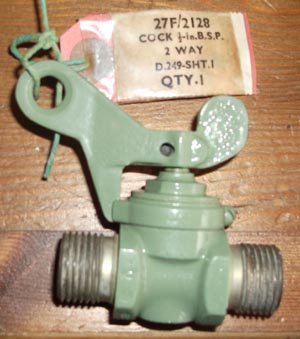
|
Vickers Fuel Cock
2 (pg1 fuel)
Here we have fuel cock
with Ref: 27F/2128
This is in a serviceable
condition
Out of stock more always
wanted
please contact me
|
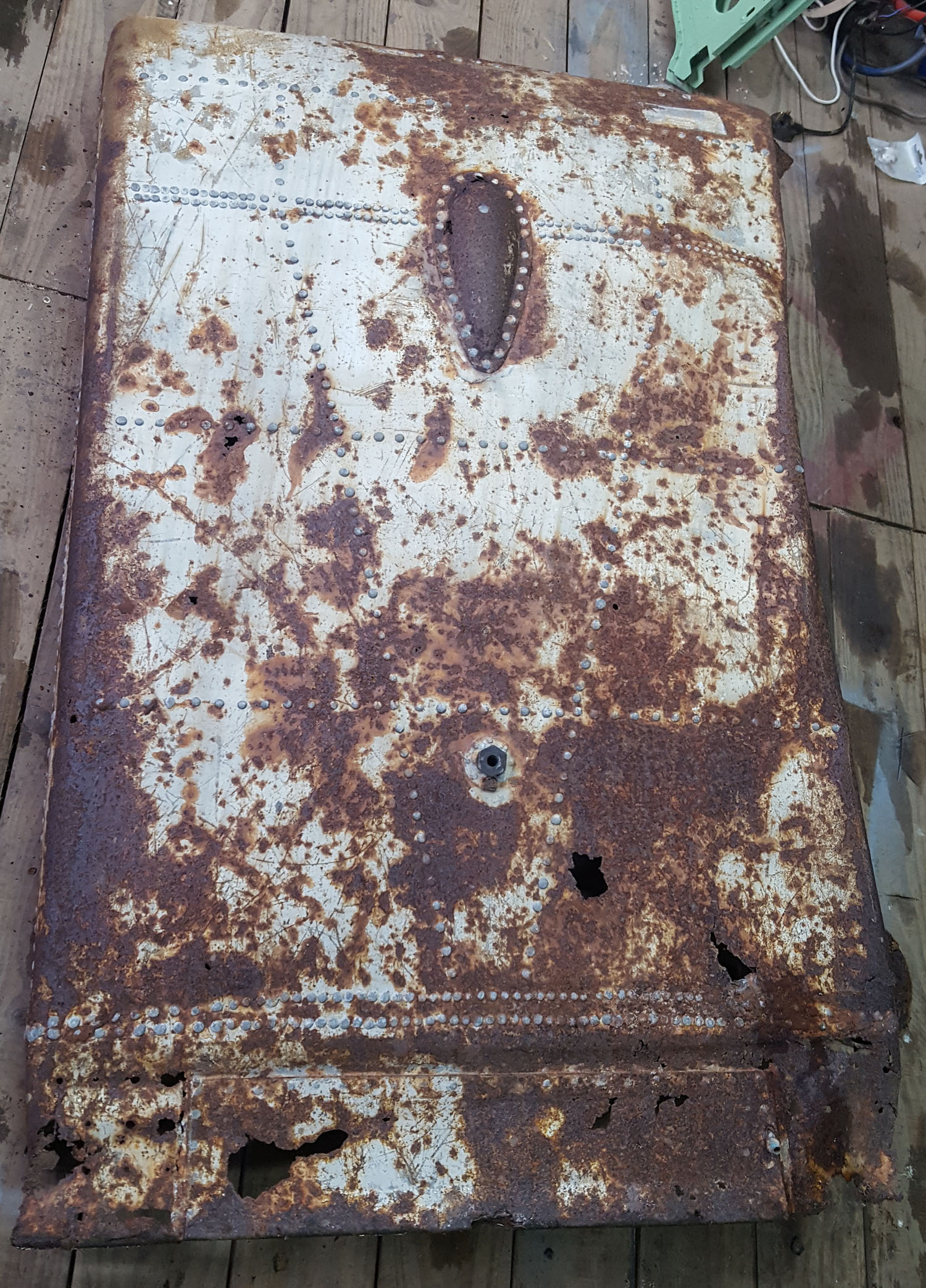
Click on the
Pictures to enlarge them
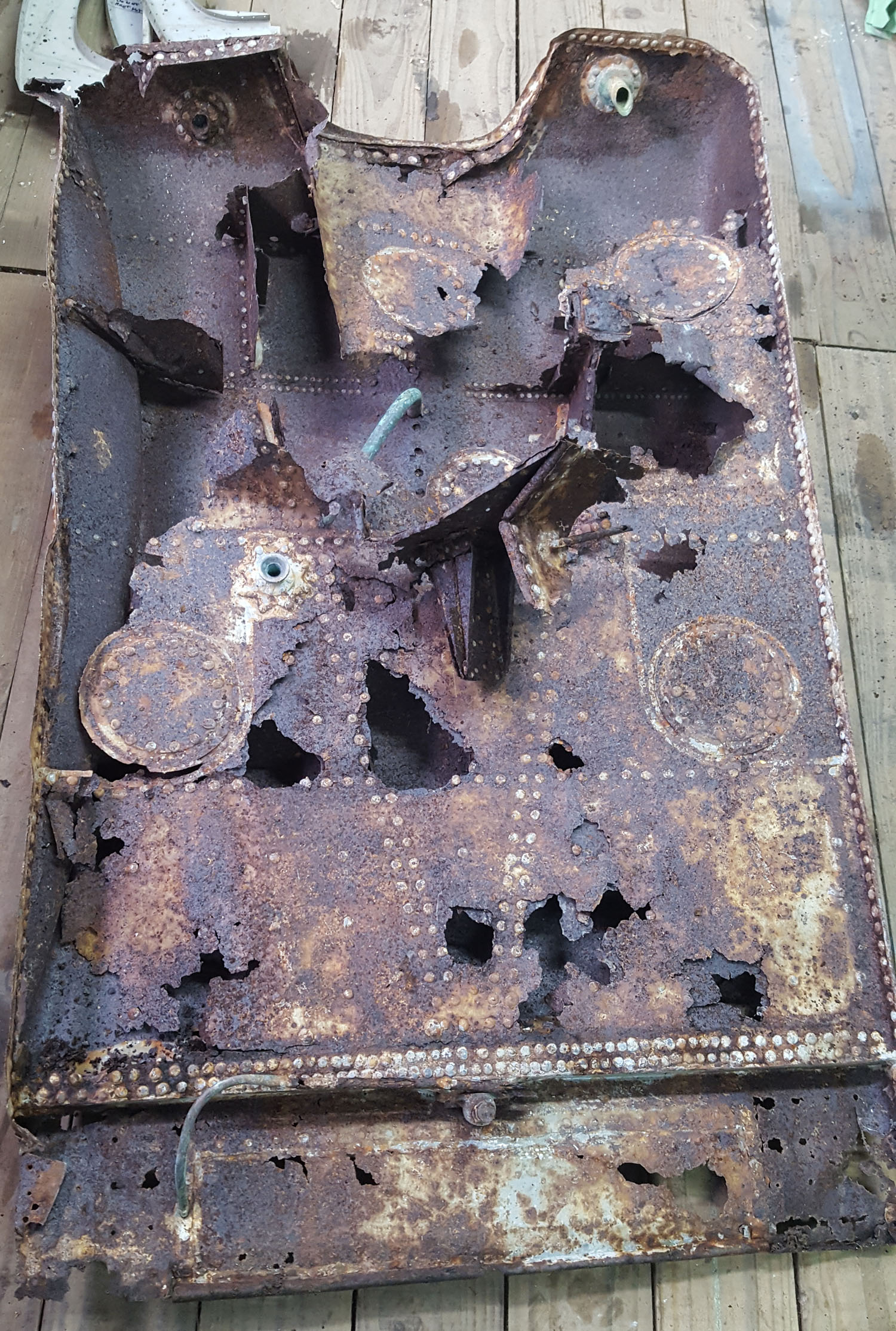
|
Spitfire slipper/drop tank (pg1 fuel)
This is a huge piece its a
drop or slipper tank from a Spitfire. Fitted as extra fuel
tanks to increase the Spitfires range they were jettisoned
once empty or if the aircraft went into combat. This was
recovered in Holland. Its frightening to think of the effect
one of these monsters would have dropping out of the sky
from 10,000 Ft. Its clear its badly corroded having spent
years outside however it is an amazing piece.
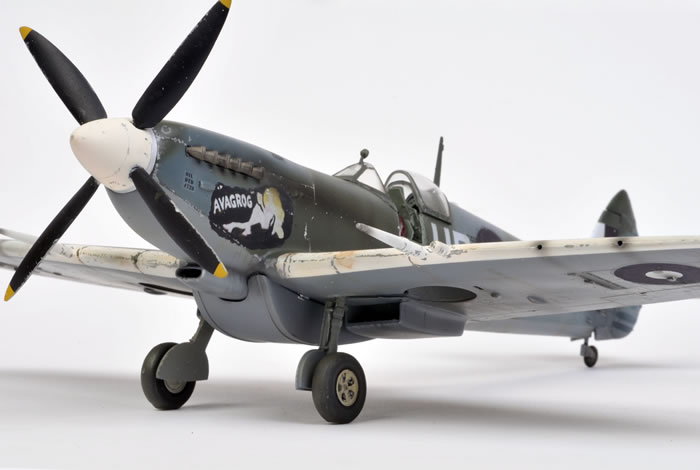
See above in
situ under the belly of the Spitfire
Out of stock more always wanted
please contact me
|
|
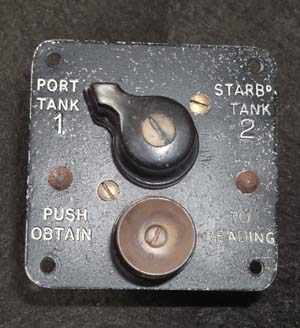
Click on the
Pictures to enlarge them
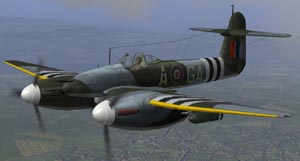
Seen above
the Westland Whirlwind
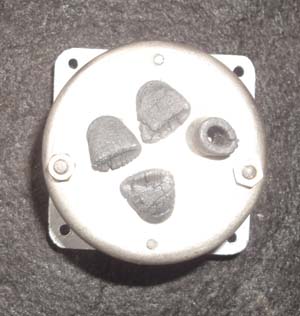

|
Westland Whirlwind prototype and MK I fuel selector switch (pg1 fuel)
This is a unique item, it
is a fuel selector switch and gauging push button for a
Westland Whirlwind..
It is not
Airministry marked and has a stamp which identifies it as
made by Smith and Sons. Being a specifically made part for a
specific aircraft I believe this
was made only for the Whirlwind and was only used in the
prototype and the MK I. It was not used in the Whirlwind
after the MK I.
This probably makes this part
unique with no other surviving examples. In total only 116
Whirlwinds were produced including the two prototypes. It is in excellent condition
and functions as it should the switch moves and the push
button depresses.
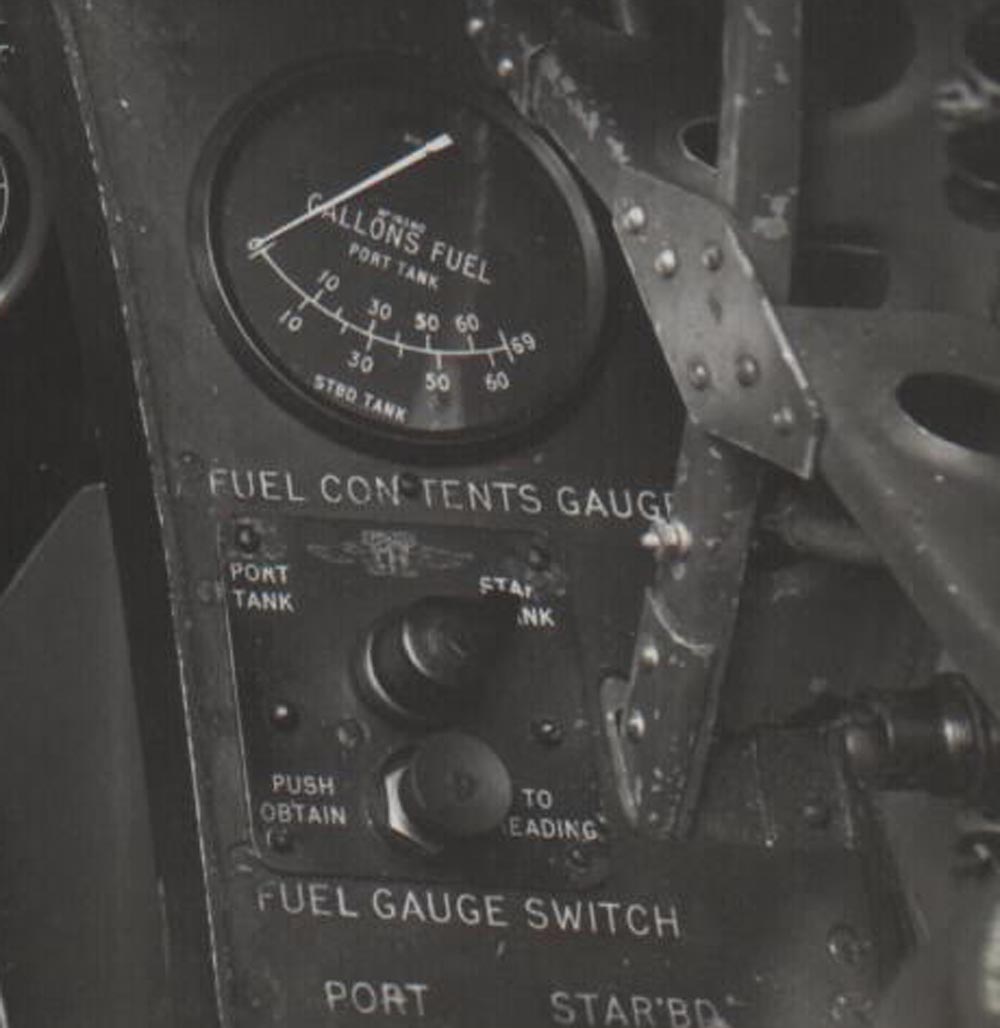
Seen in
situ above and below in the Westland Whirlwind prototype
cockpit. Click on the
Pictures to enlarge them.

Two prototype Whirlwinds were
ordered by the Air Ministry in February 1937, and the first
of these flew on 11 October 1938. Despite delays in
development and production of the Peregrine engine, two
contracts were placed in 1939, each for 200 fighters as
Whirlwind Is, and the first series aircraft flew in June
1940. In the event, production ended with 114 aircraft
built, these serving with only two RAF squadrons (Nos 263
and 137). Armament problems and changing operational needs
curtailed the usefulness of the Whirlwind, which was
enhanced in late 1942 by the addition of a pair of wing
racks to carry two 113kg or 227kg bombs. Operational use of
the Westland fighter came to an end in November 1943.
Out of
stock more wanted
contact me
|

Click on the
Pictures to enlarge them
 |
Original Spitfire fuel cap * (pg1 fuel)
Here is a fuel cap from a
Spitfire with stores tag attached showing 26 A J the
Spitfire A/M code.
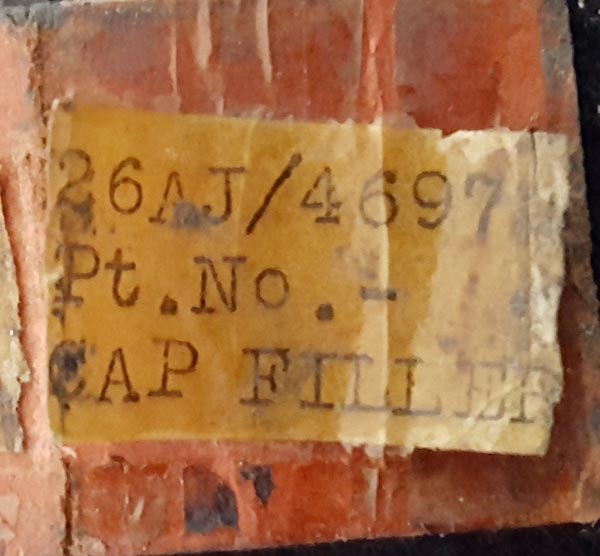
Click on the
Pictures to enlarge them
Out of
stock more wanted
contact me |
|
Click on the
Pictures to enlarge them
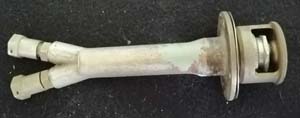
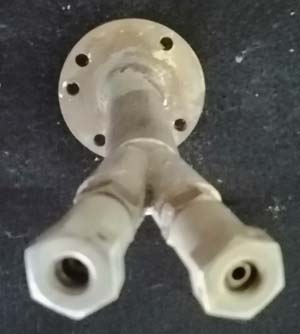 |
K Gass pump 7 (pg1 fuel)
K Gass pump used in
Spitfires and other RAF wartime aircraft in good condition
operates as it should.

Click on the
Pictures to enlarge them
Out of
stock more wanted
contact me
|

Please note this is our
last remaining valve and unfortunately it is missing its
lever as shown above on the complete model. You will receive
the one shown below and to the right
Click on the
Pictures to enlarge them
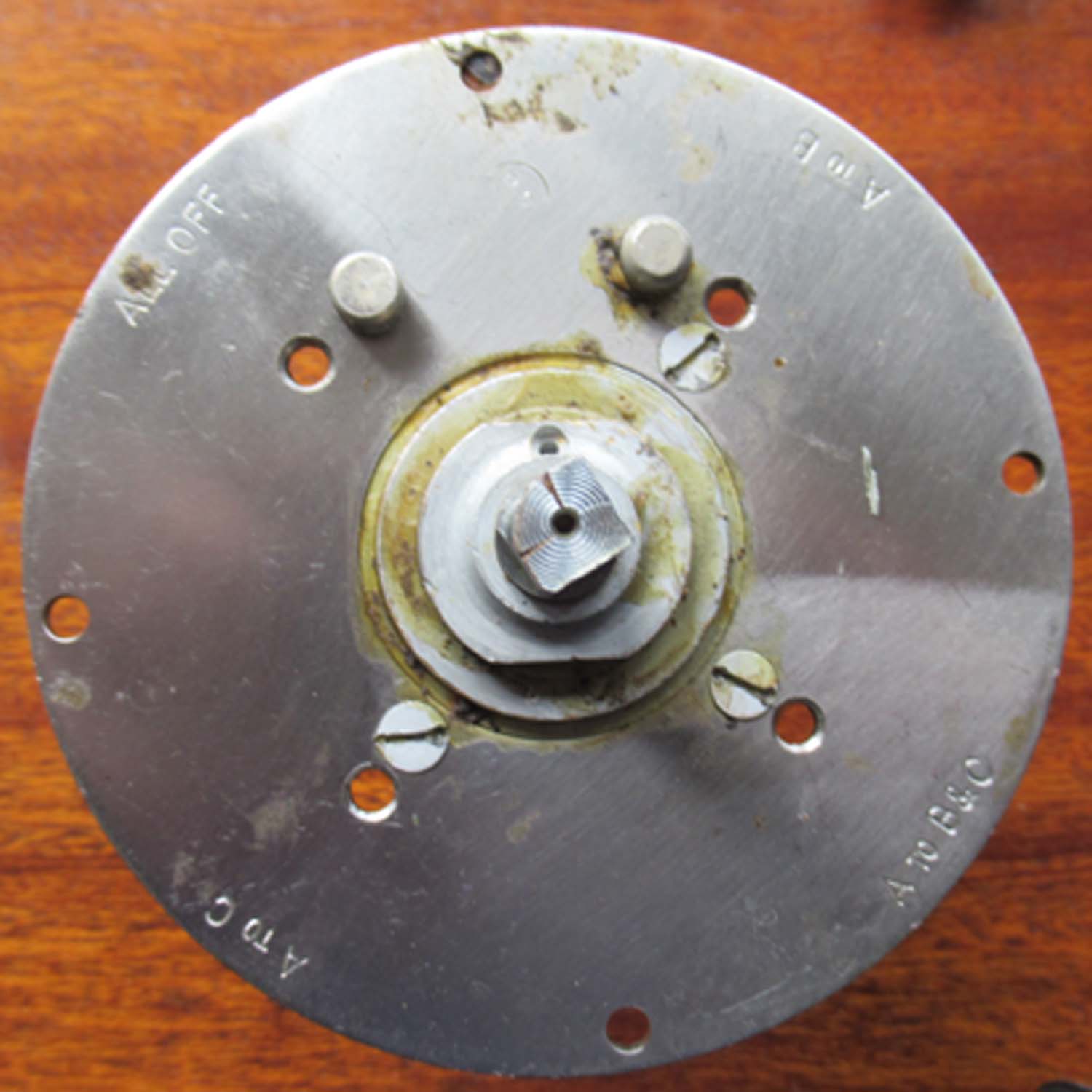
|
Vickers fuel cock incomplete (pg1 fuel)
It has four settings. All off A to B. A to
C. A to B&C
The Spitfire used this type of valve
for switching tanks and almost certainly used in other RAF
WWII aircraft. The piece is in excellent condition and turns freely
,the intakes are sealed with their
originals caps.
Please note this is our
last remaining valve and unfortunately it is missing its
lever as shown above left on the complete model. You will
receive the one shown below and the the bottom left.
Click on the
Pictures to enlarge them
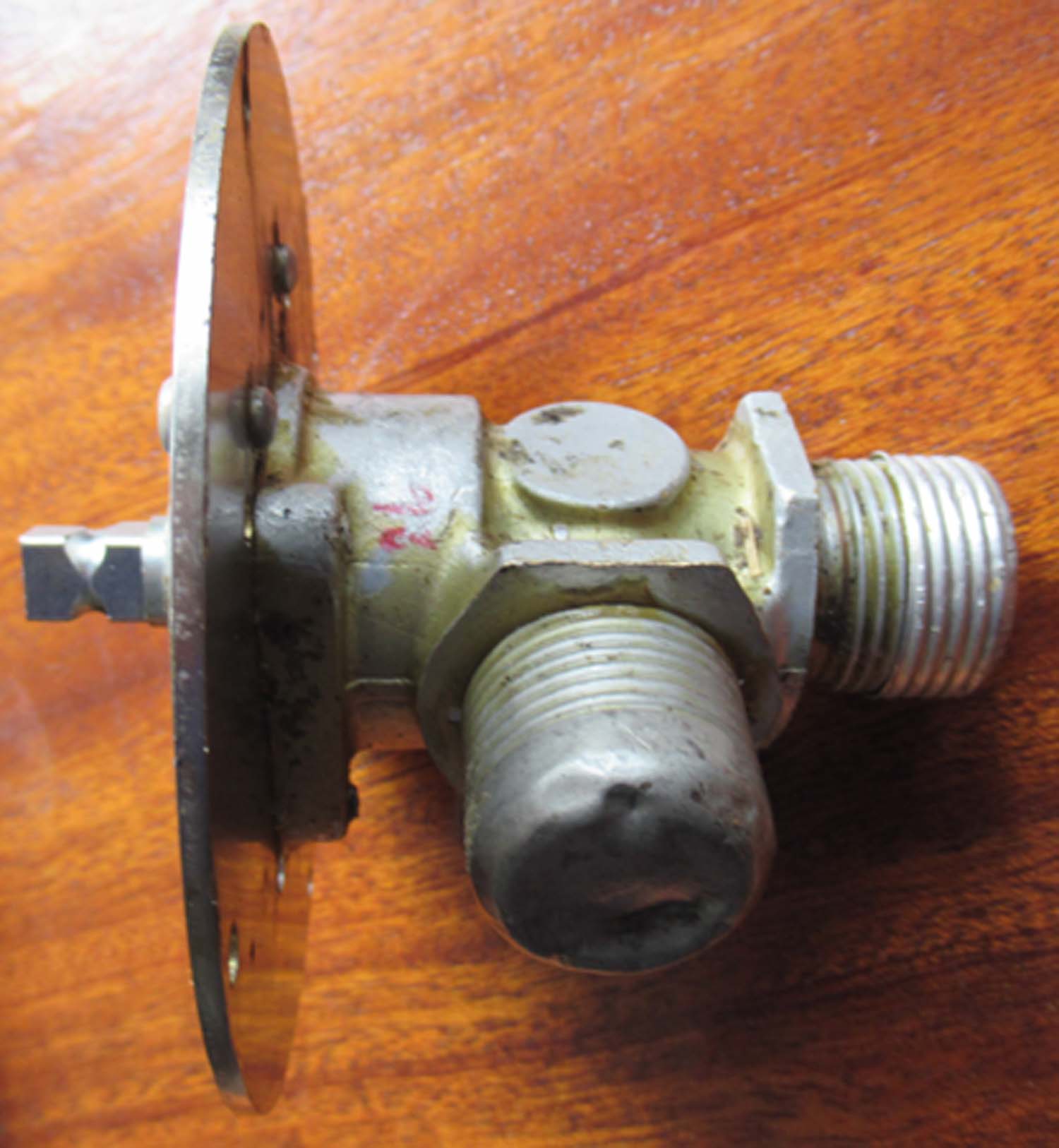 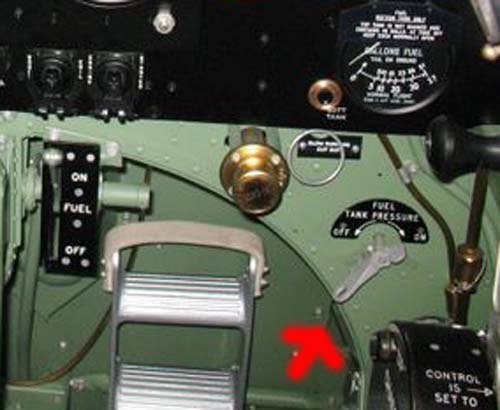 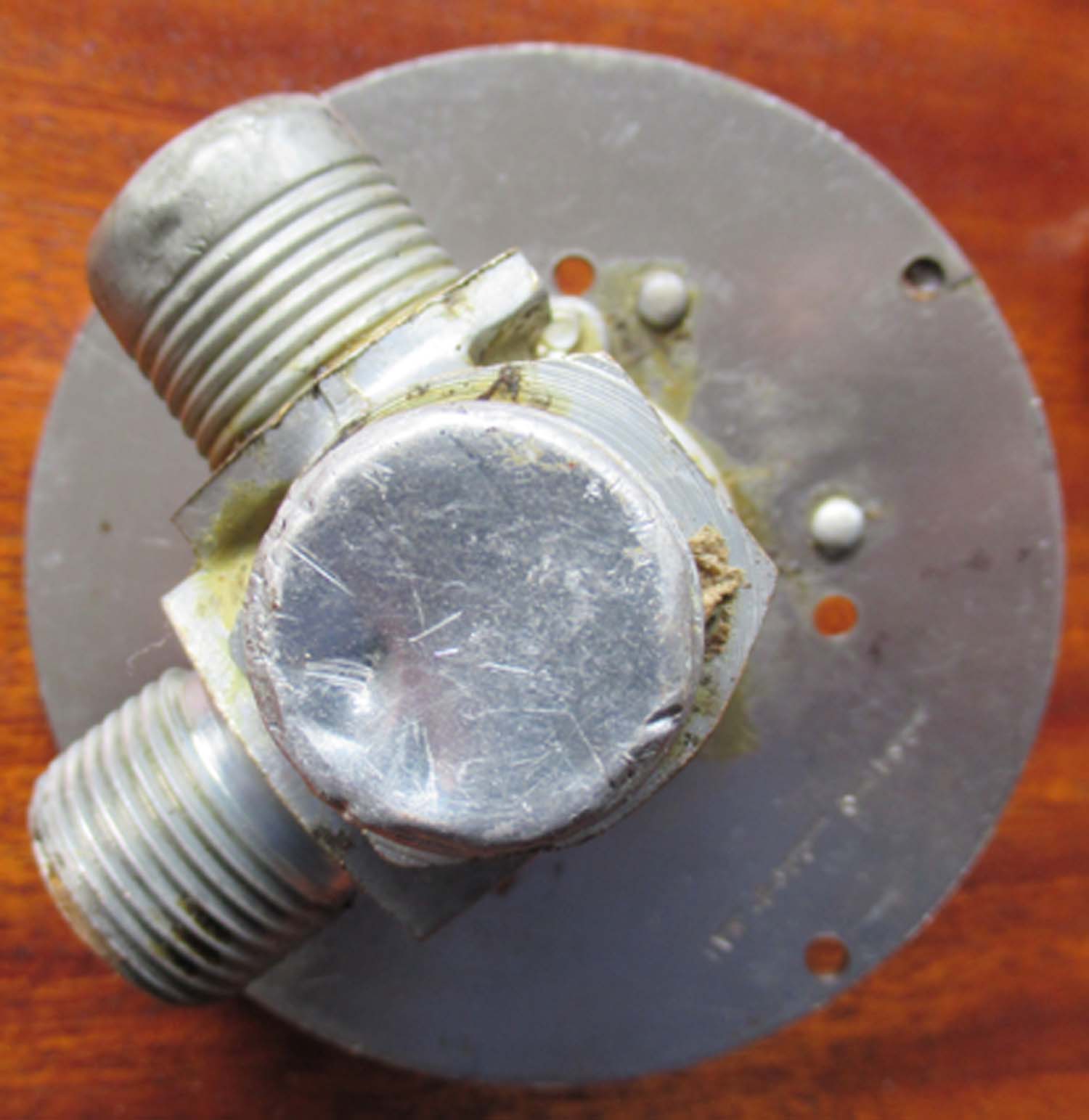
Seen above
fitted to a Spitfire
Out of
Stock more always wanted
please contact me |
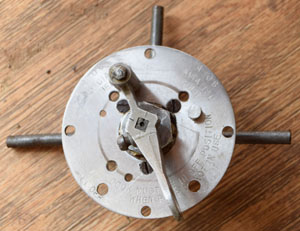
Click on the
Pictures to enlarge them
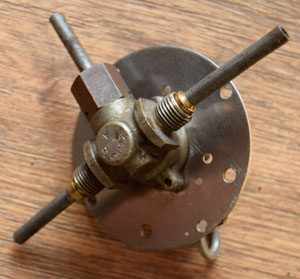
|
Fuel cock (pg1 fuel)
This is quite an unusual fuel cock and
i have not seen one marked like this before
One position is marked ATOC
Special fuel position another is marked ATO B Aviation and
all off with the instruction that Cock must be in off
position when pump is not in use. I have no idea what
special fuel means. The part works perfectly as it should.
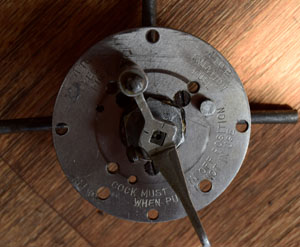
Click on the
Pictures to enlarge them
Out of
stock, more always wanted
please contact me
|
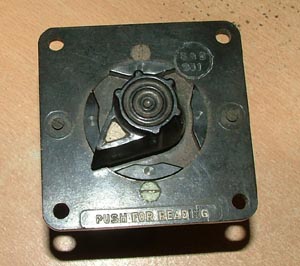
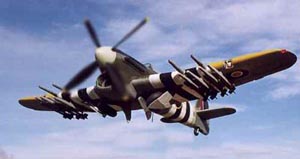
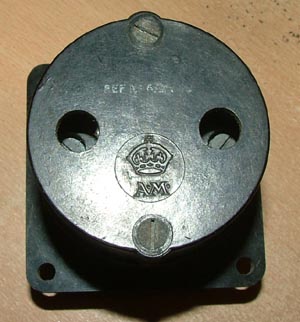 |
Hawker Typhoon Fuel
Tank Selector
A super
rare fuel switch for the Hawker Typhoon its in nice original
condition although it appears to be functional . This
differs from the Hurricane unit in that it has four
available tank selections. Nicely marked with Air Ministry
crown.
Seen in
situ below top right, left of the fuel gauge

Out of stock
more wanted
contact me
|
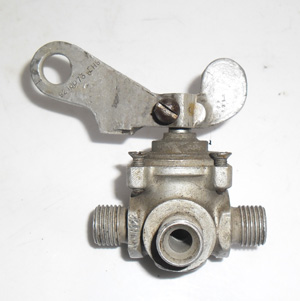
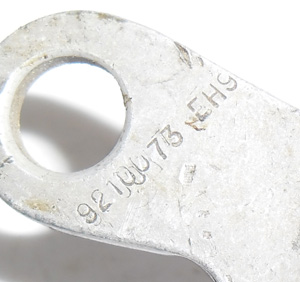 |
Three way Fuel cock (pg1 fuel)
Here we have a New old stock
Fuel Cock
Click on the pictures to
enlarge them.
Out of stock
more wanted
contact me
|
|
|
|
